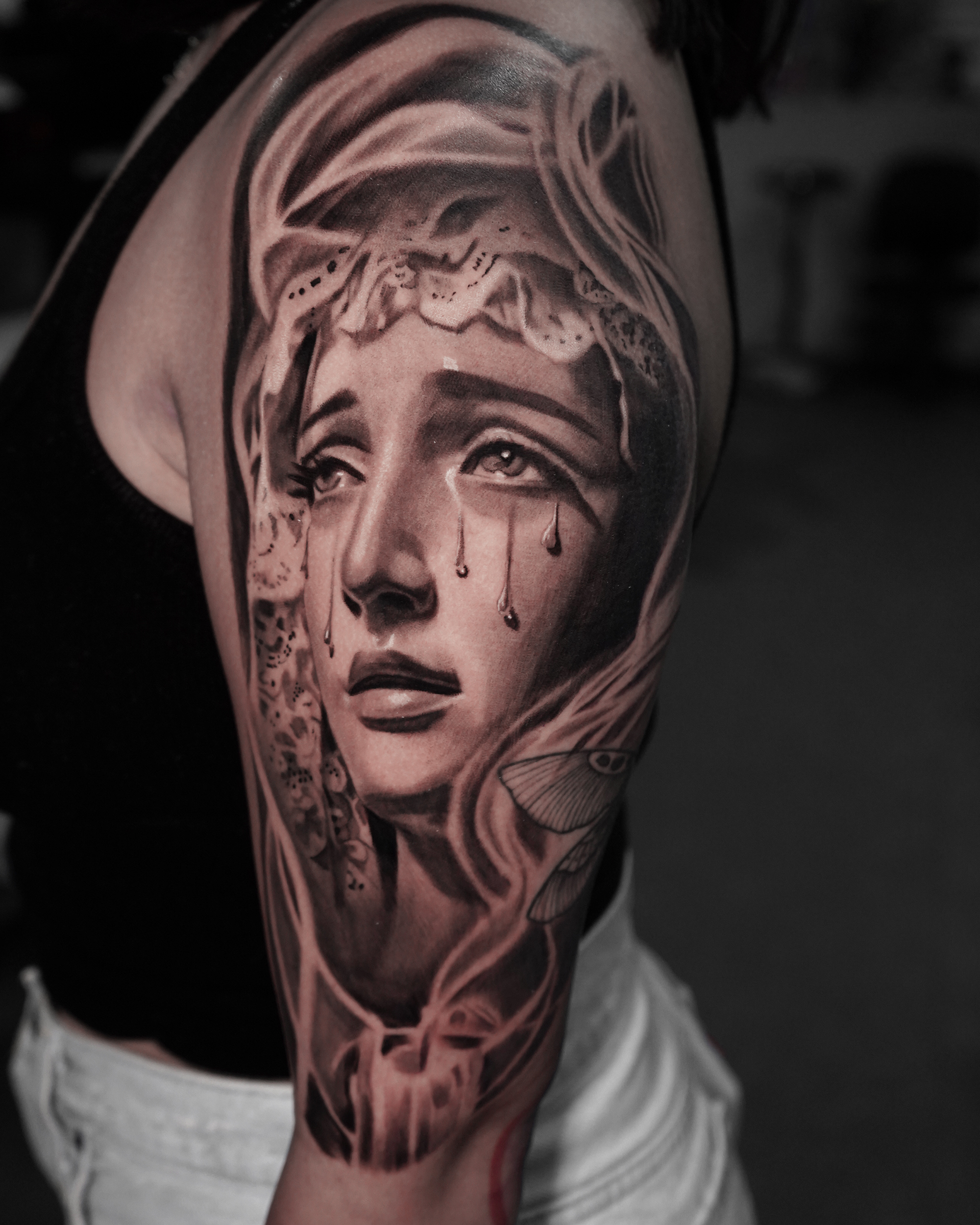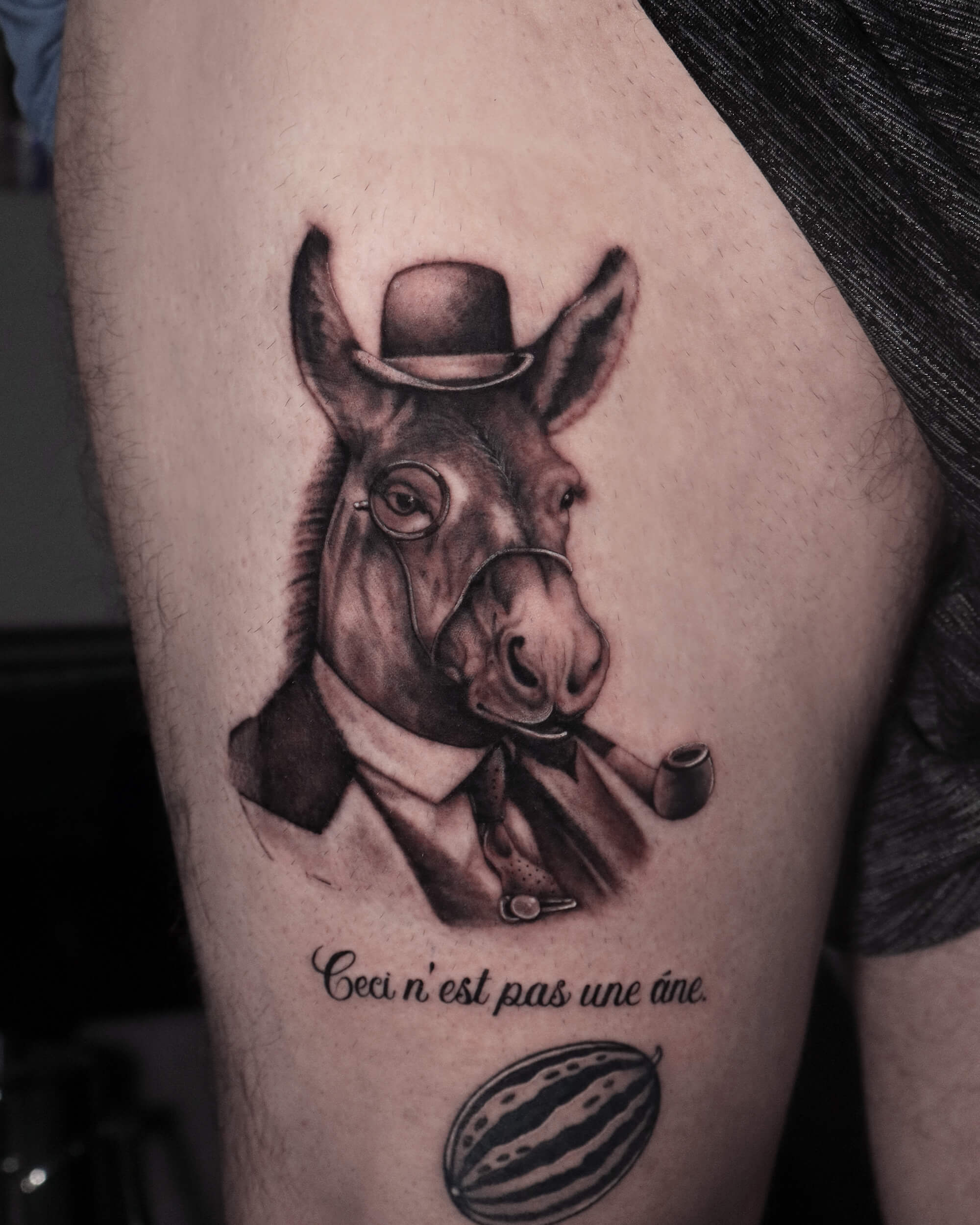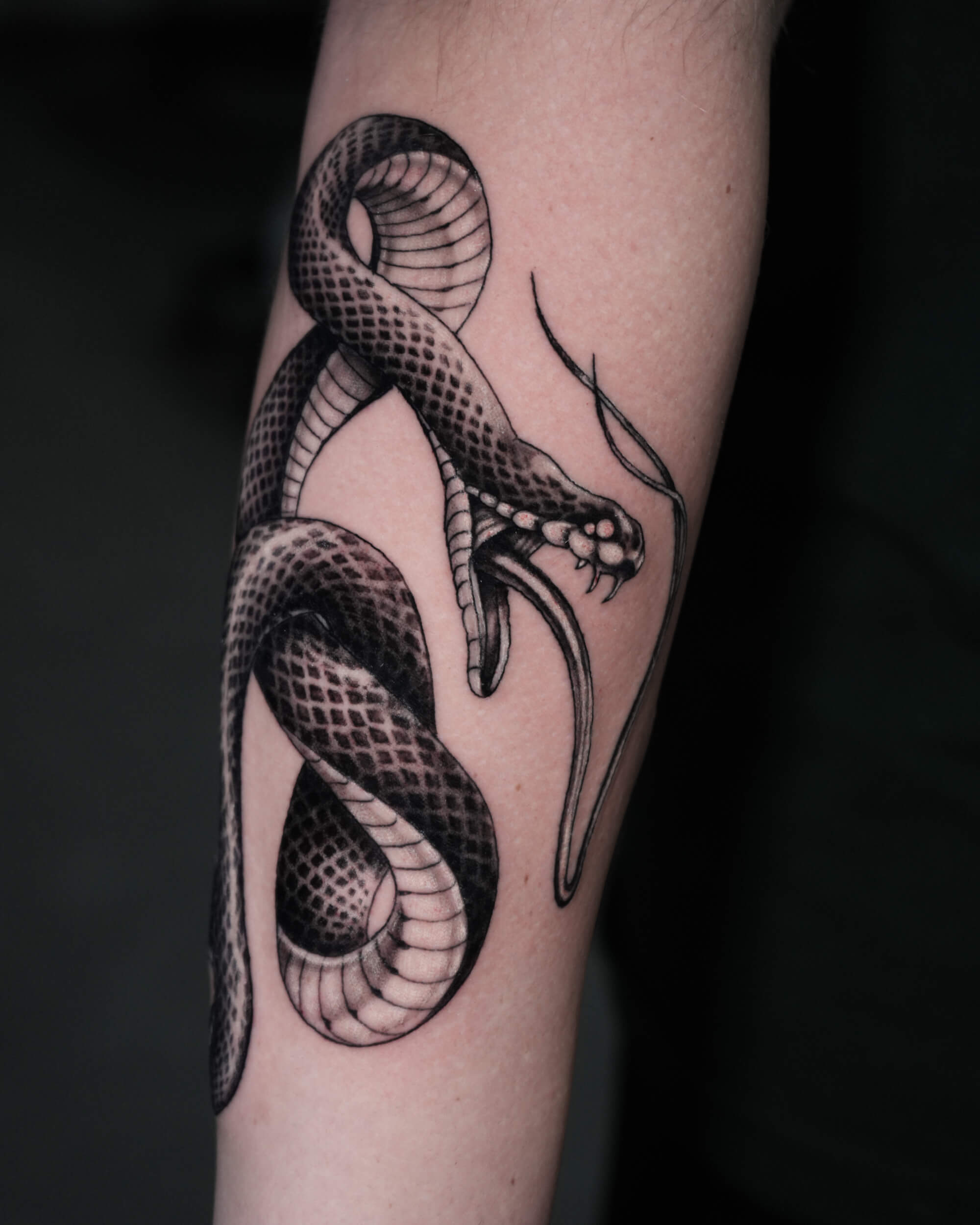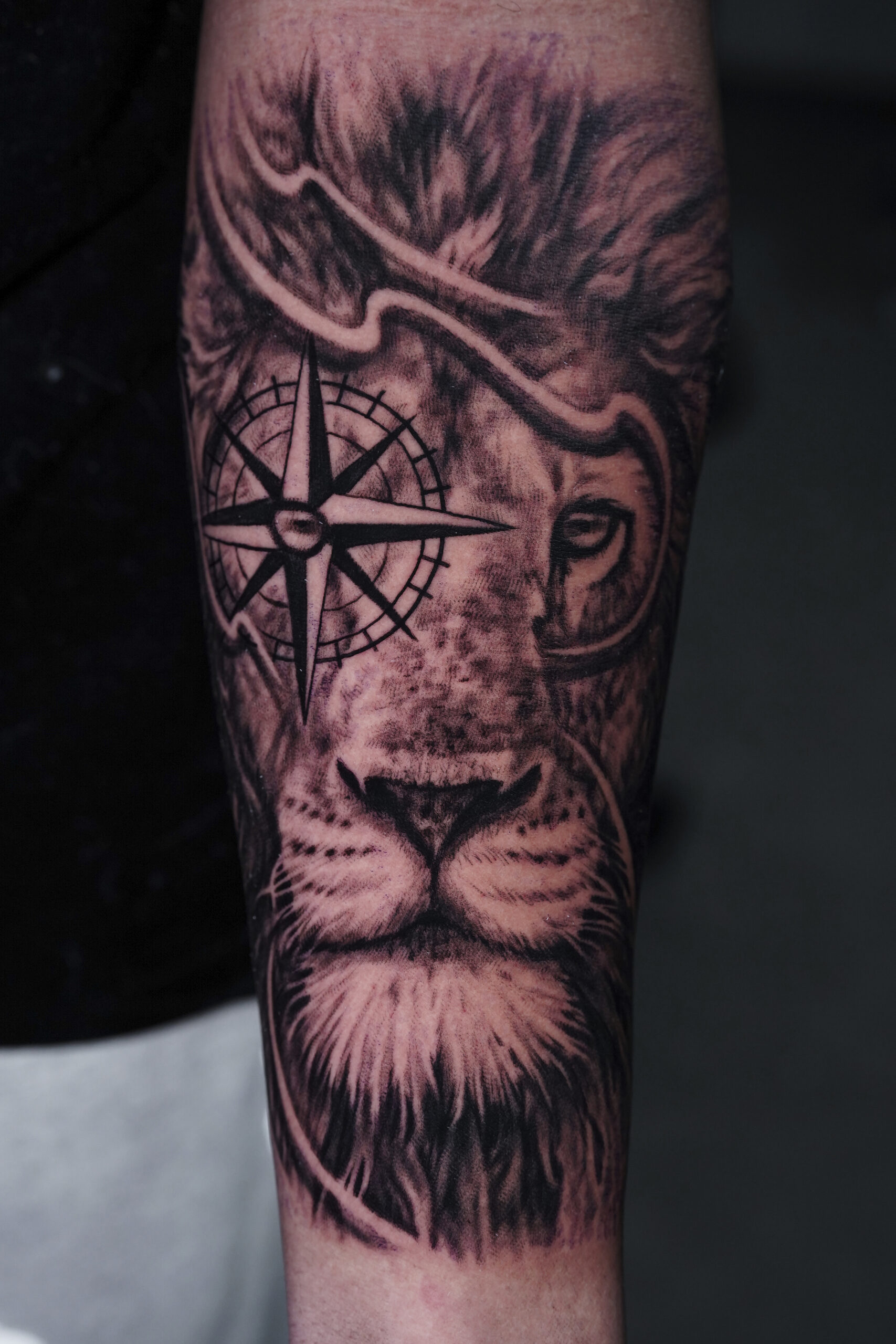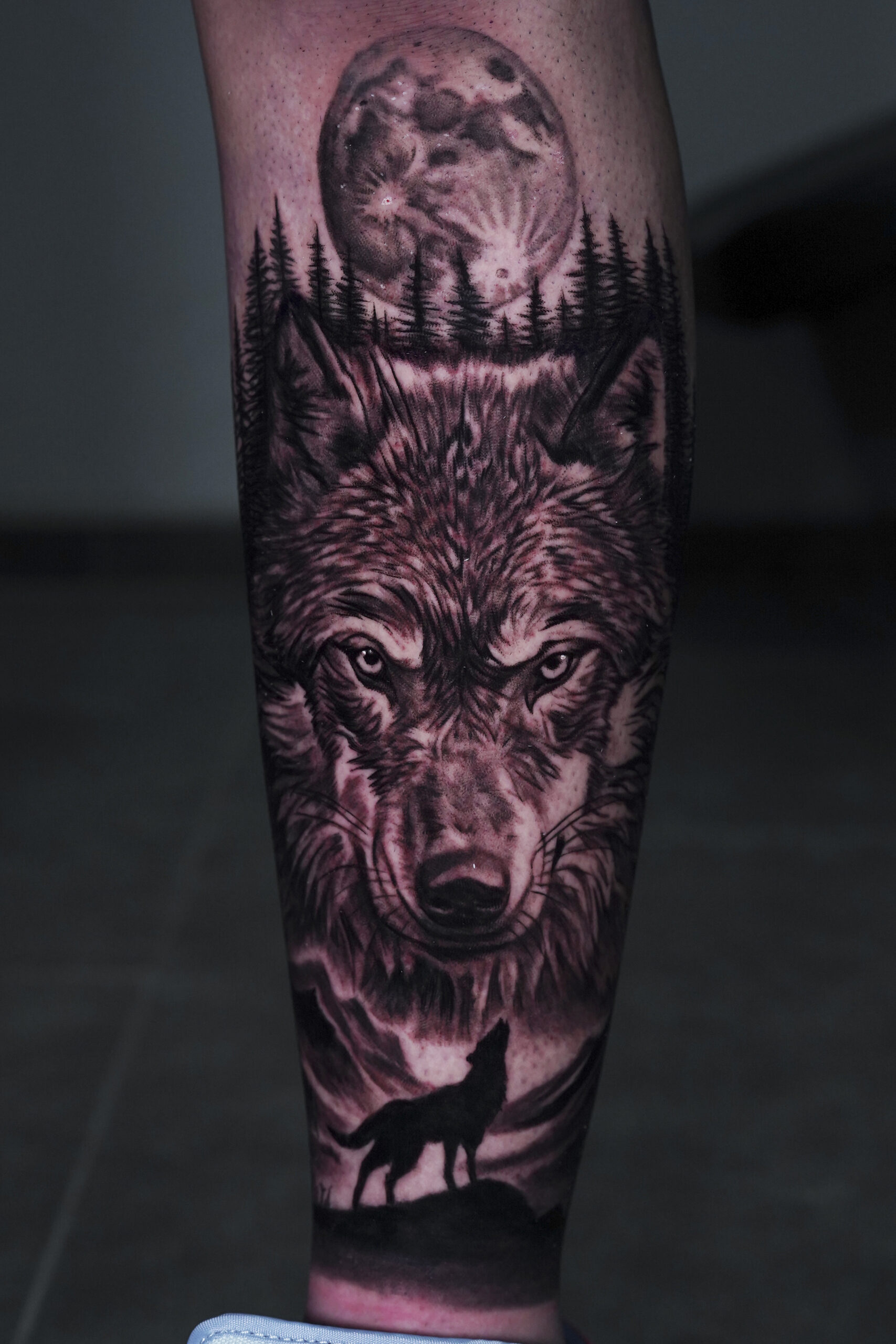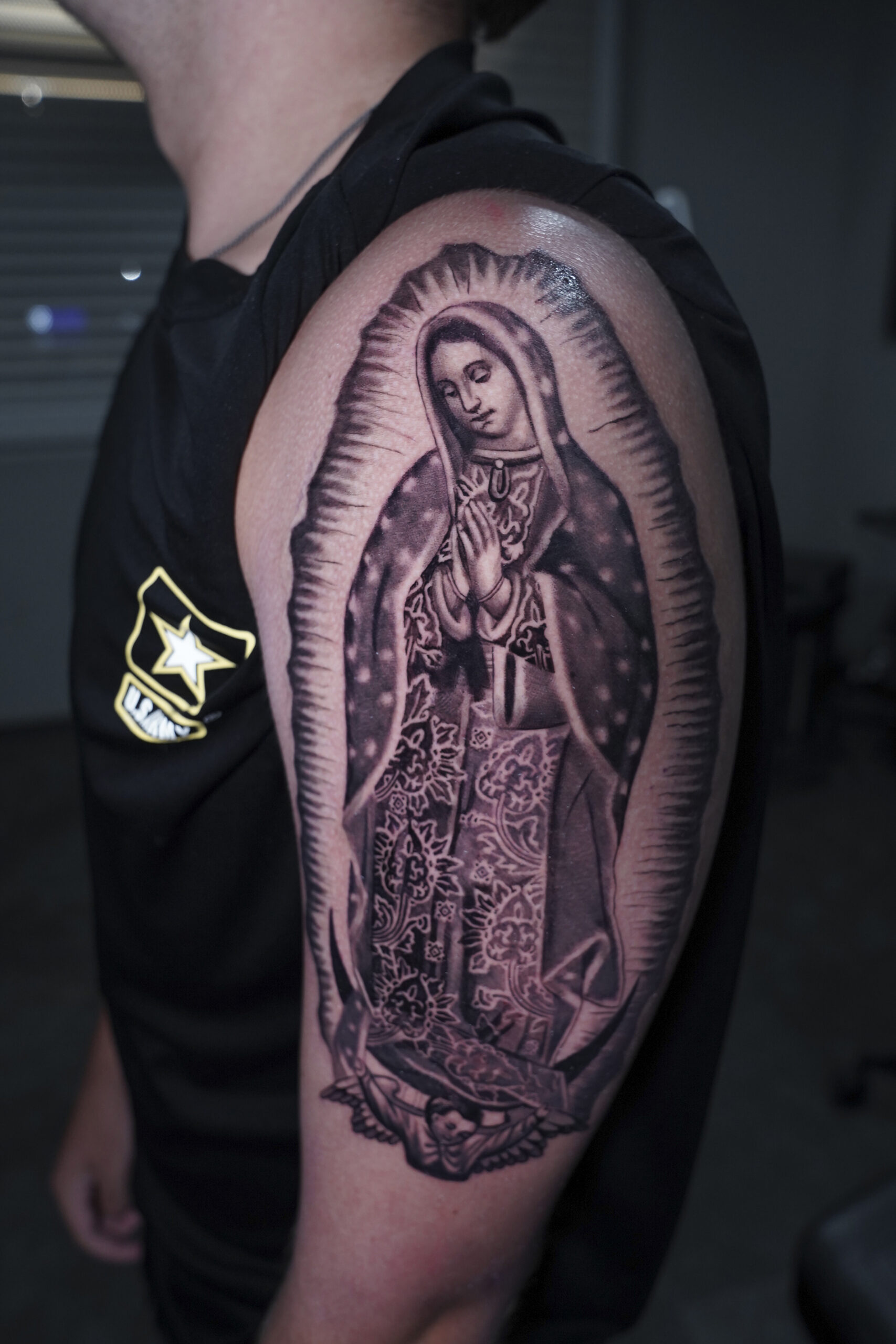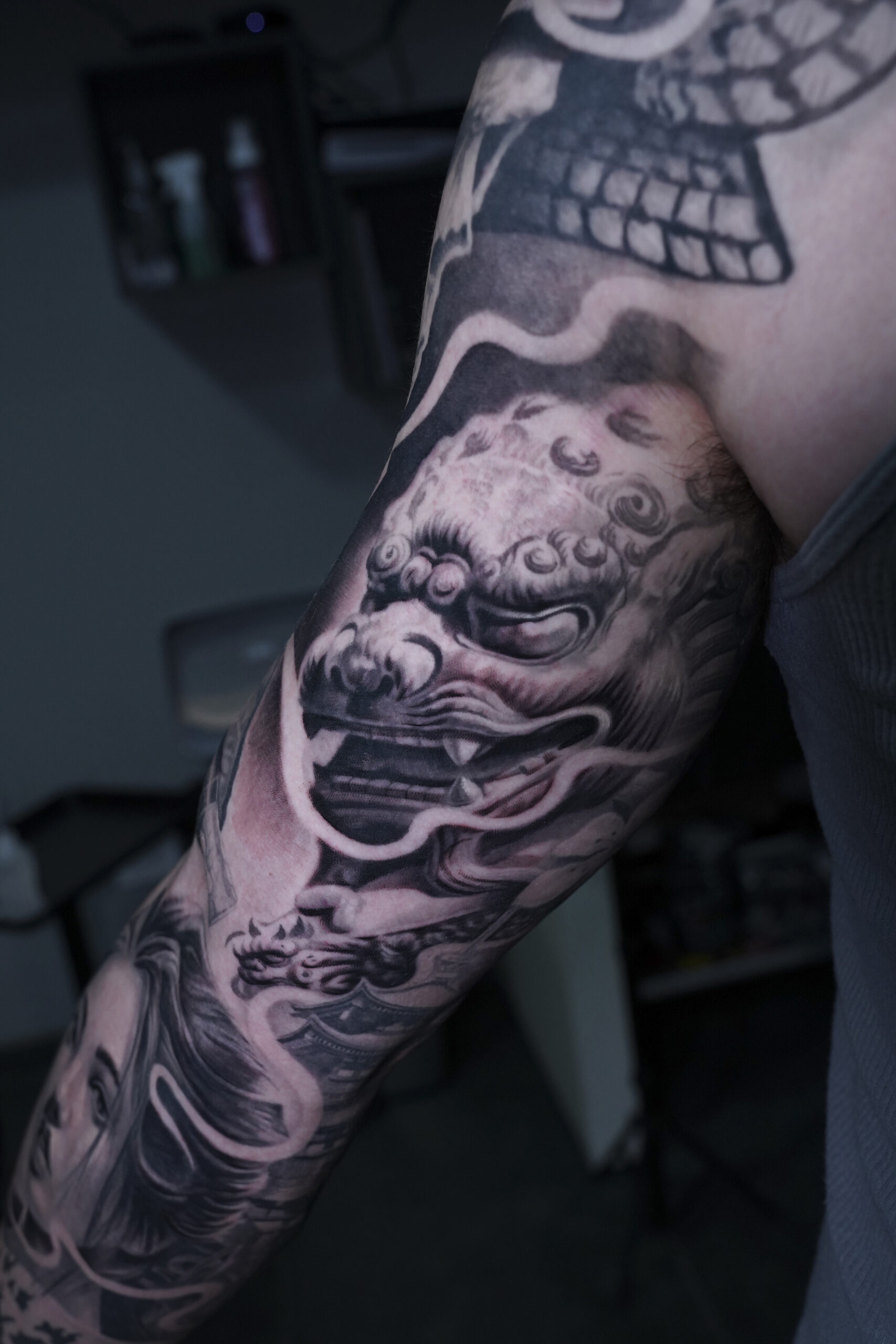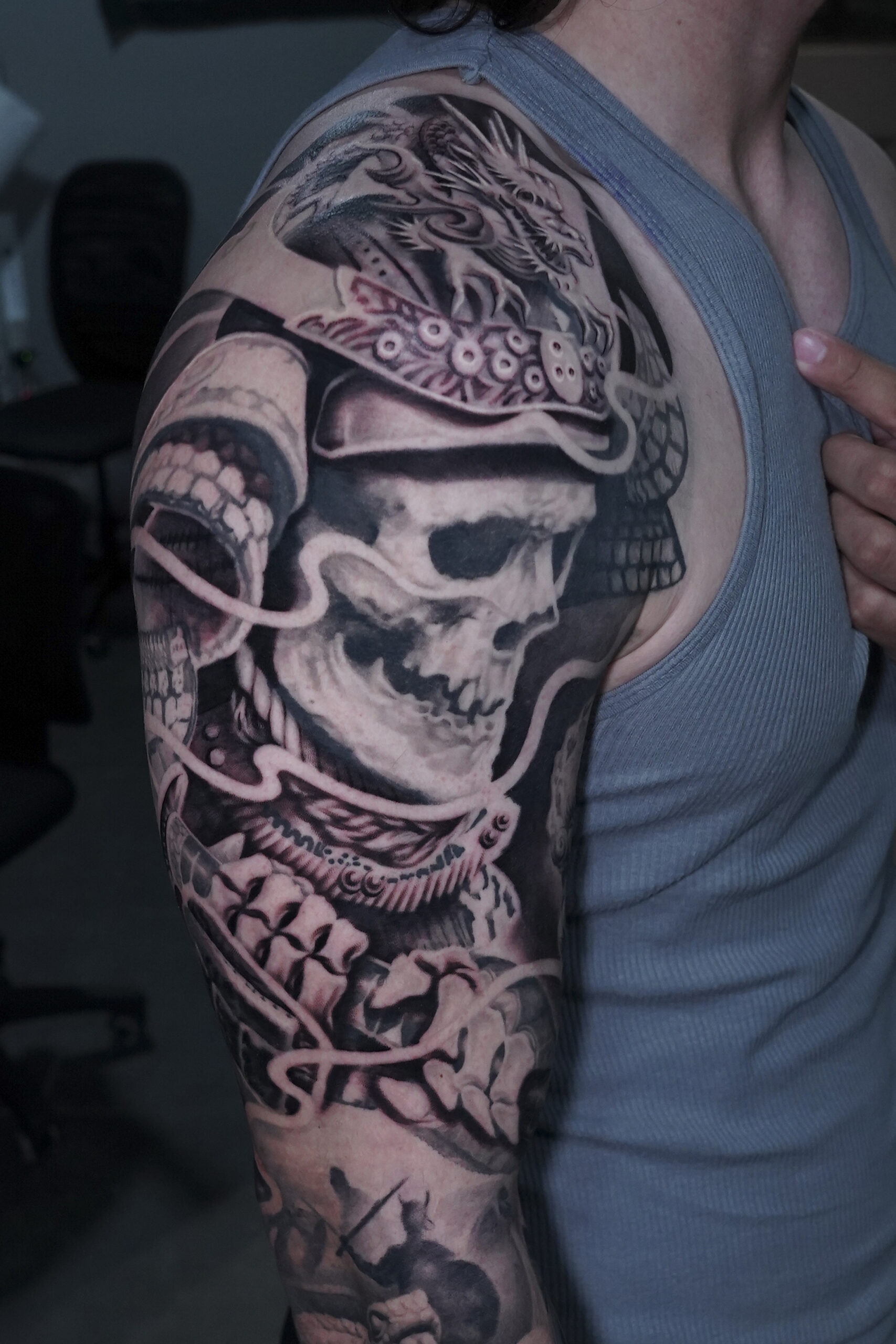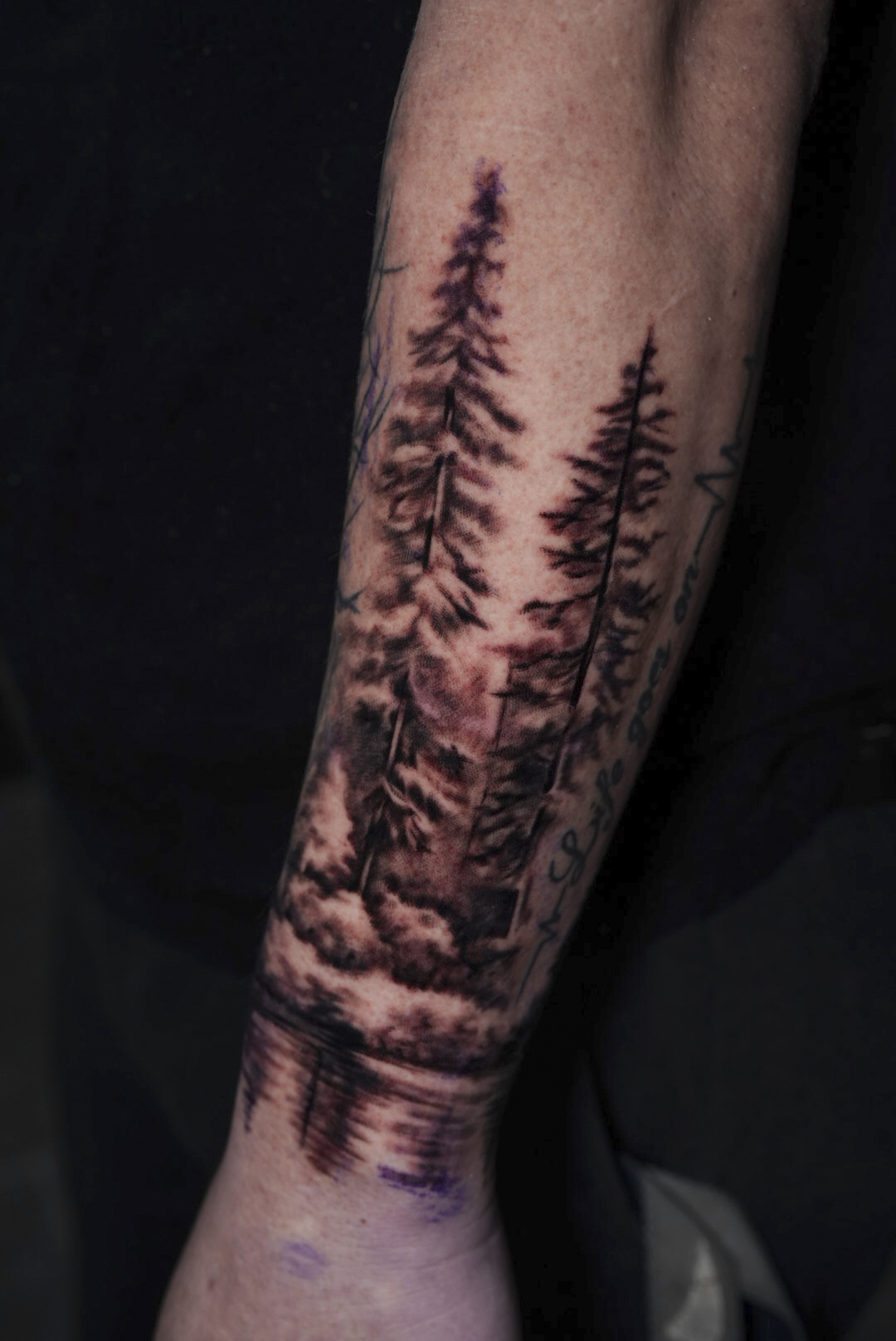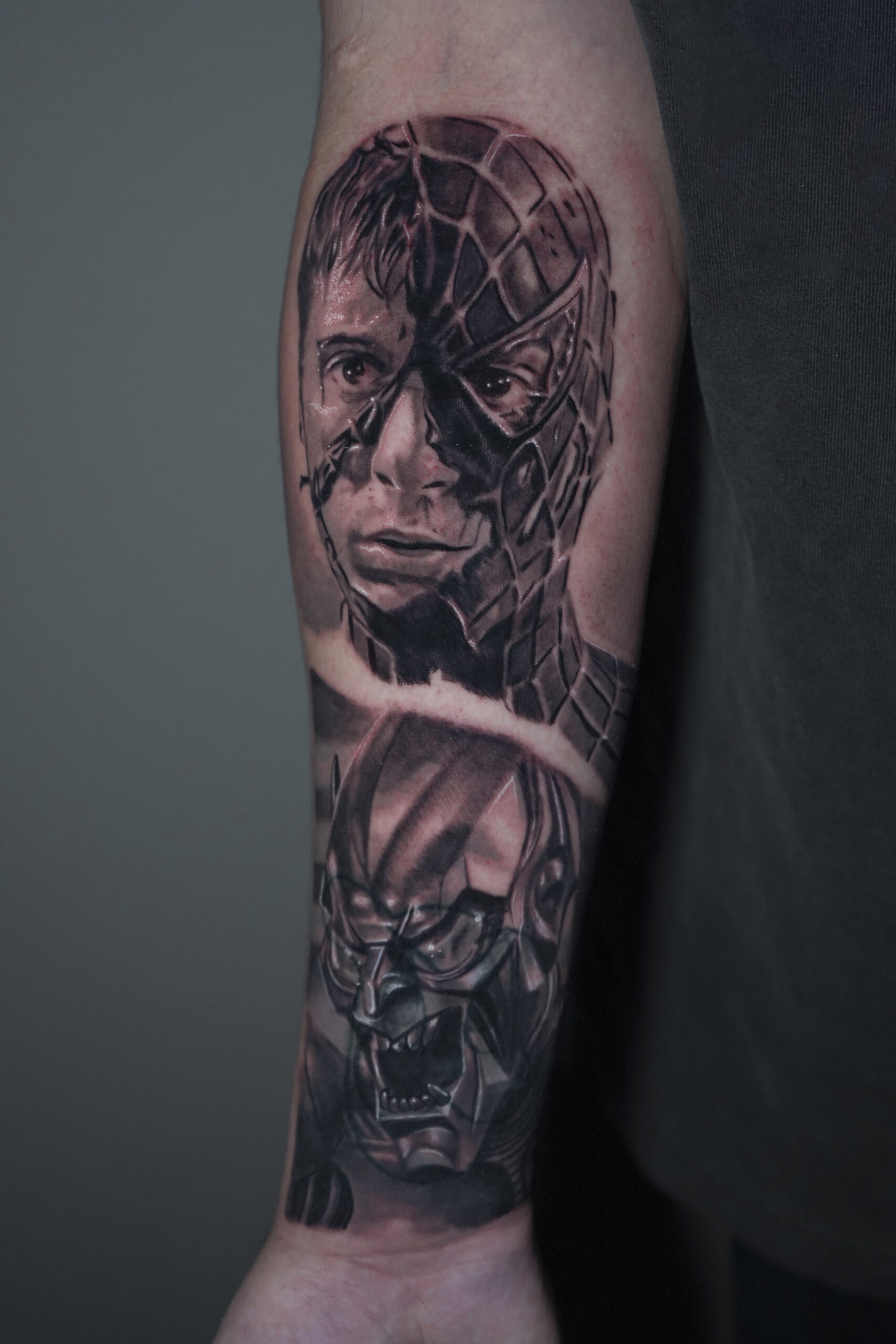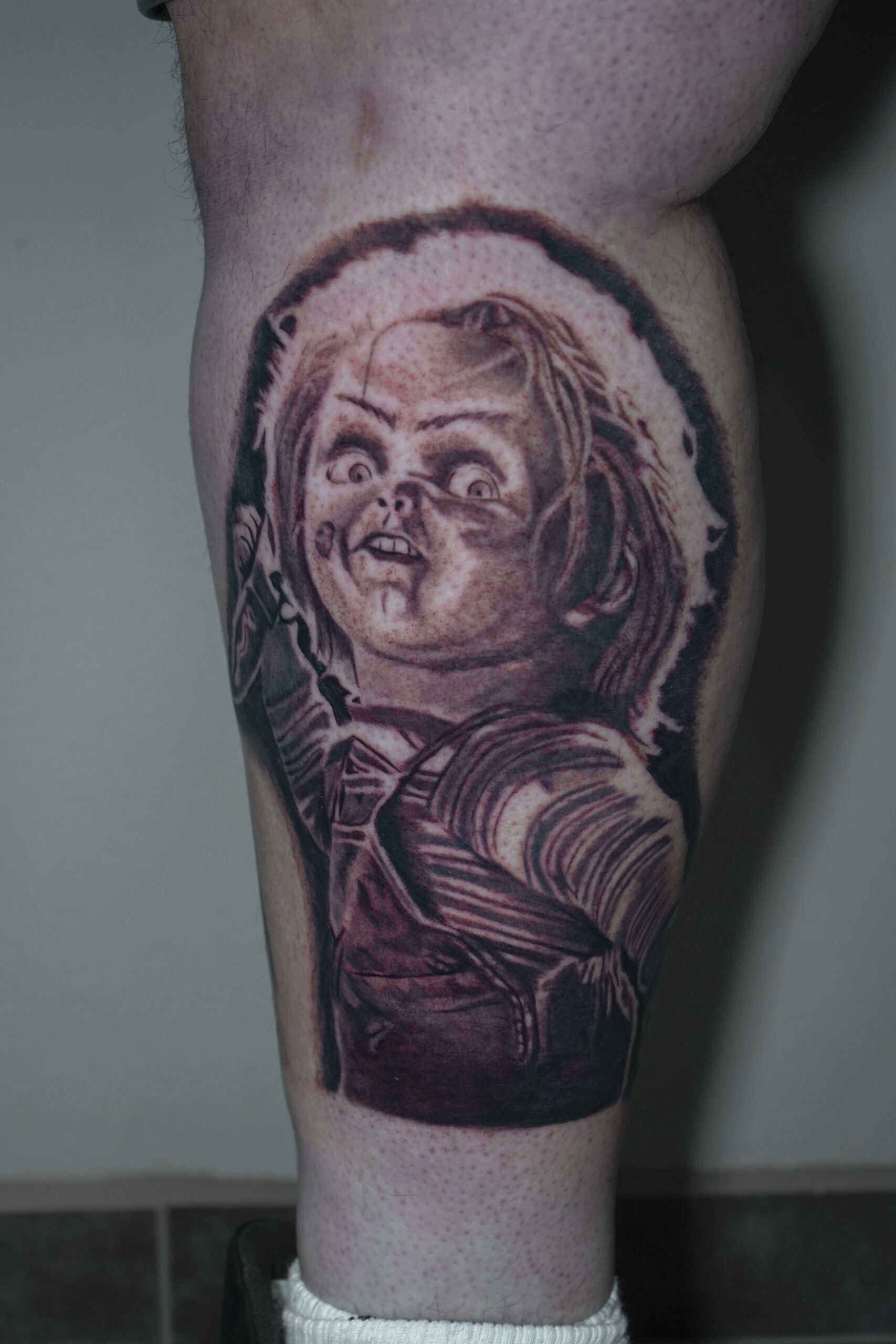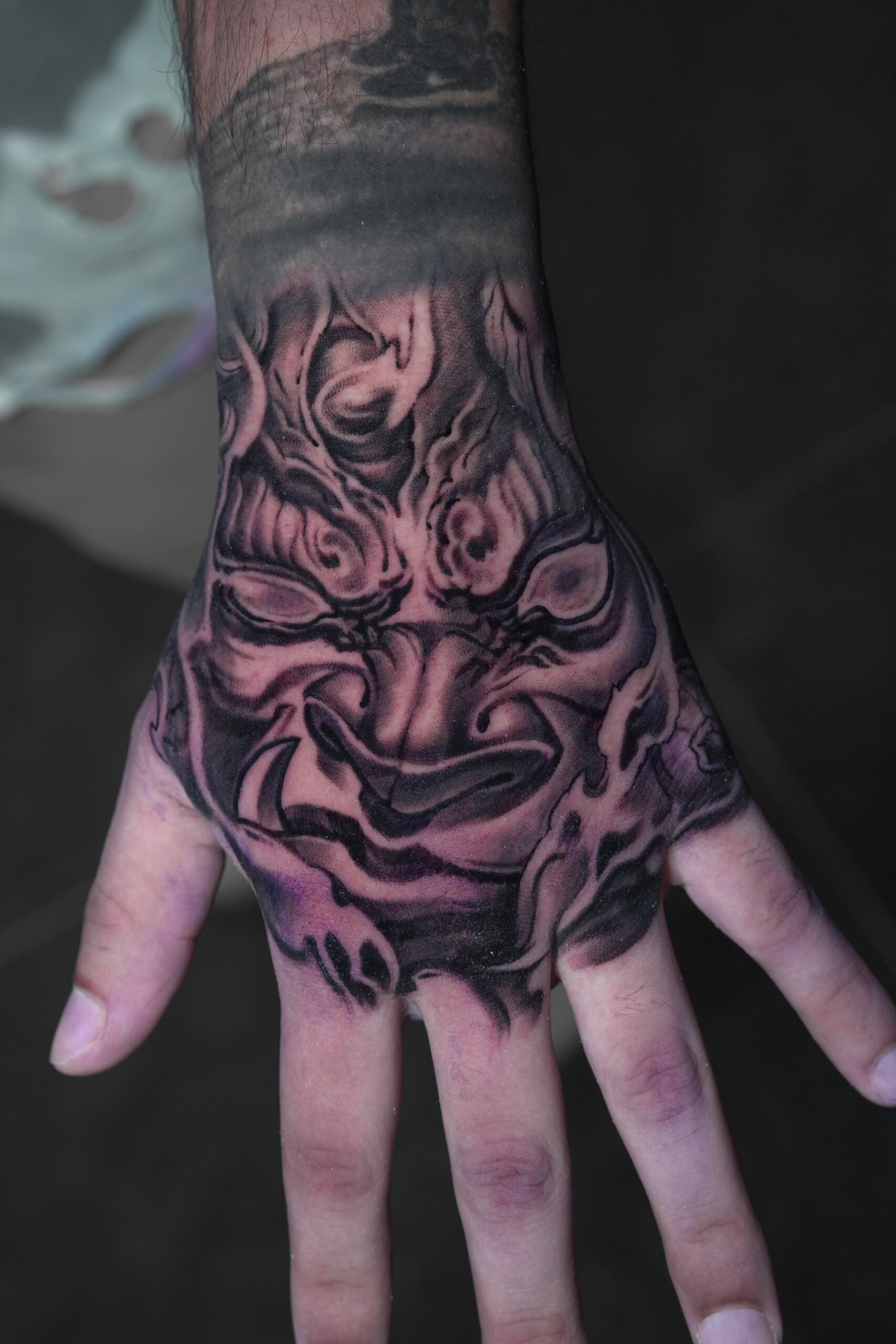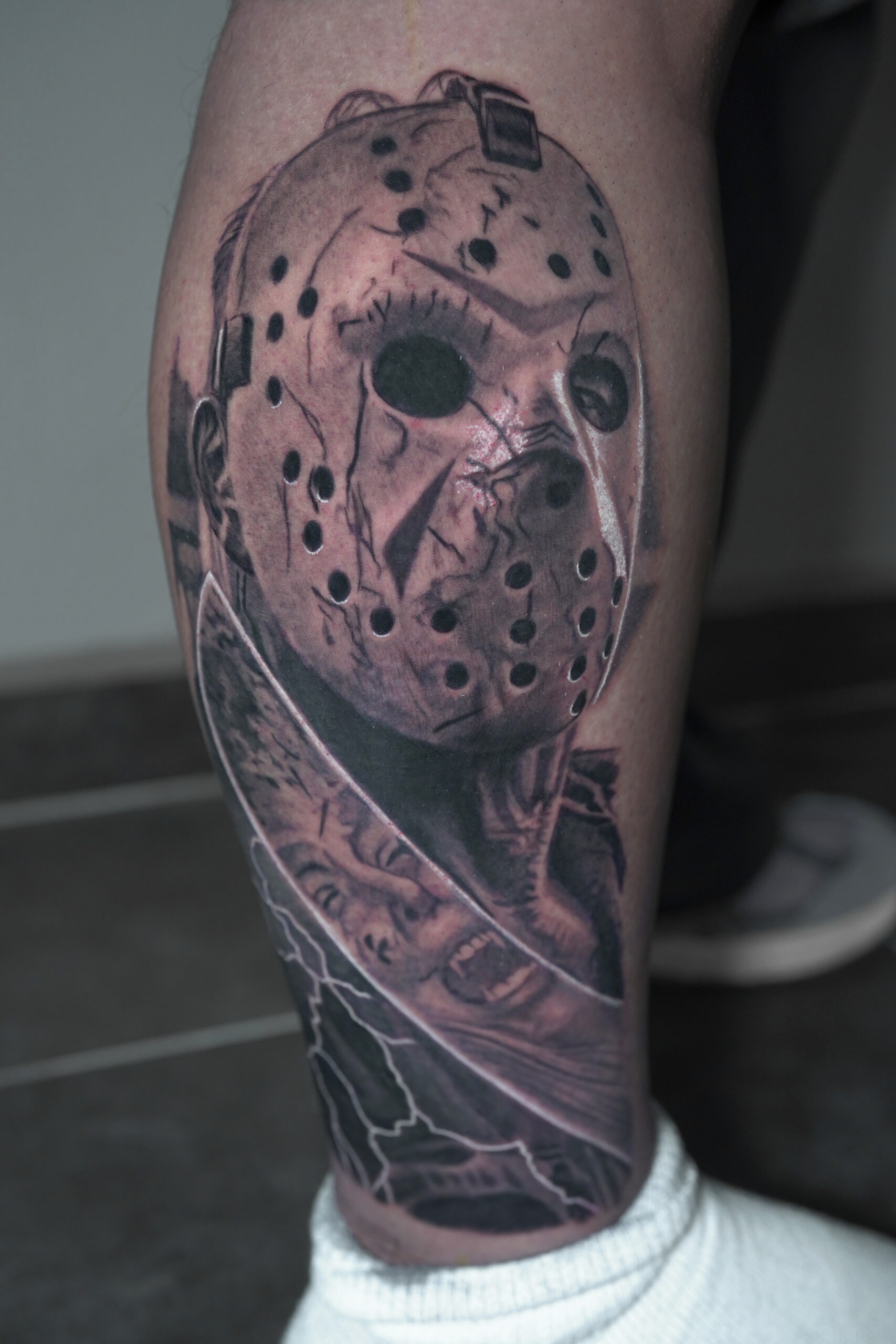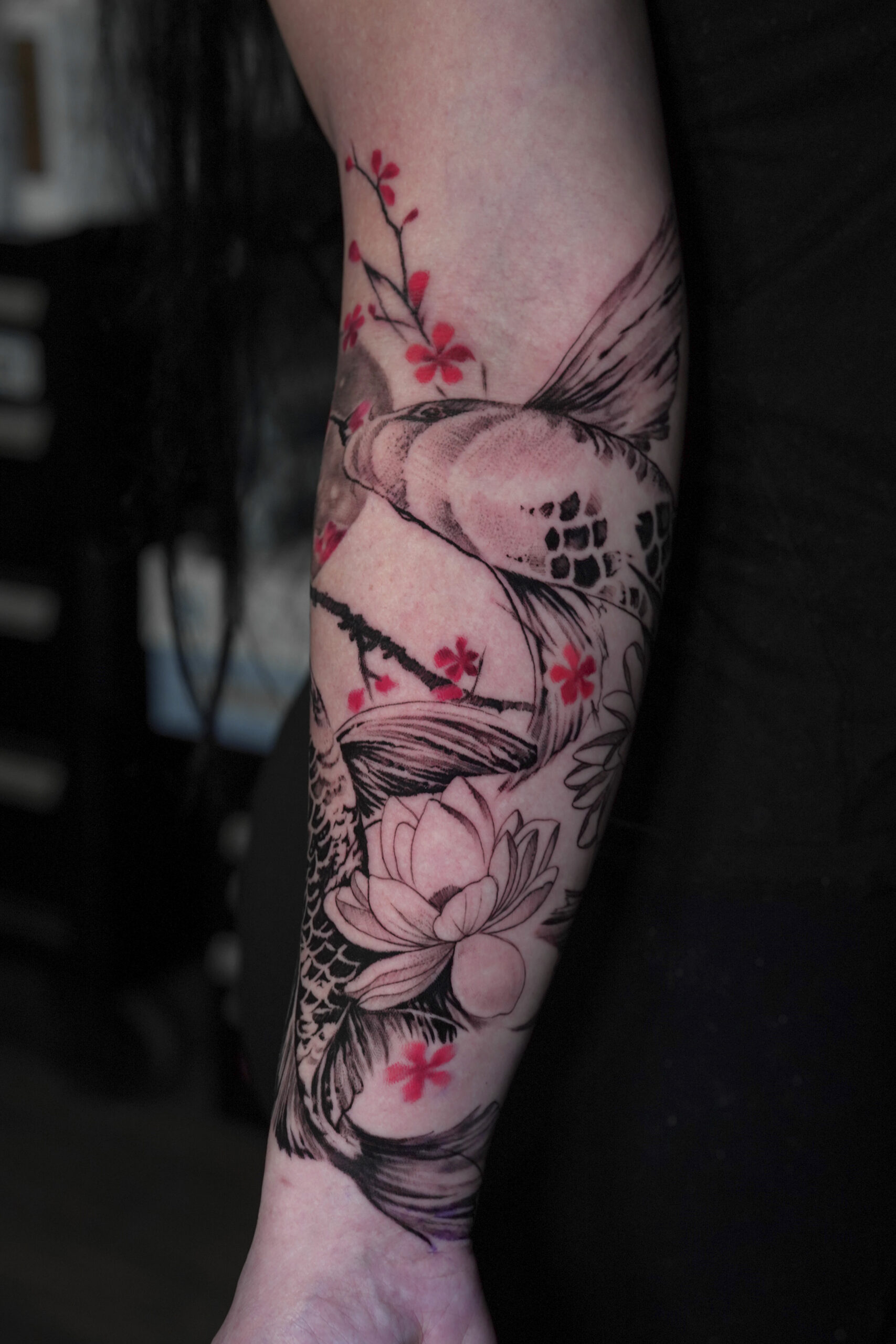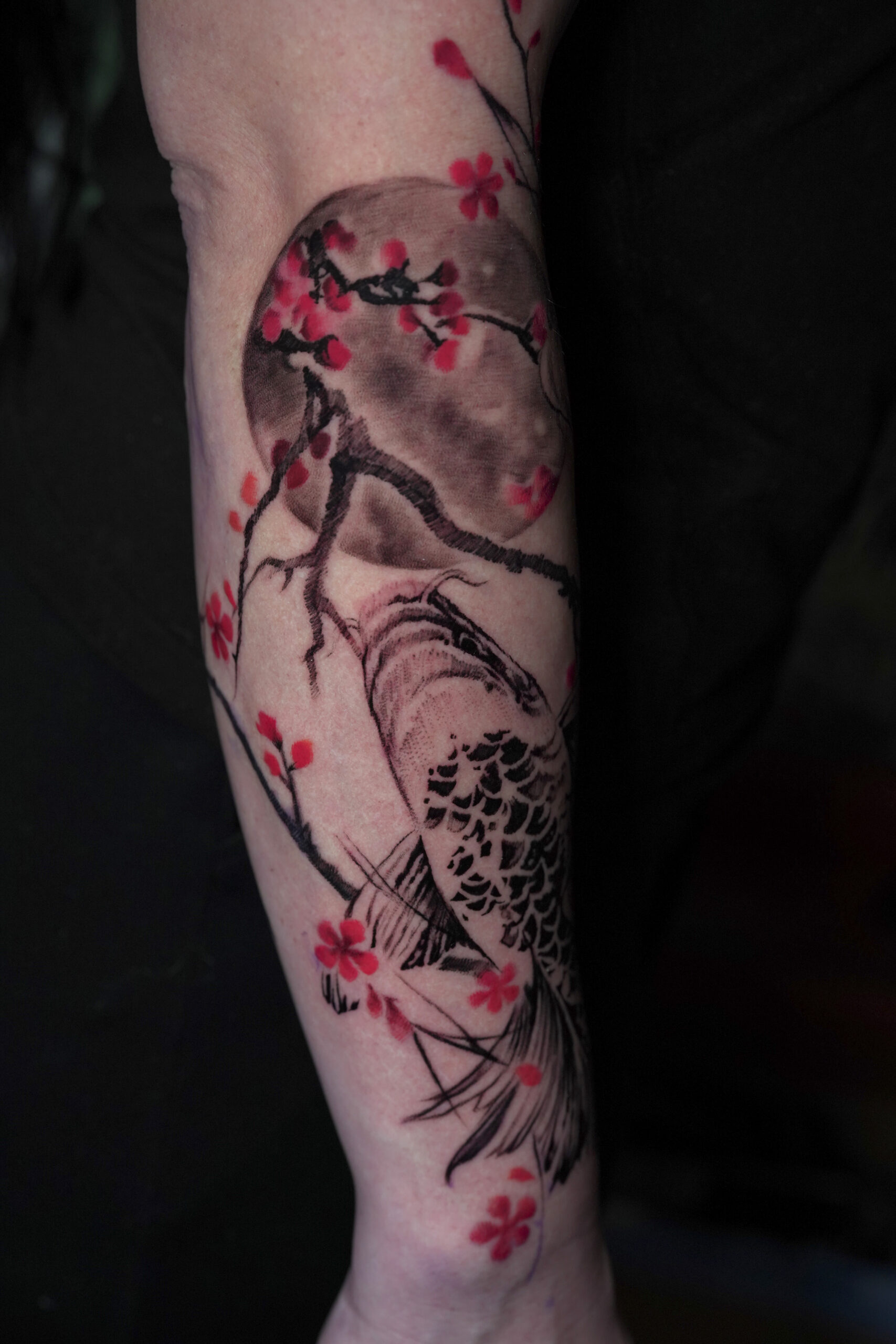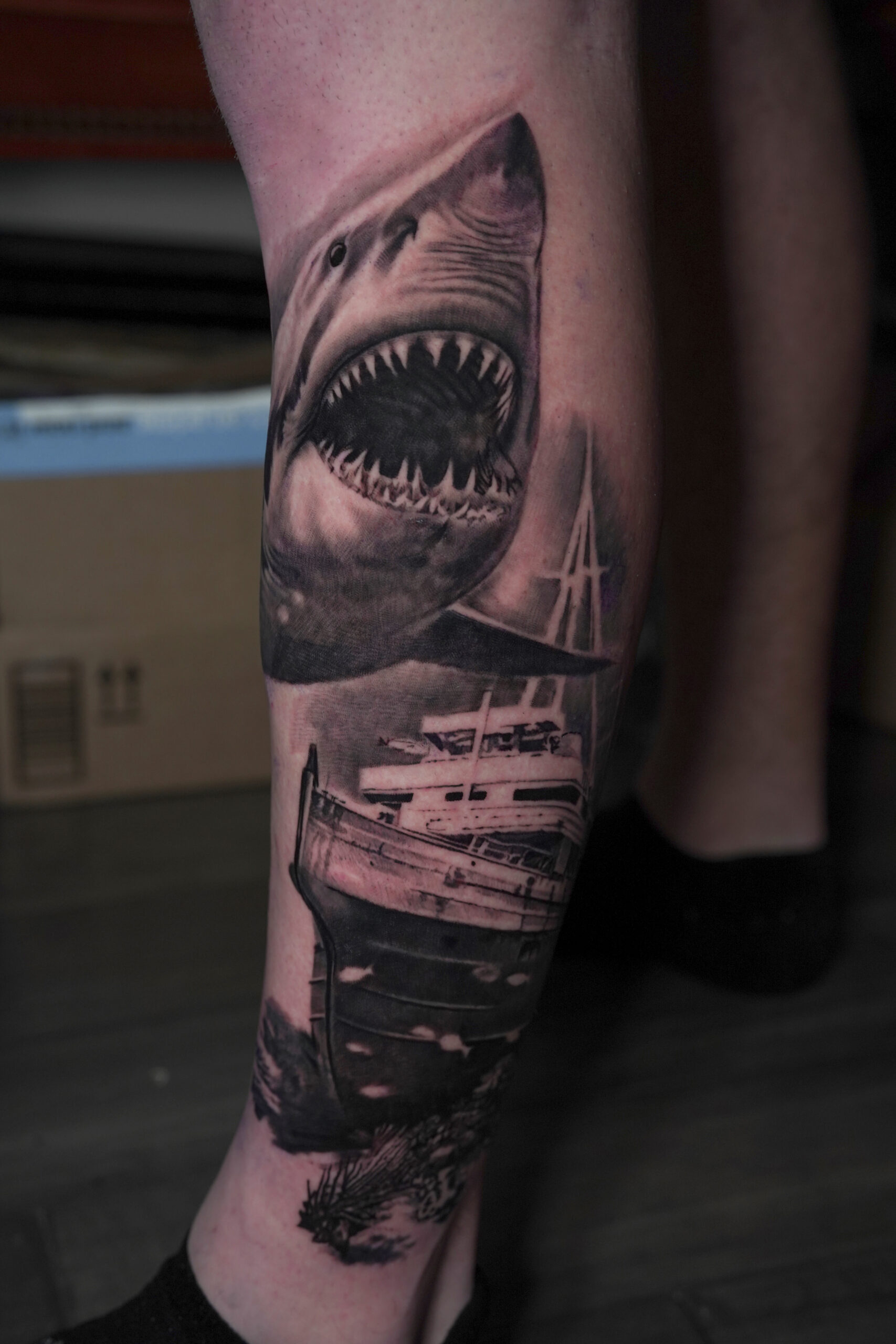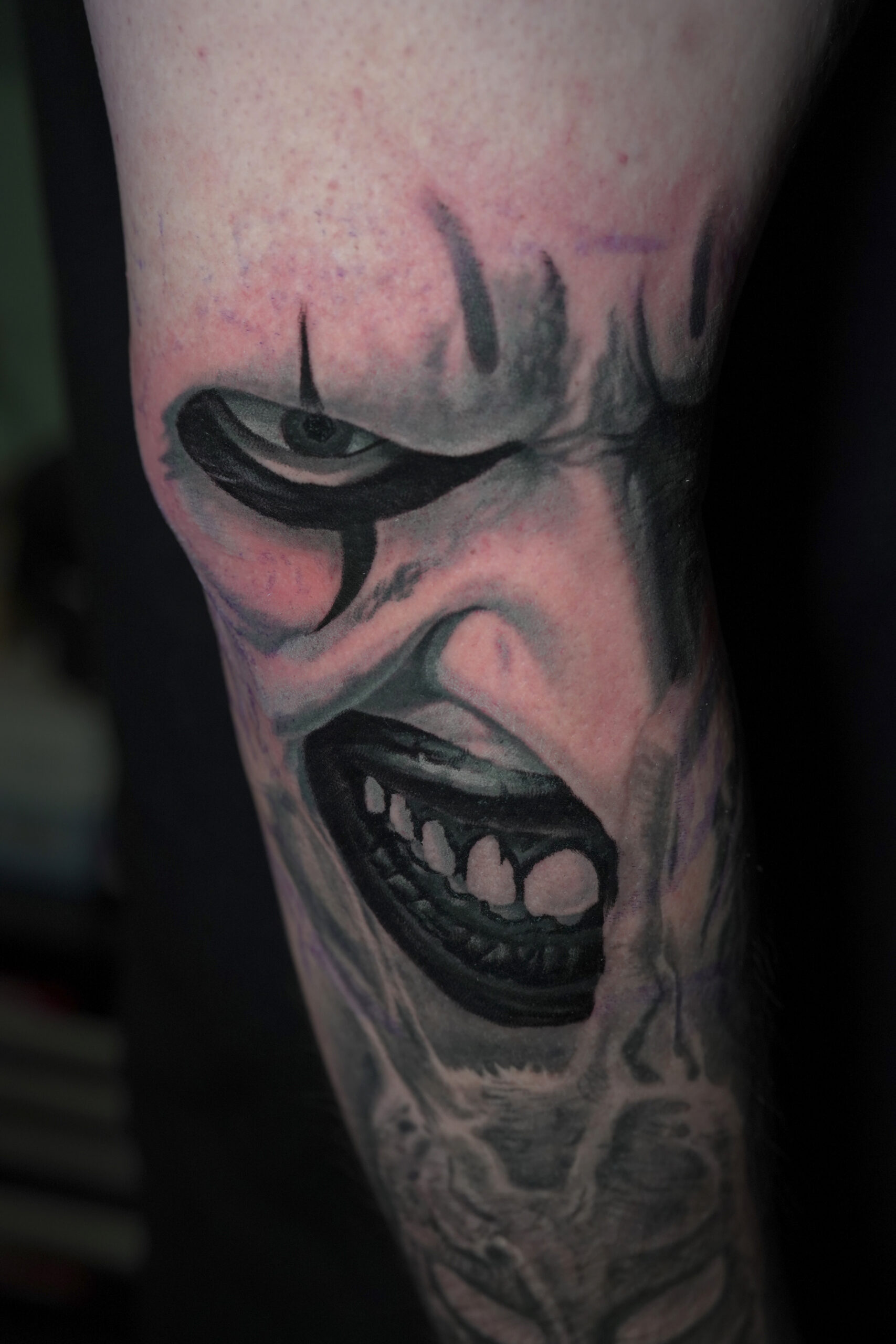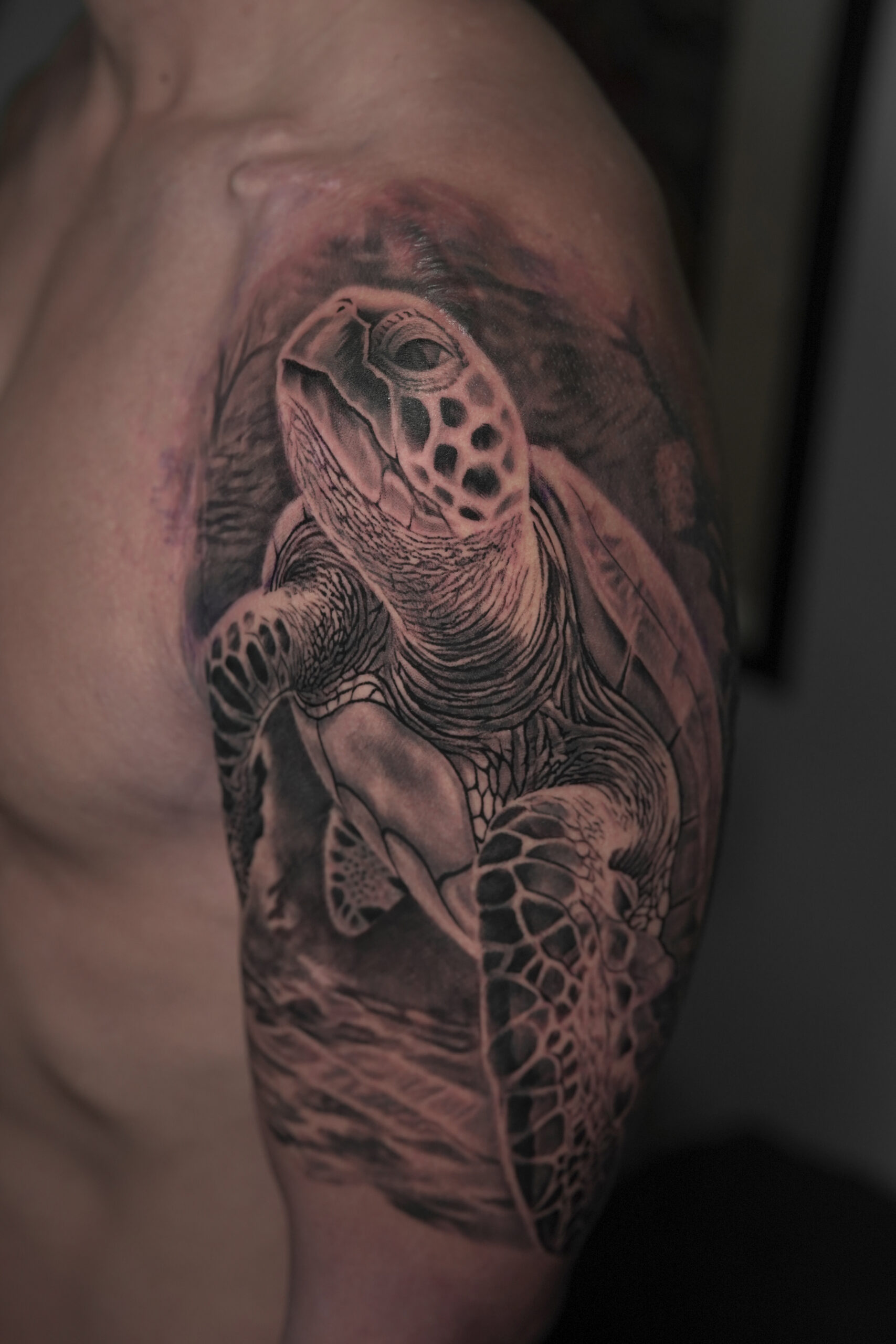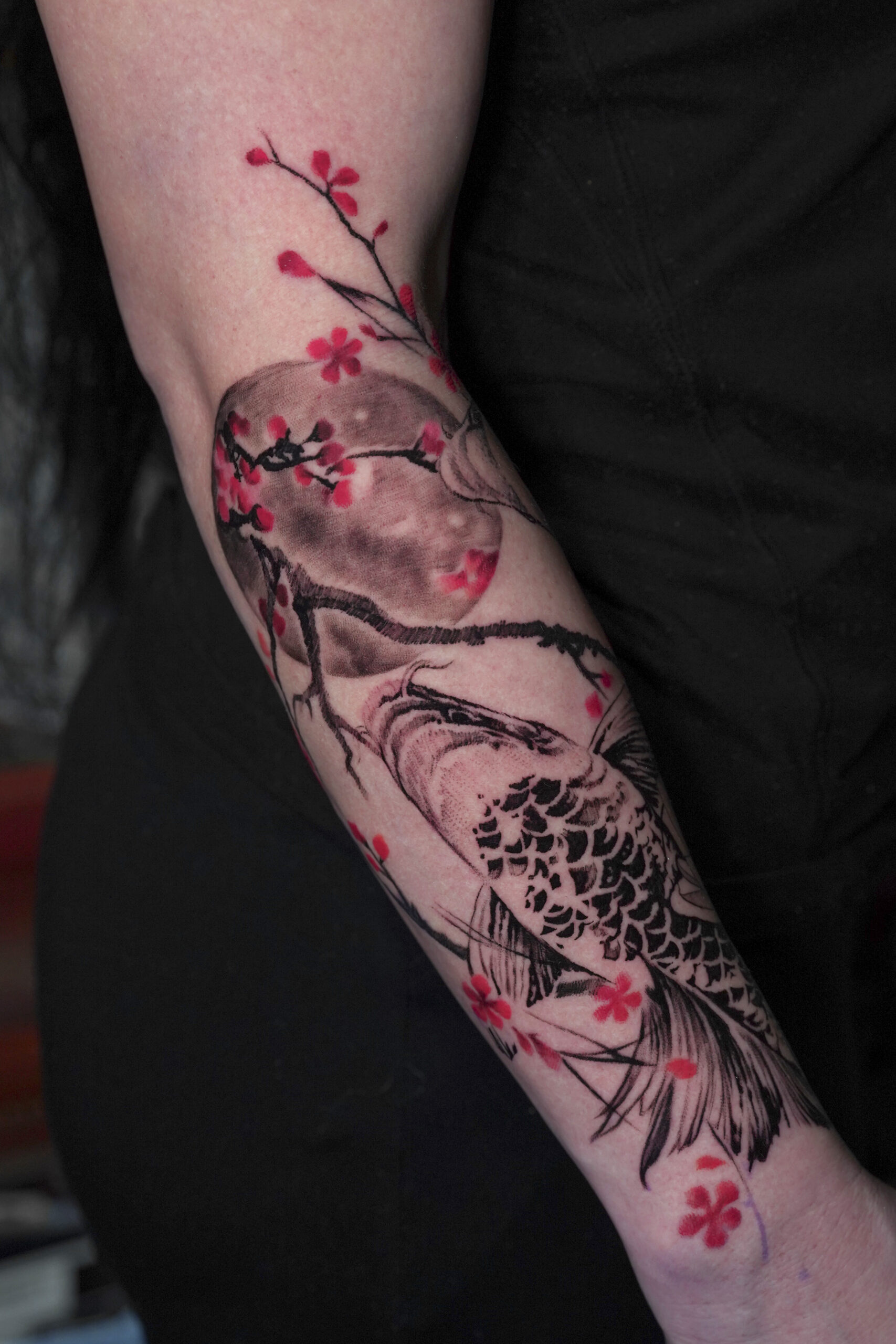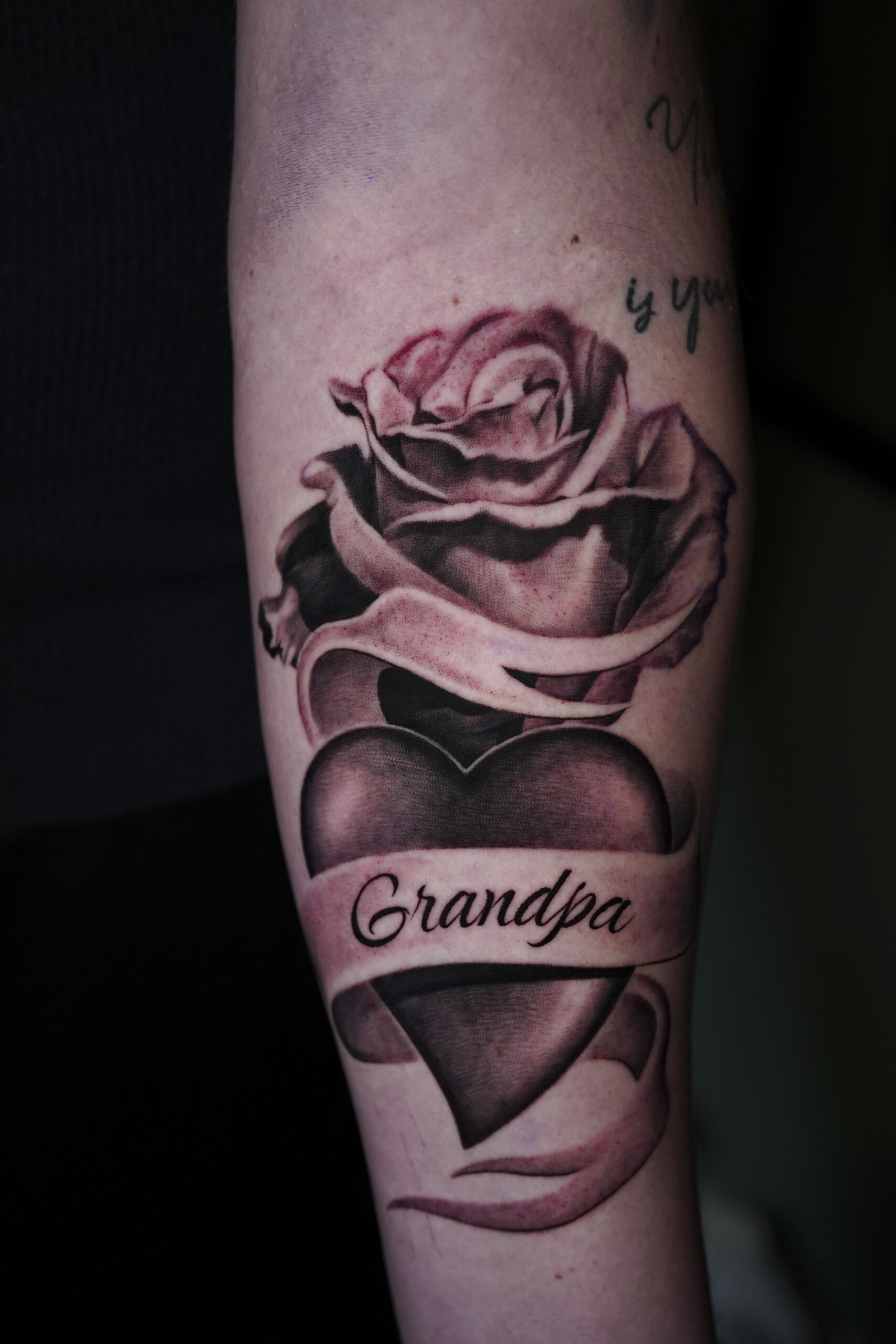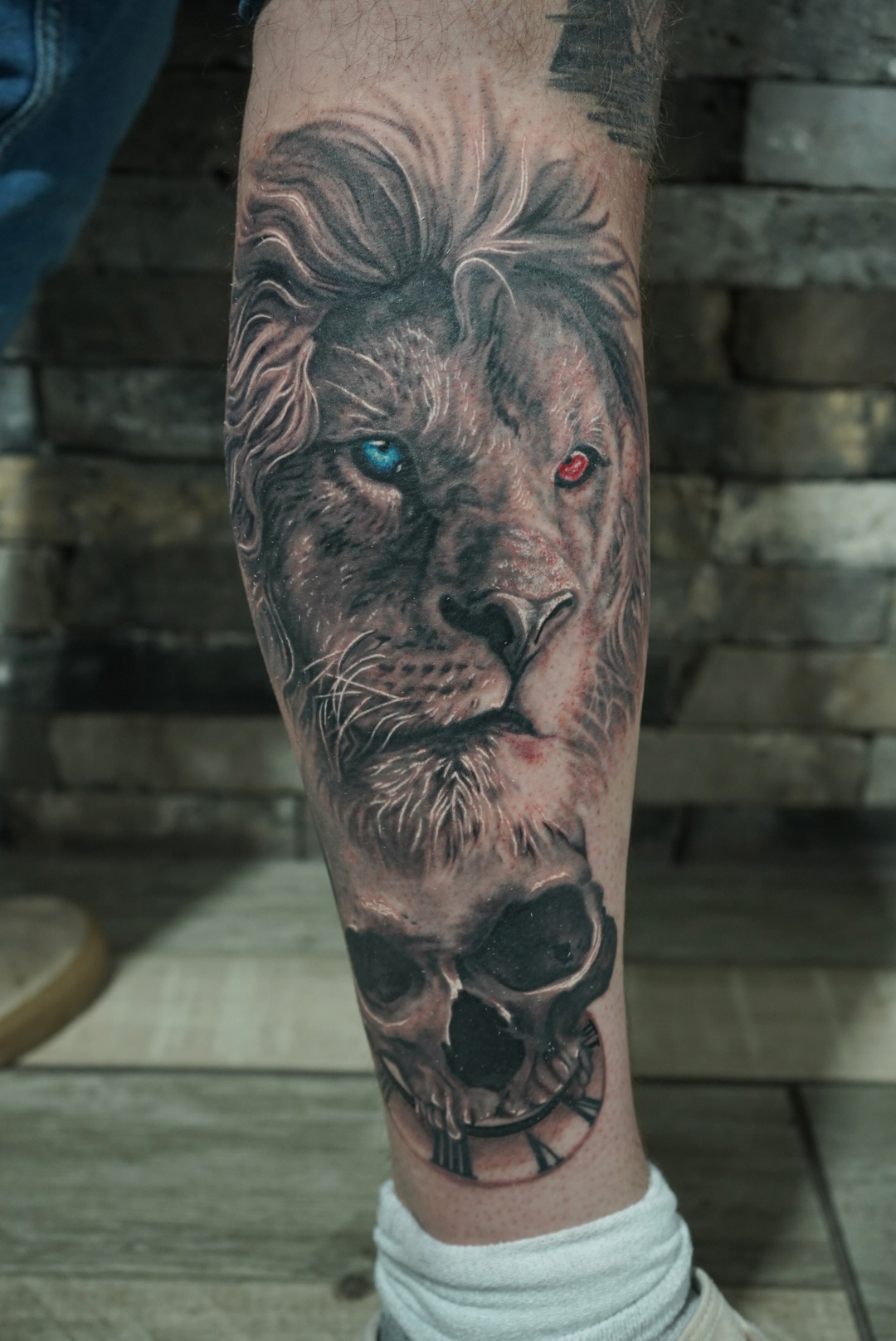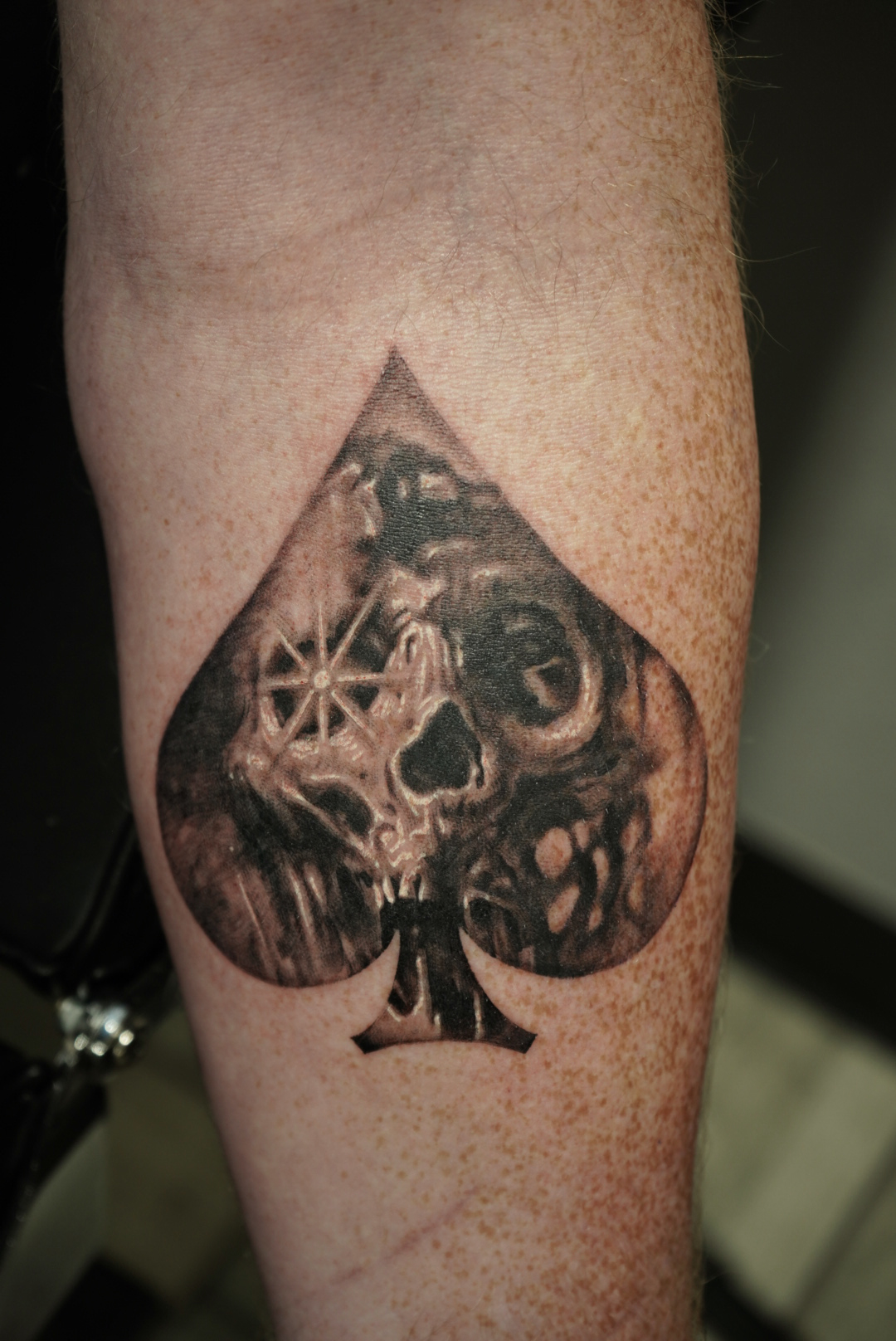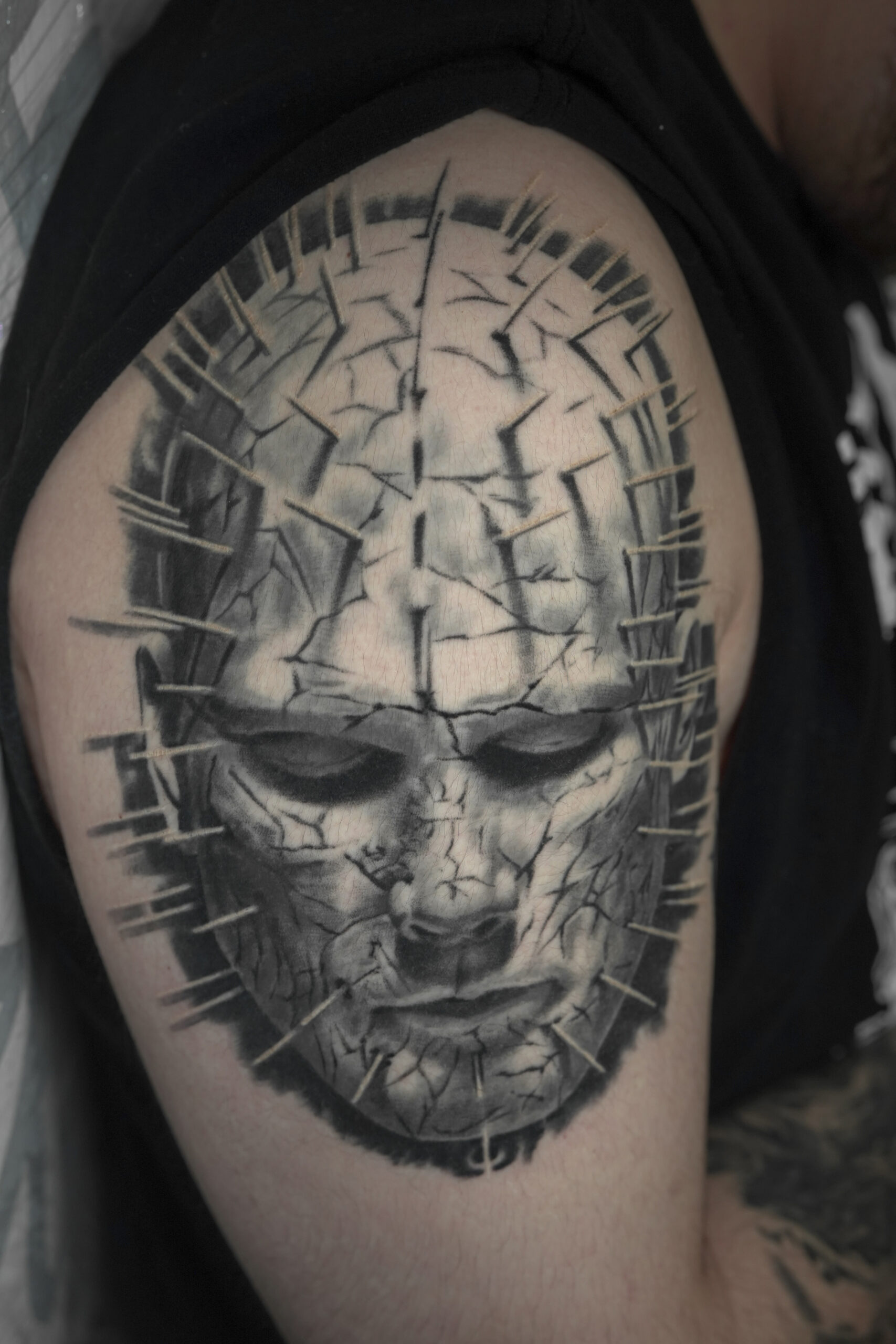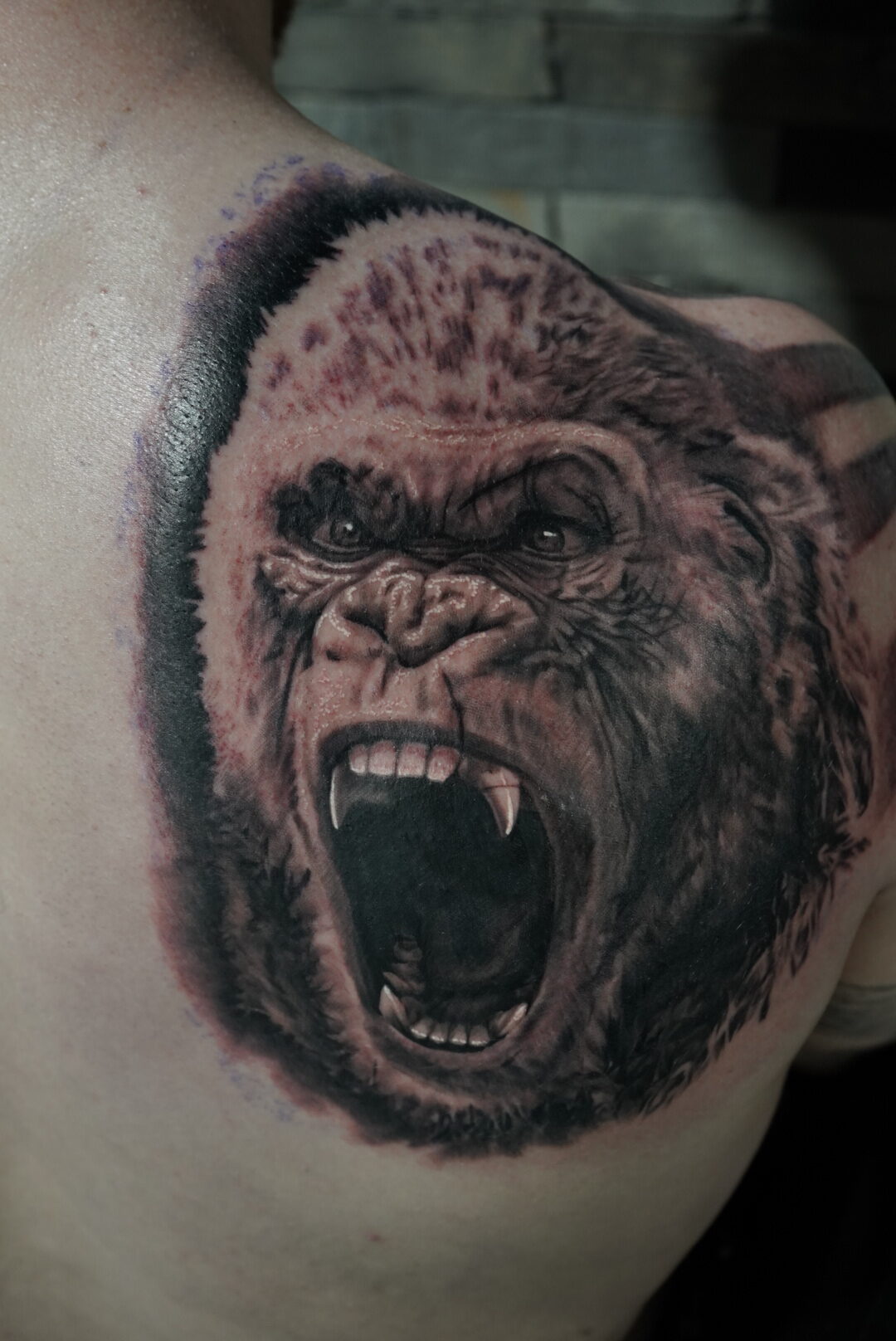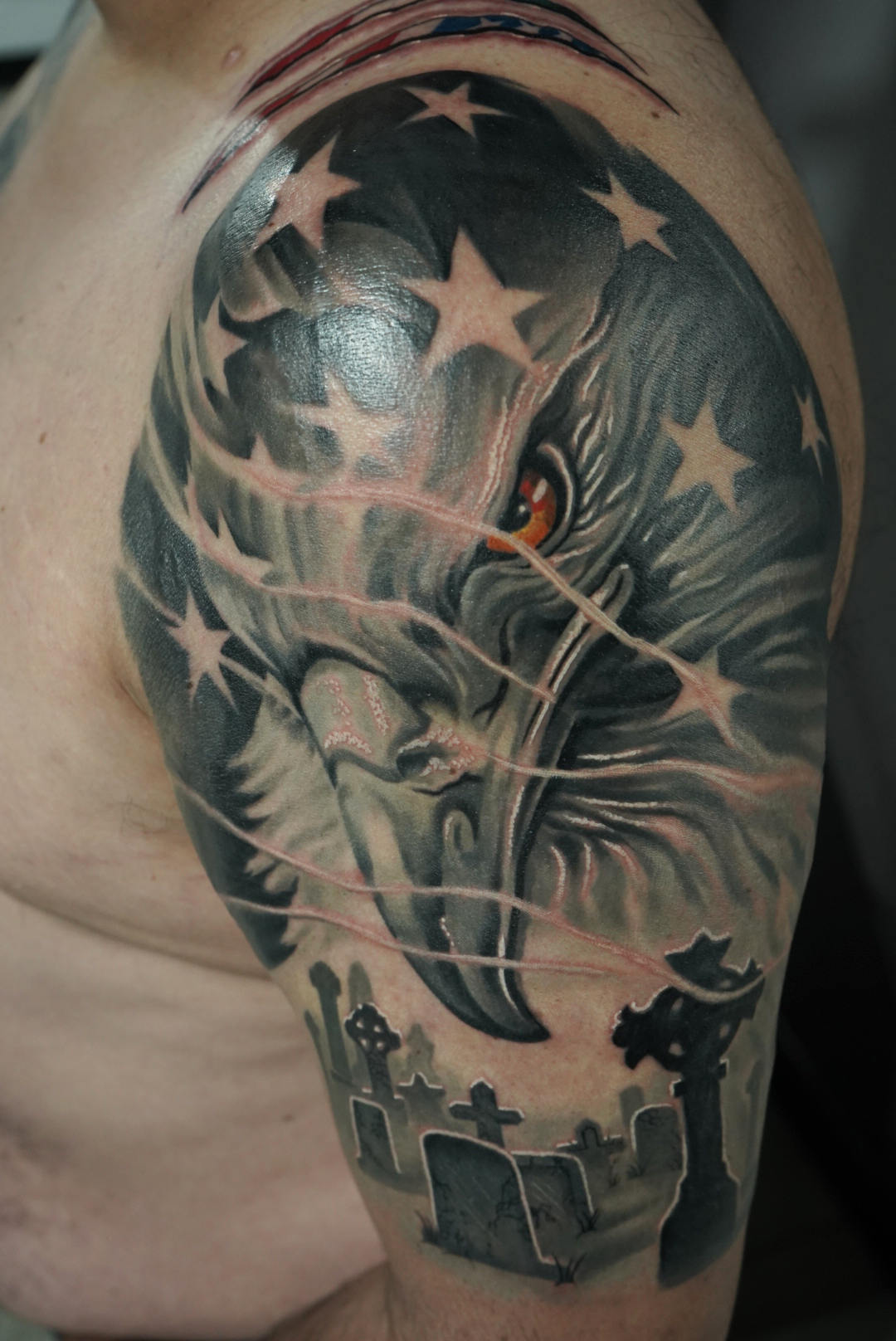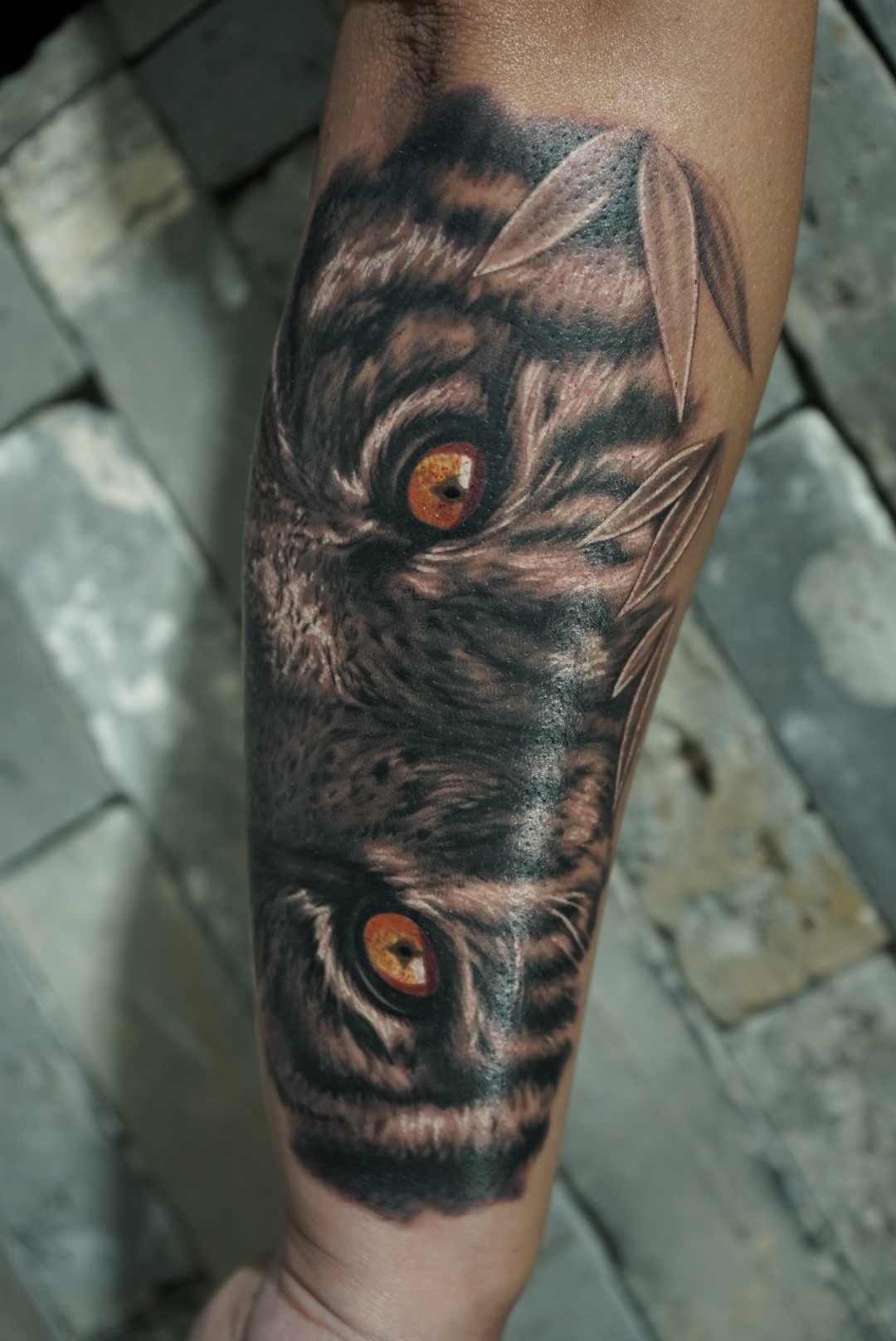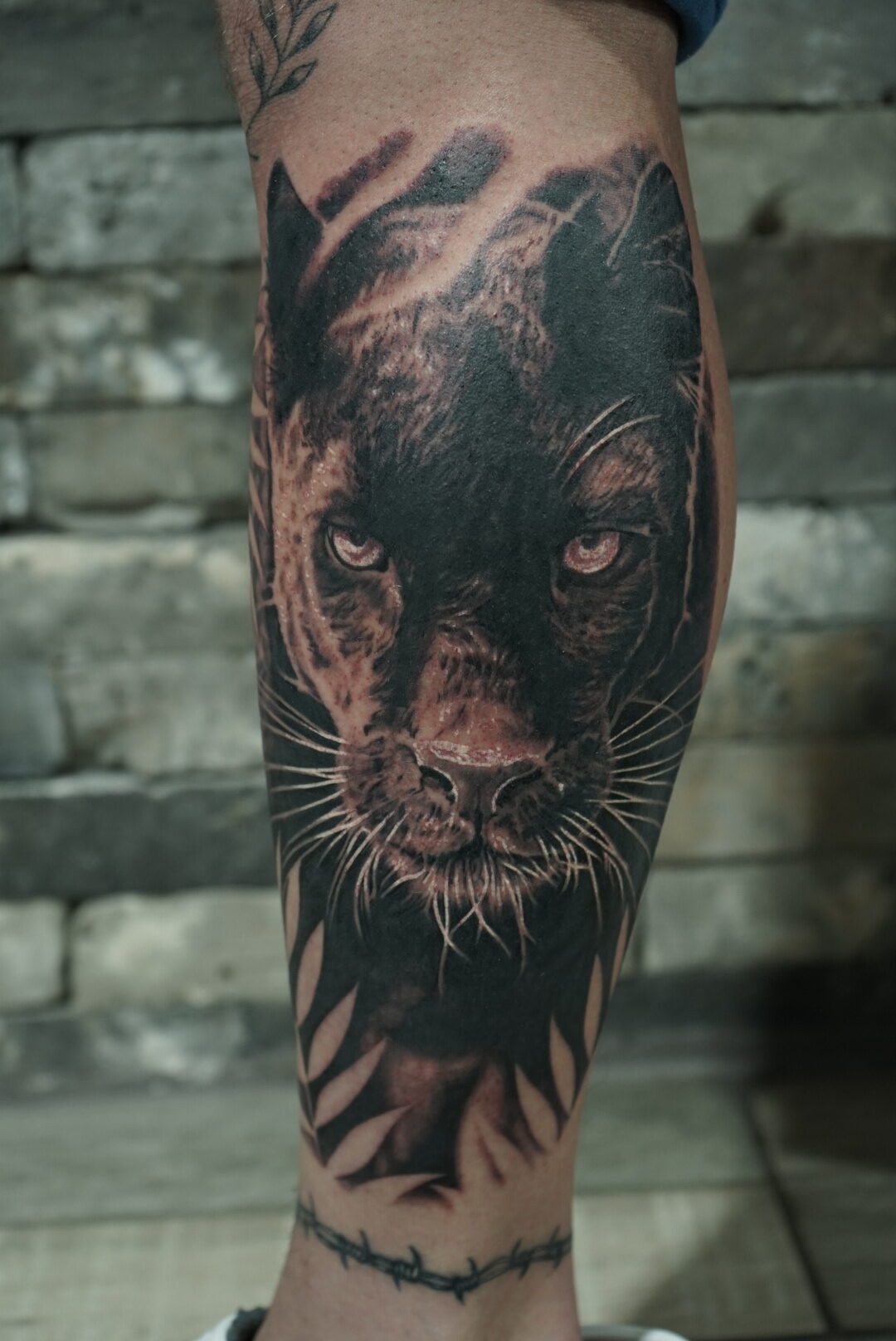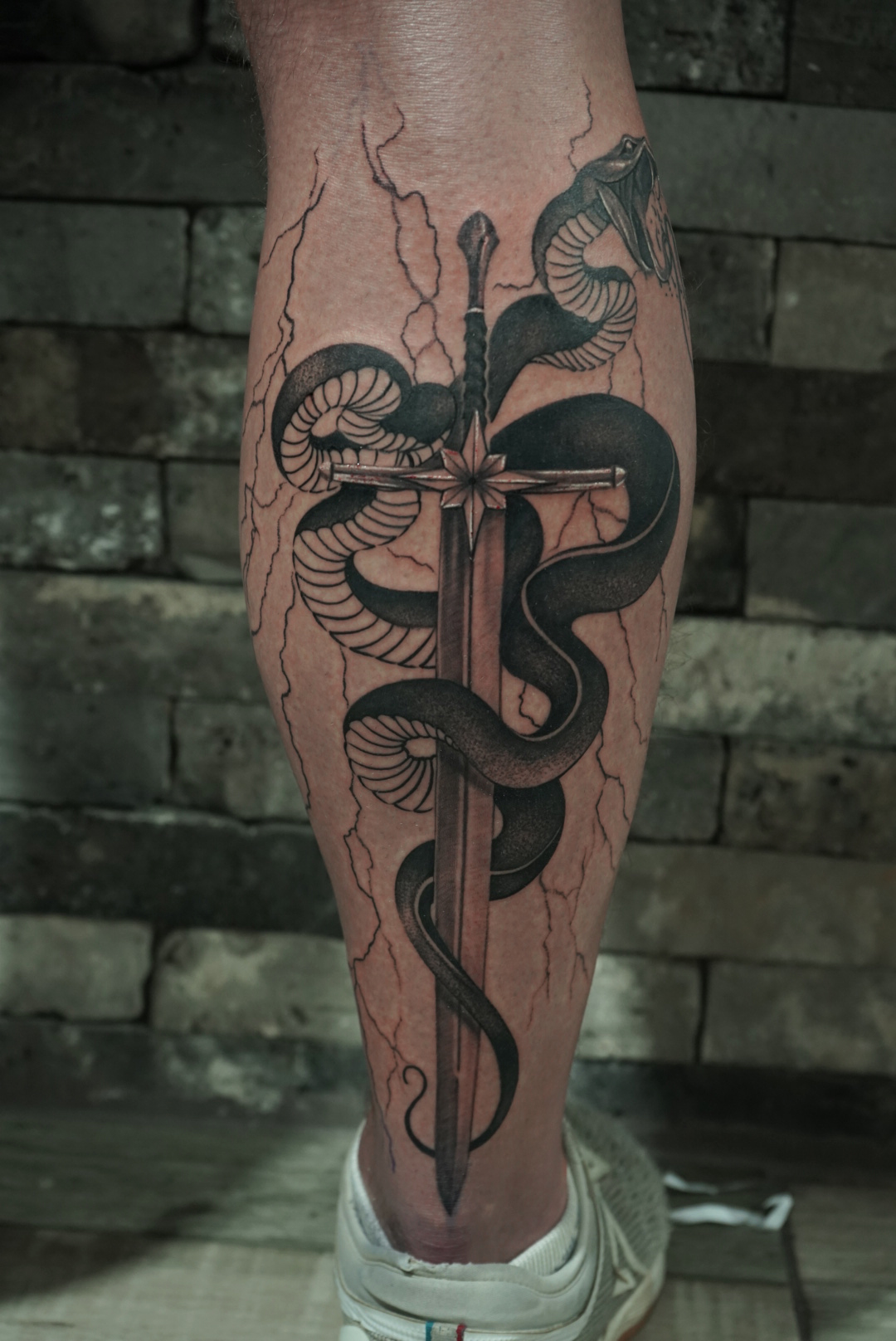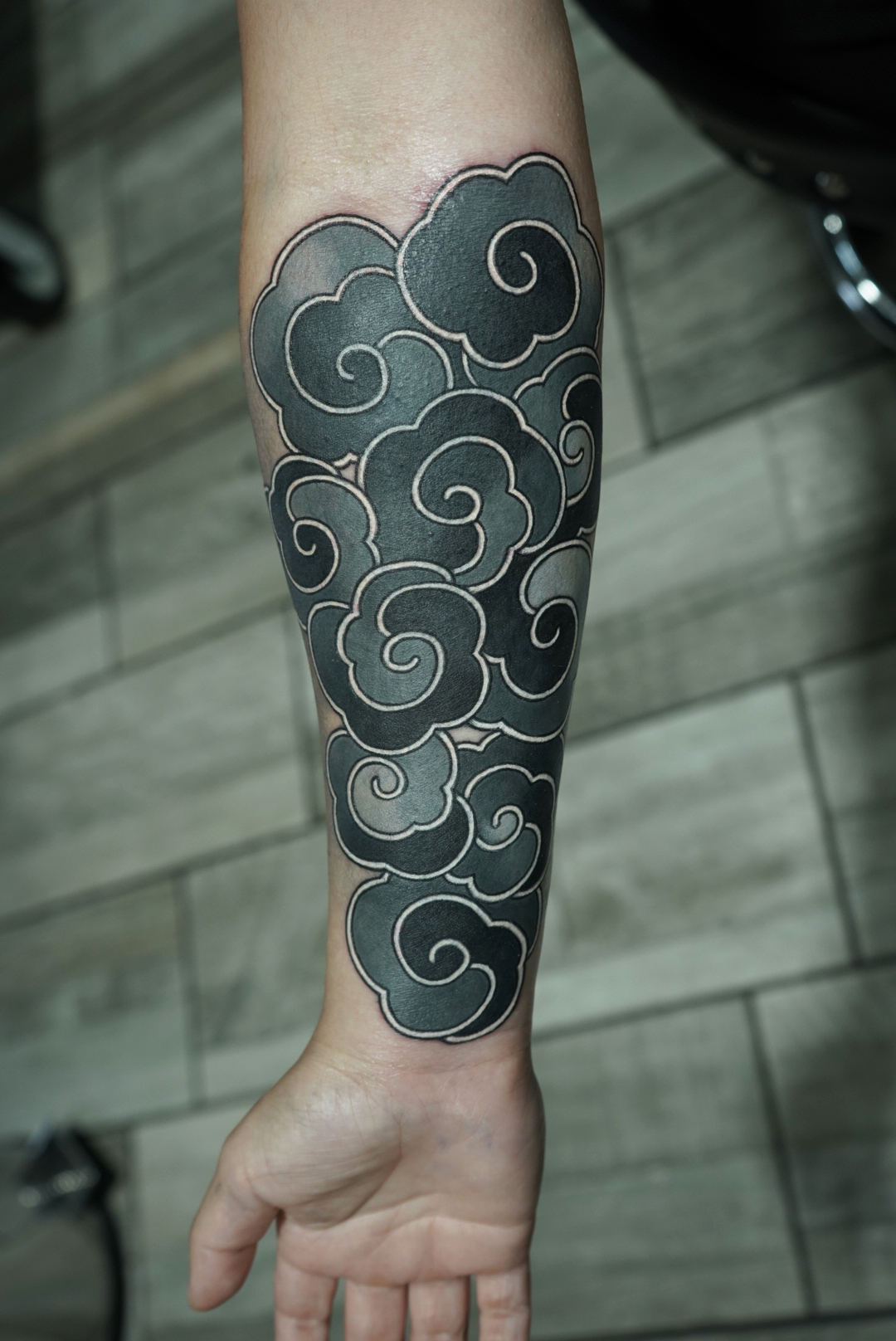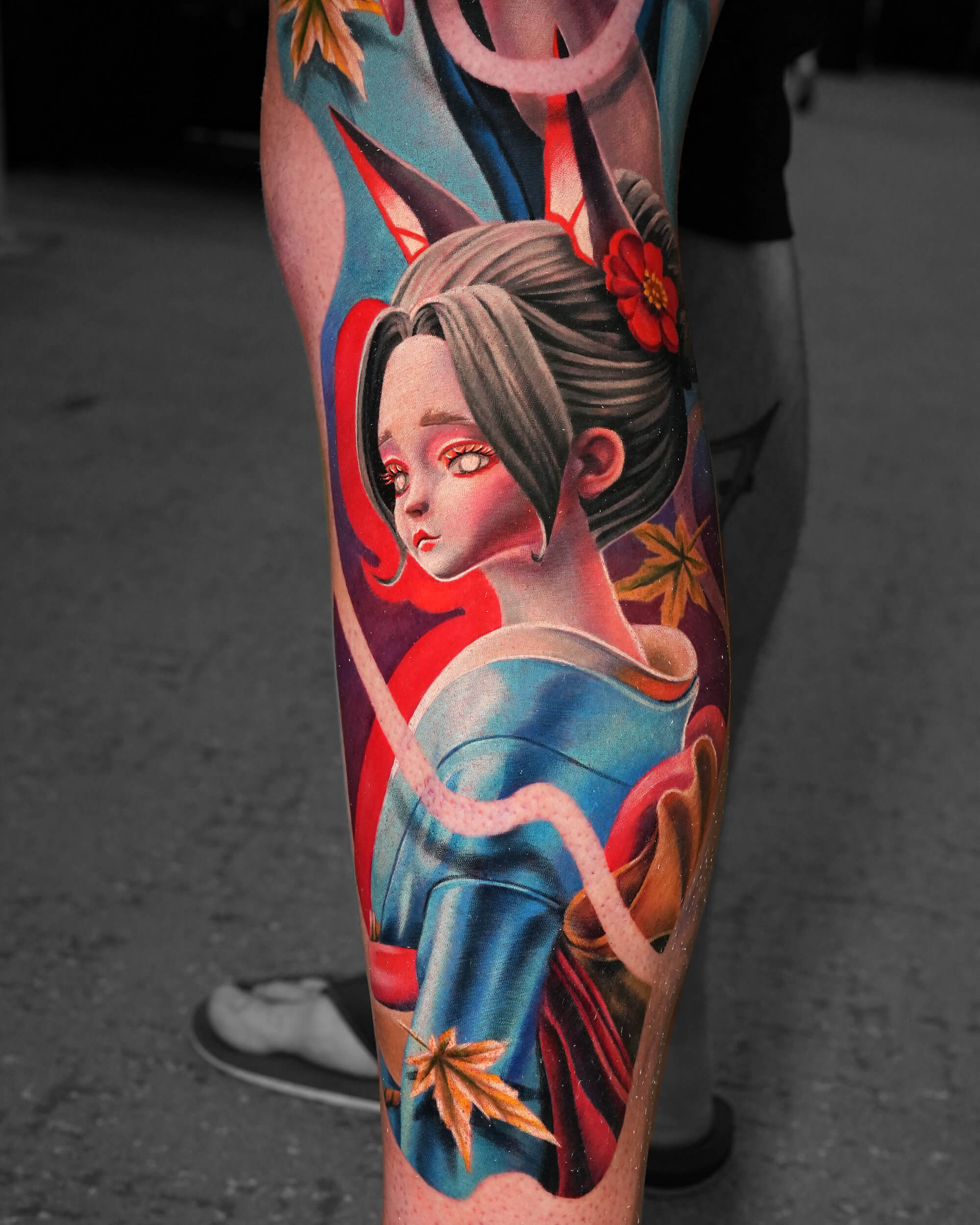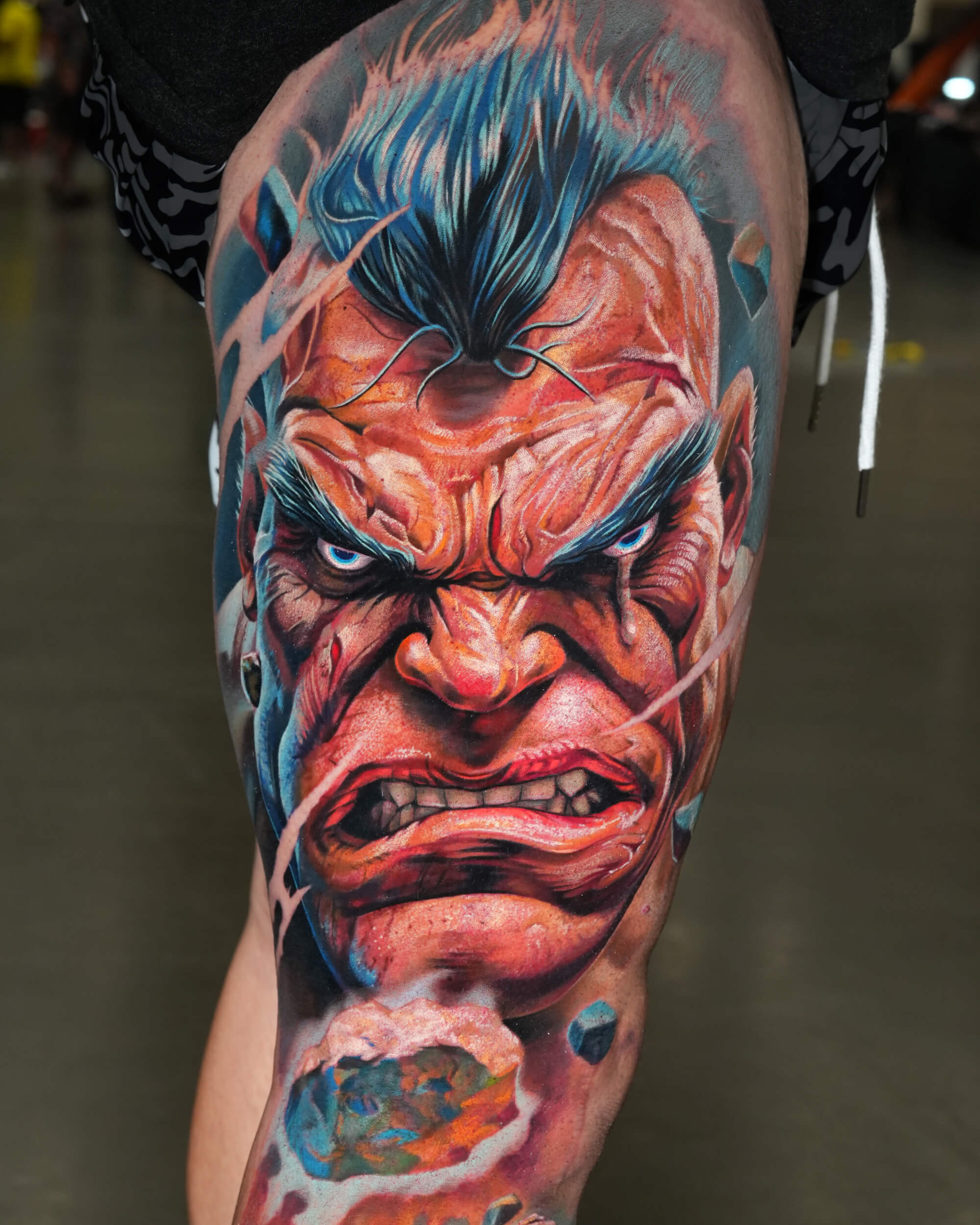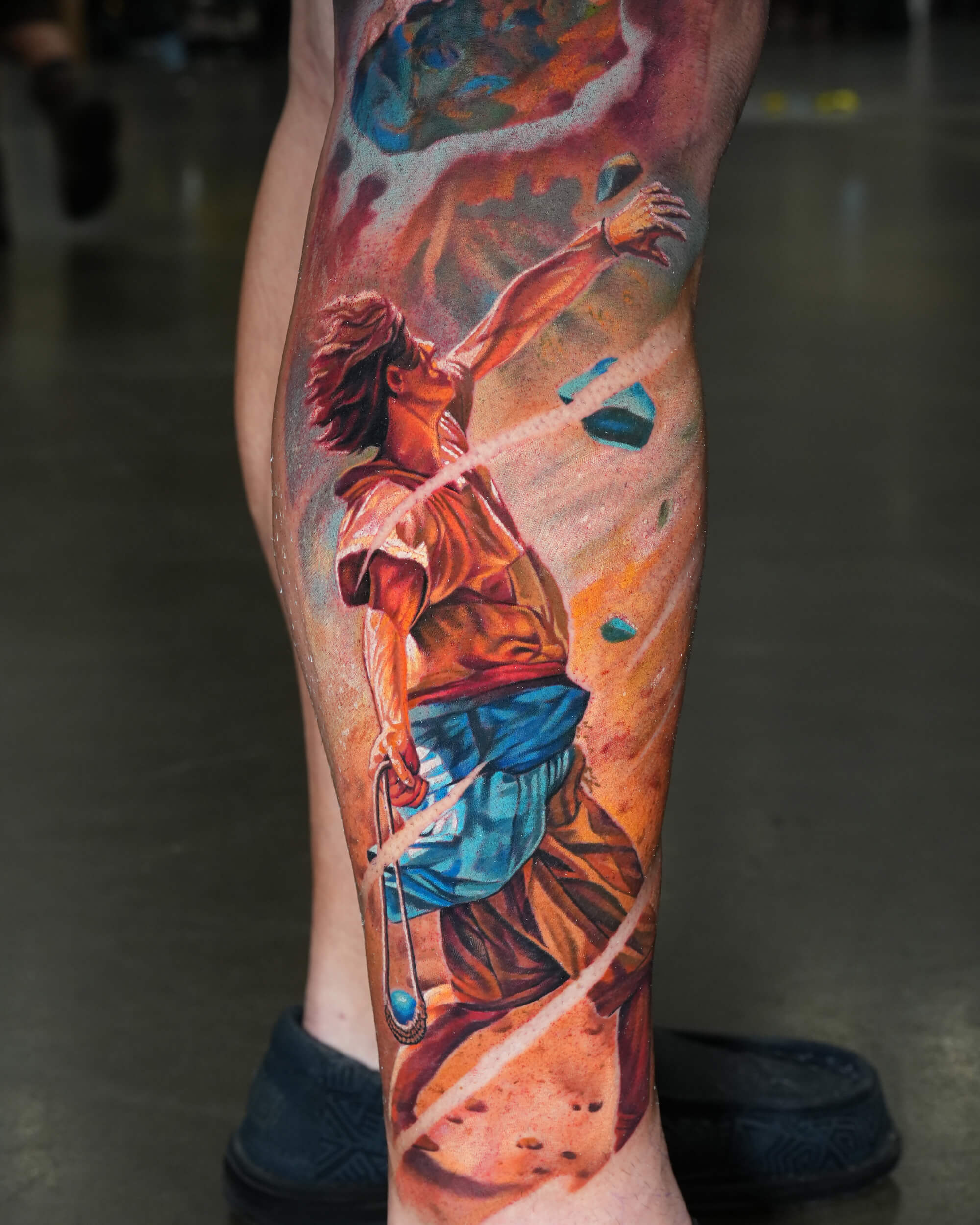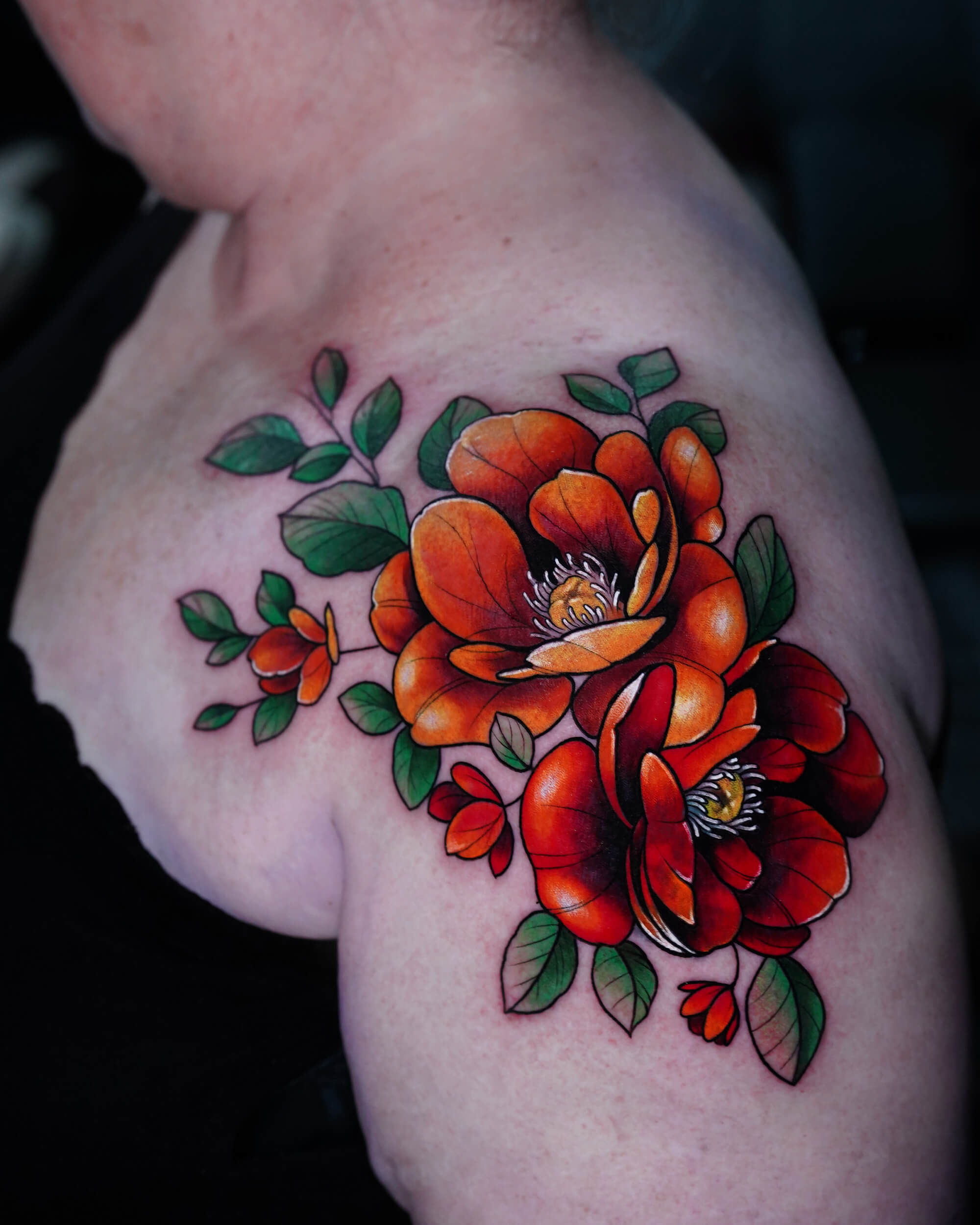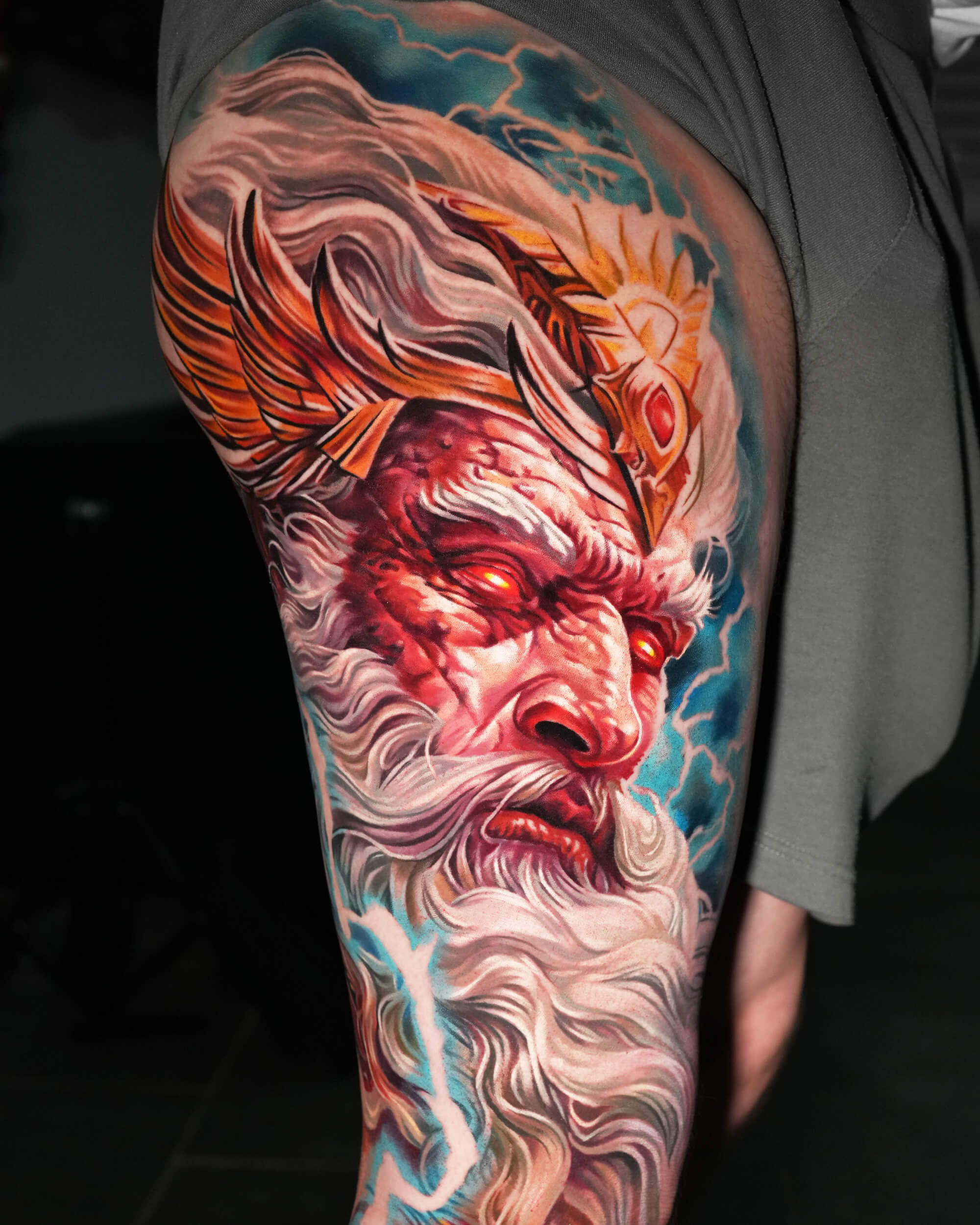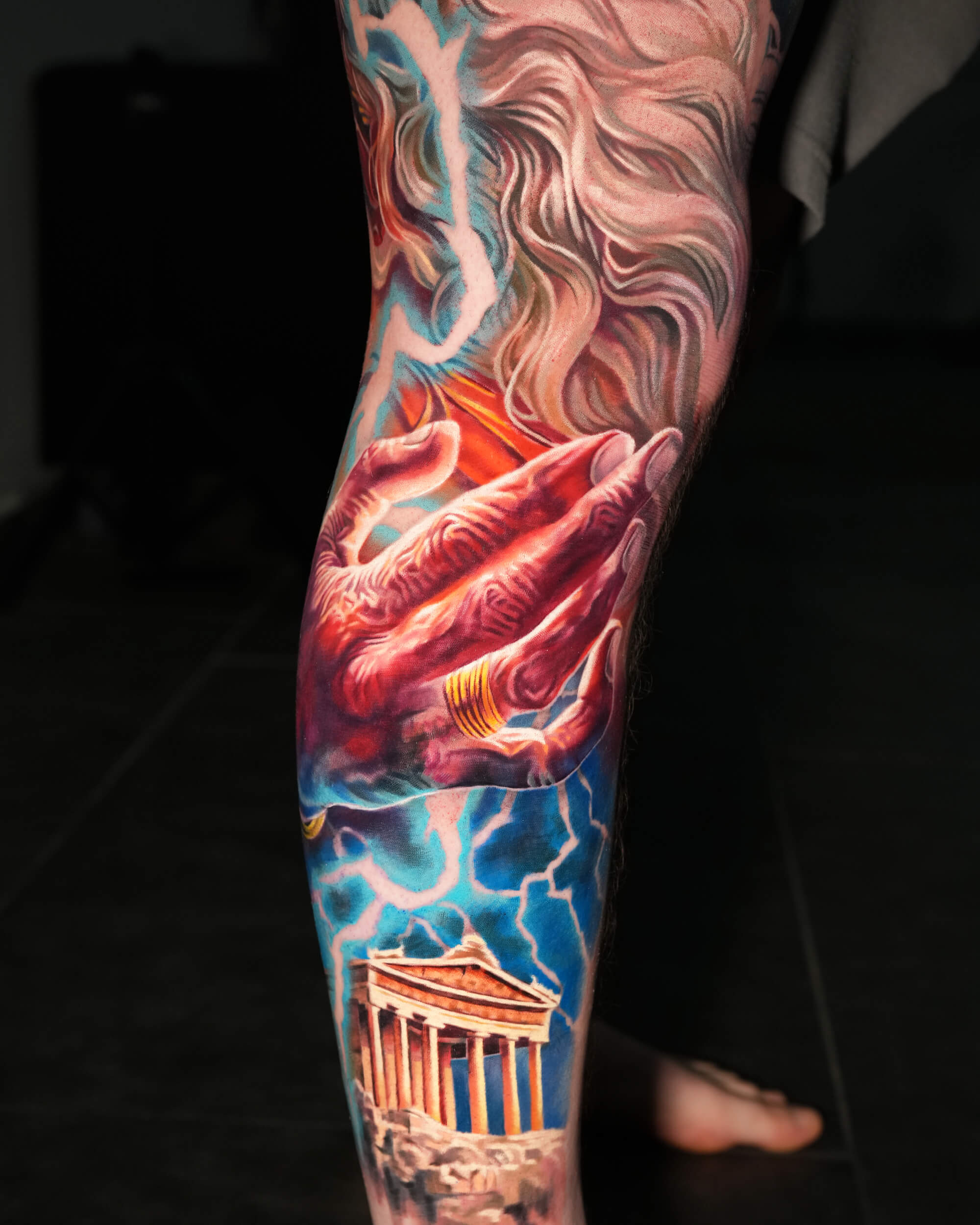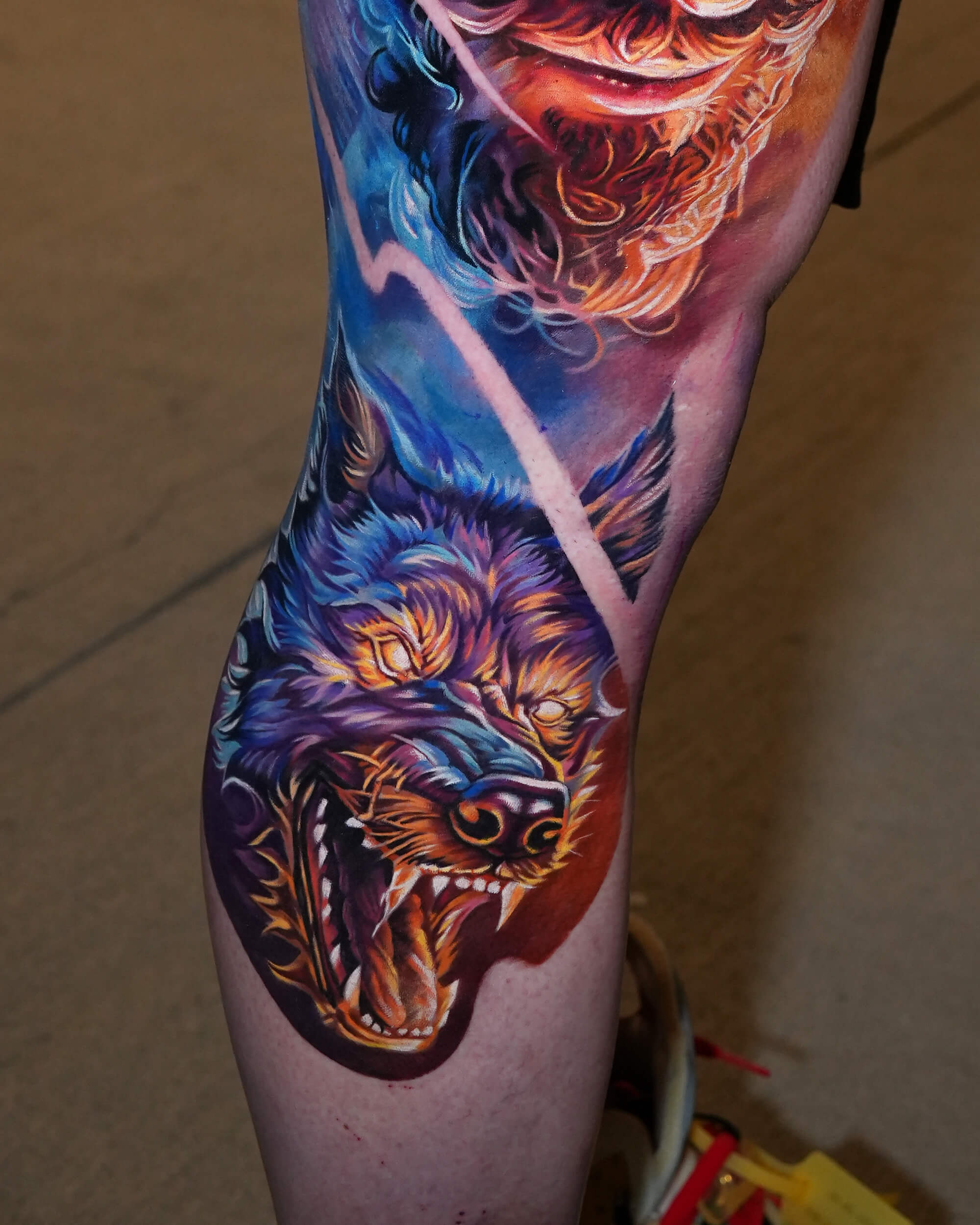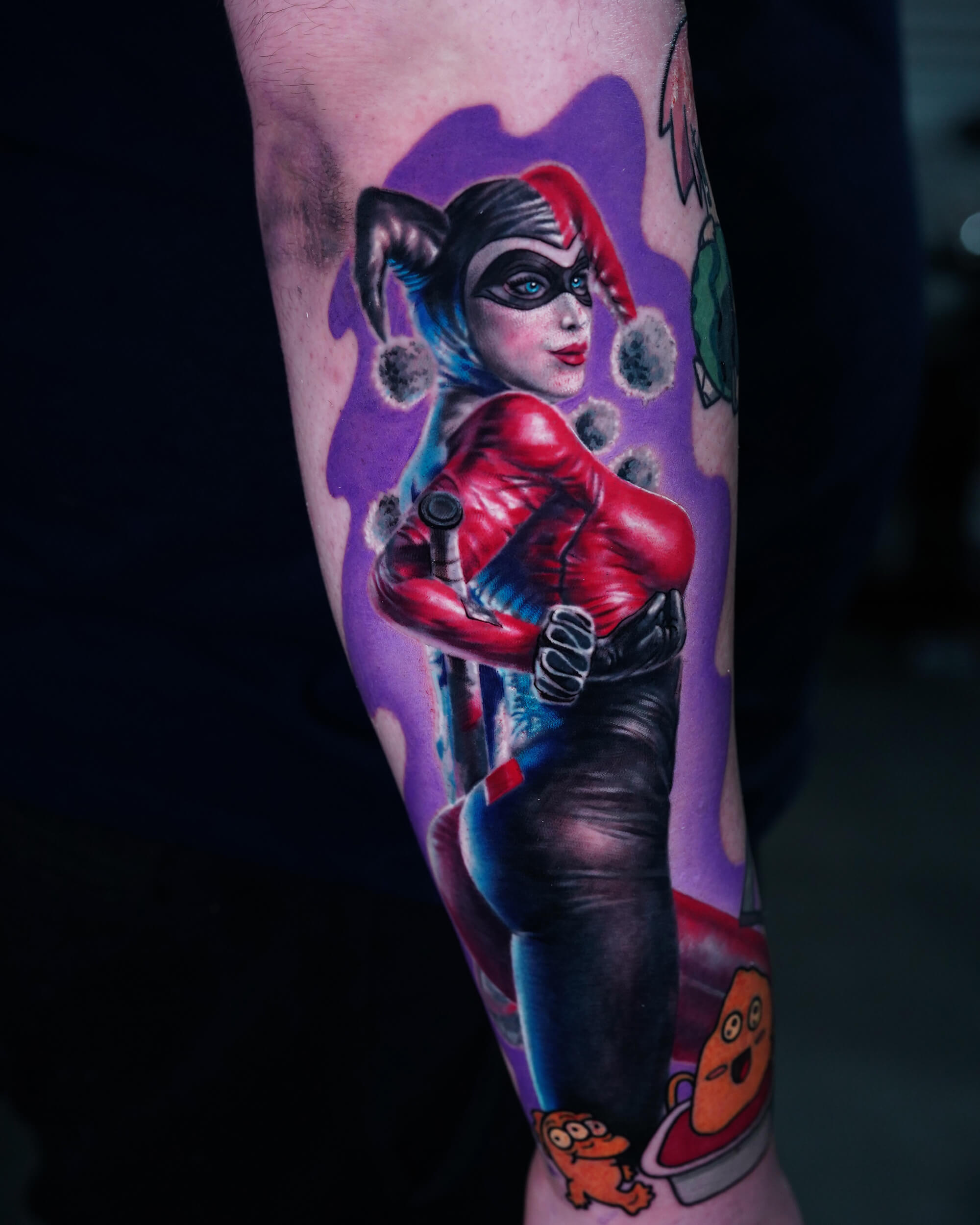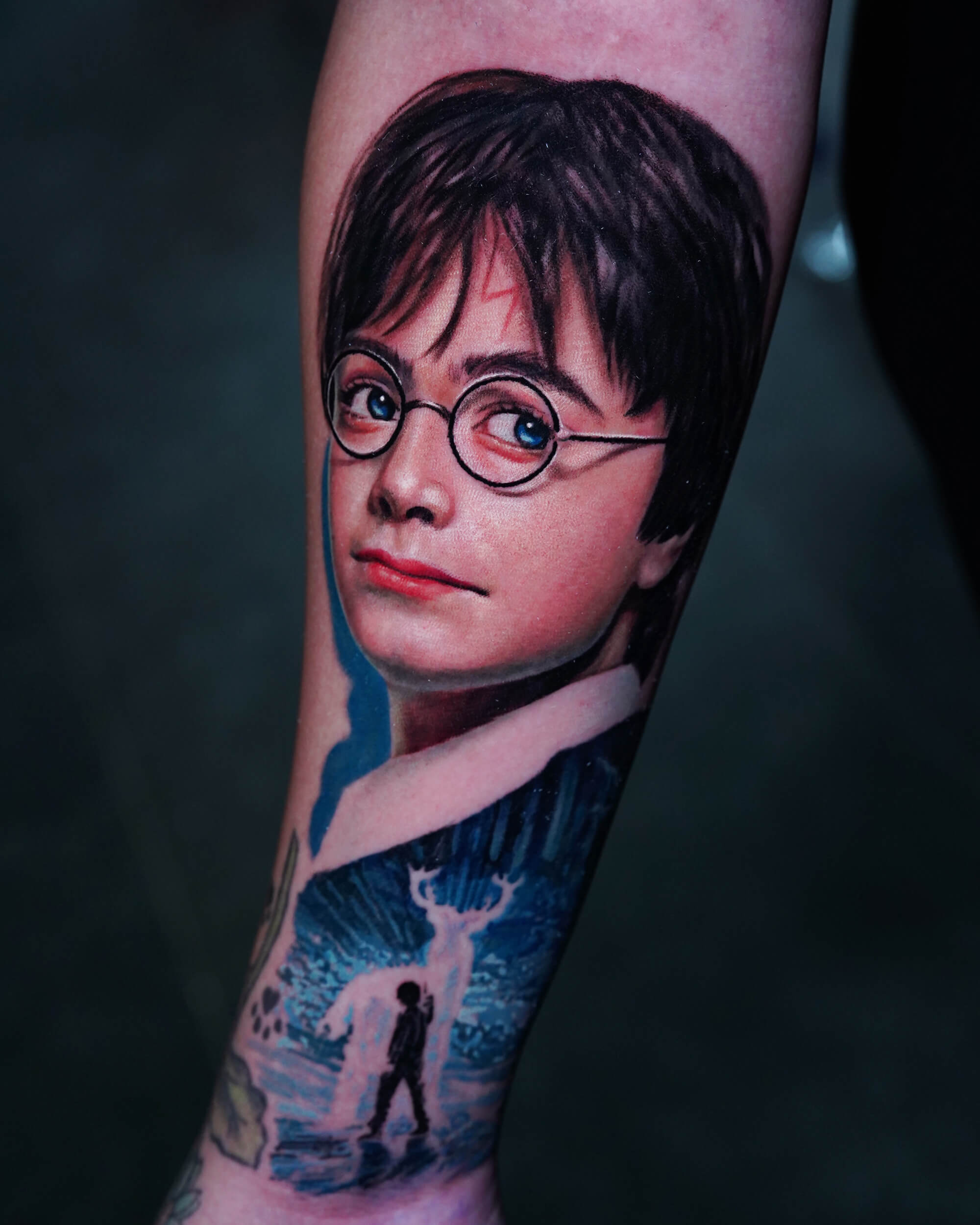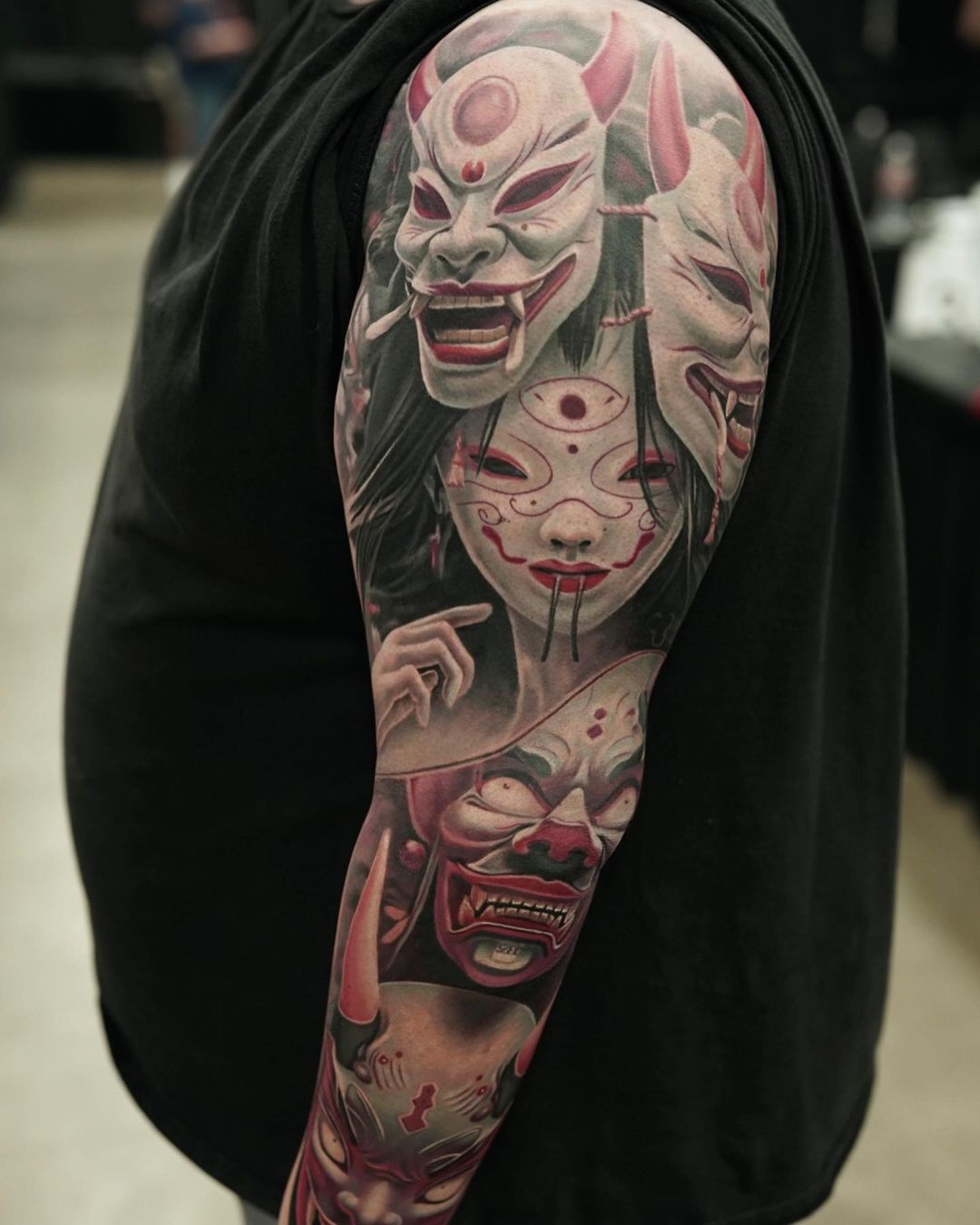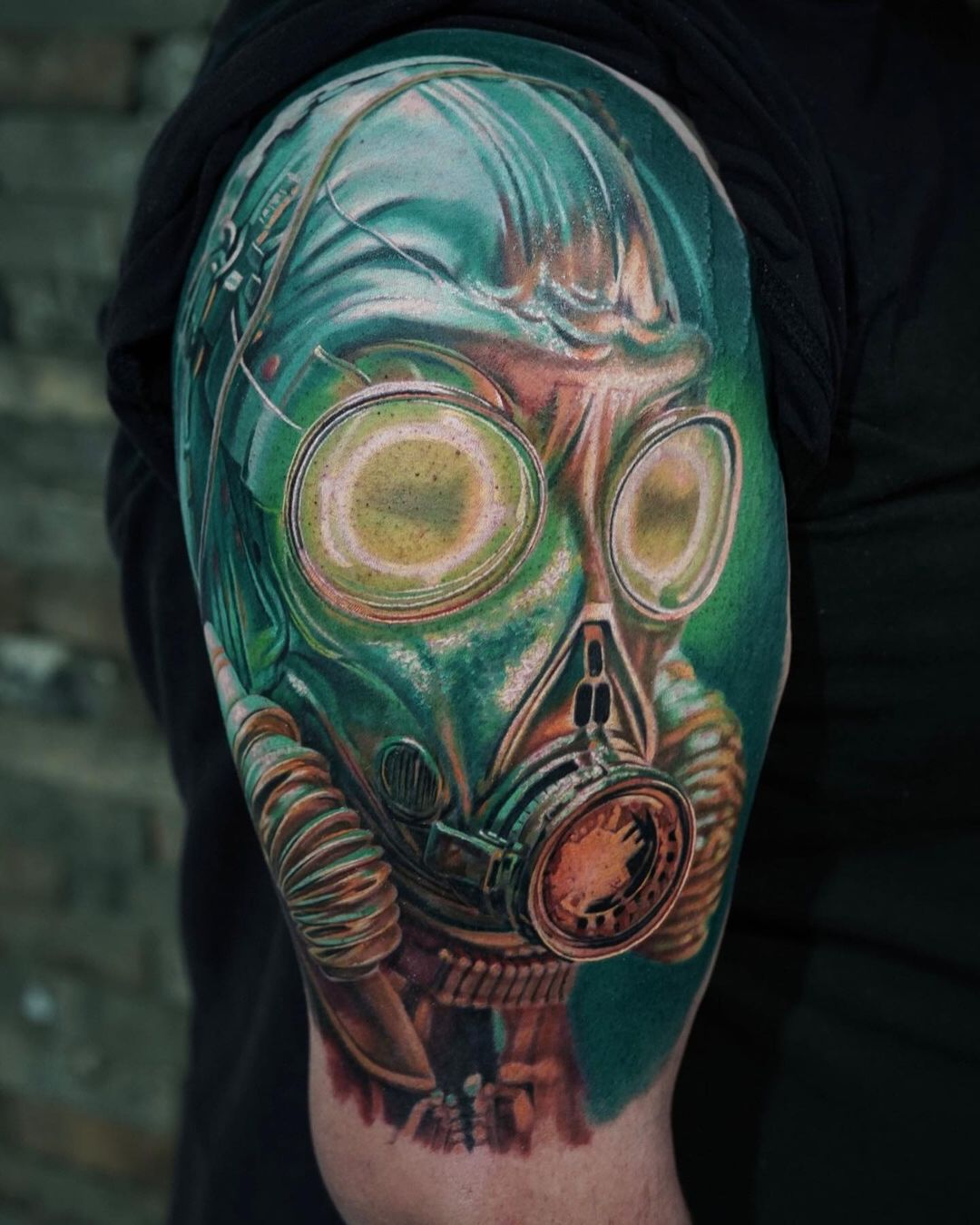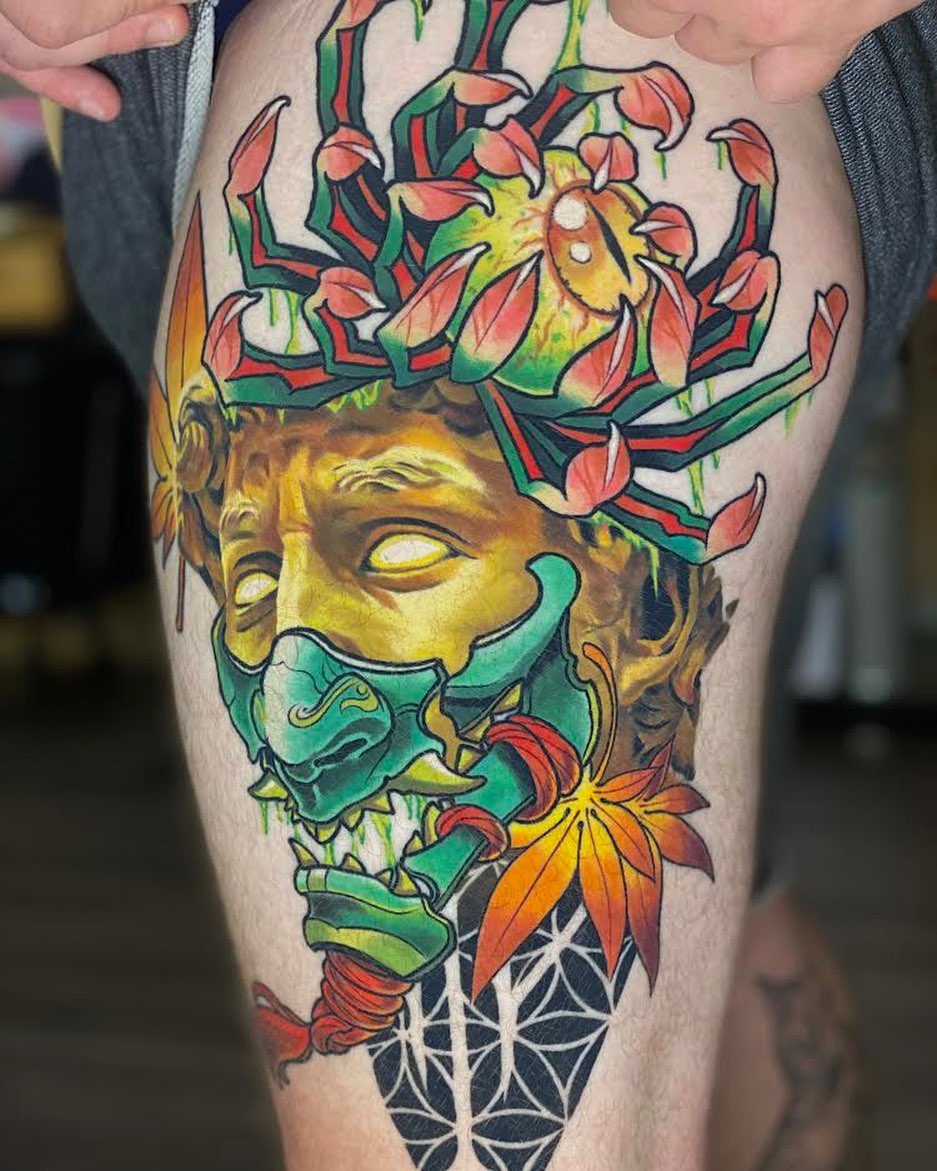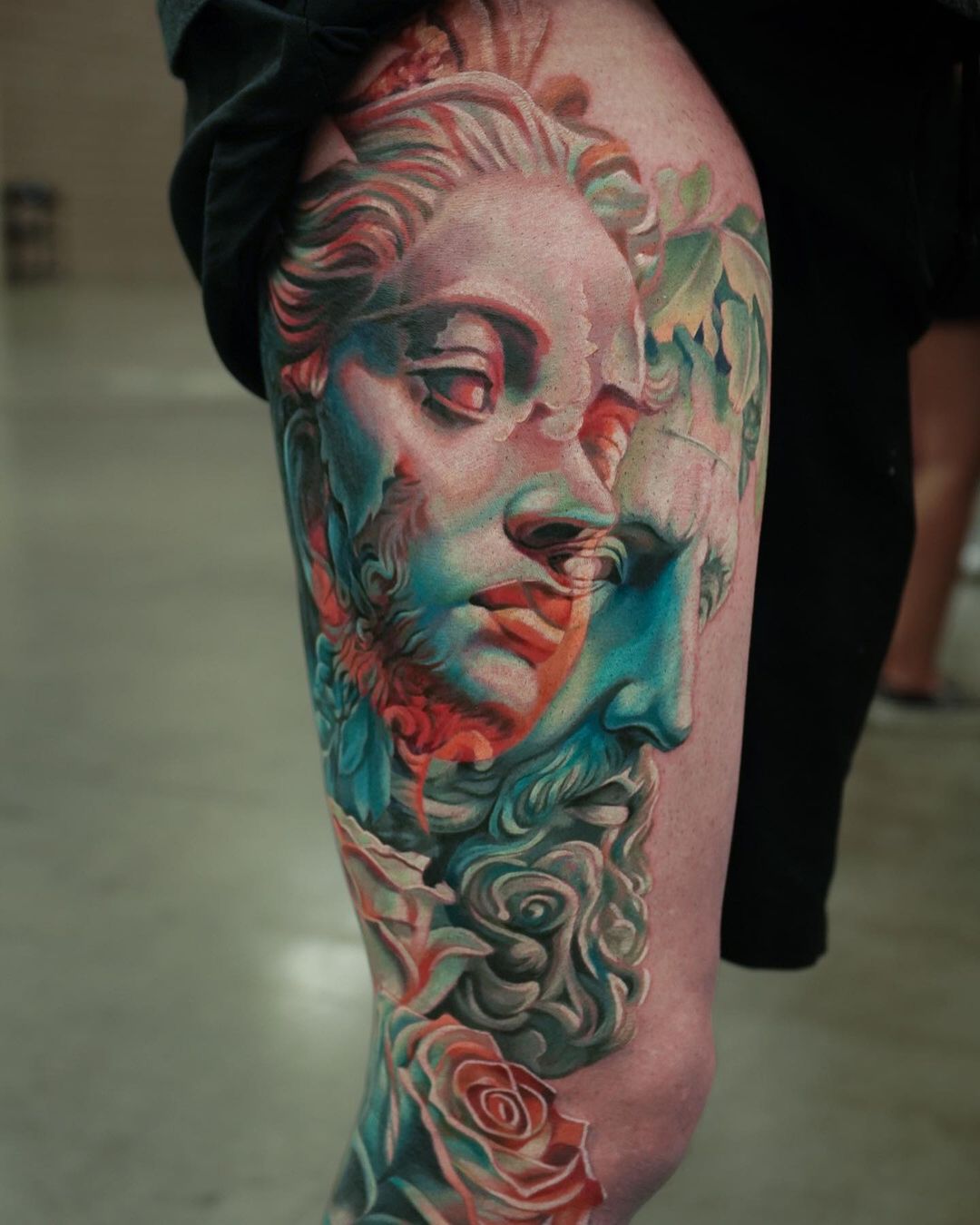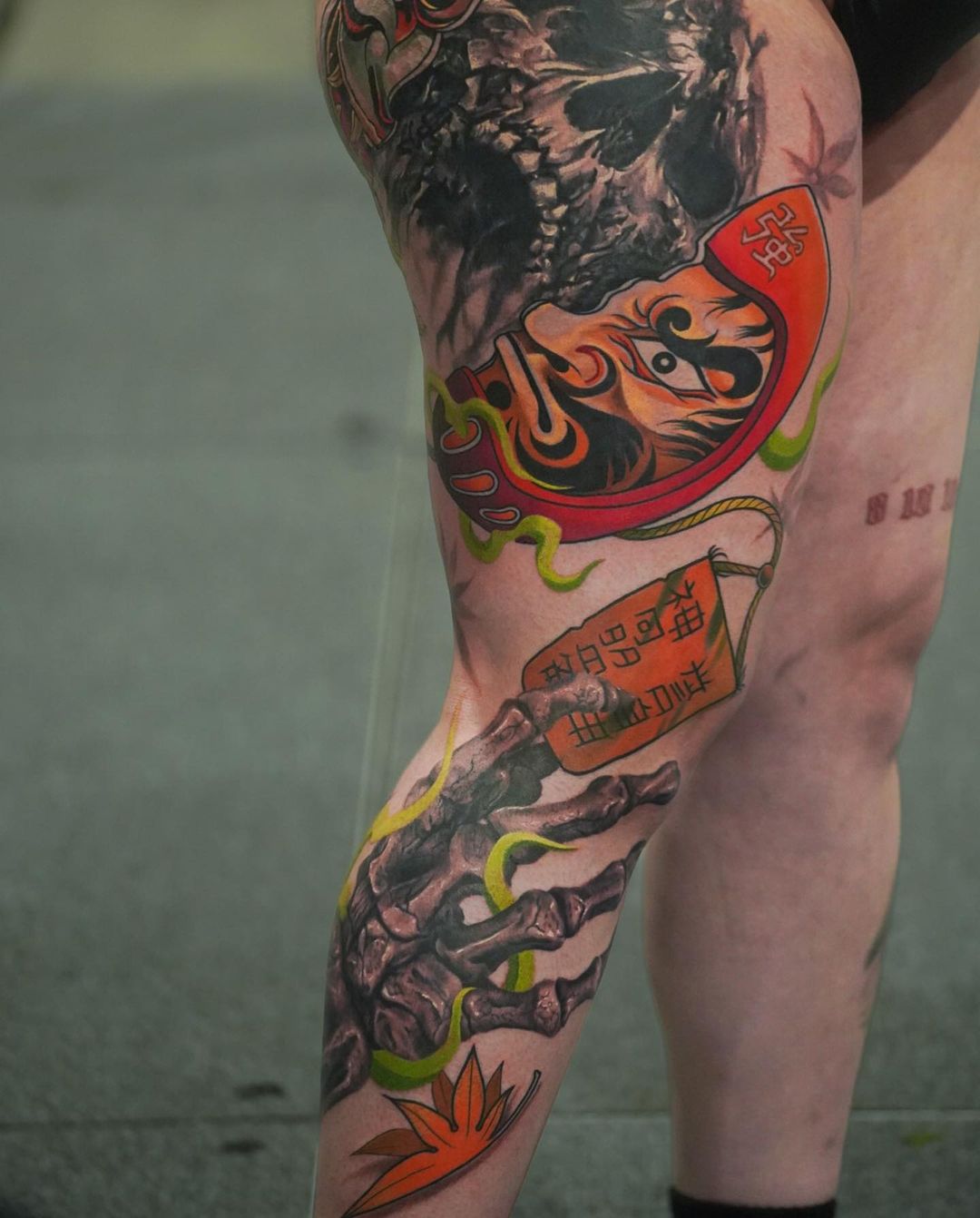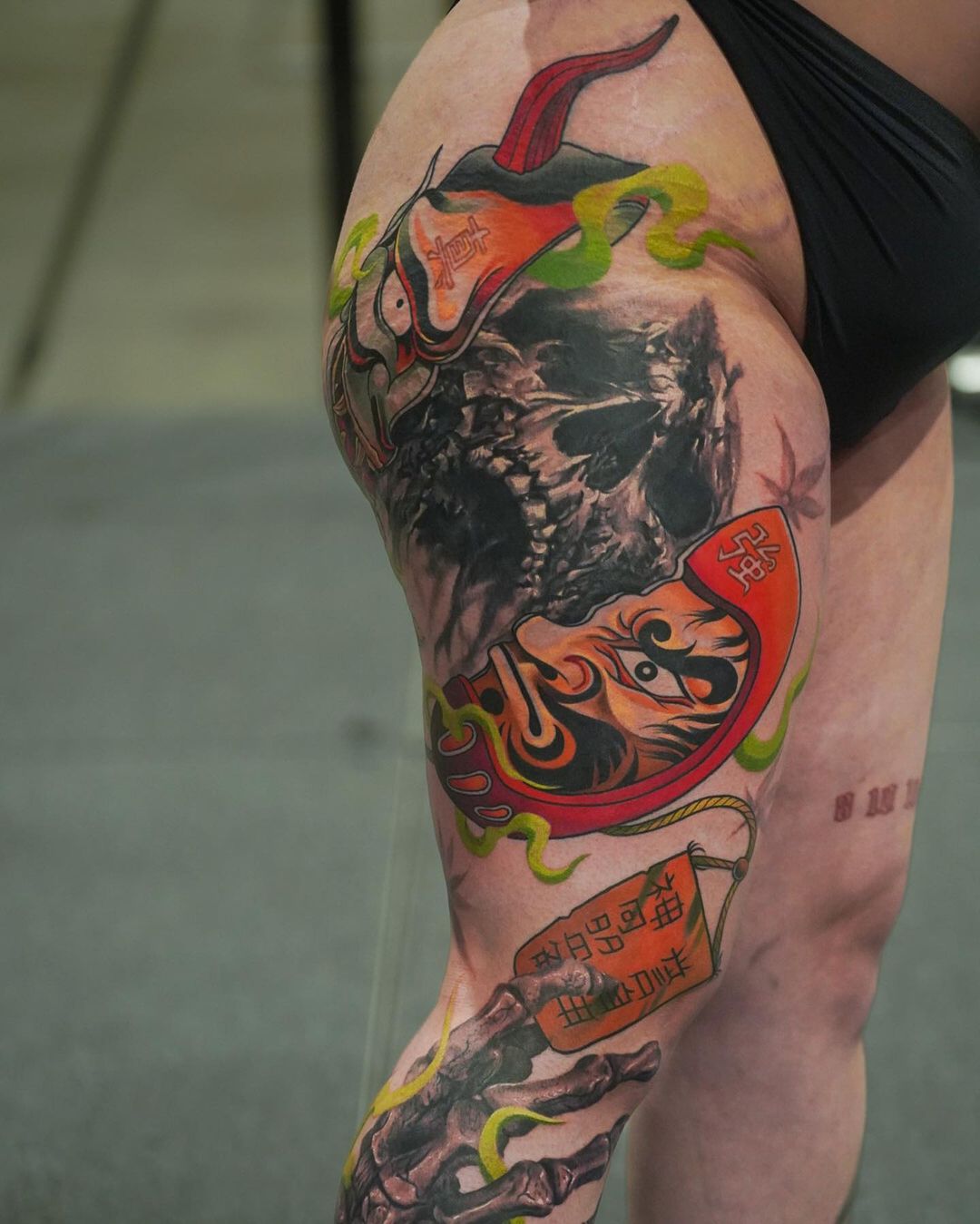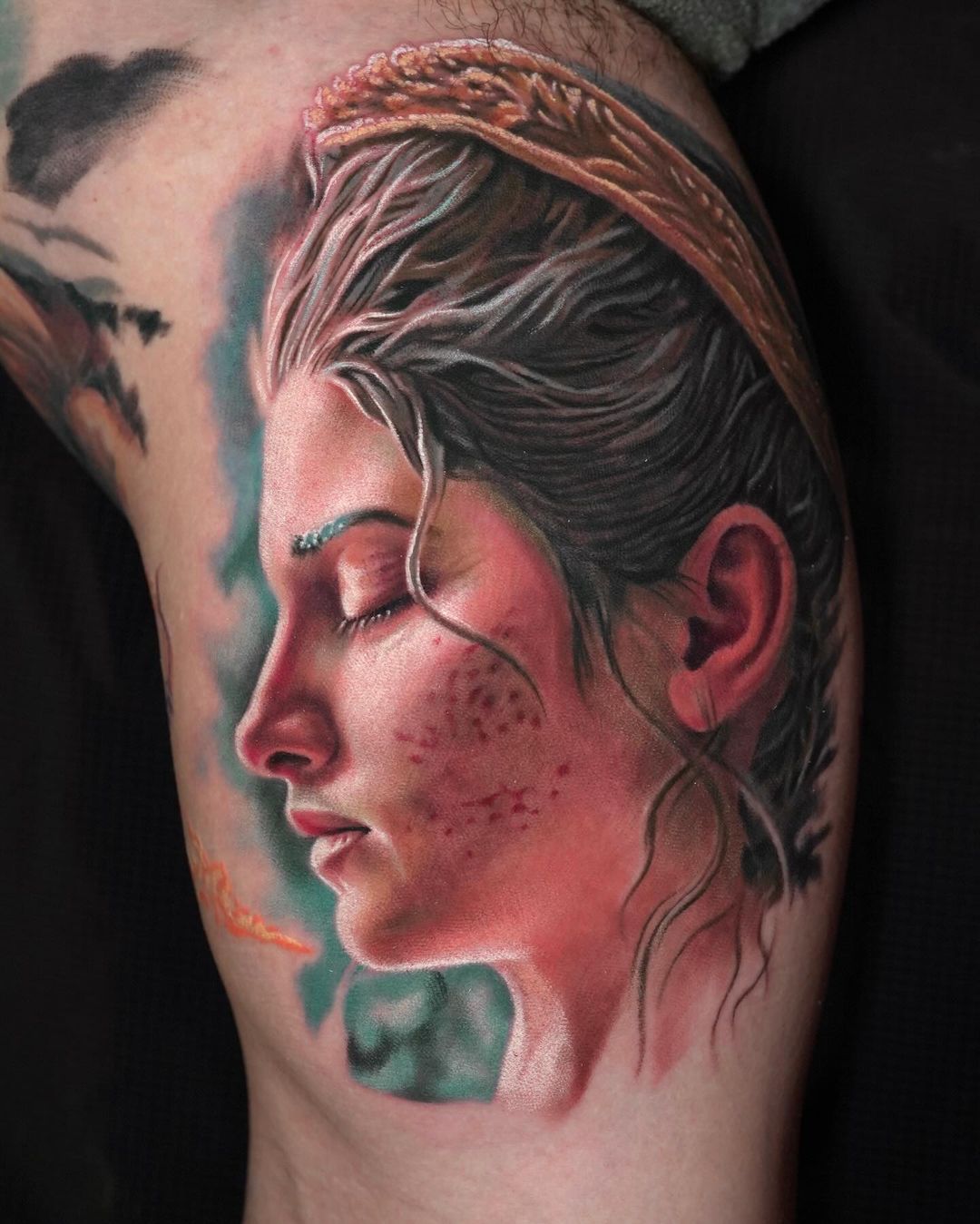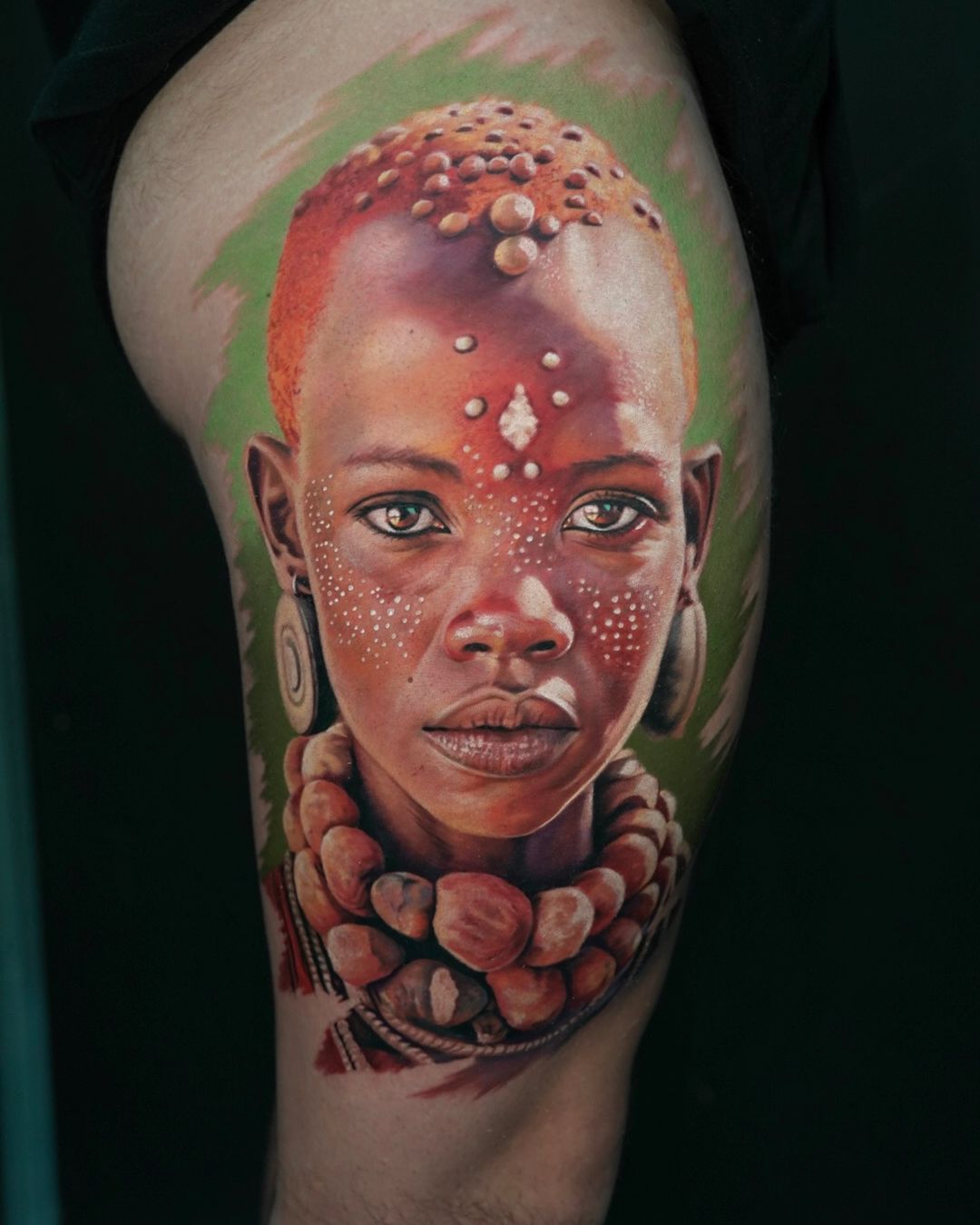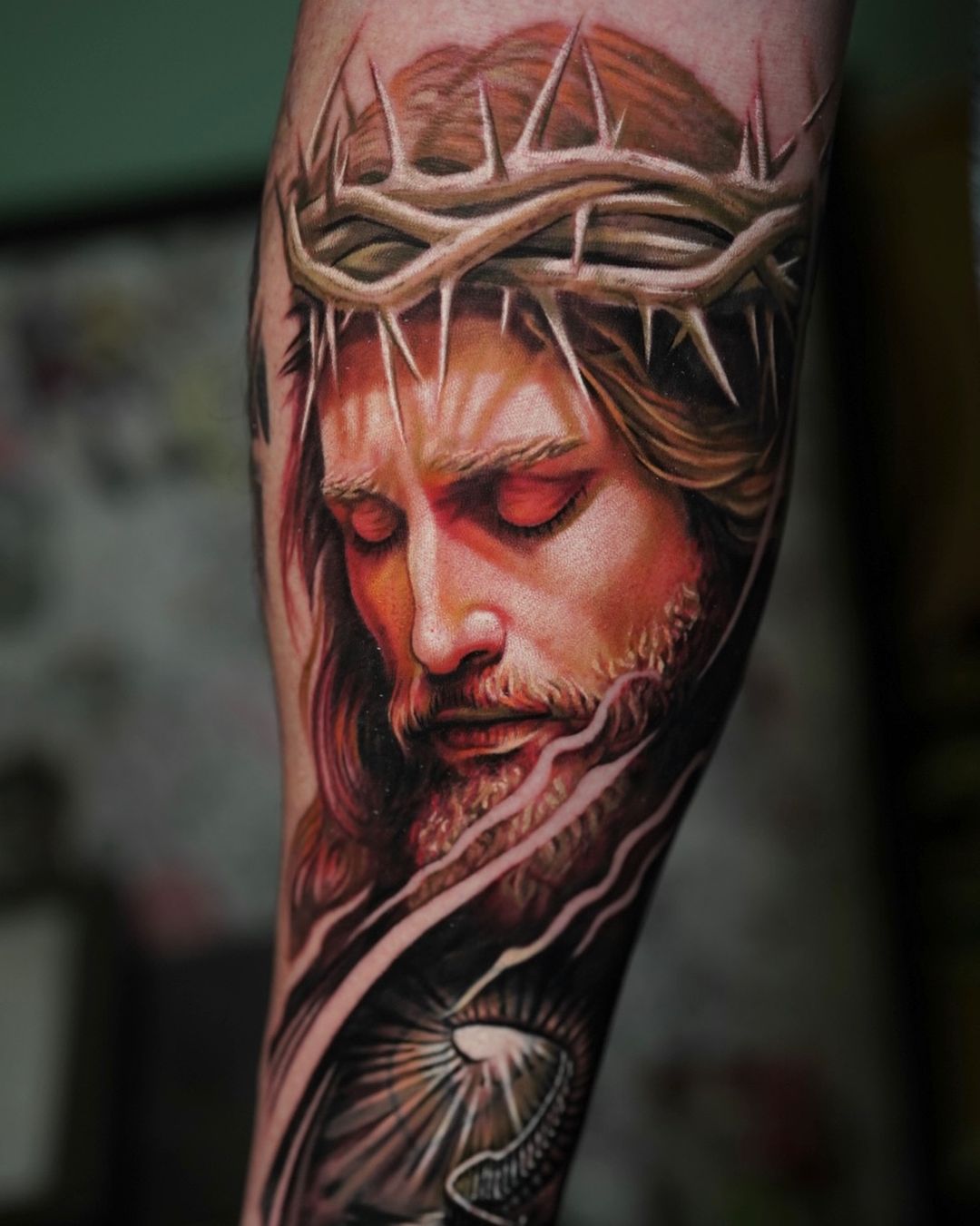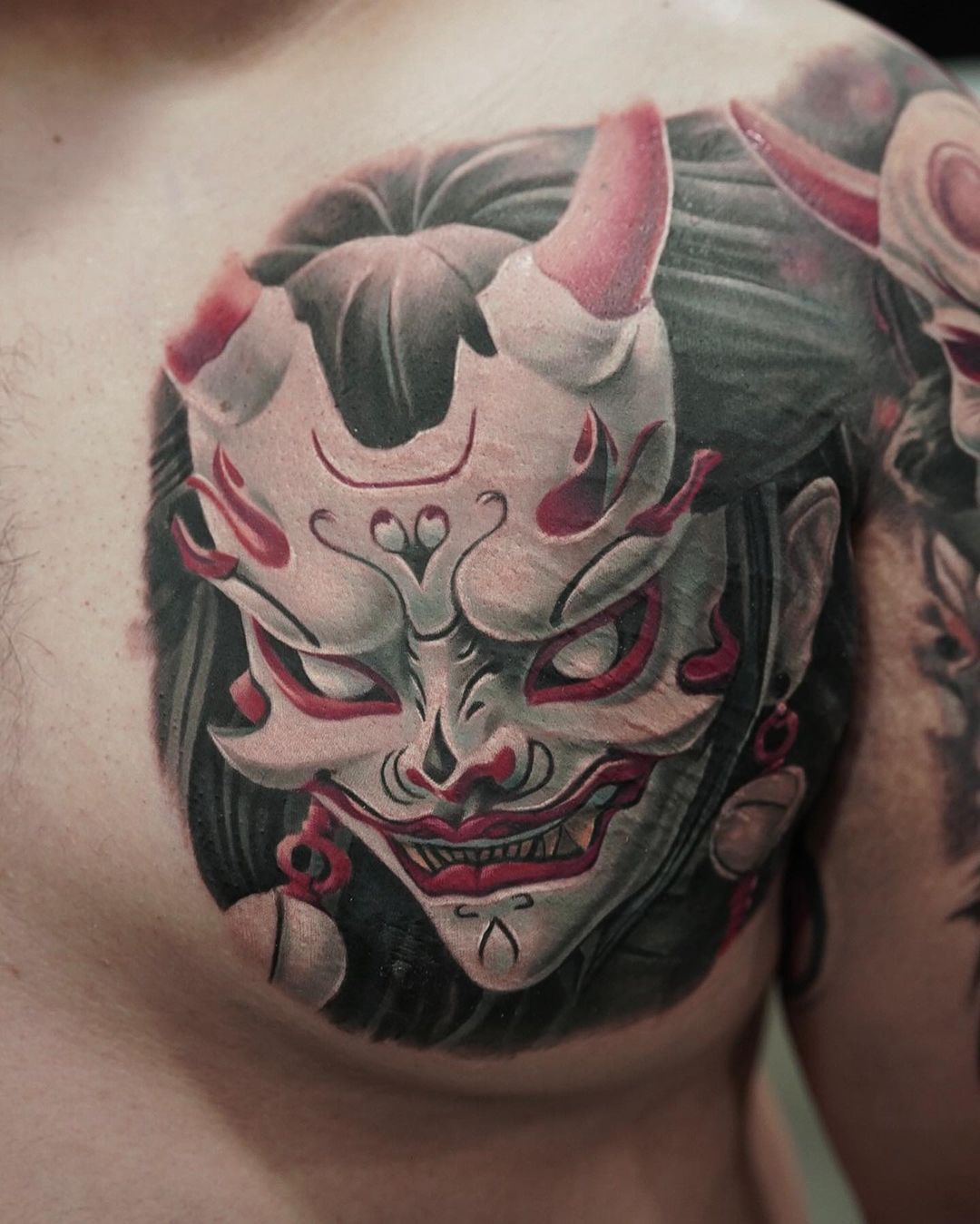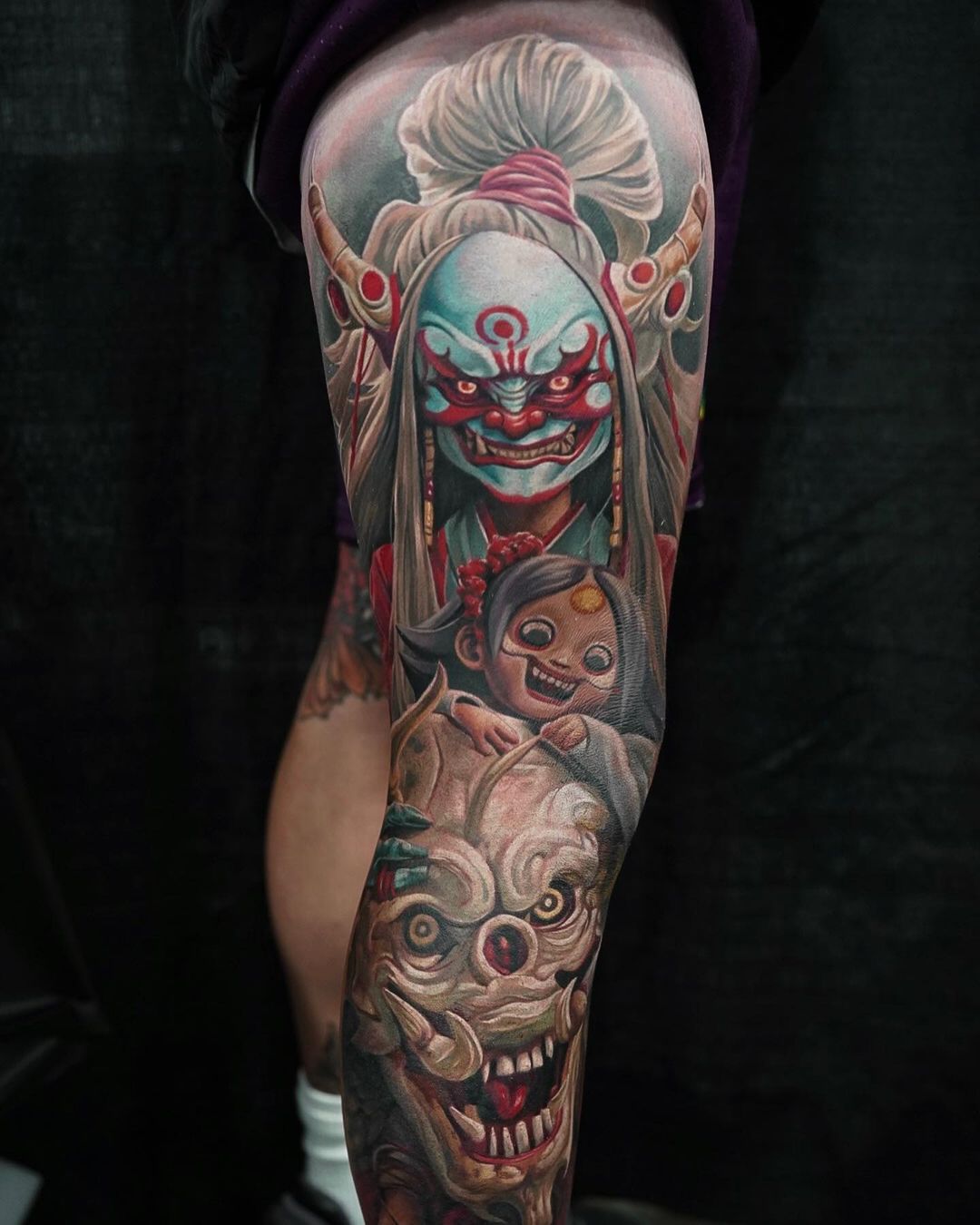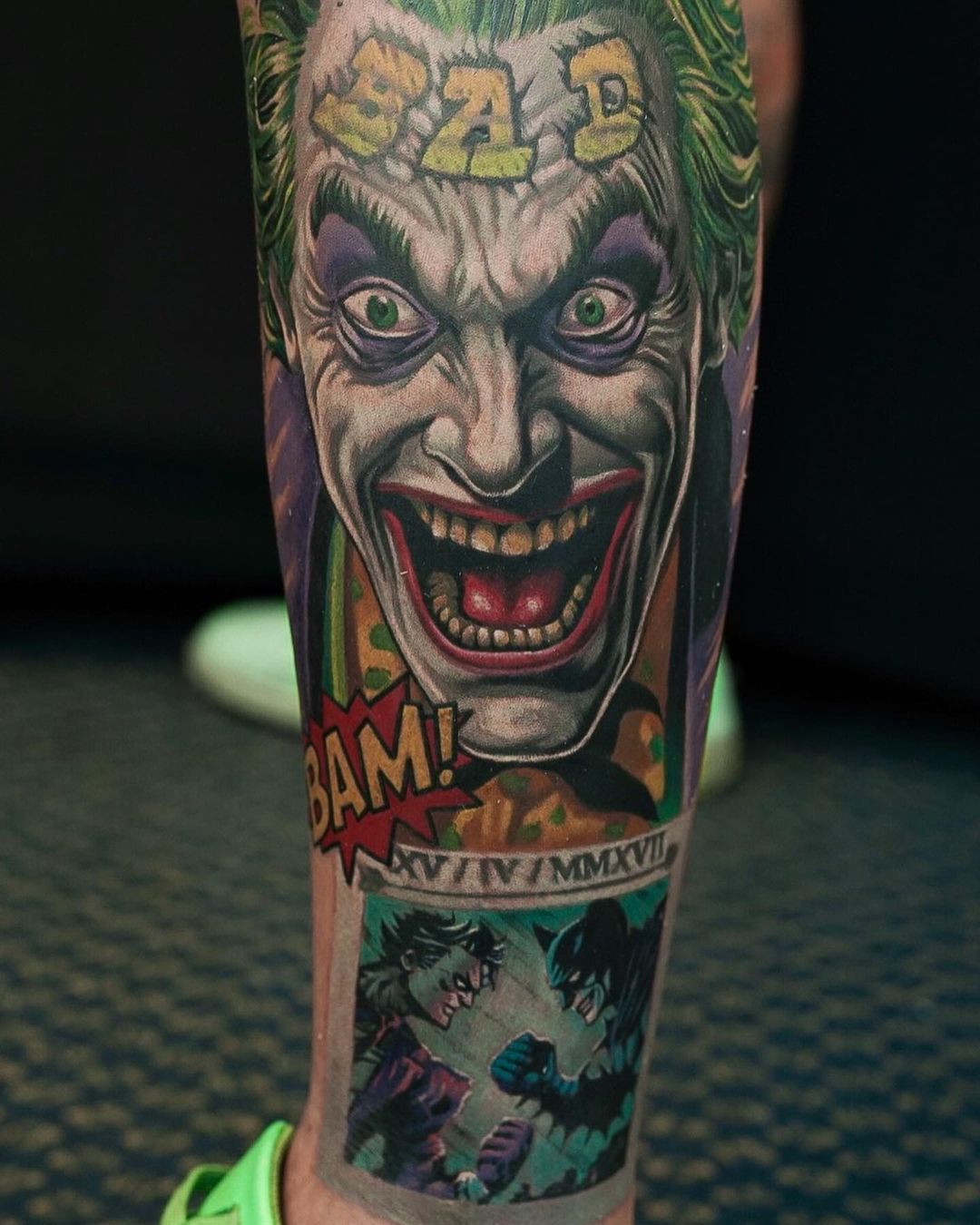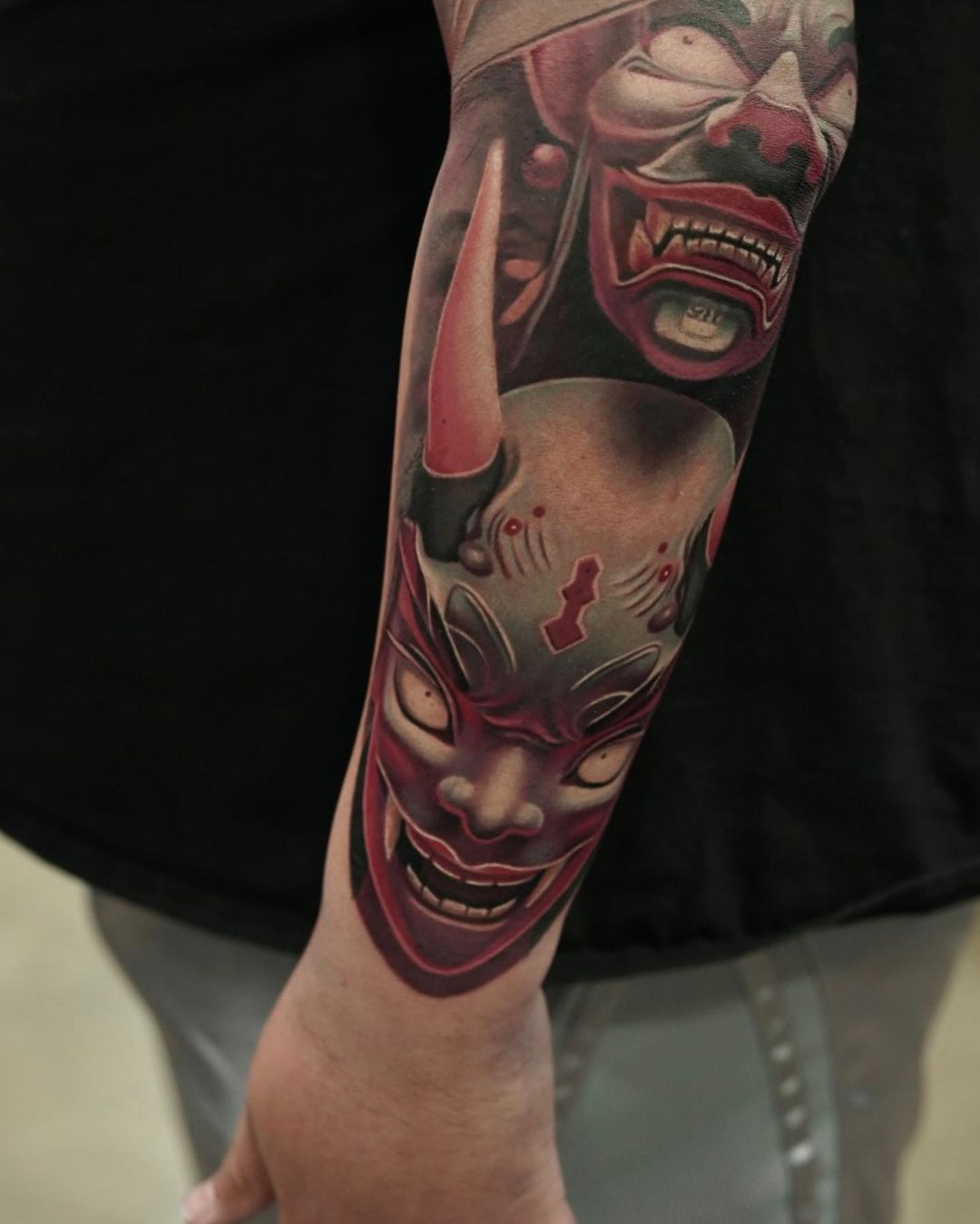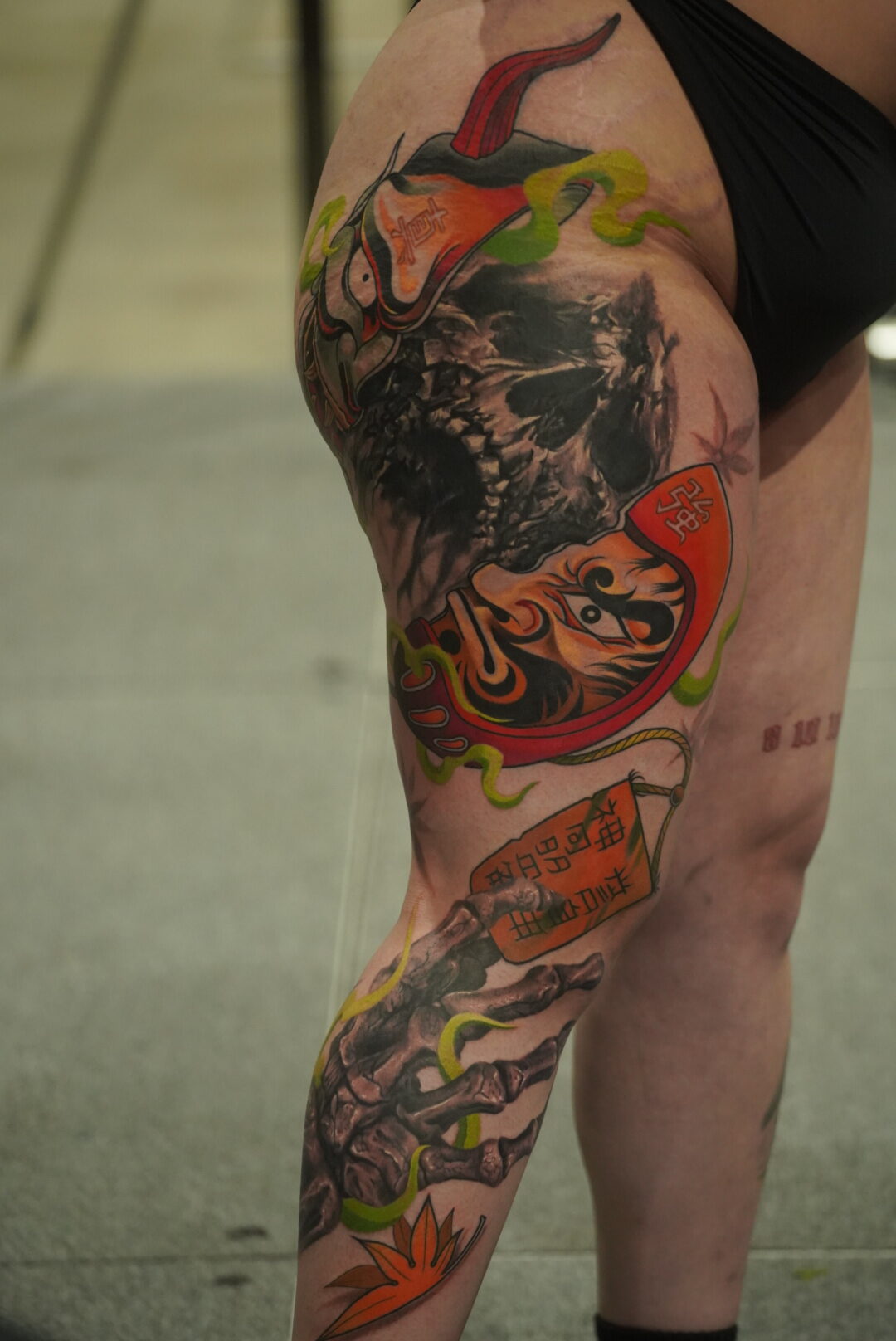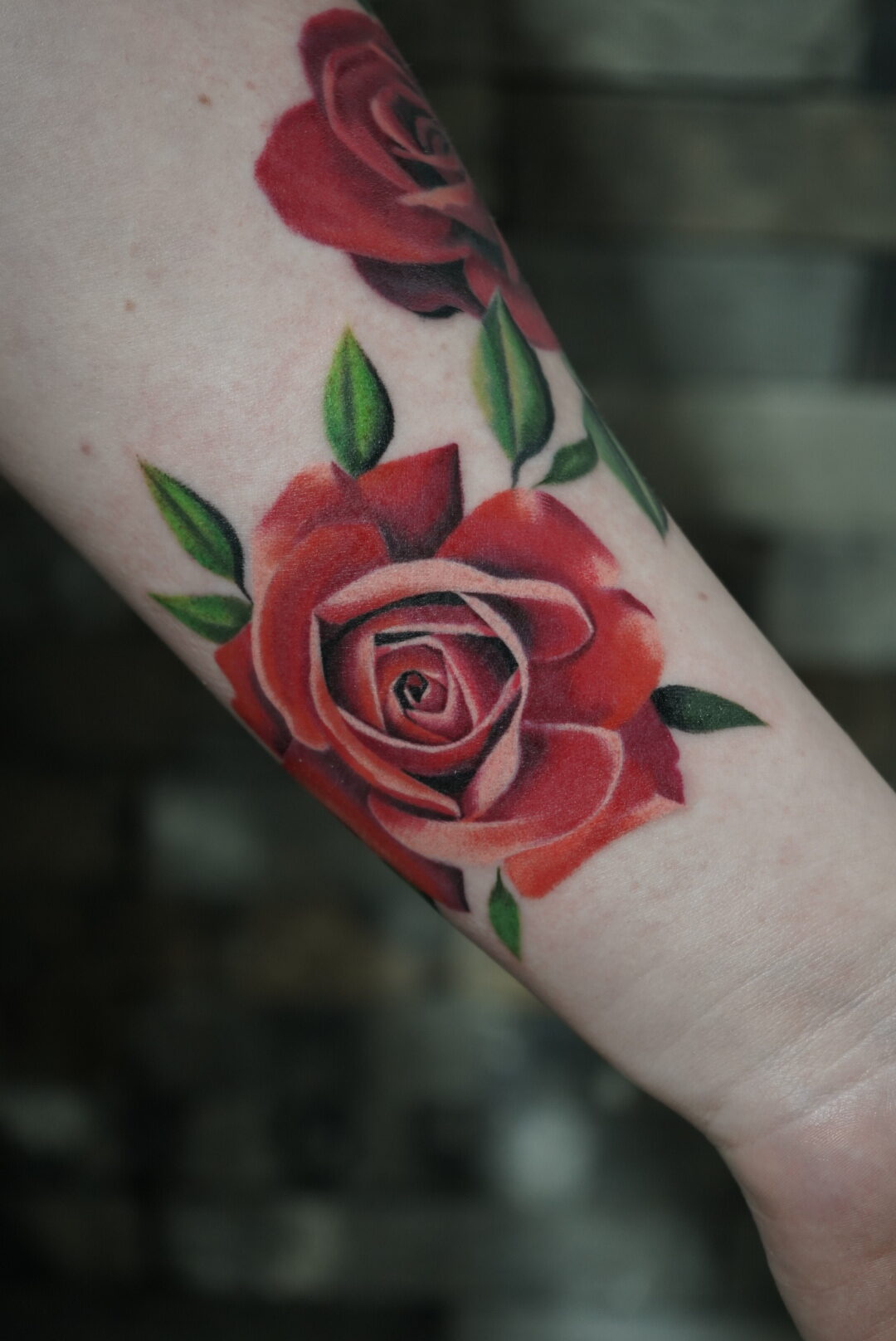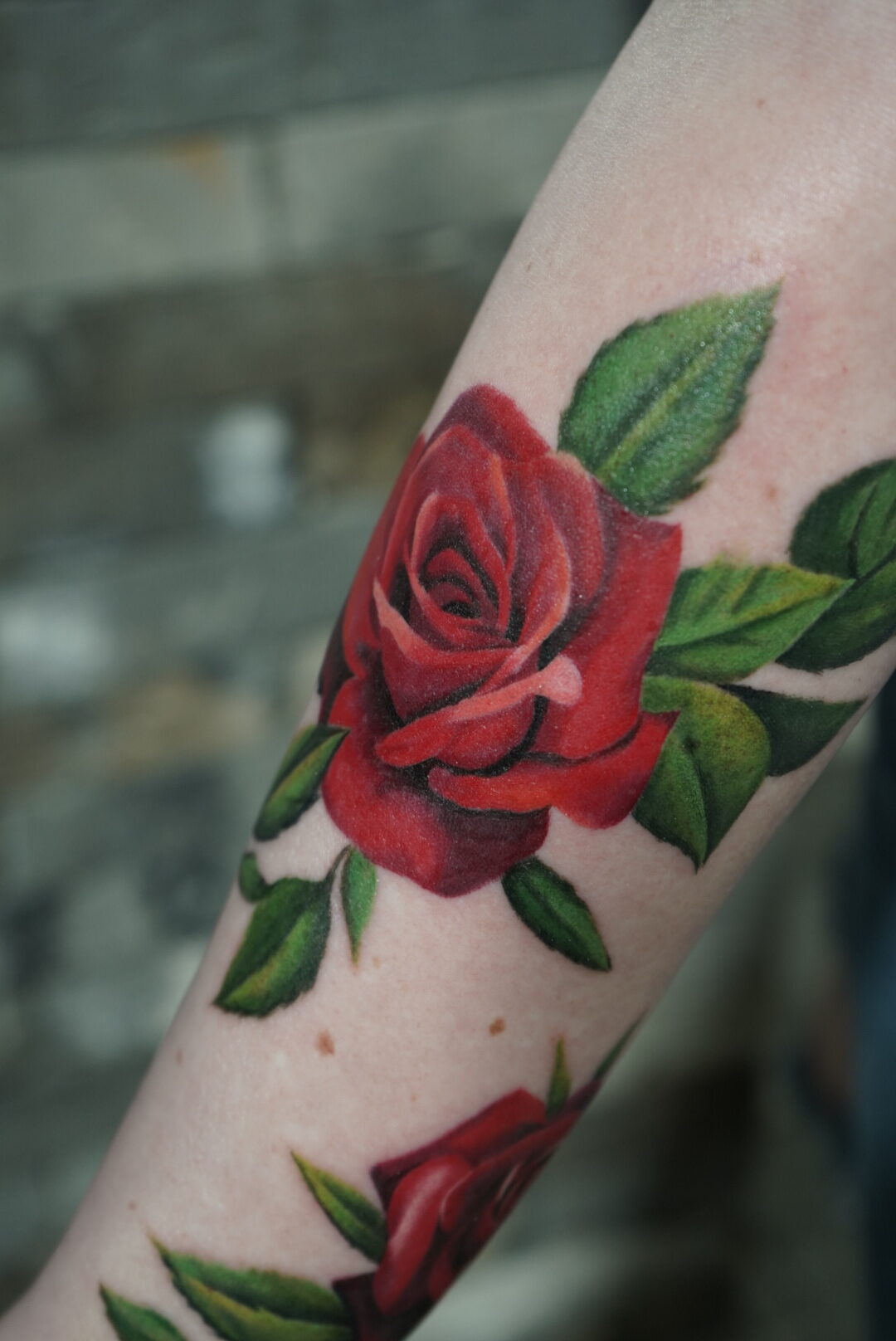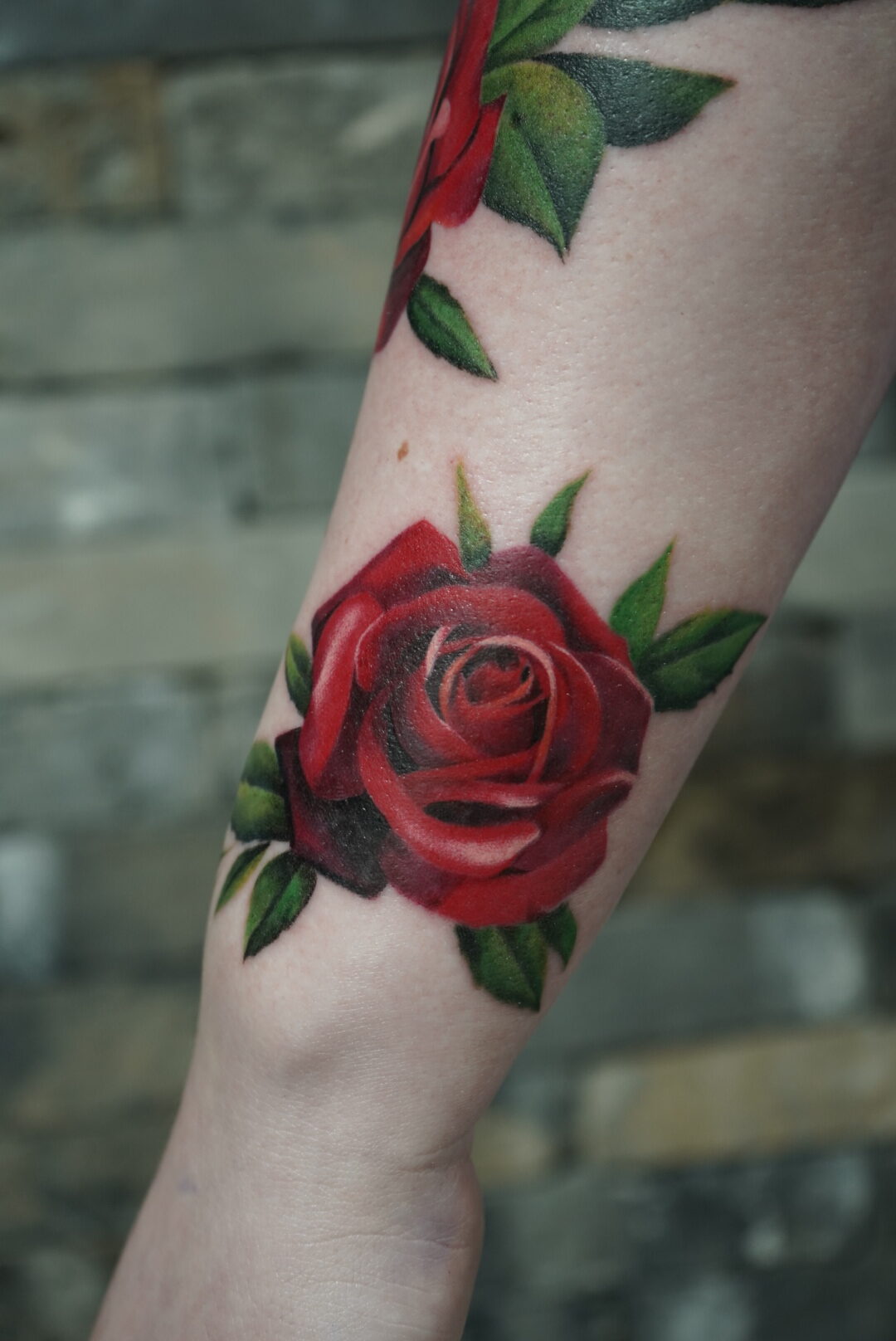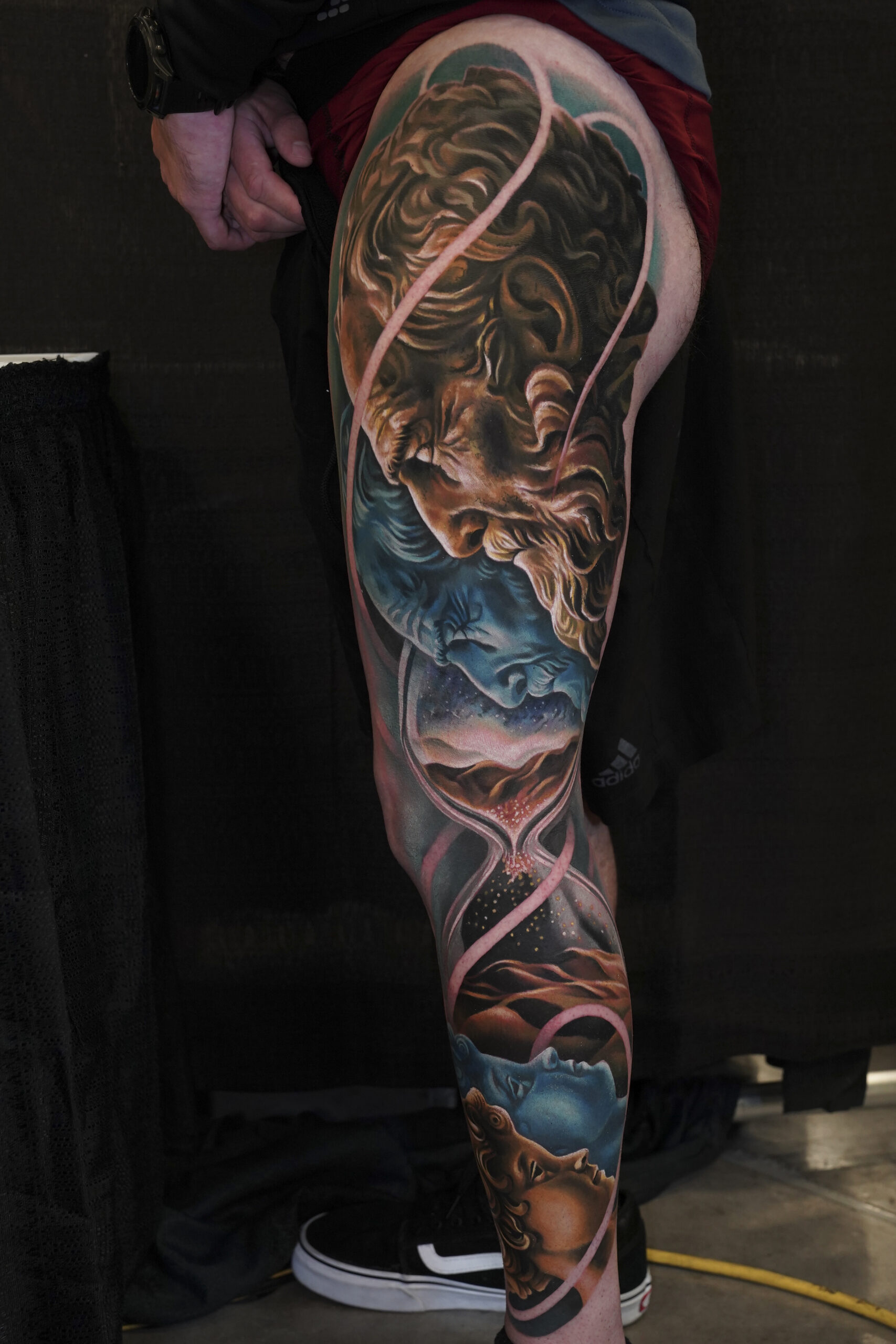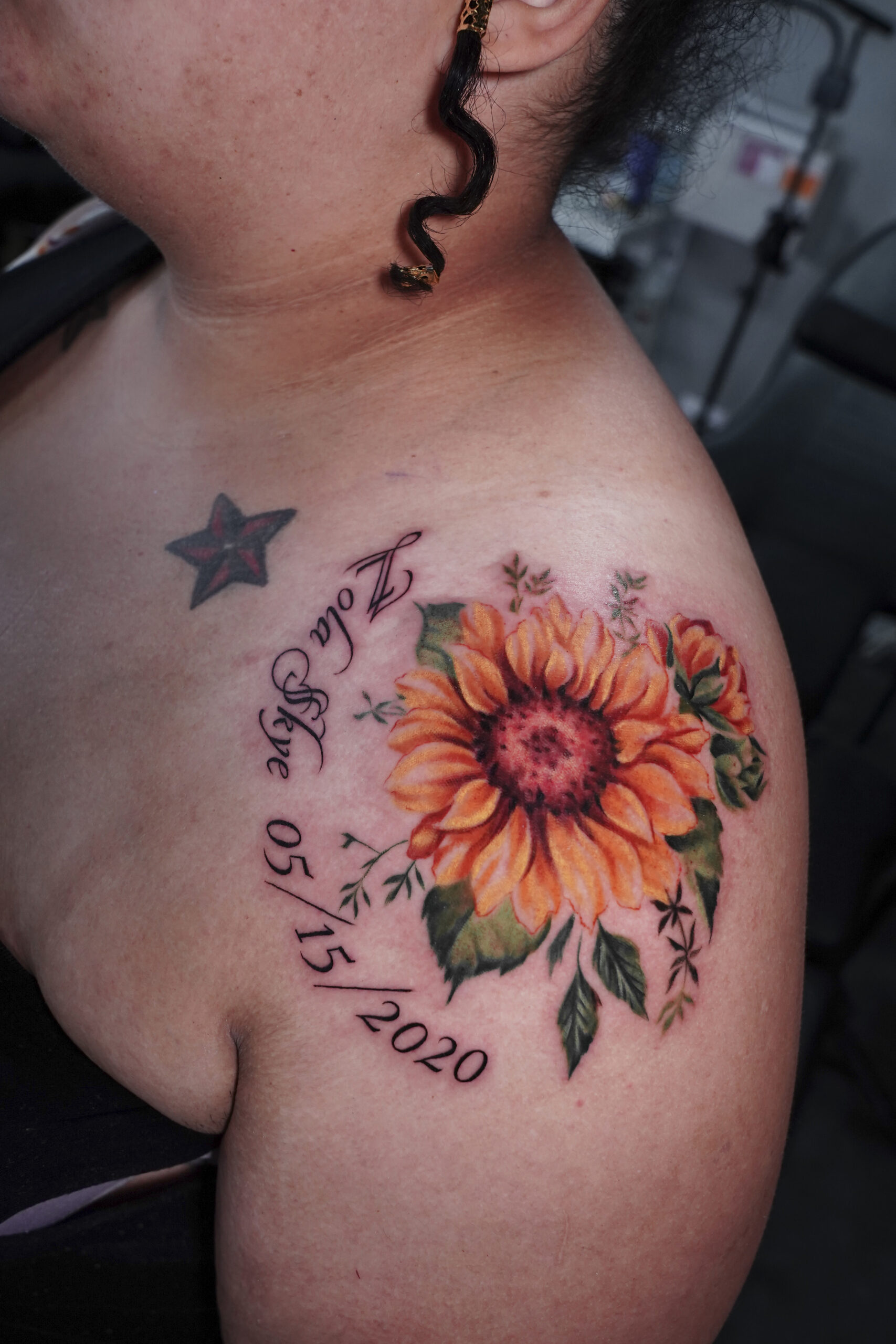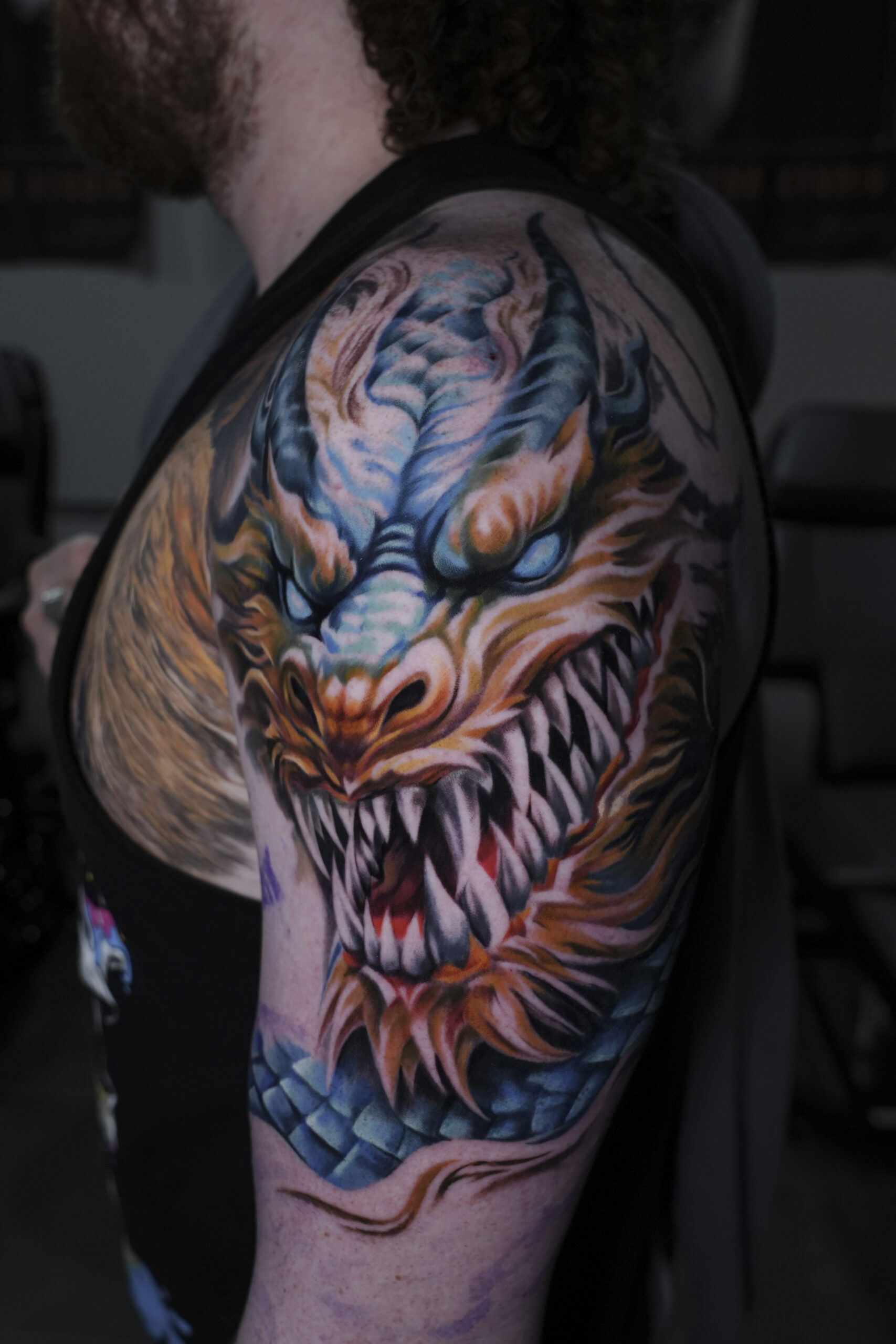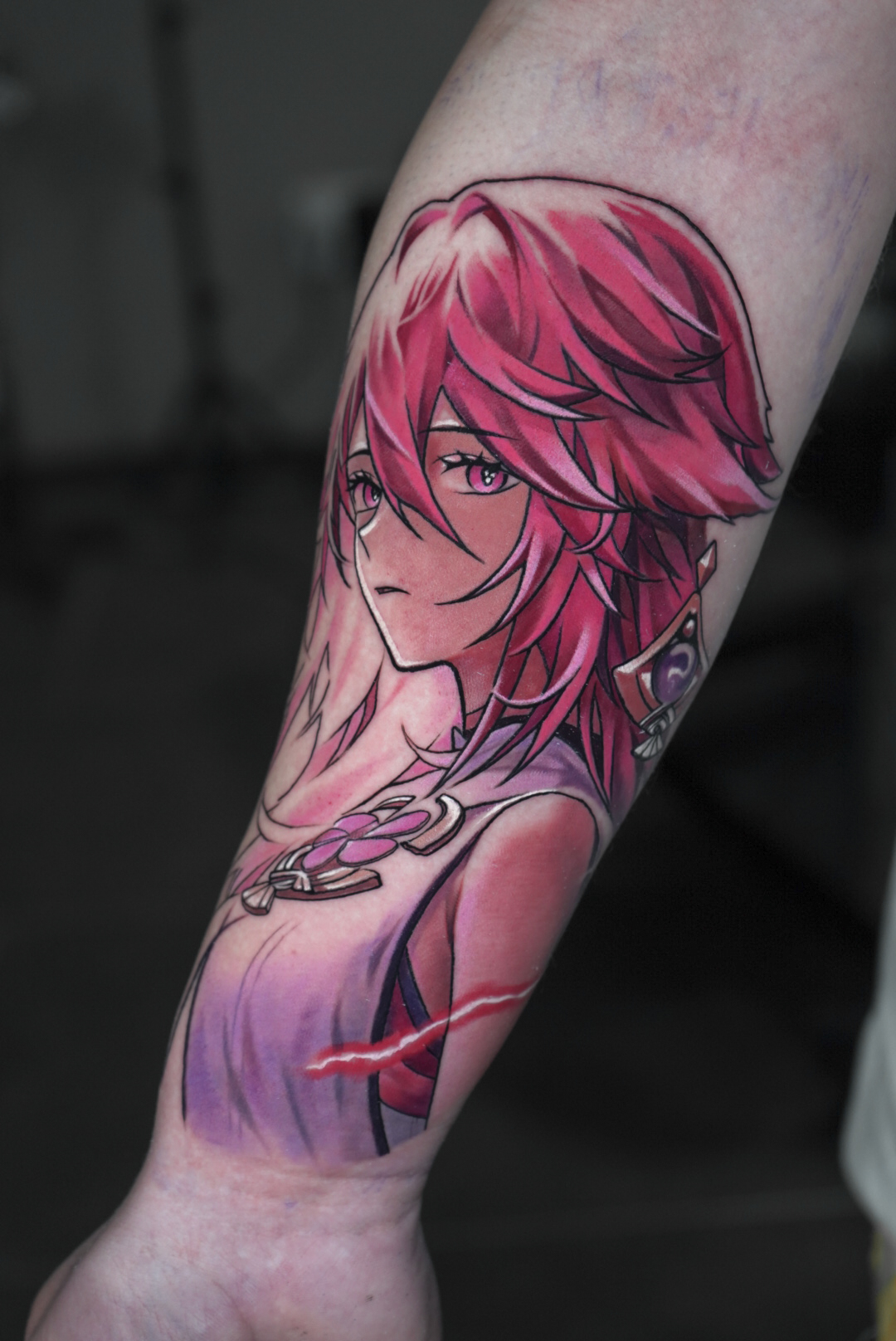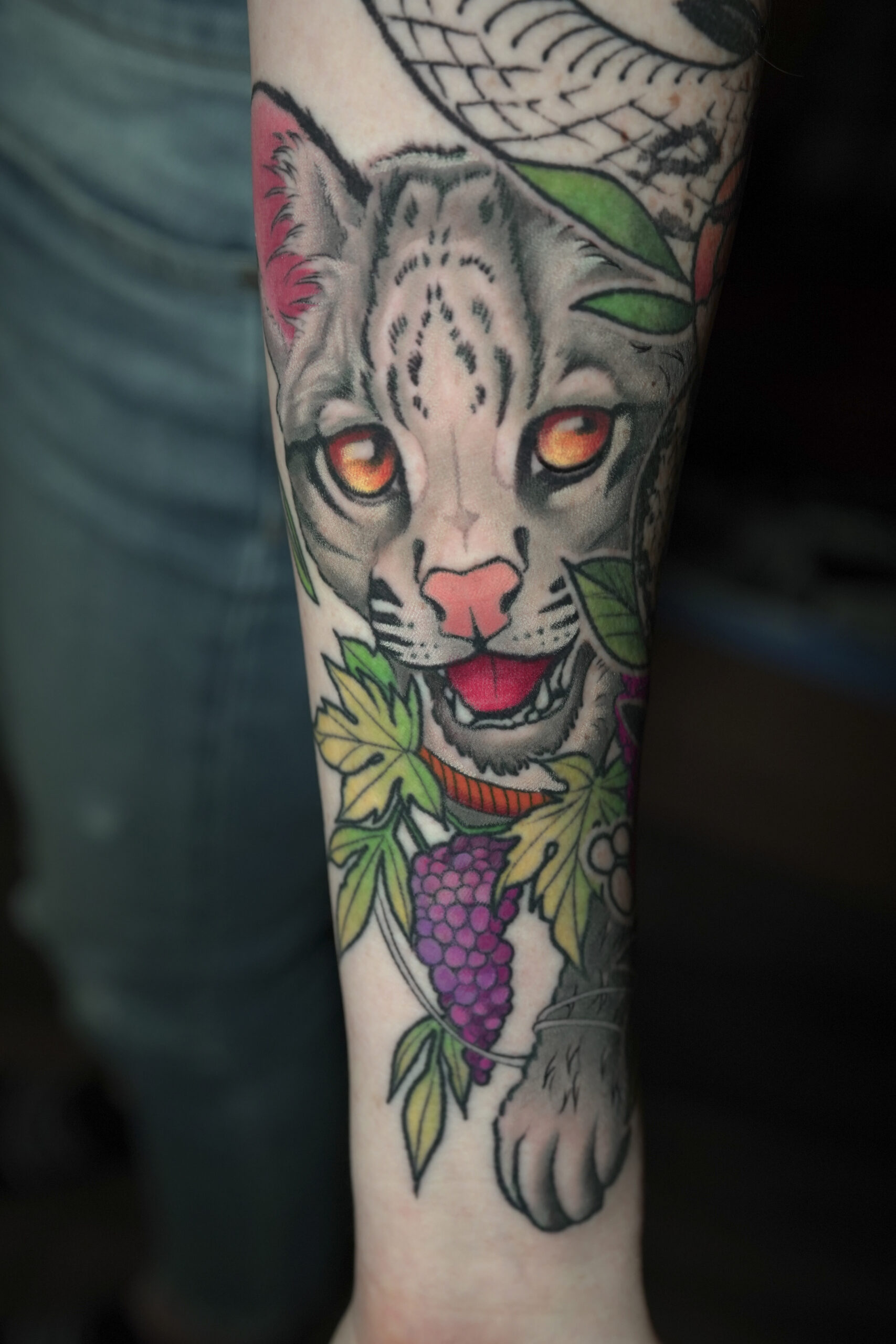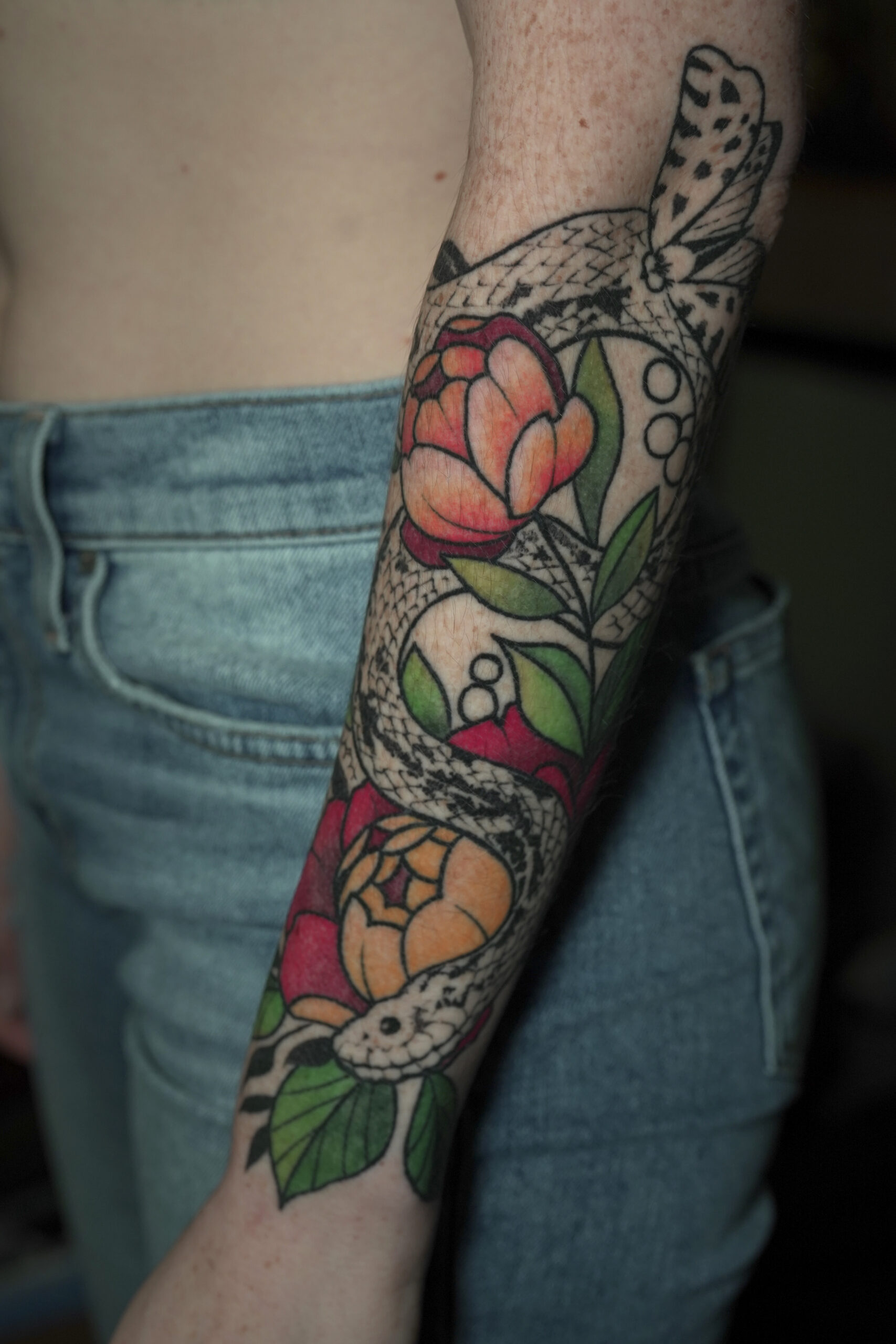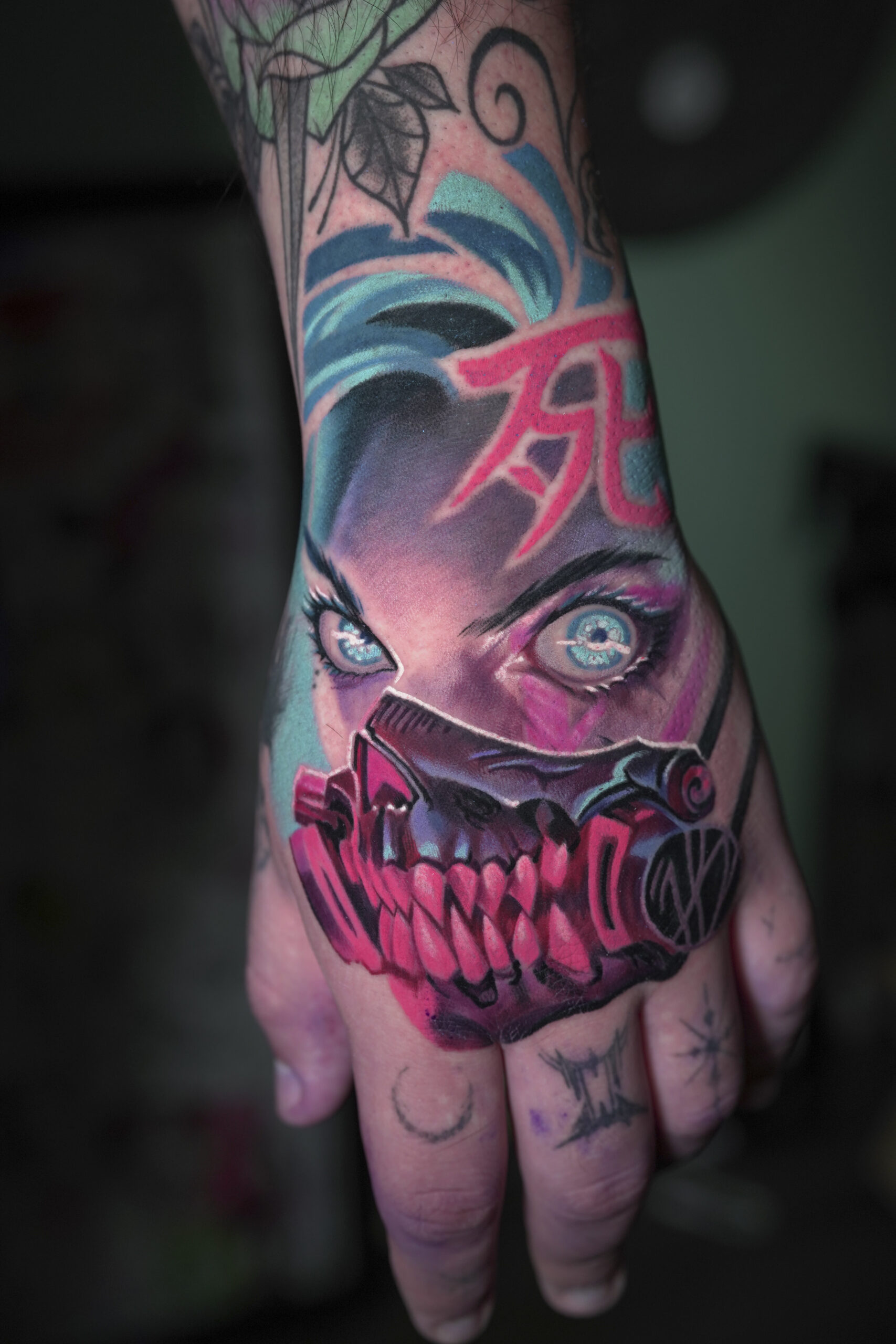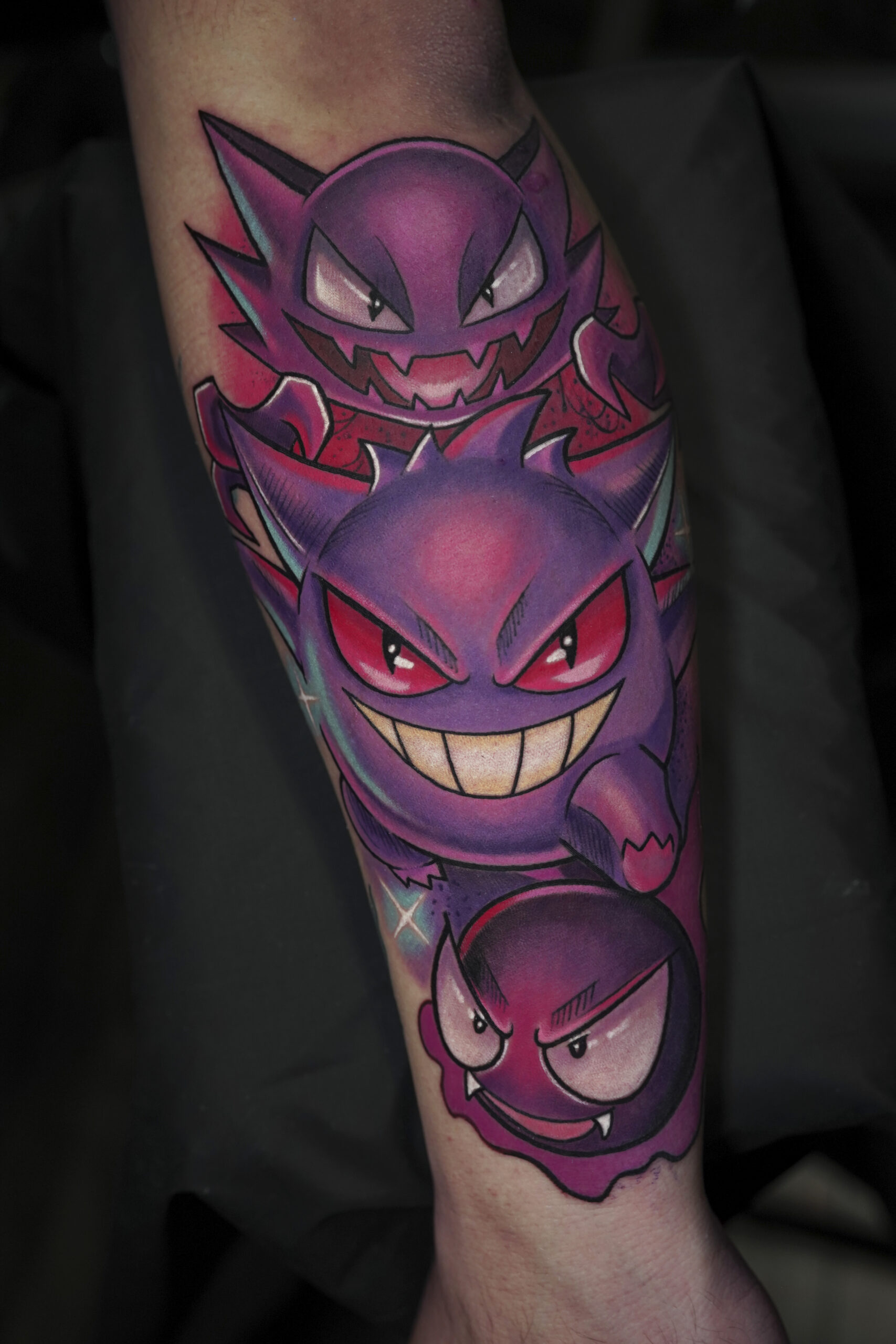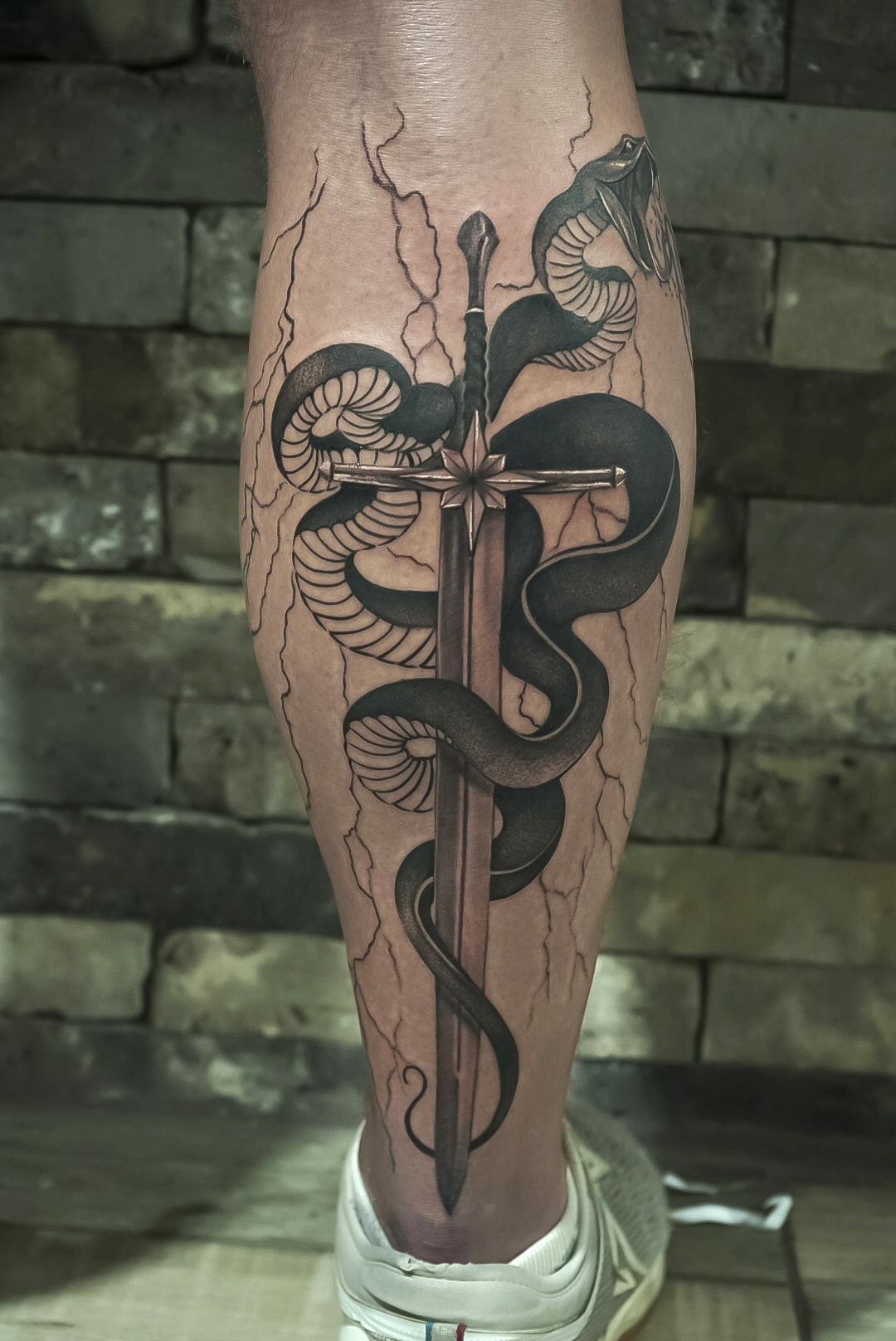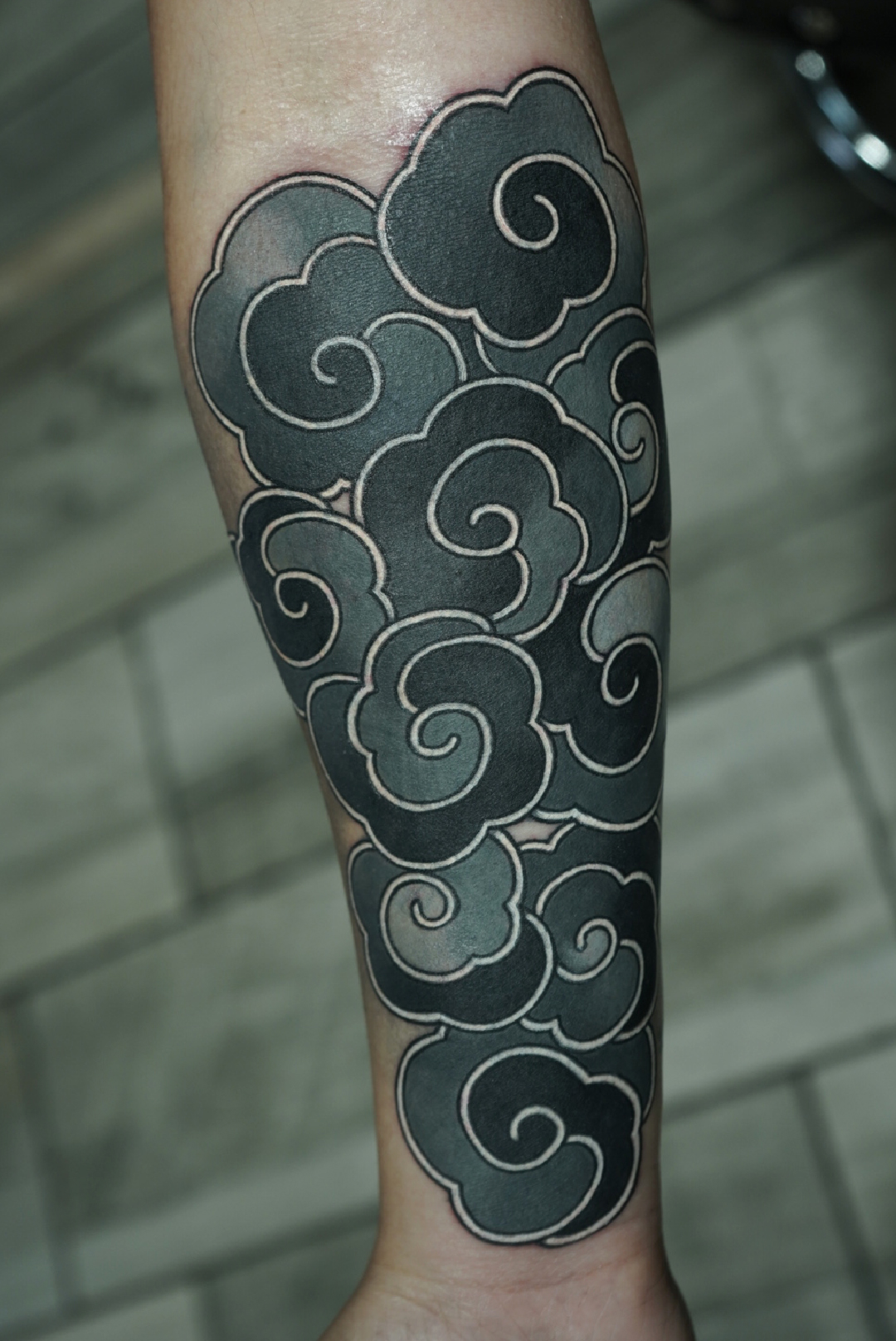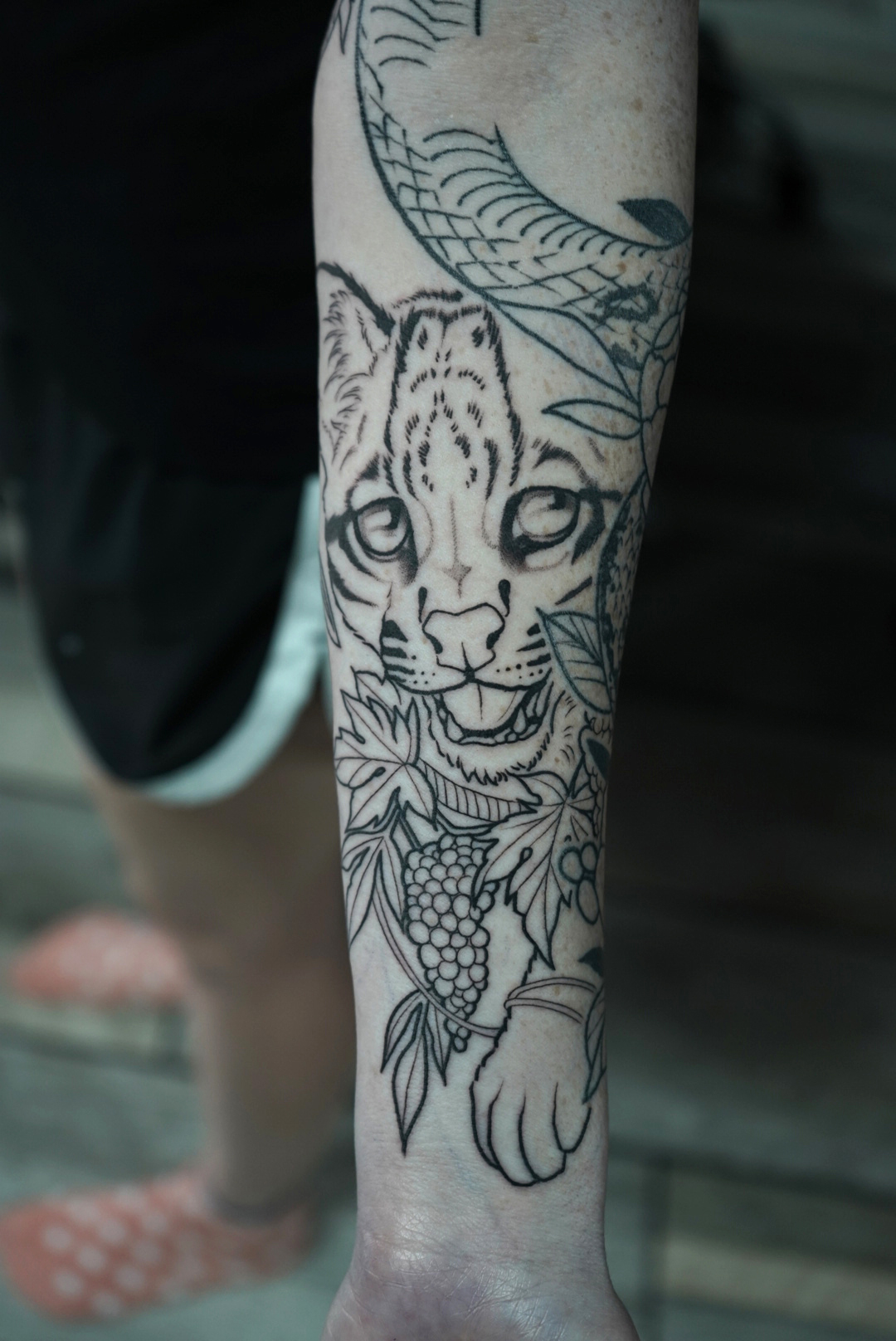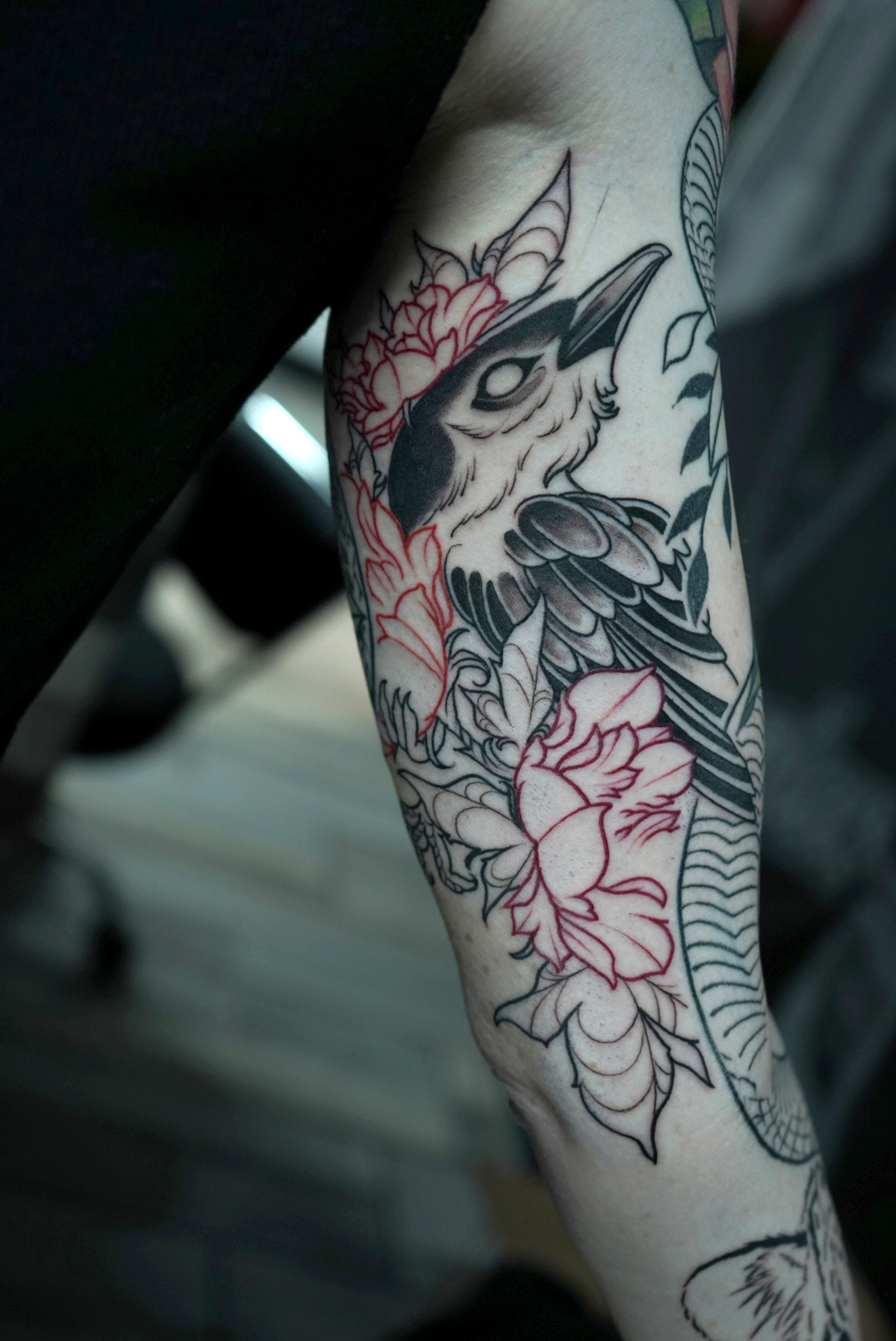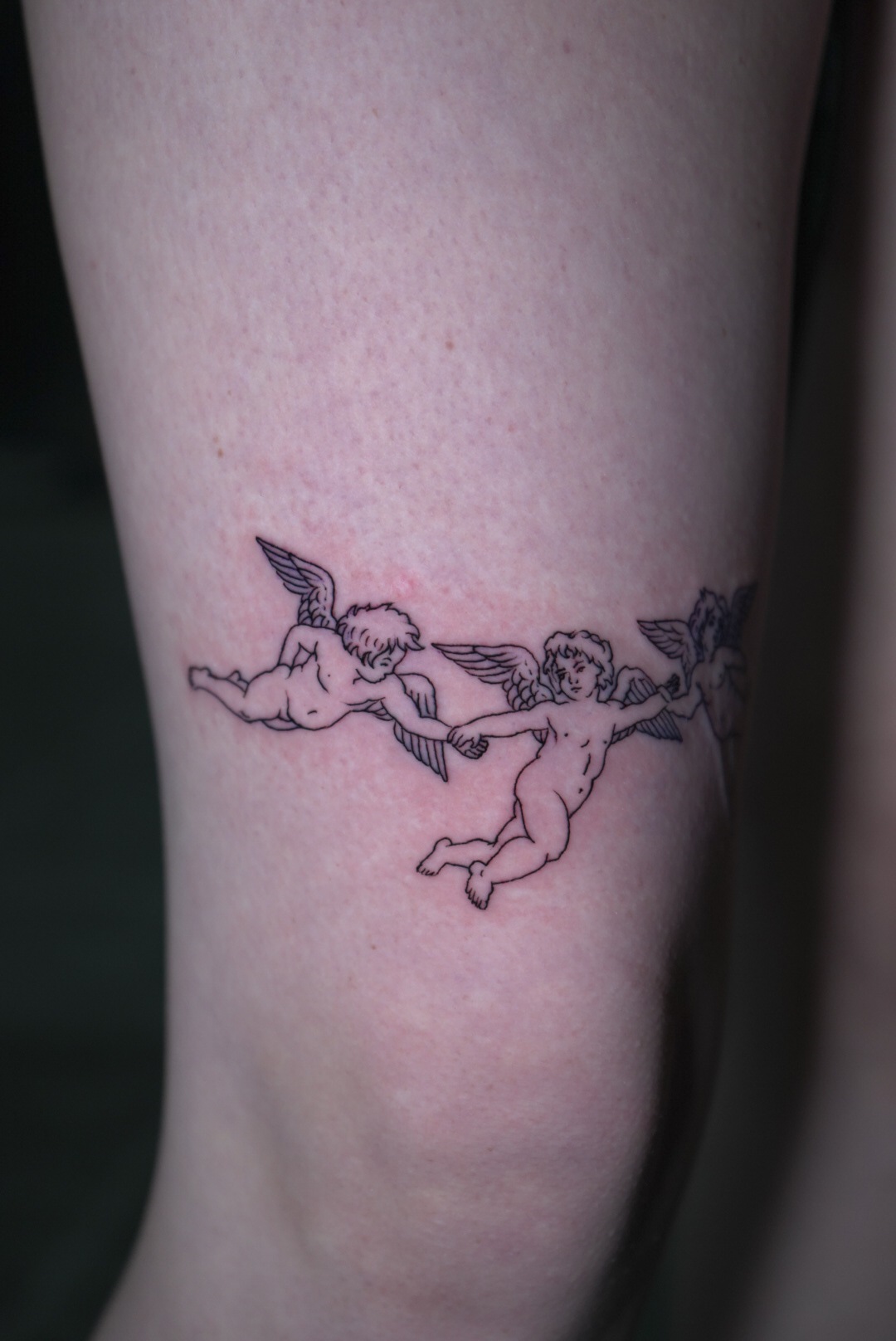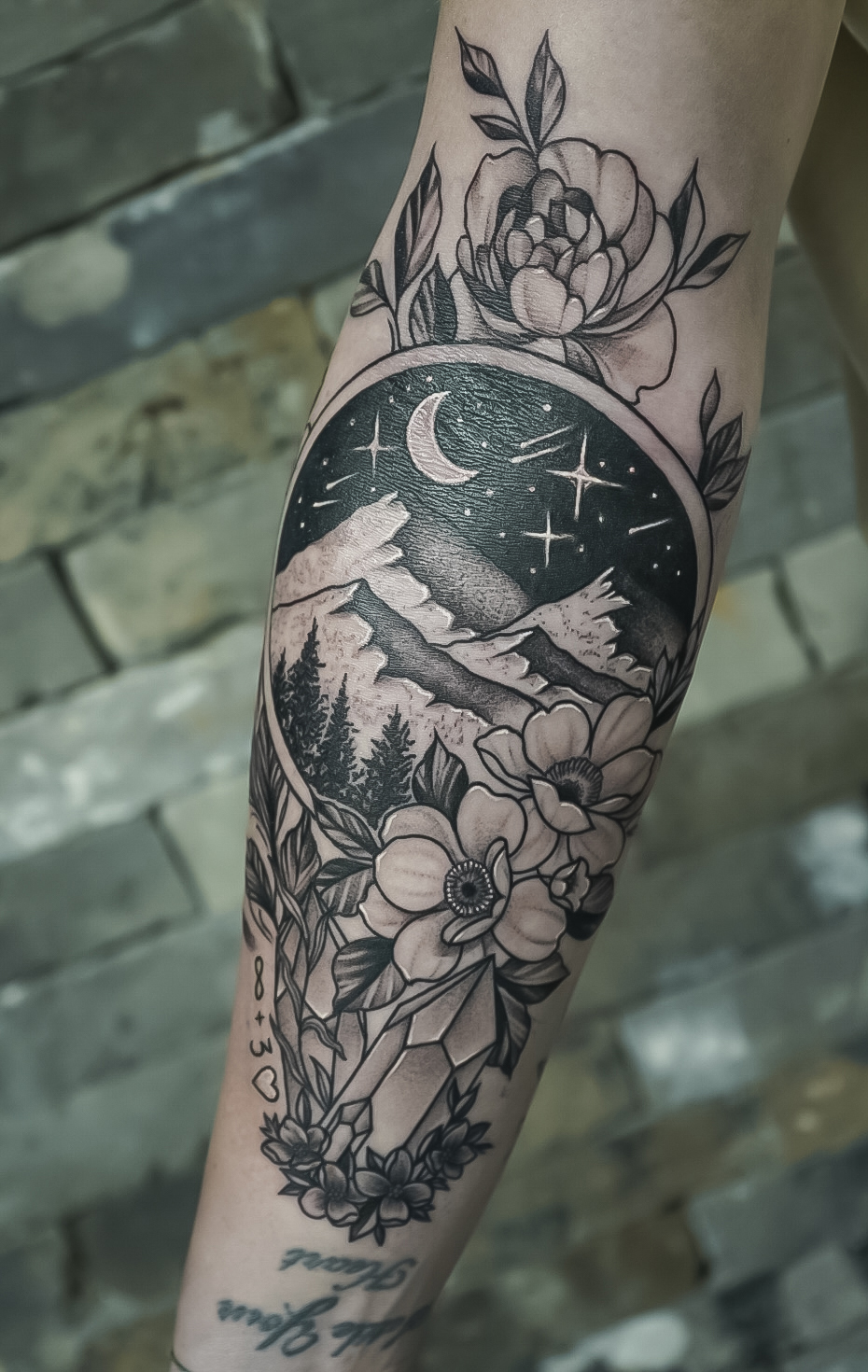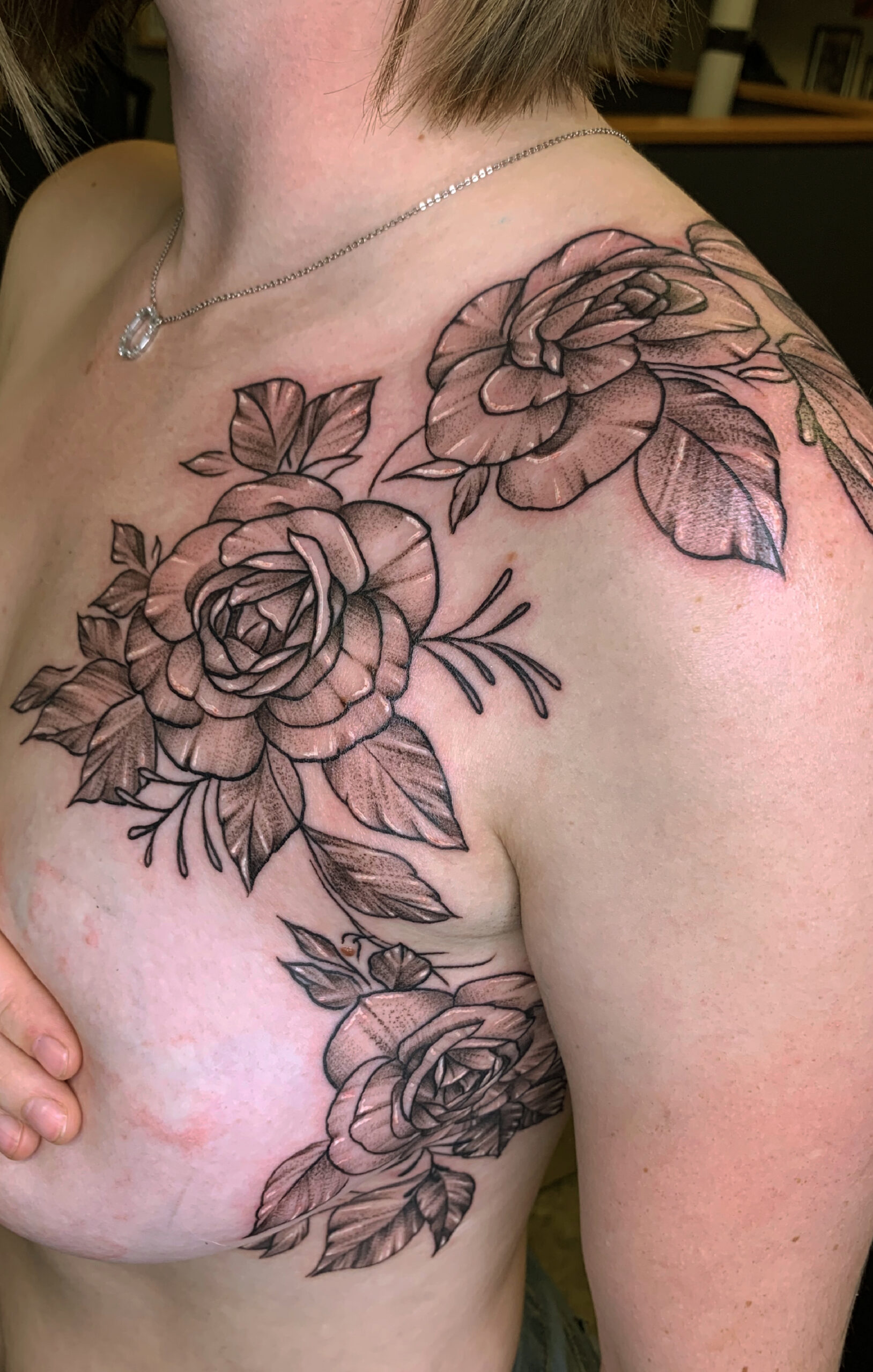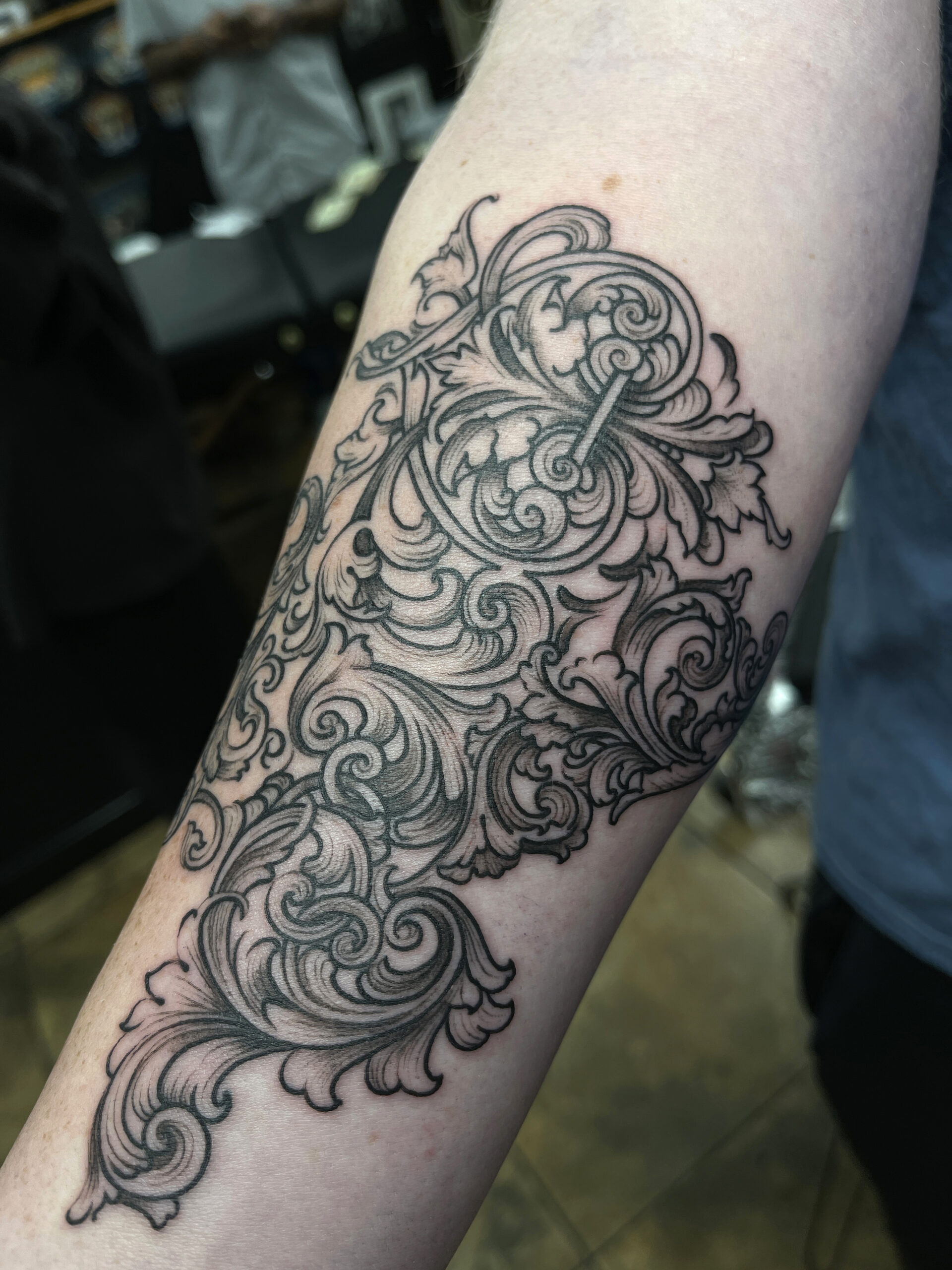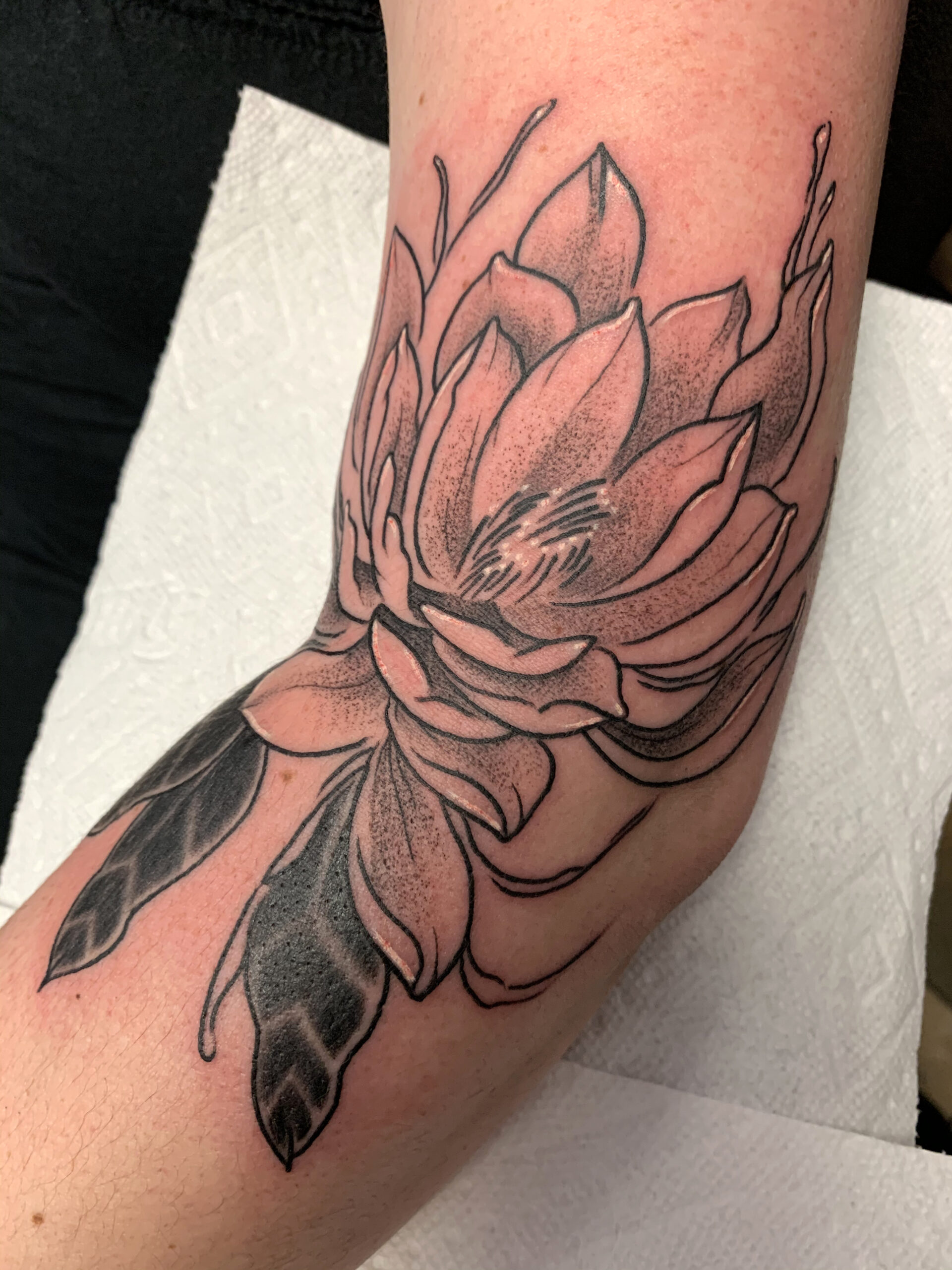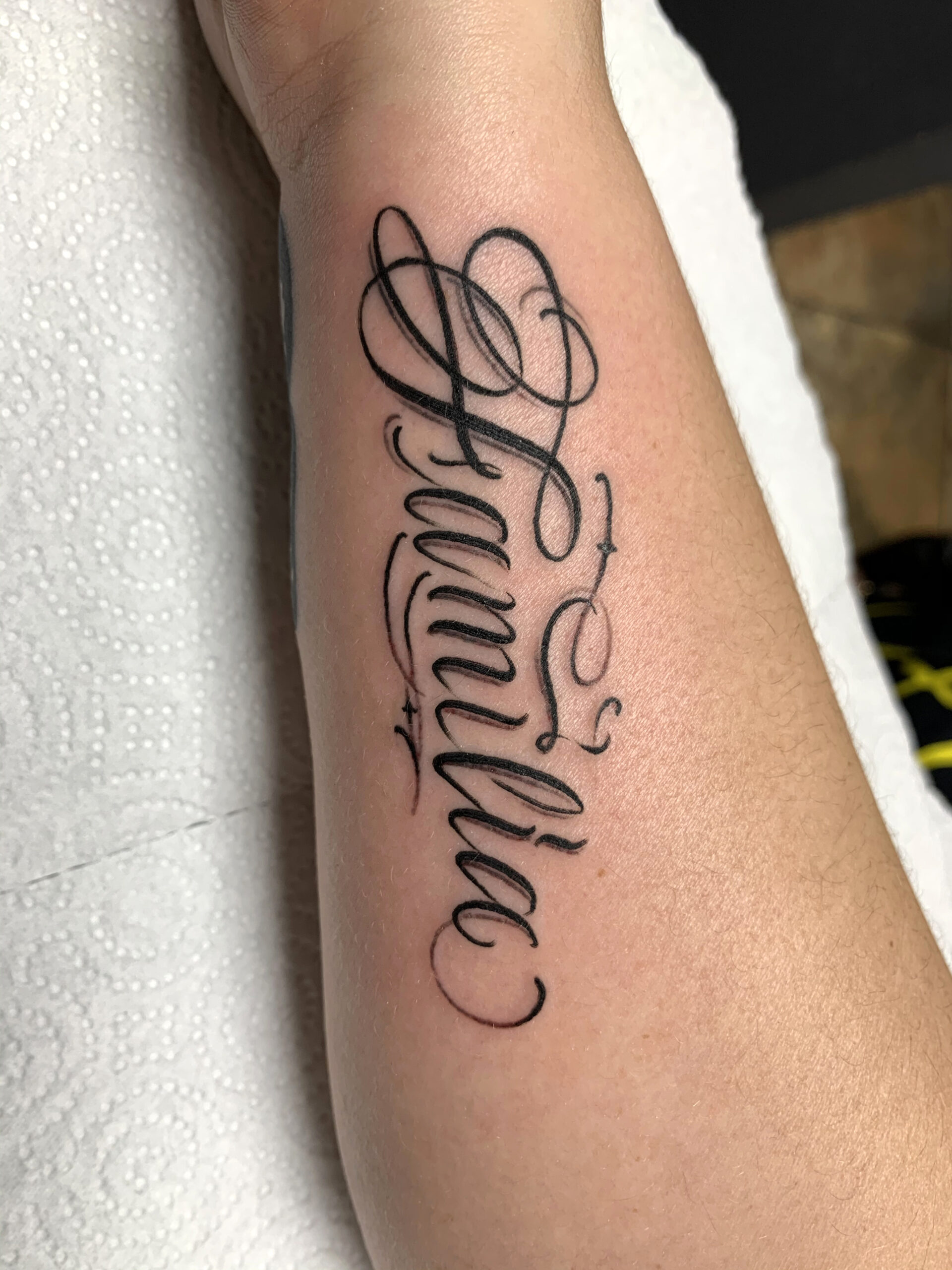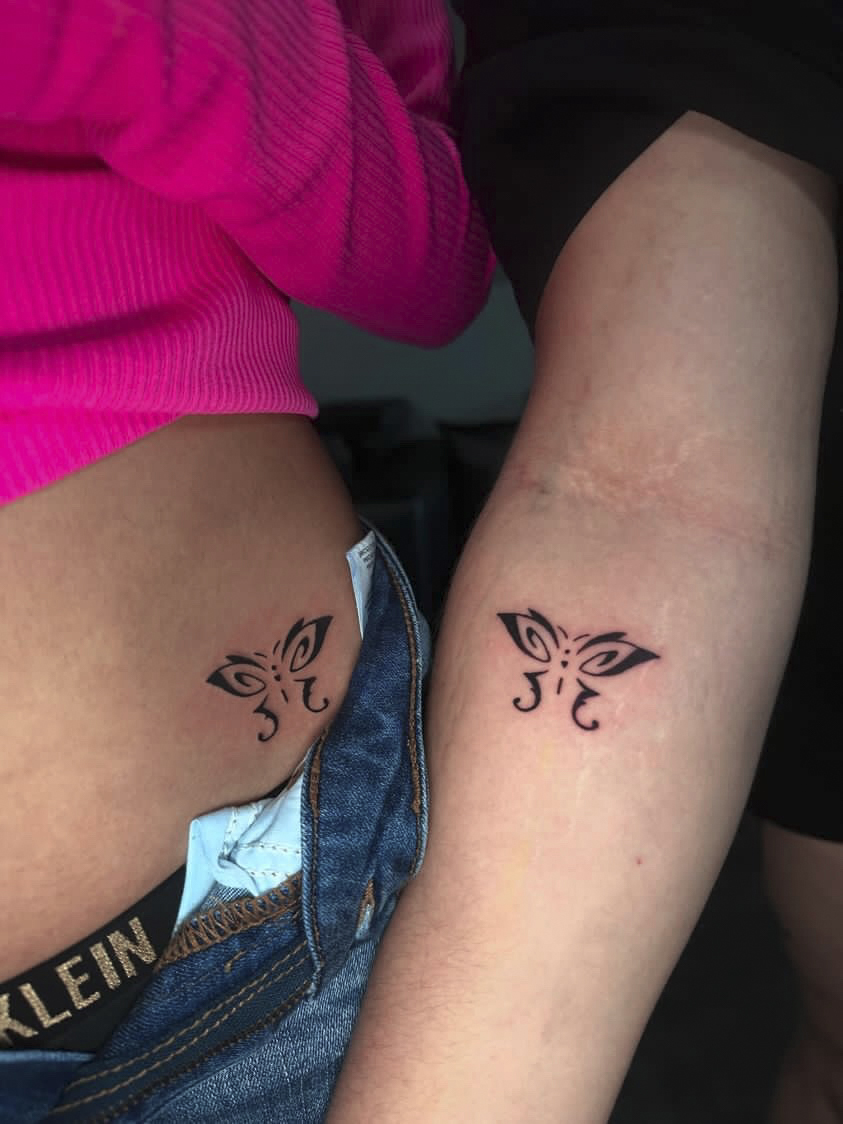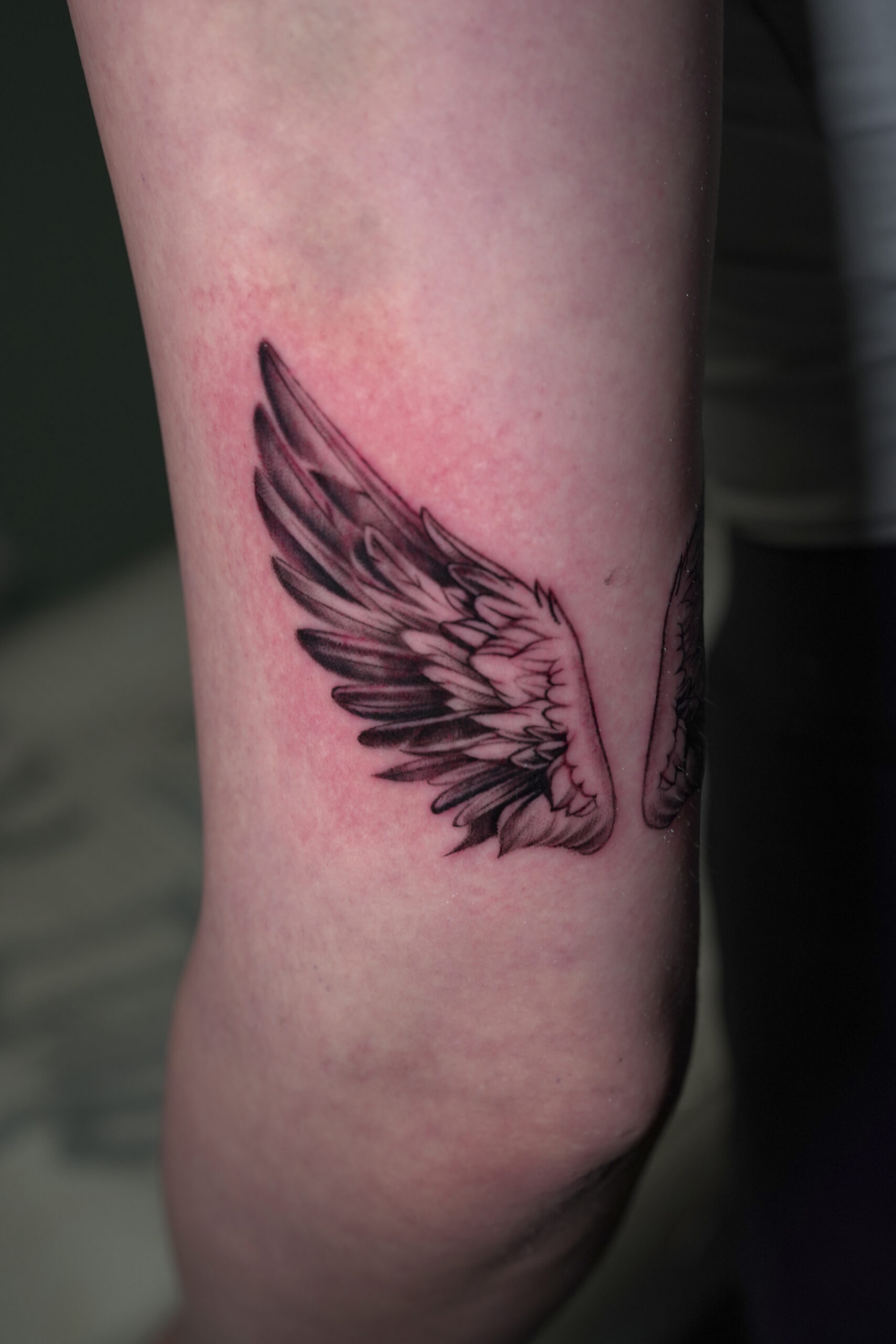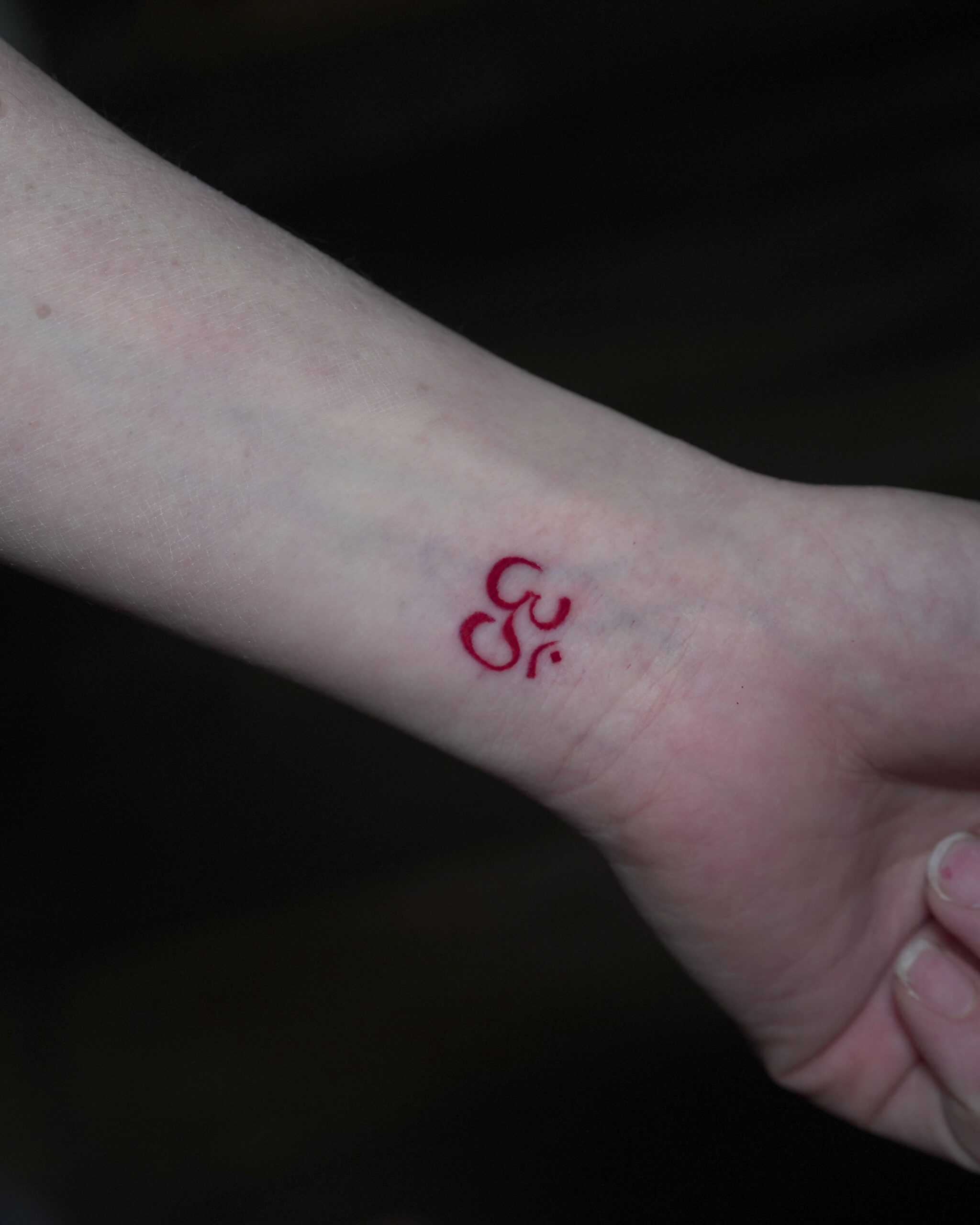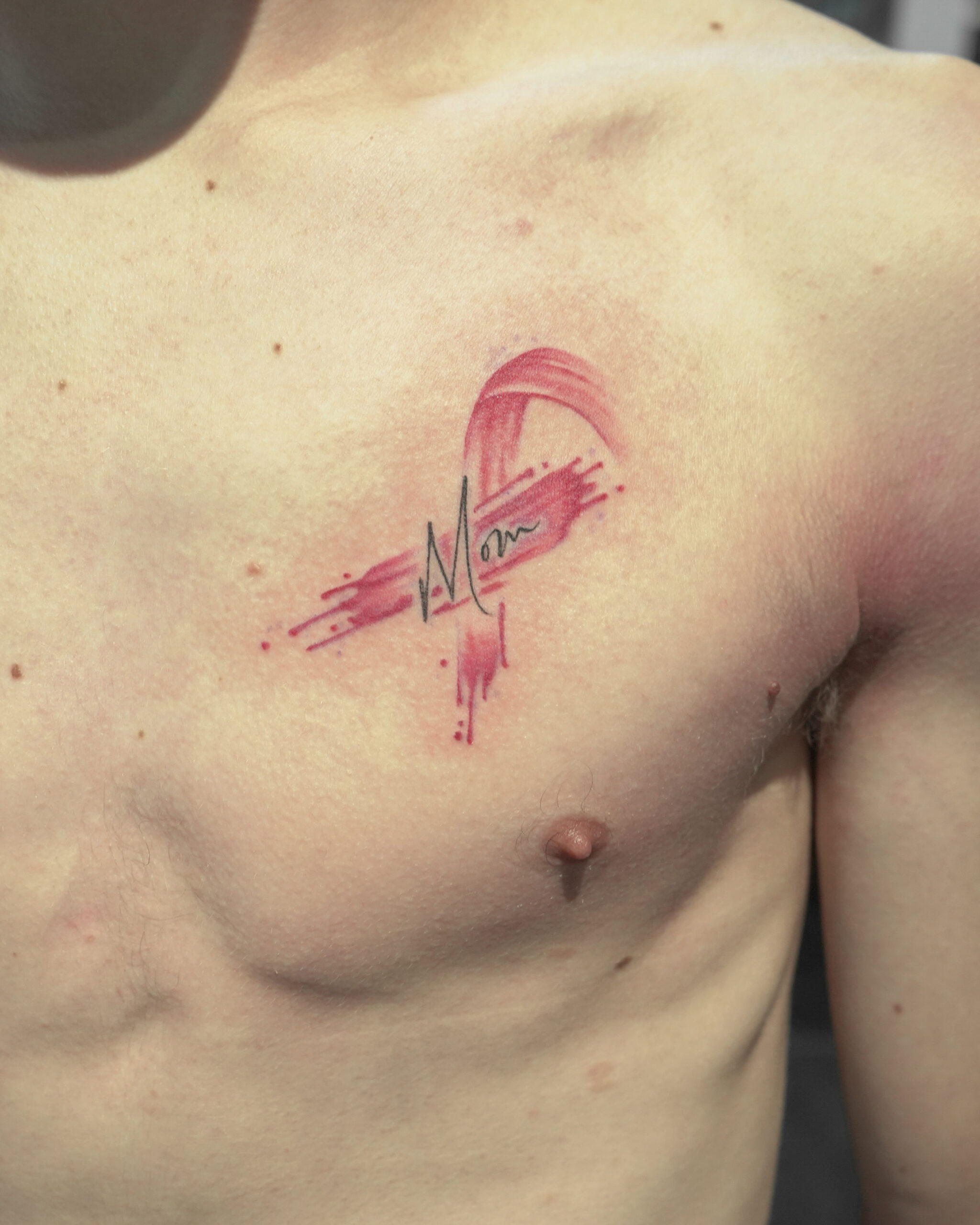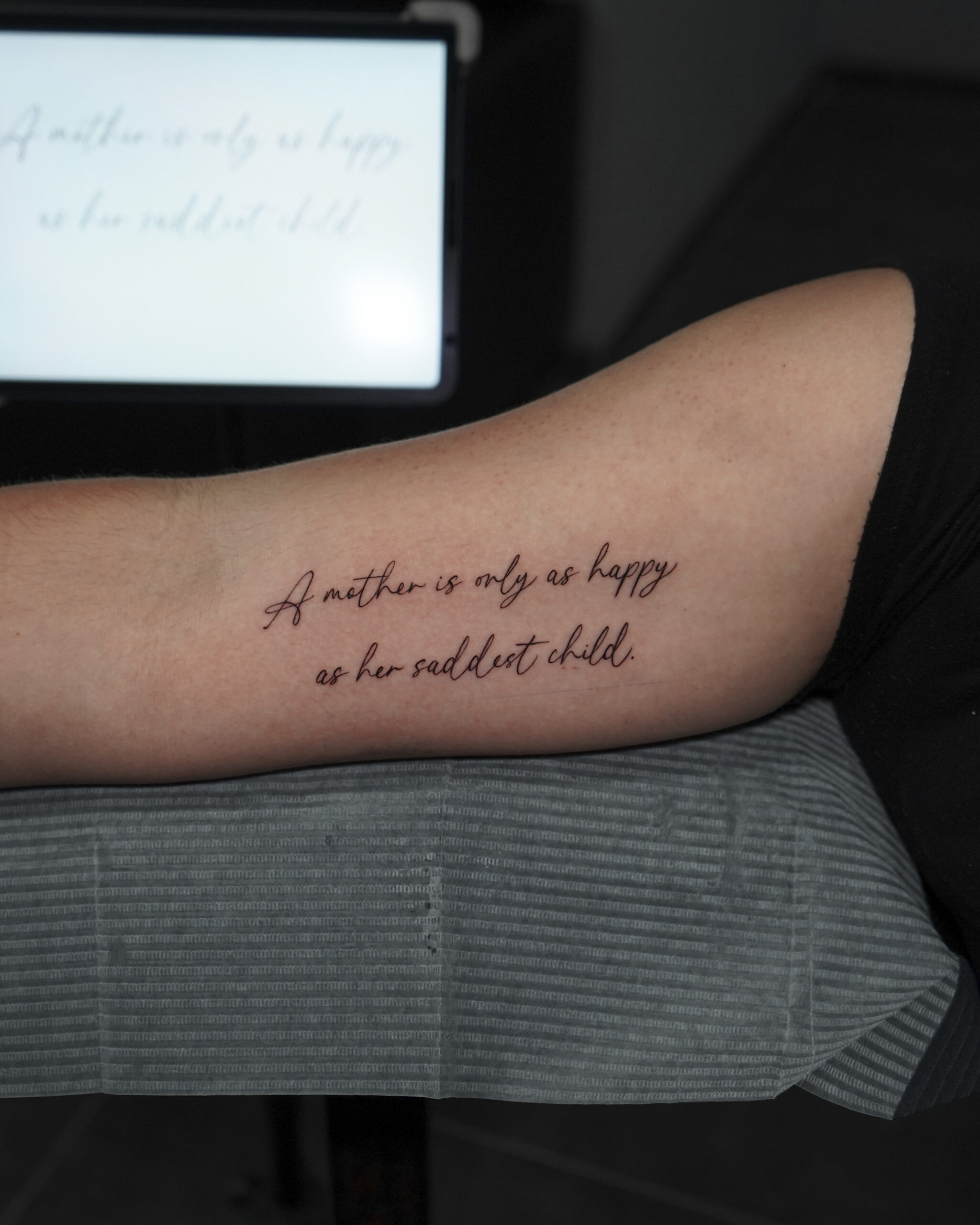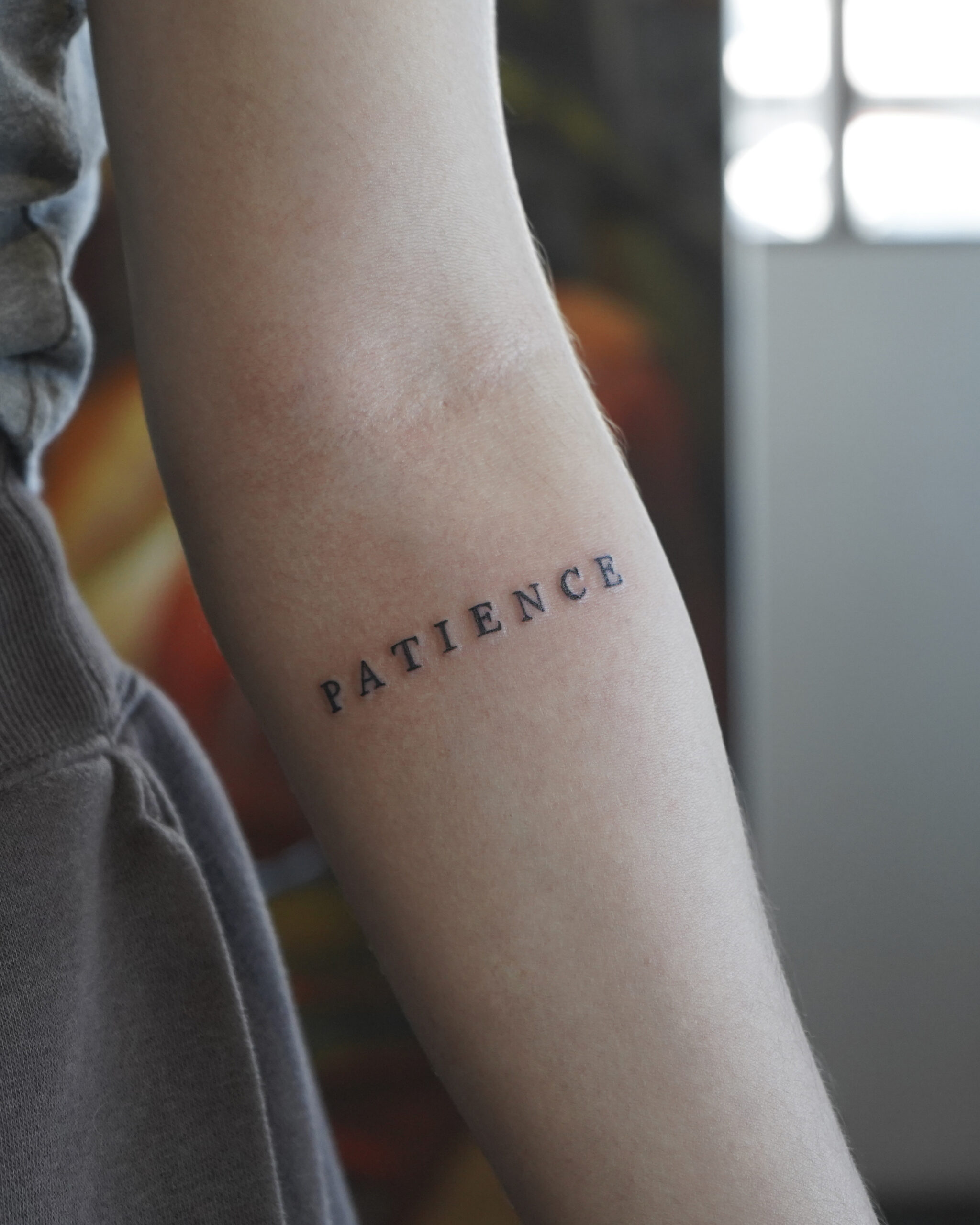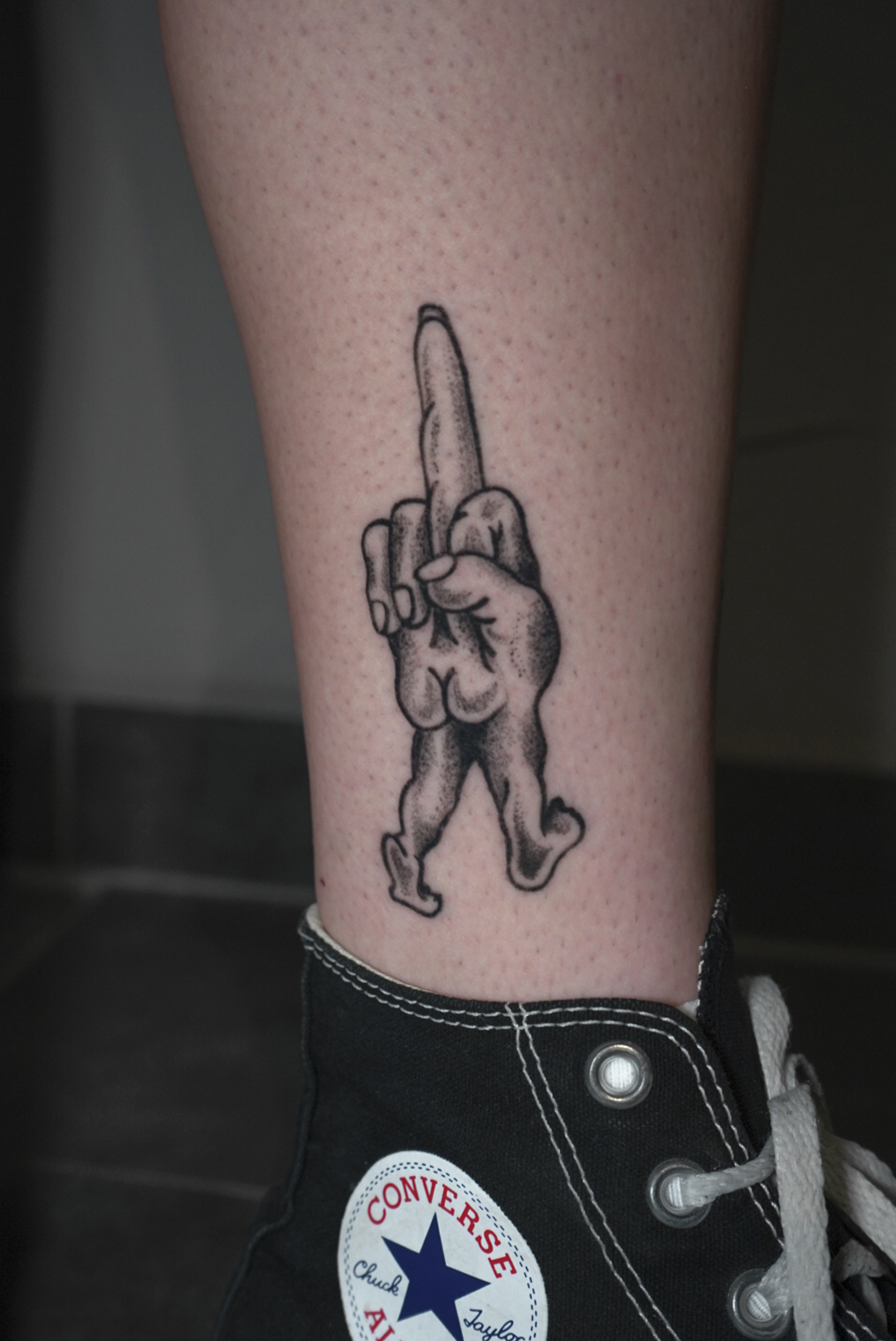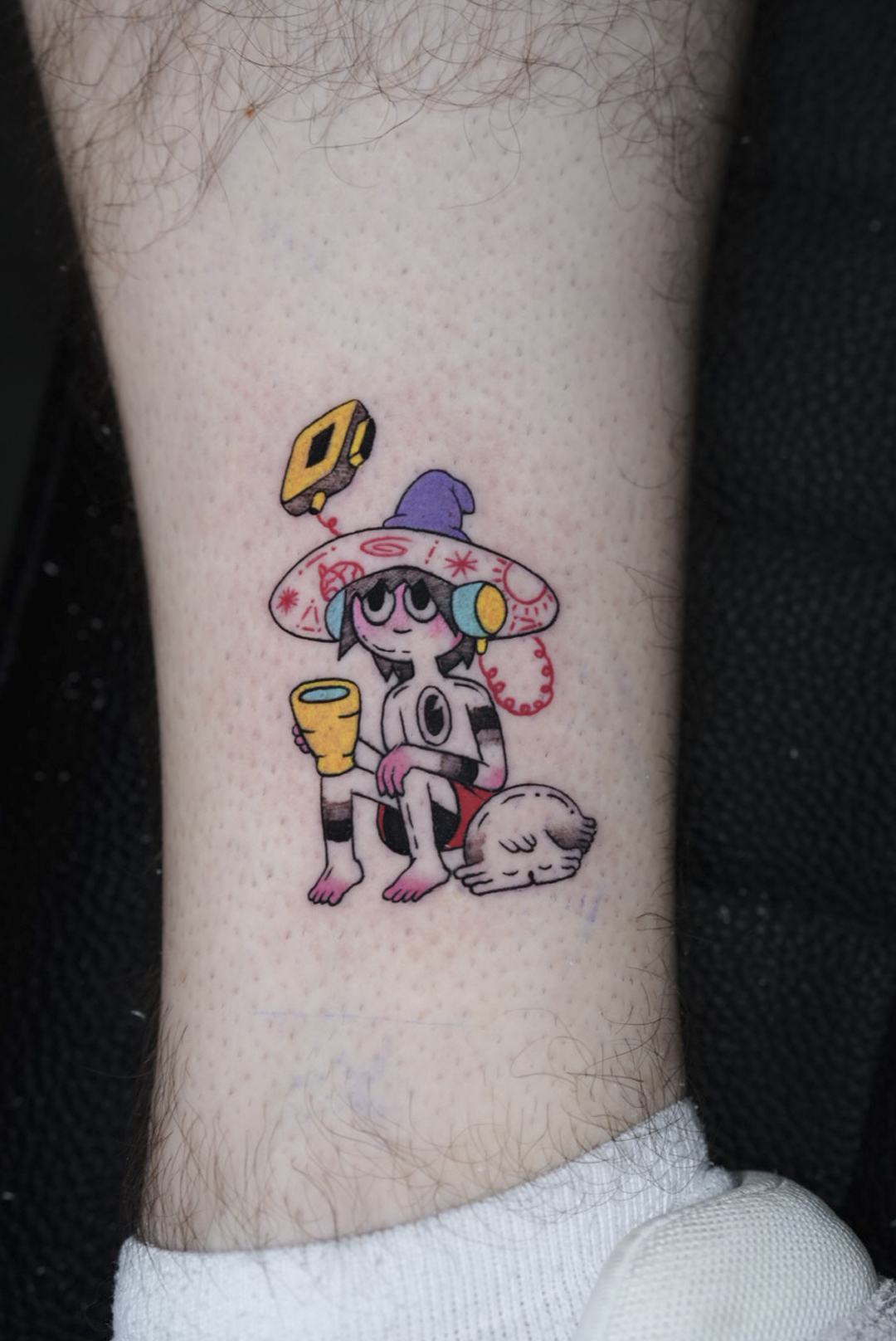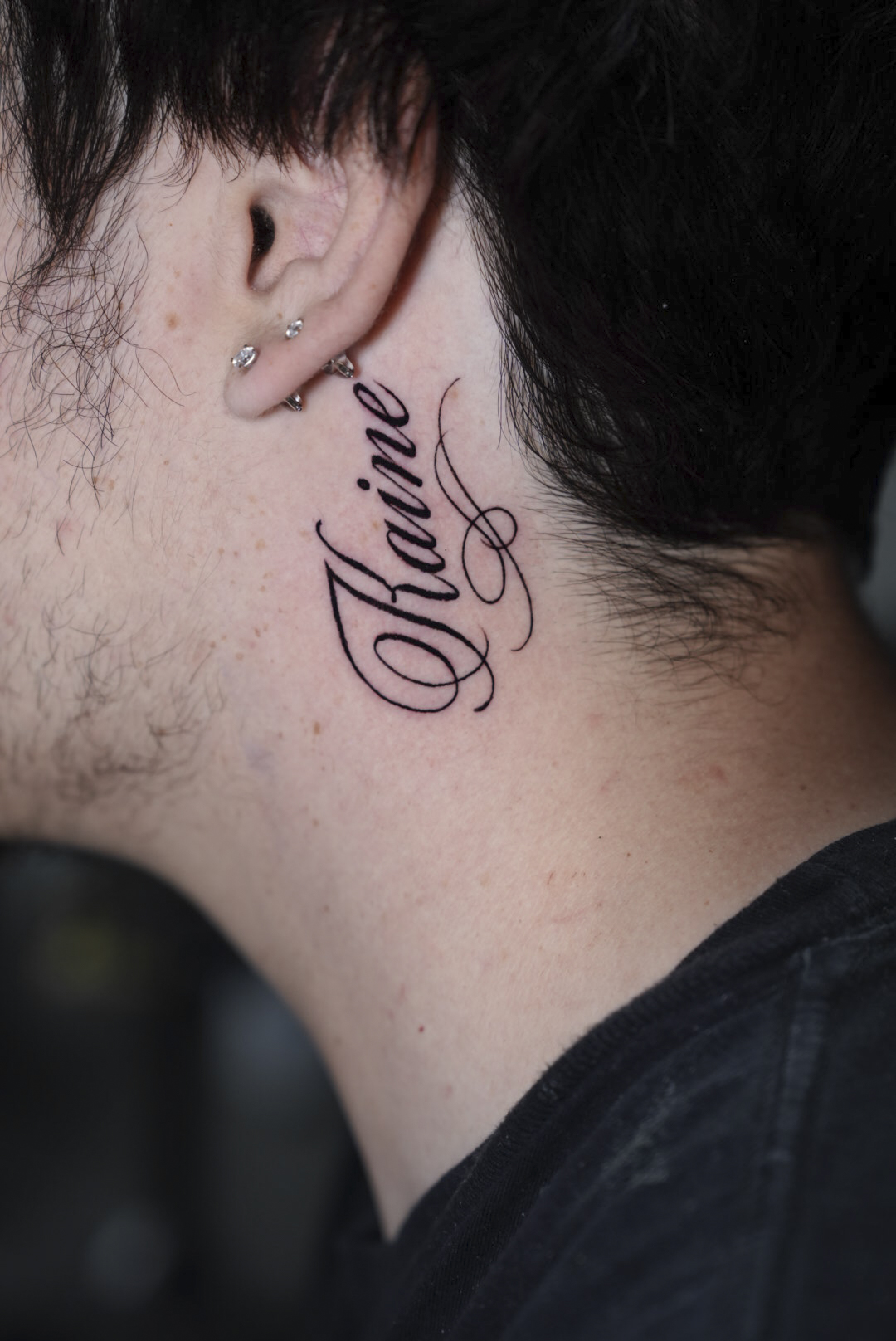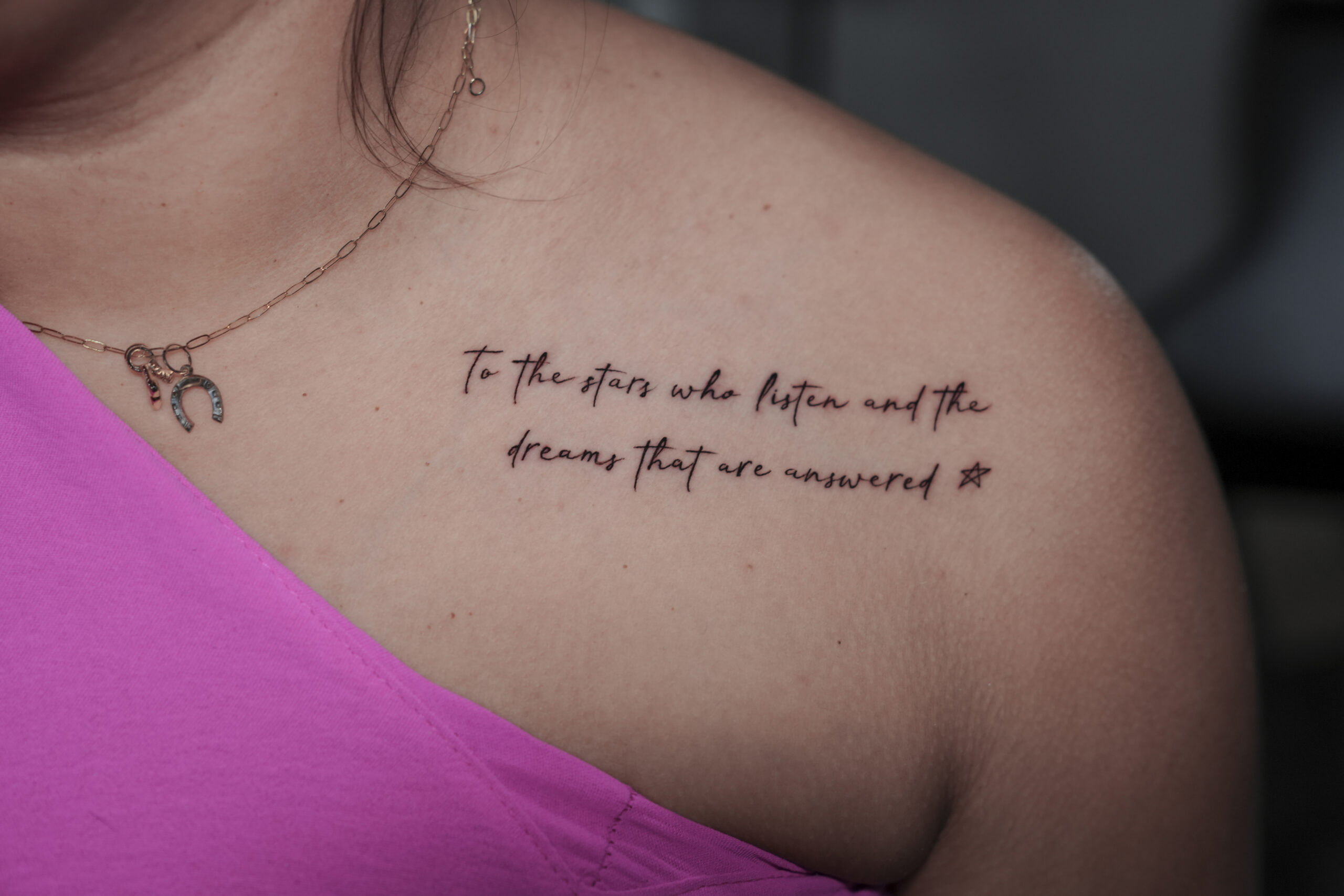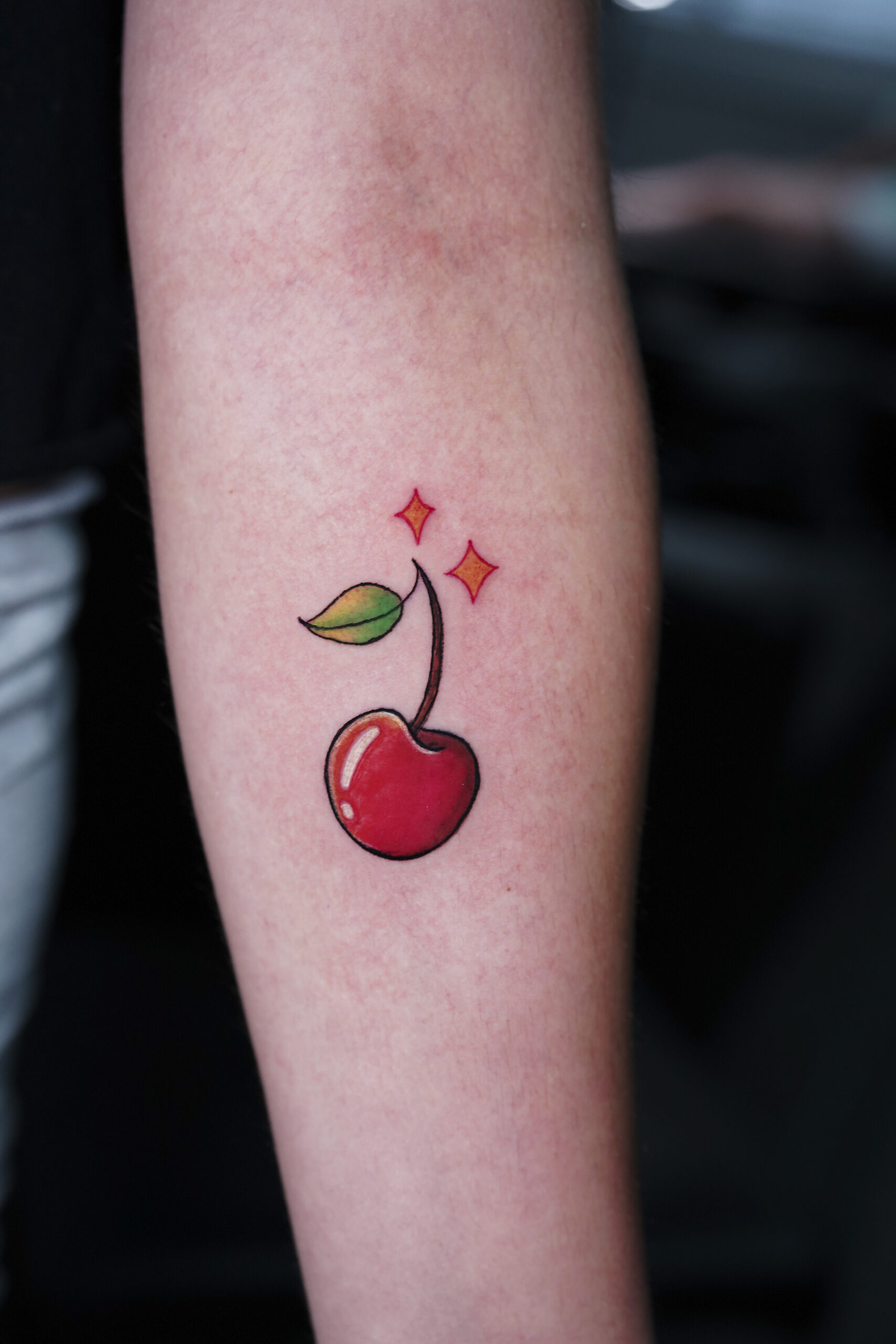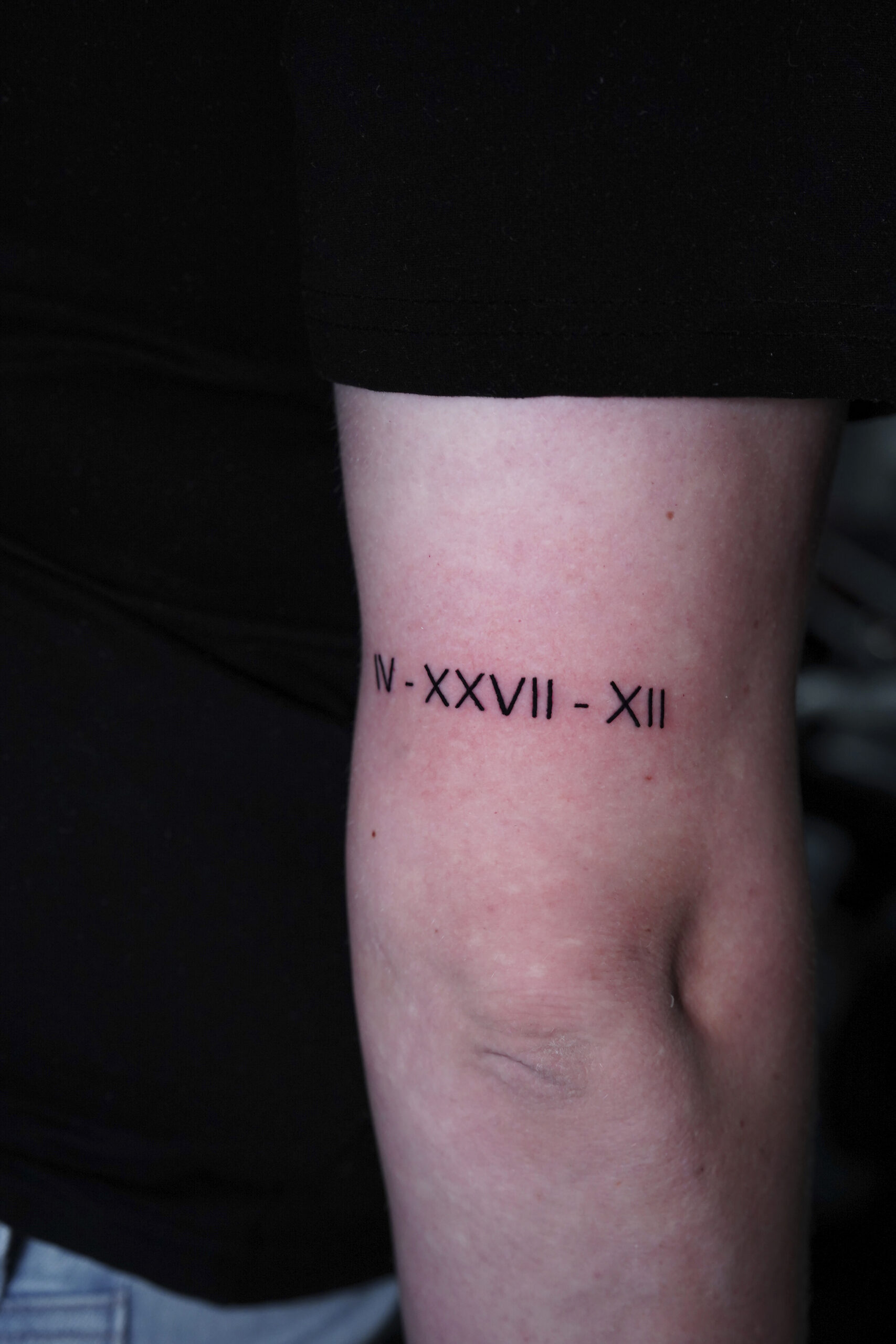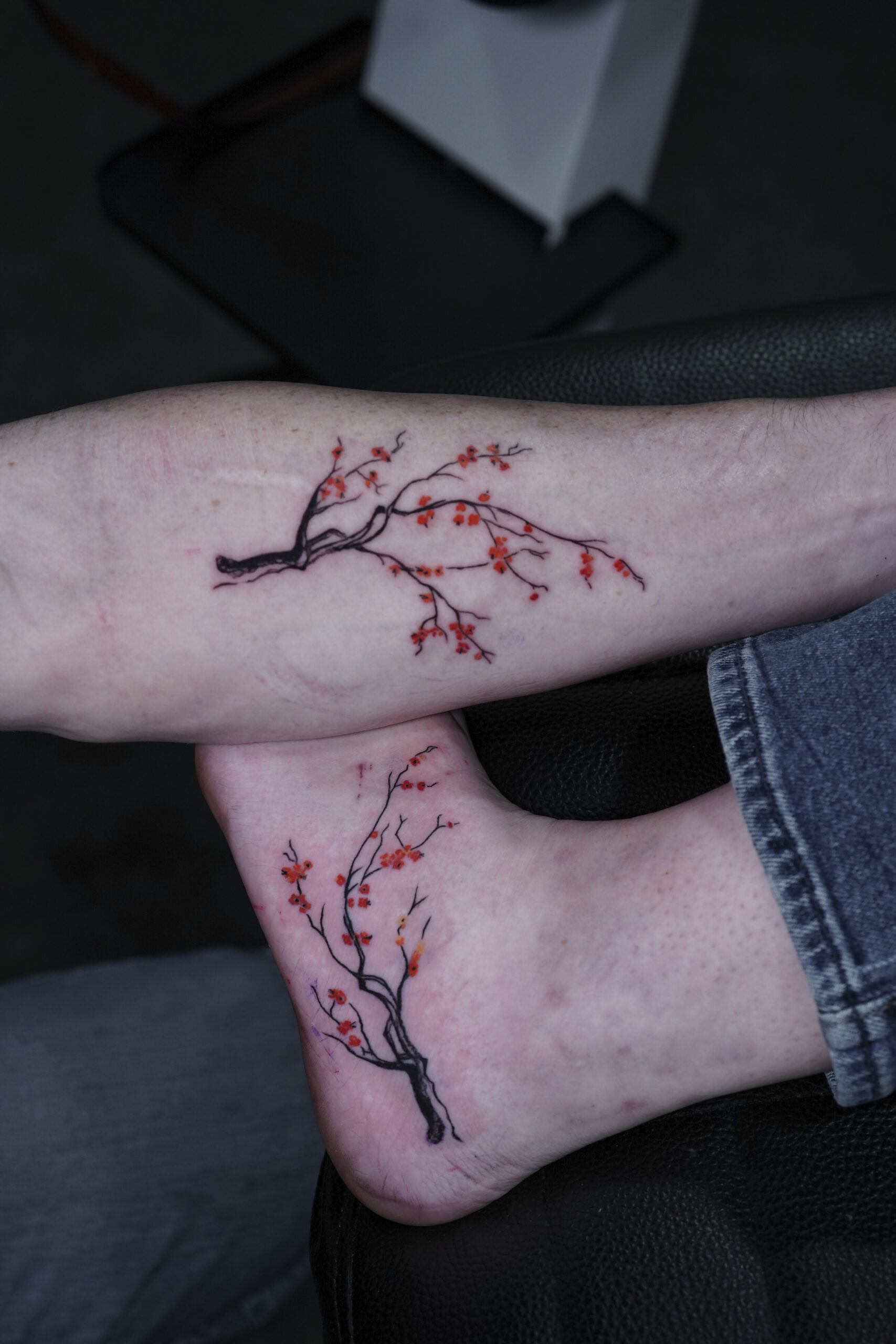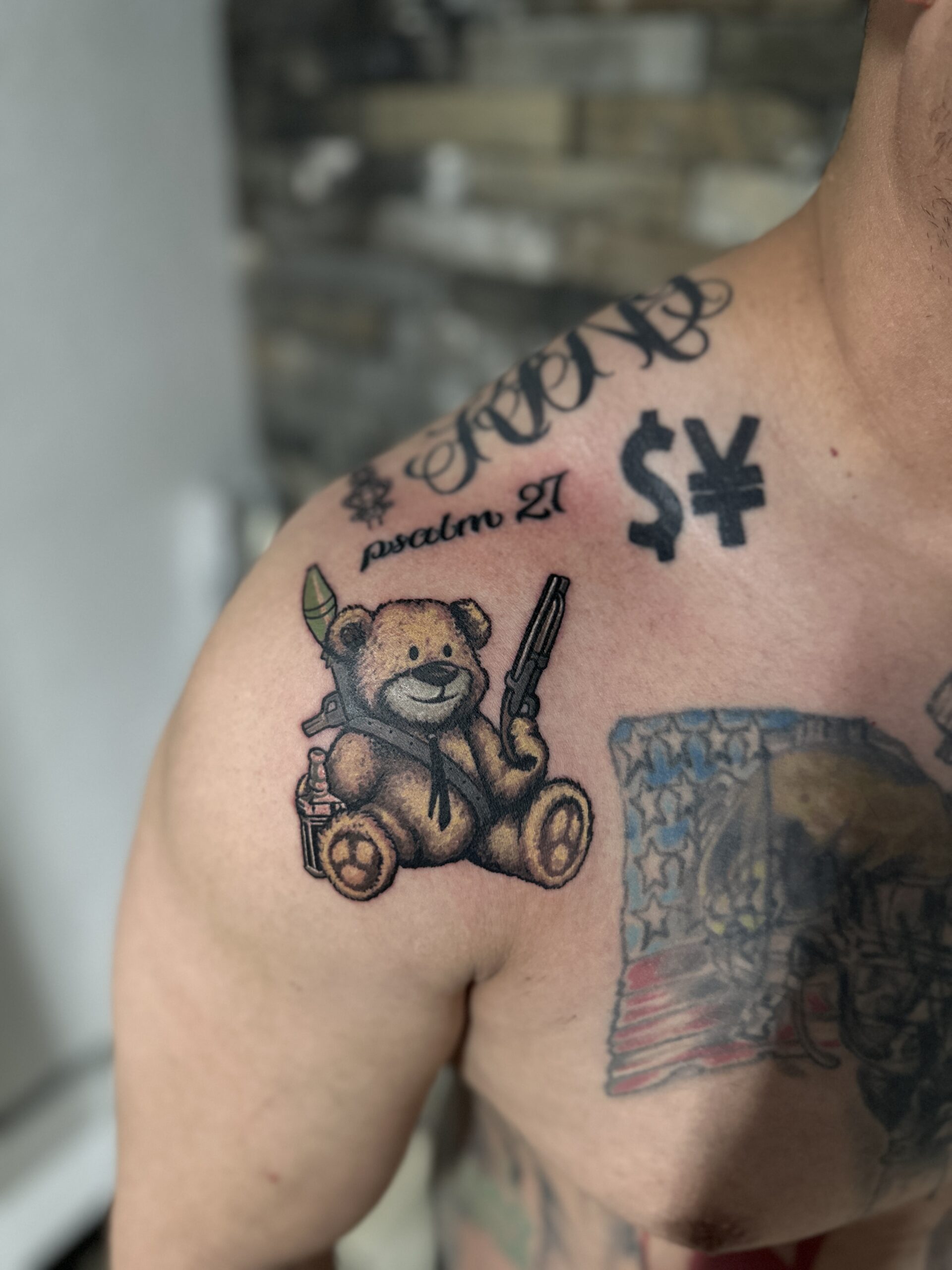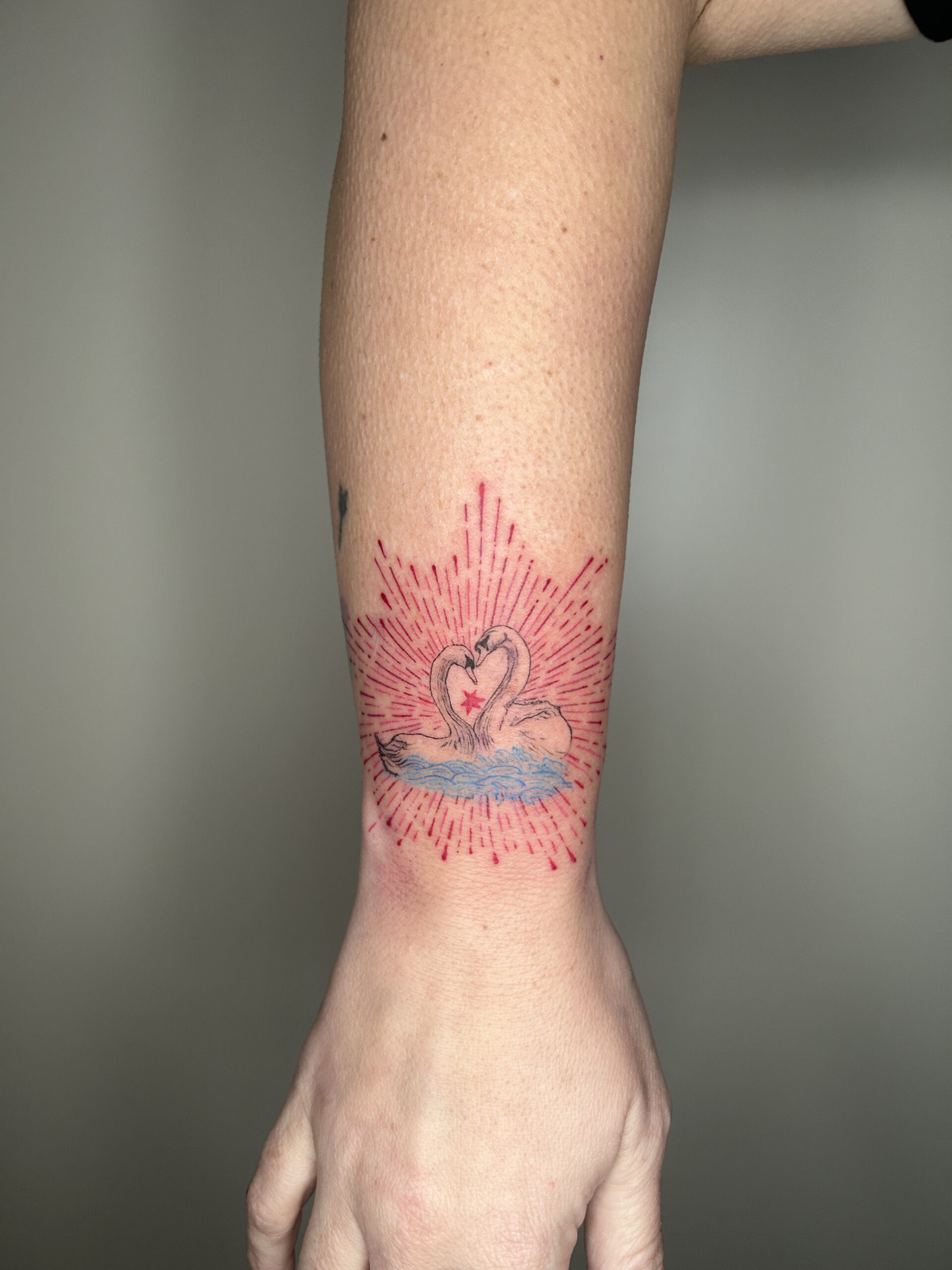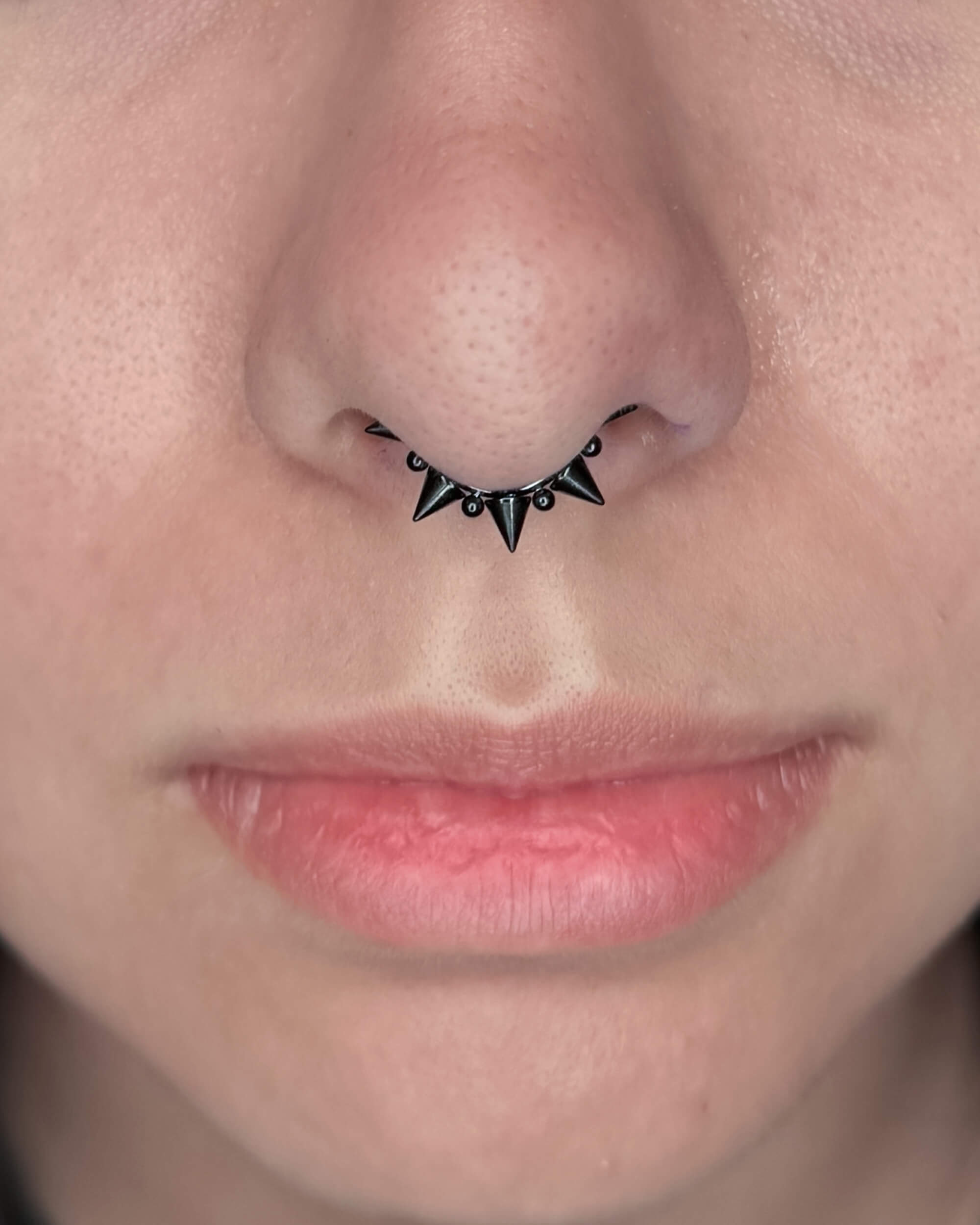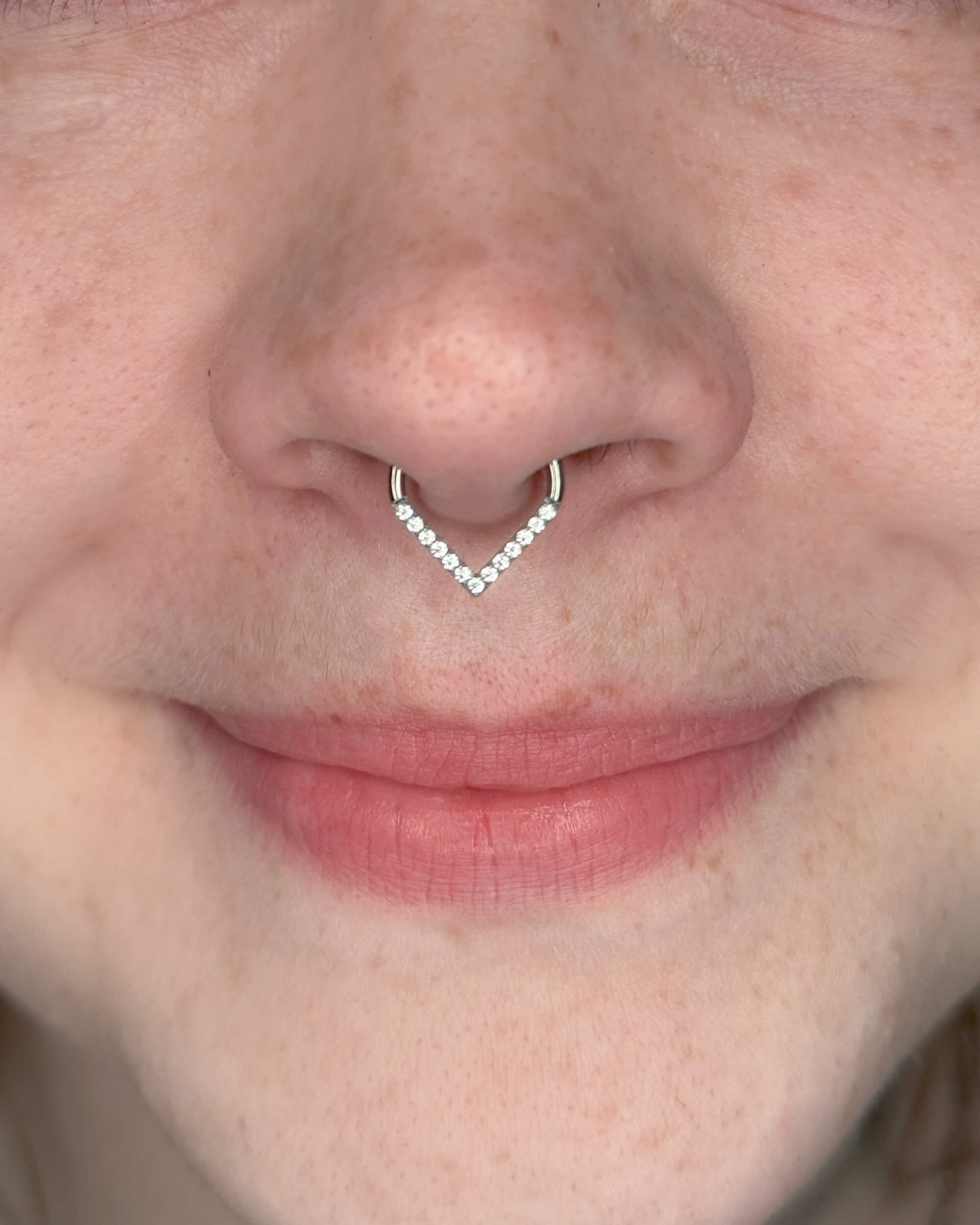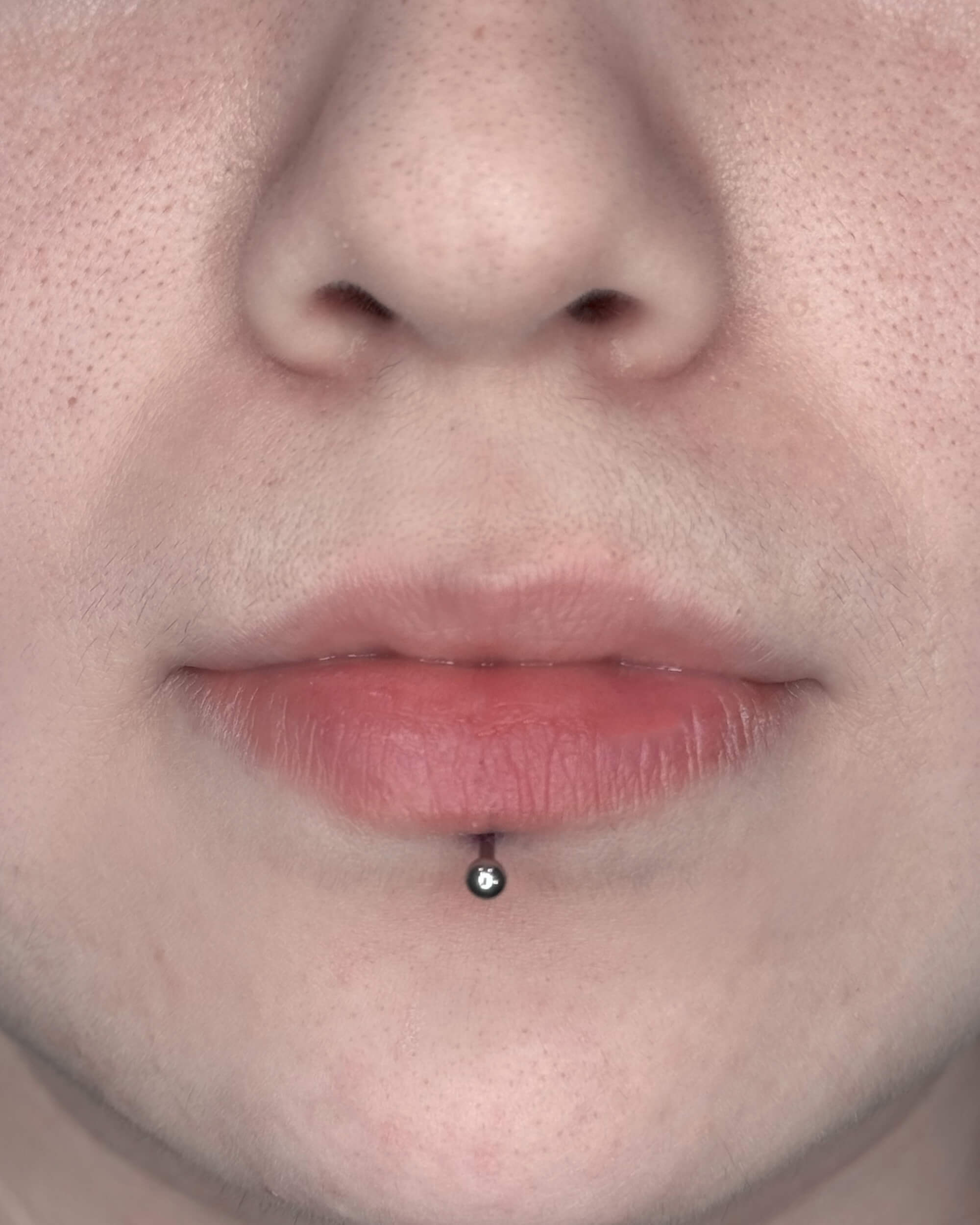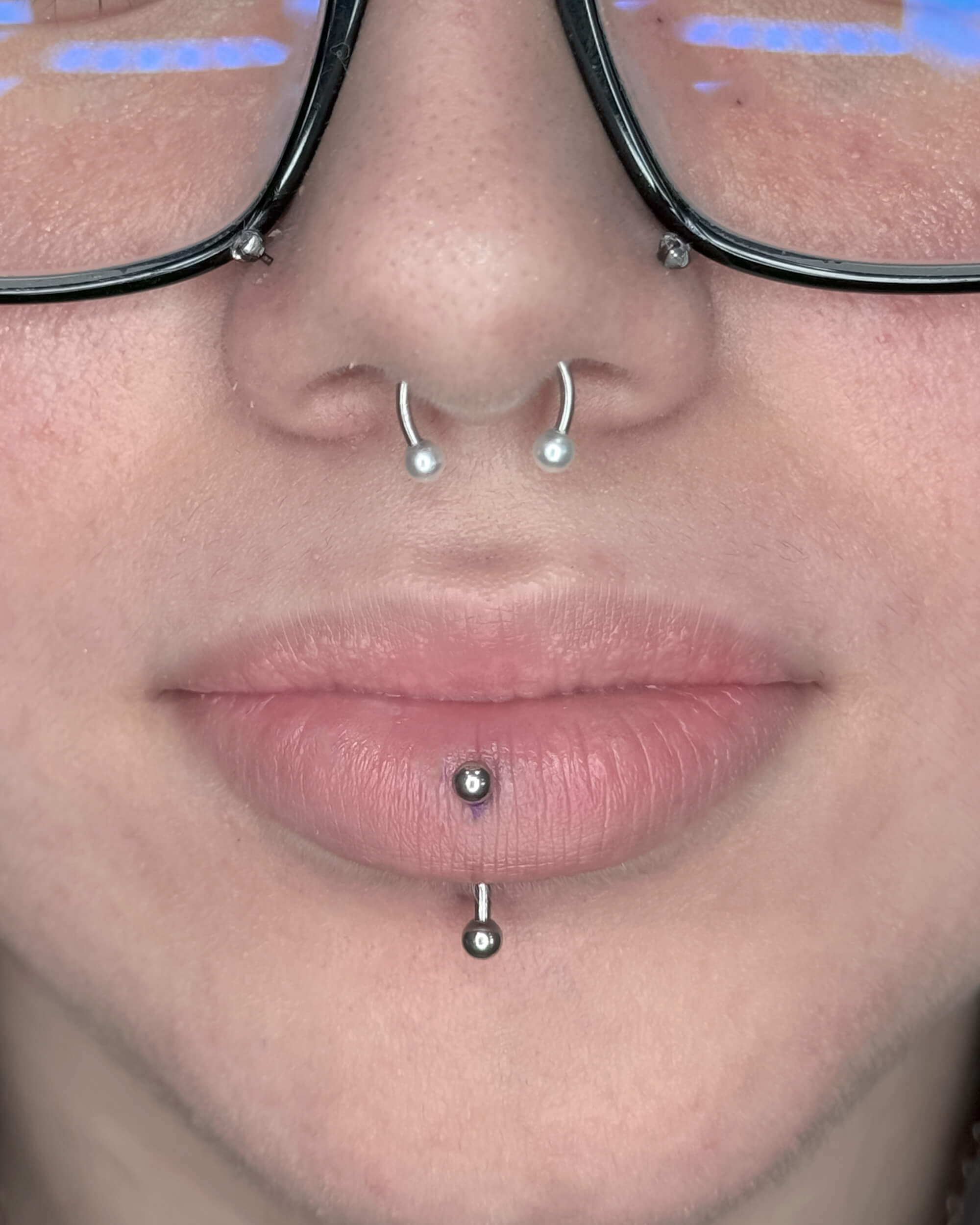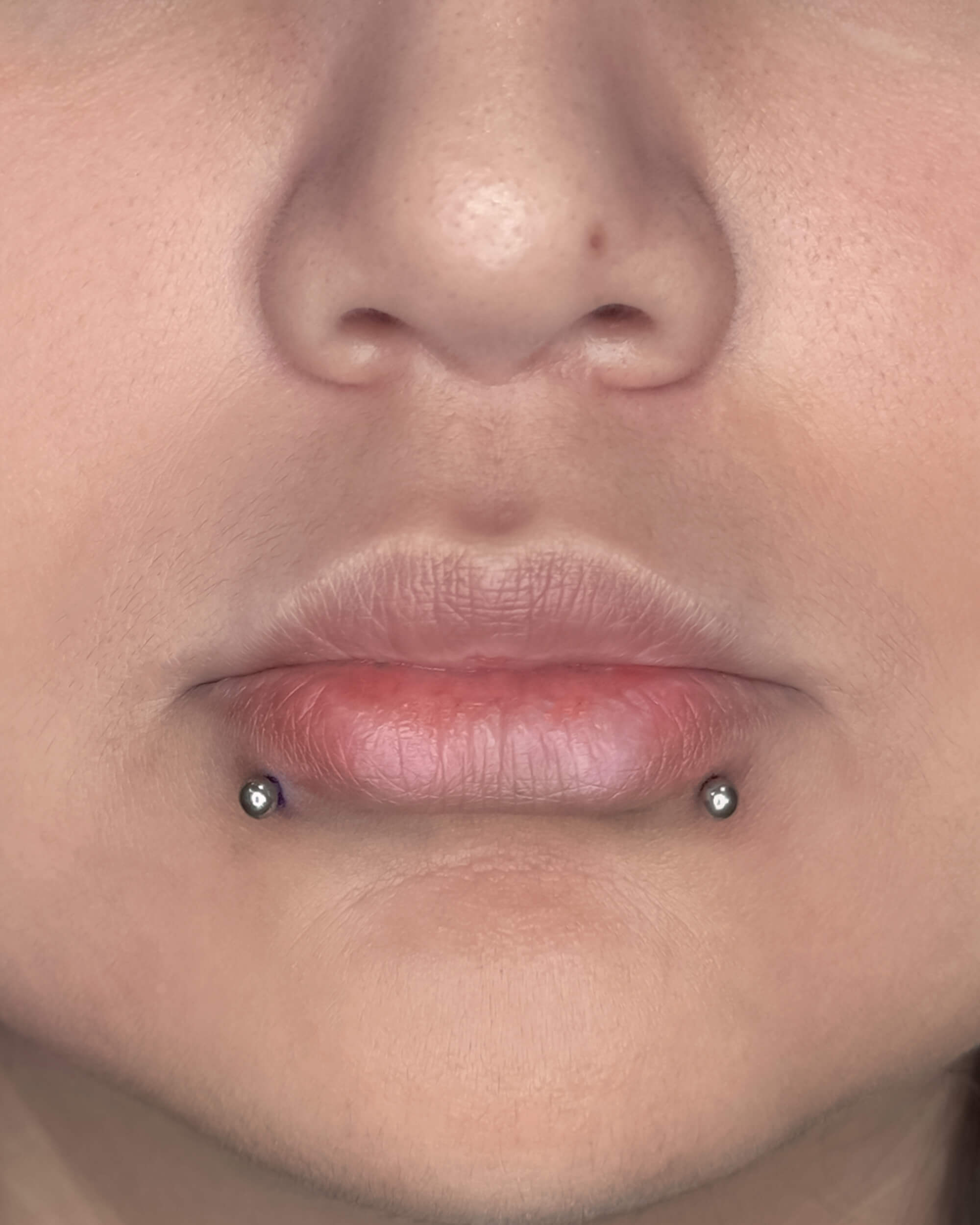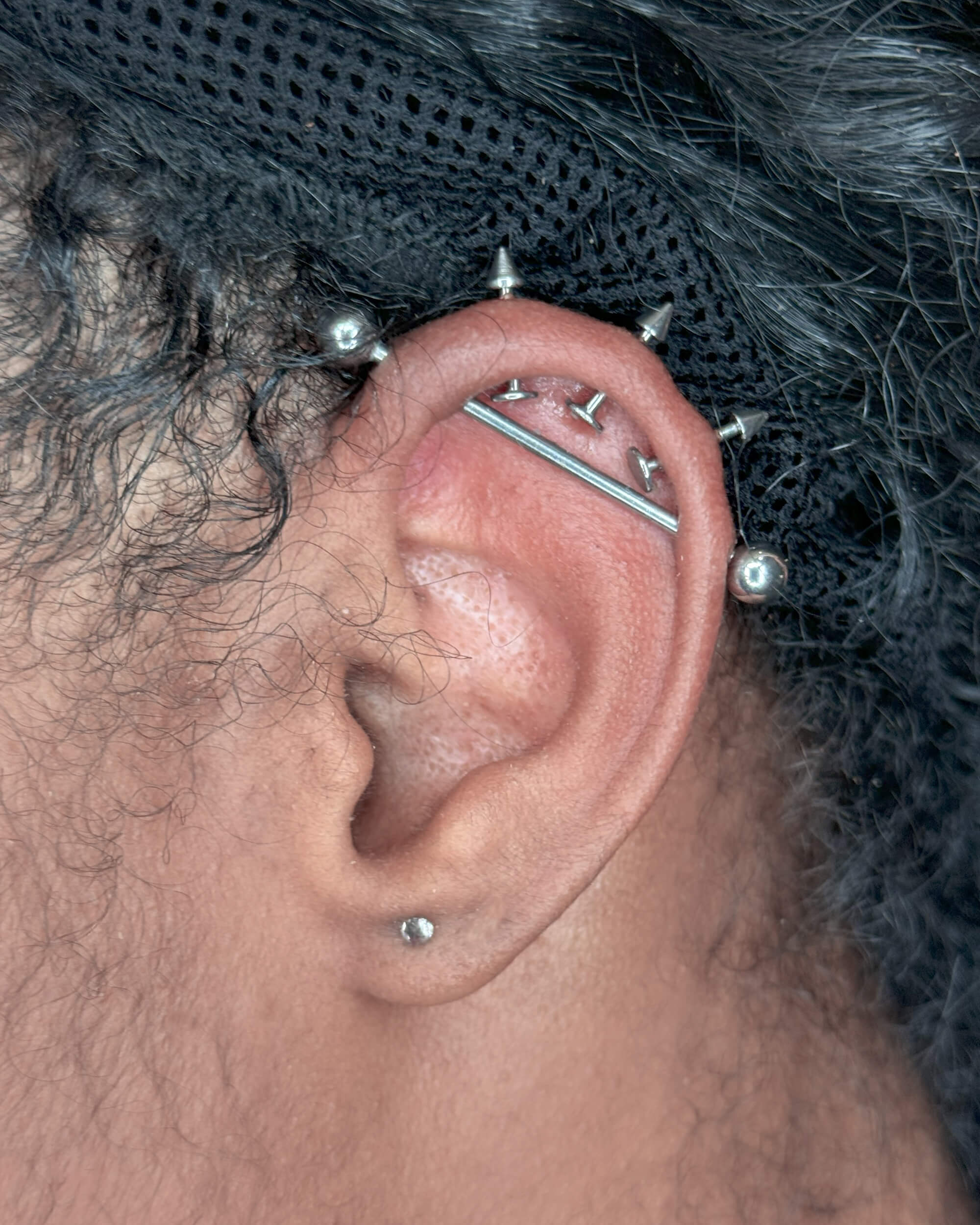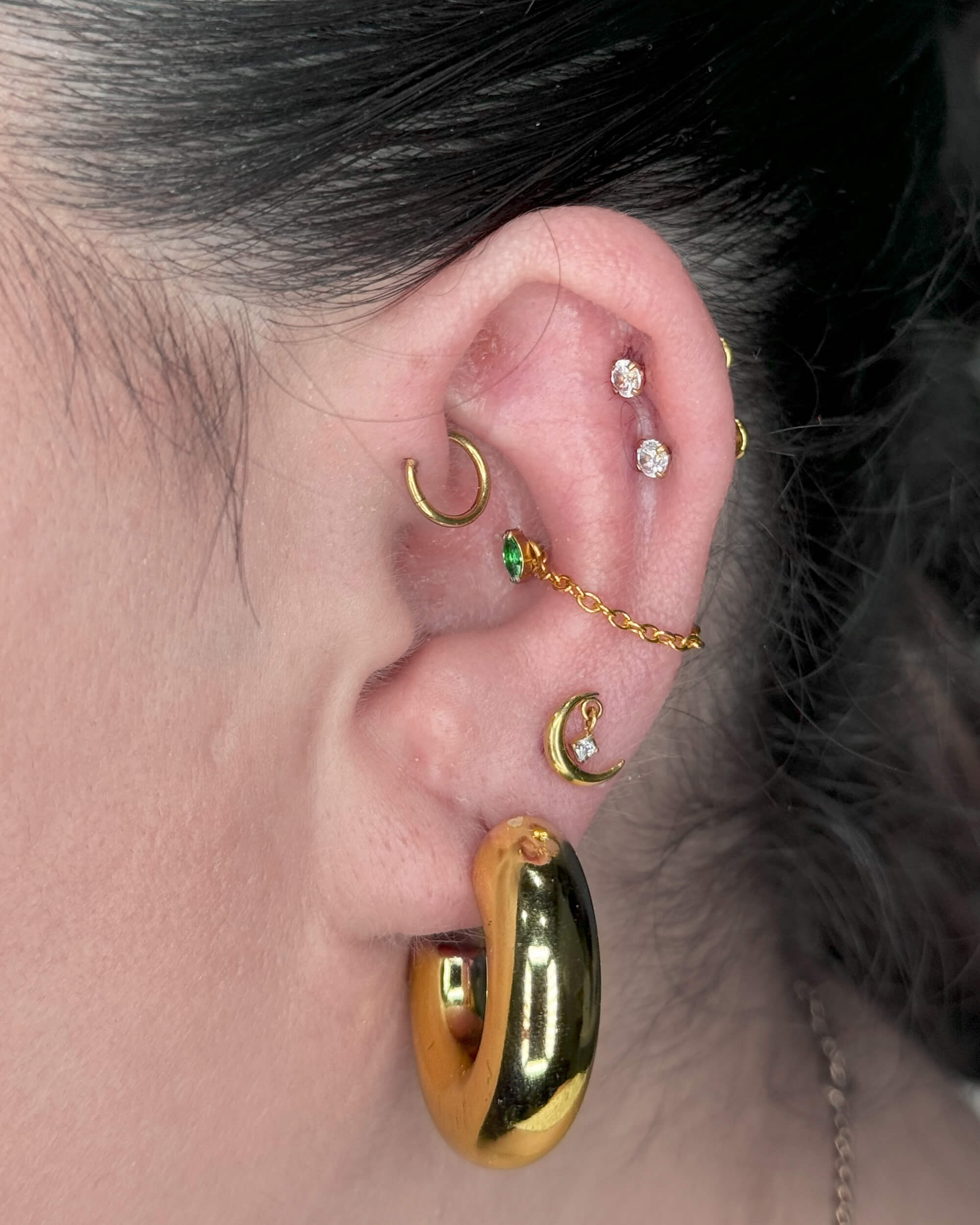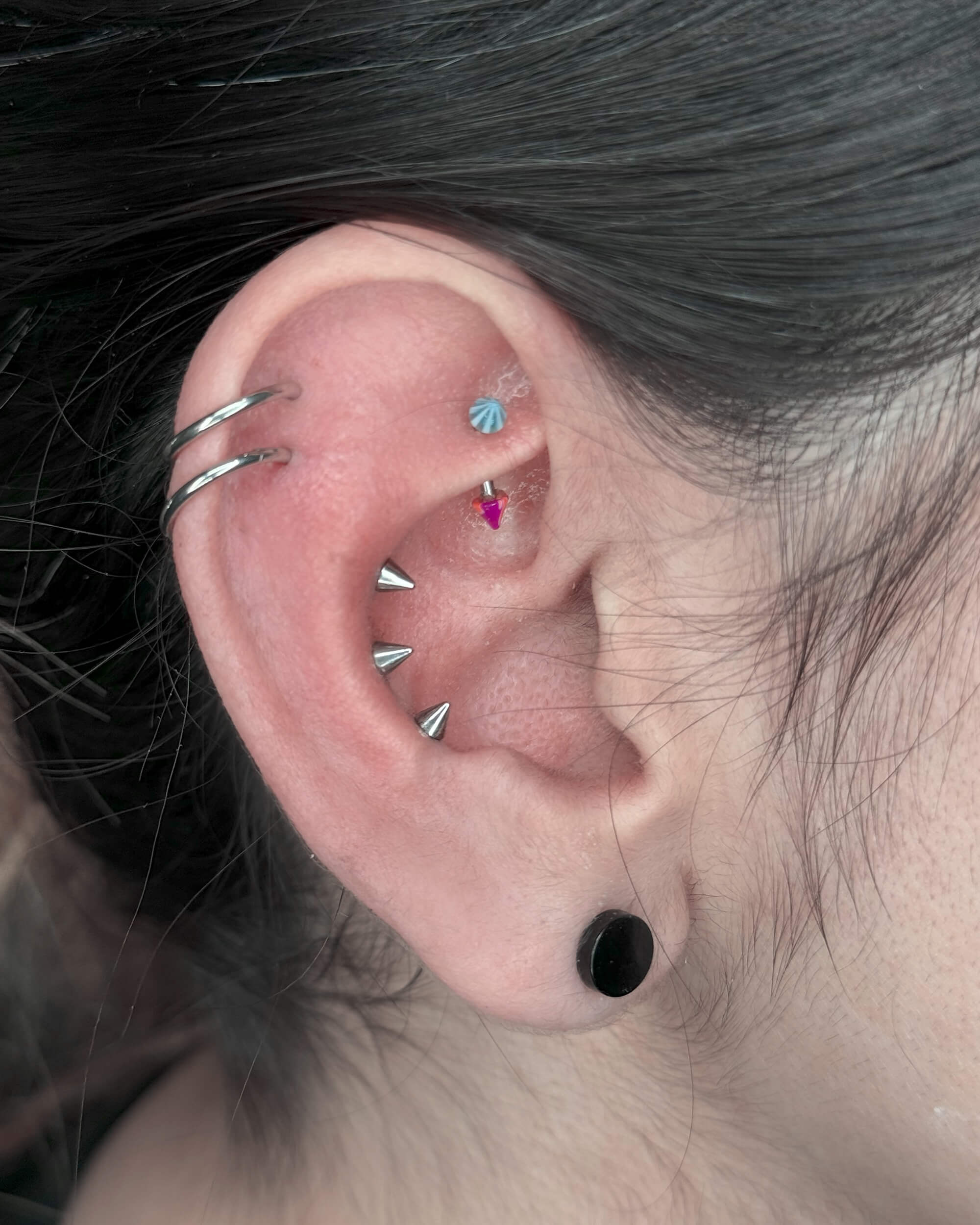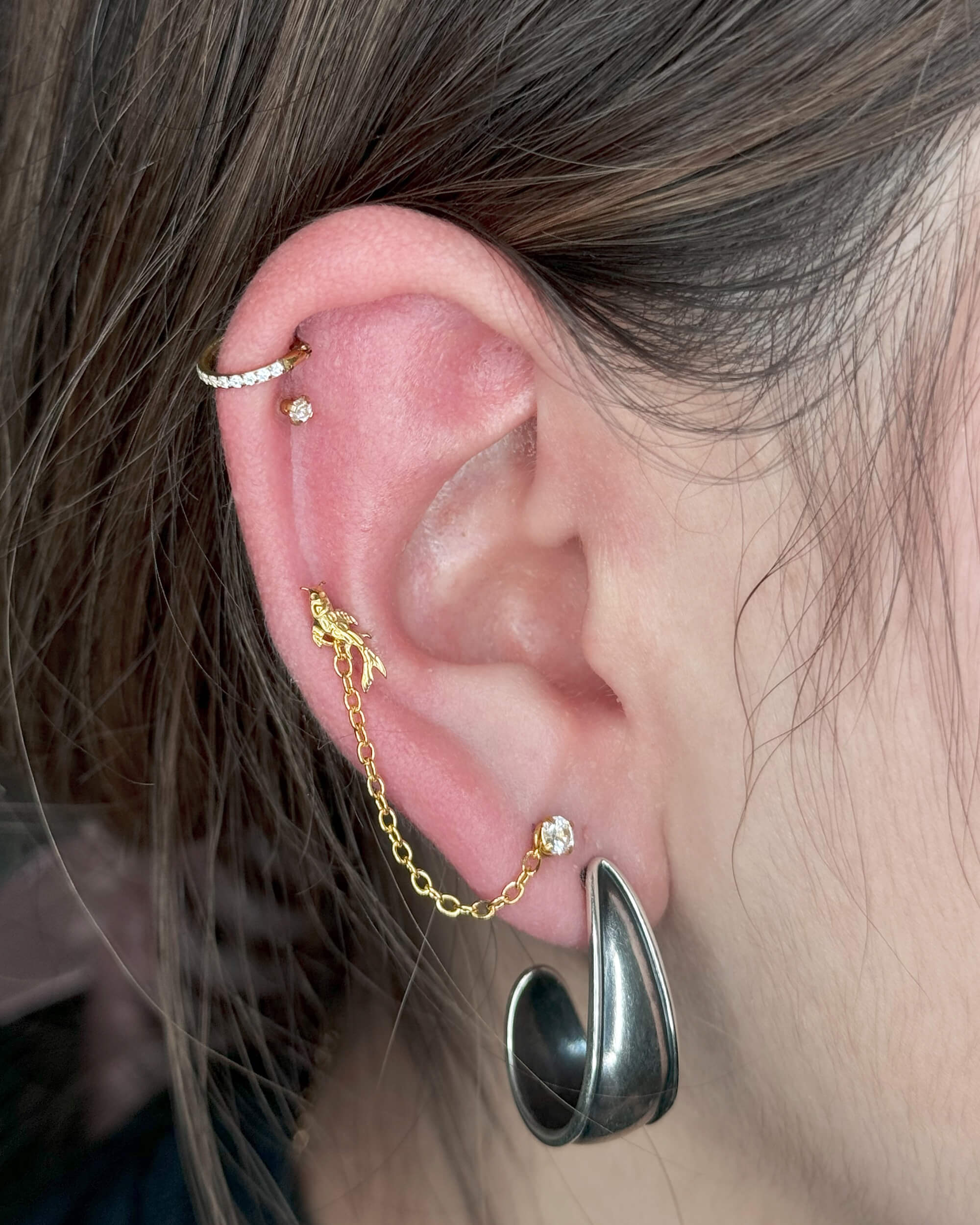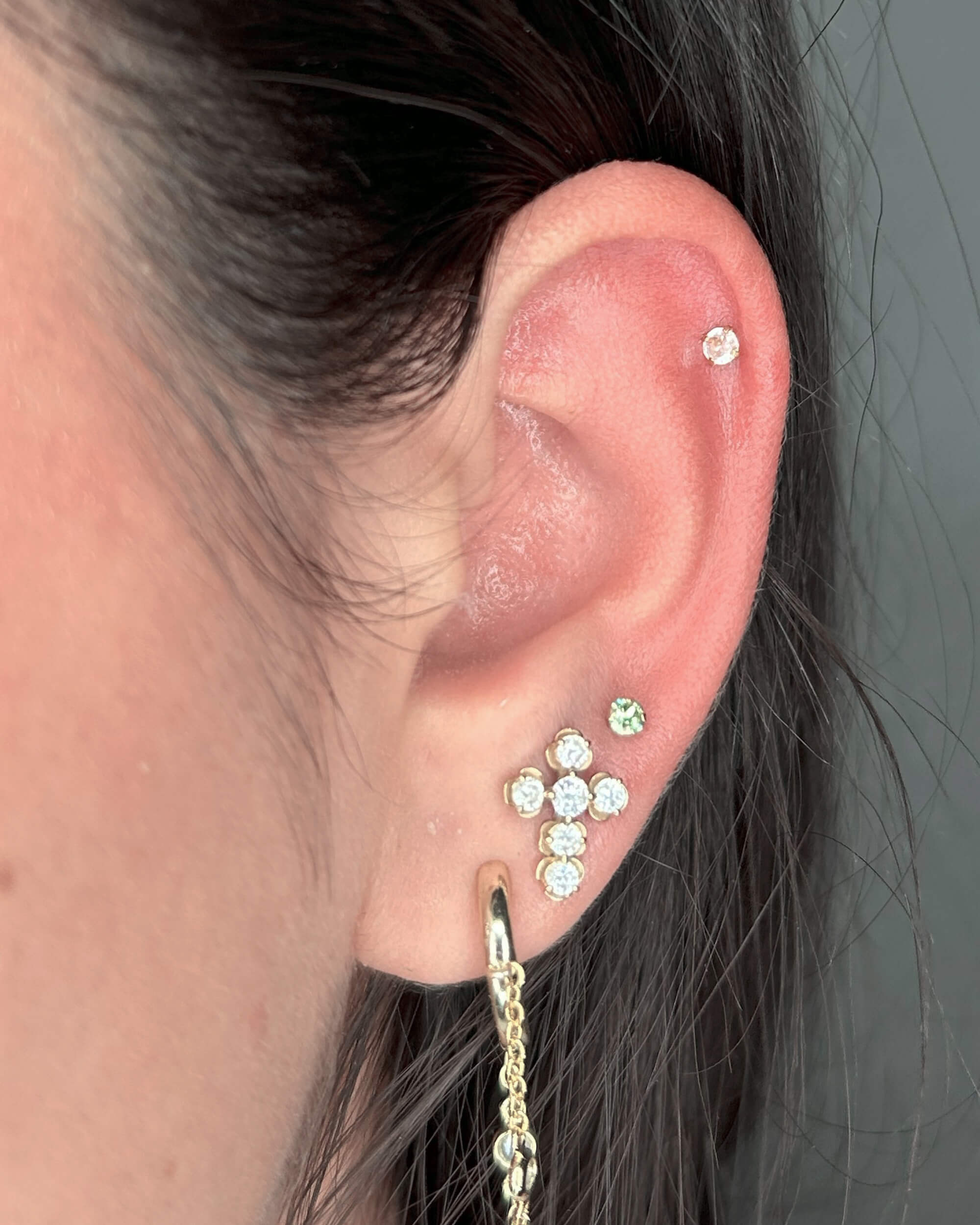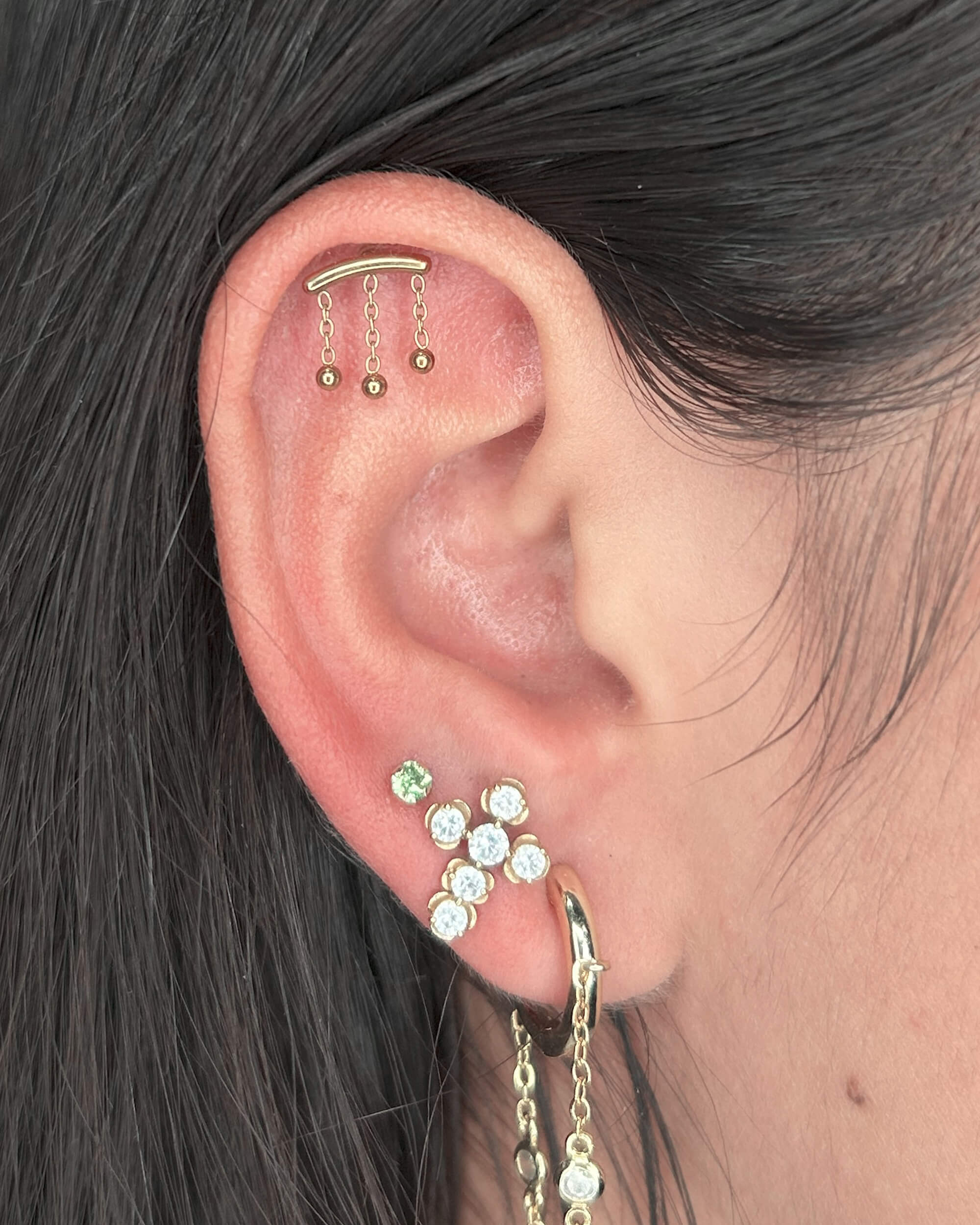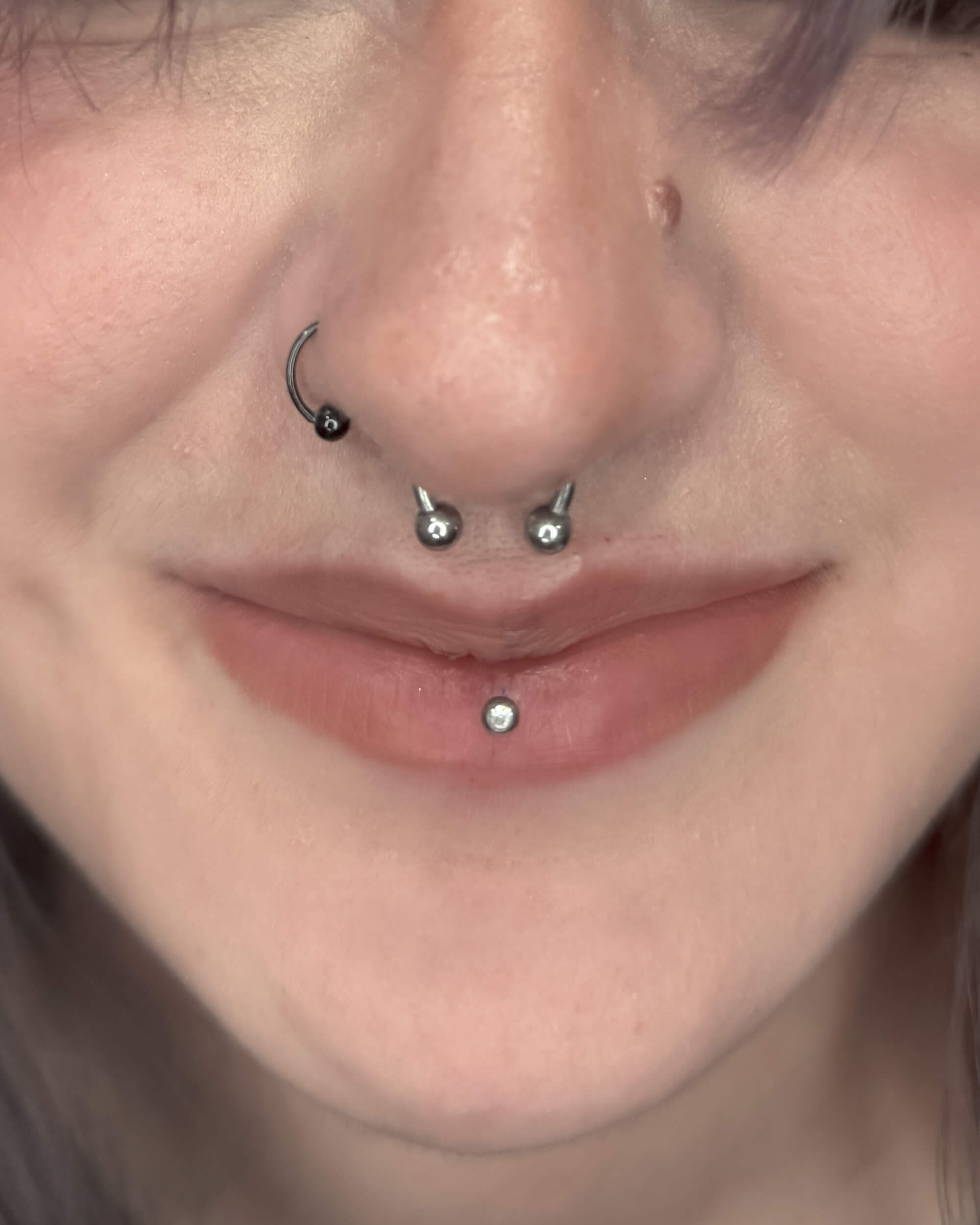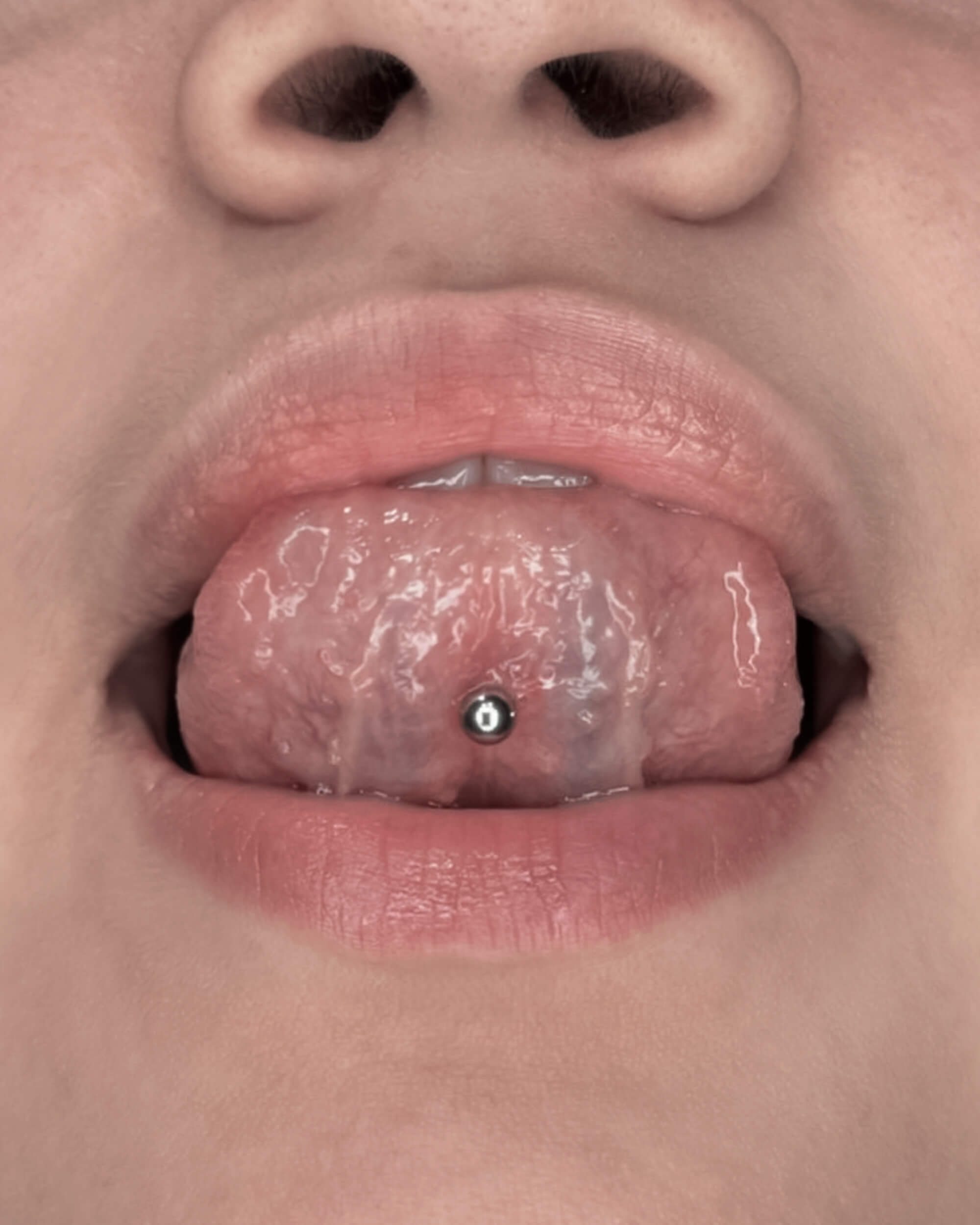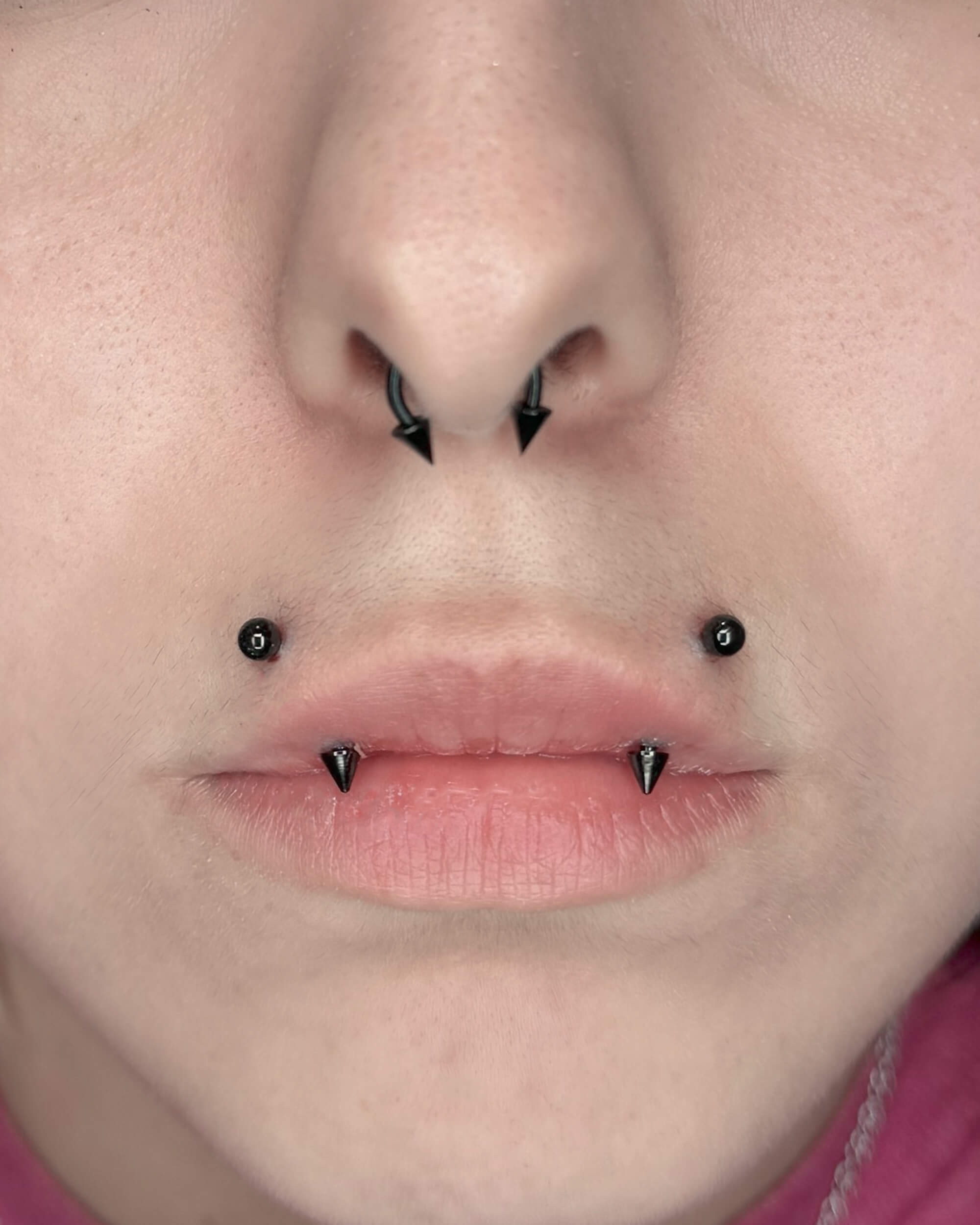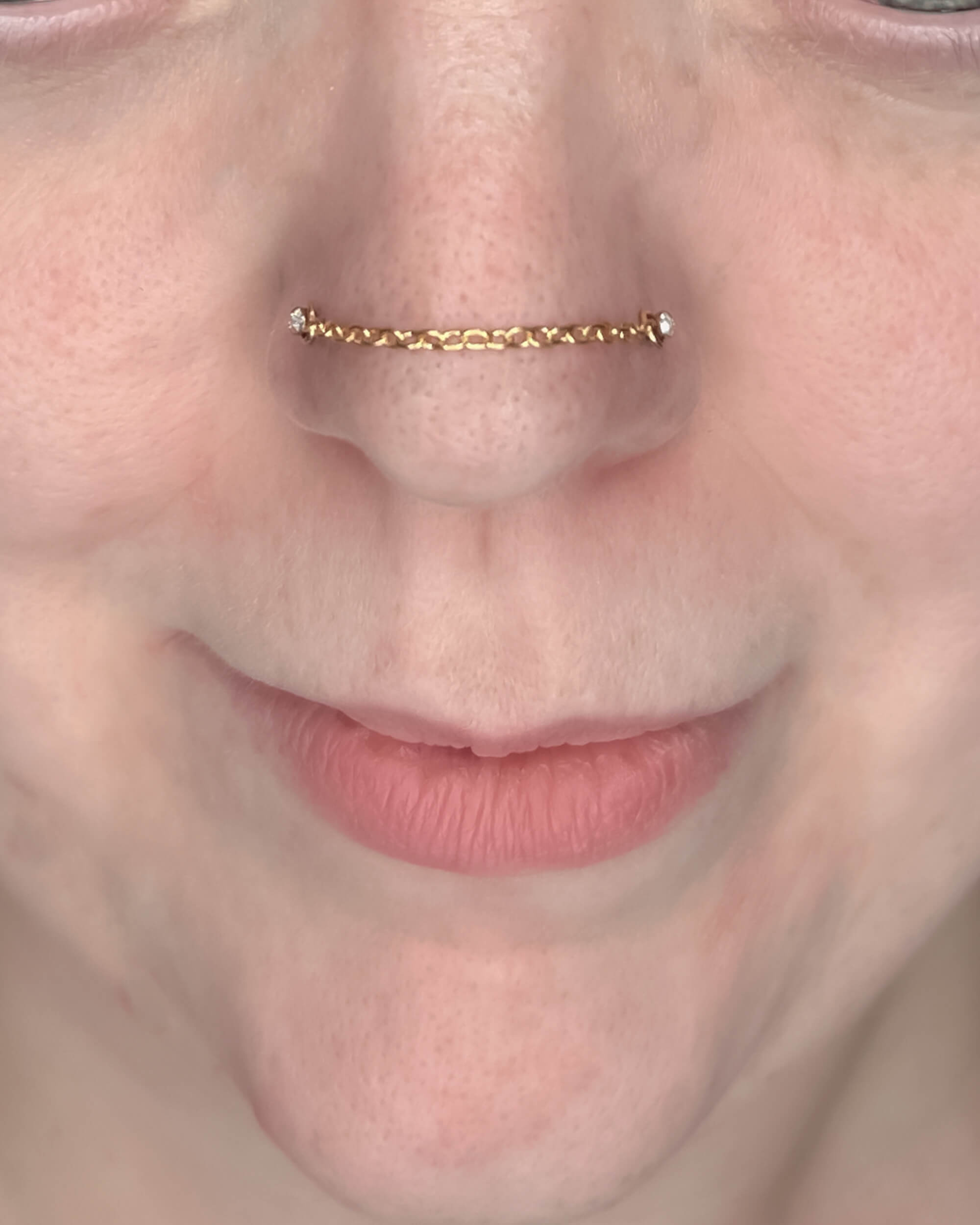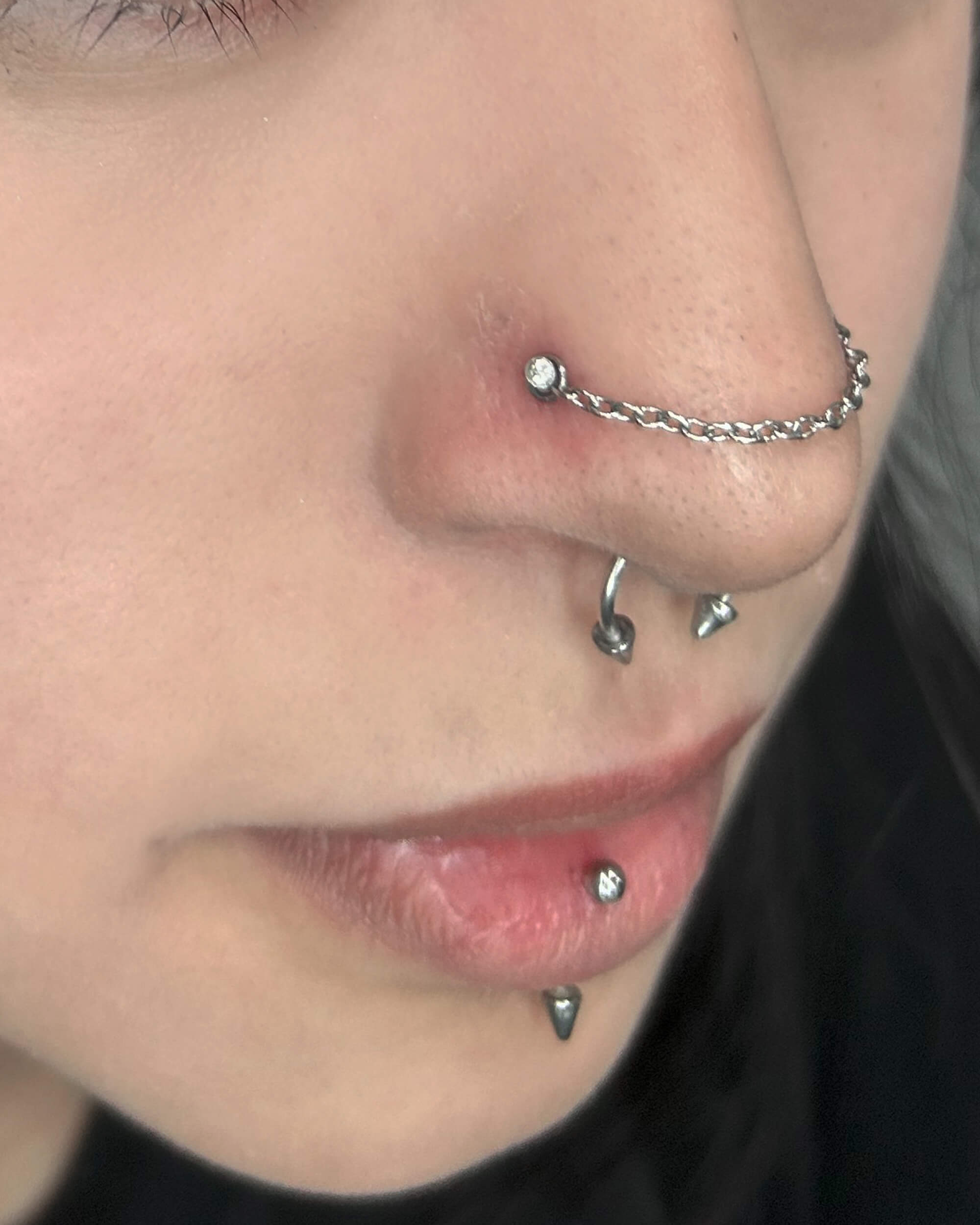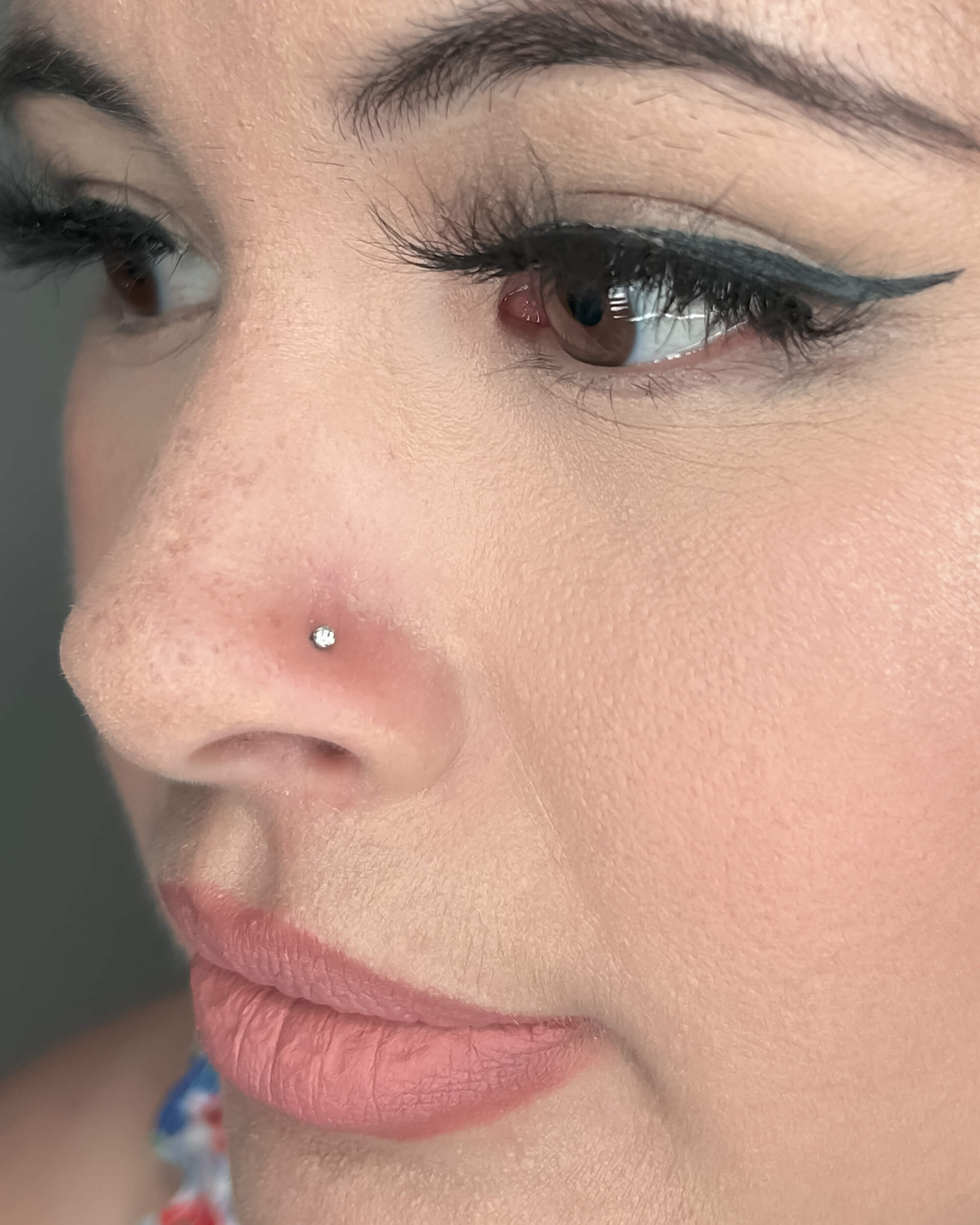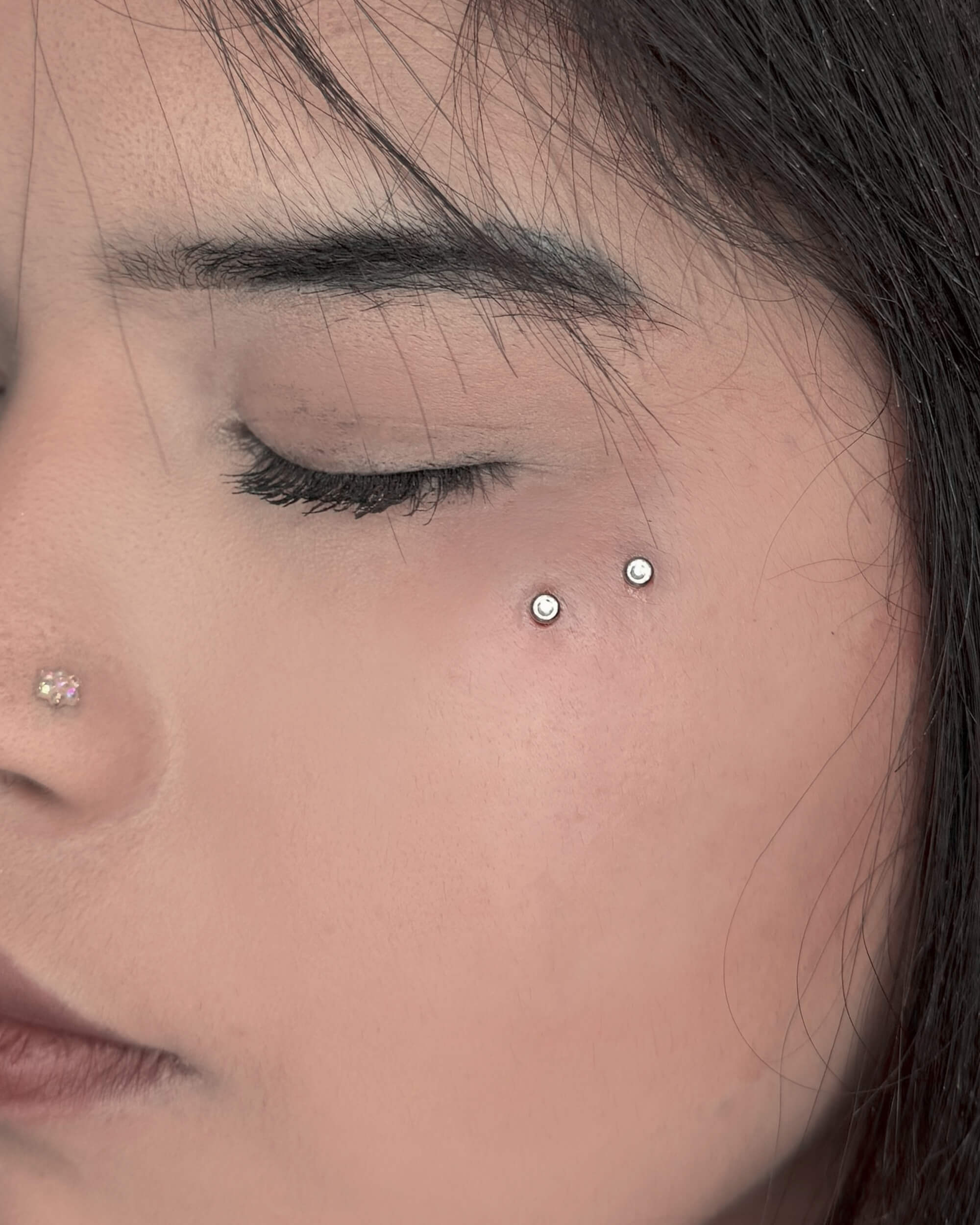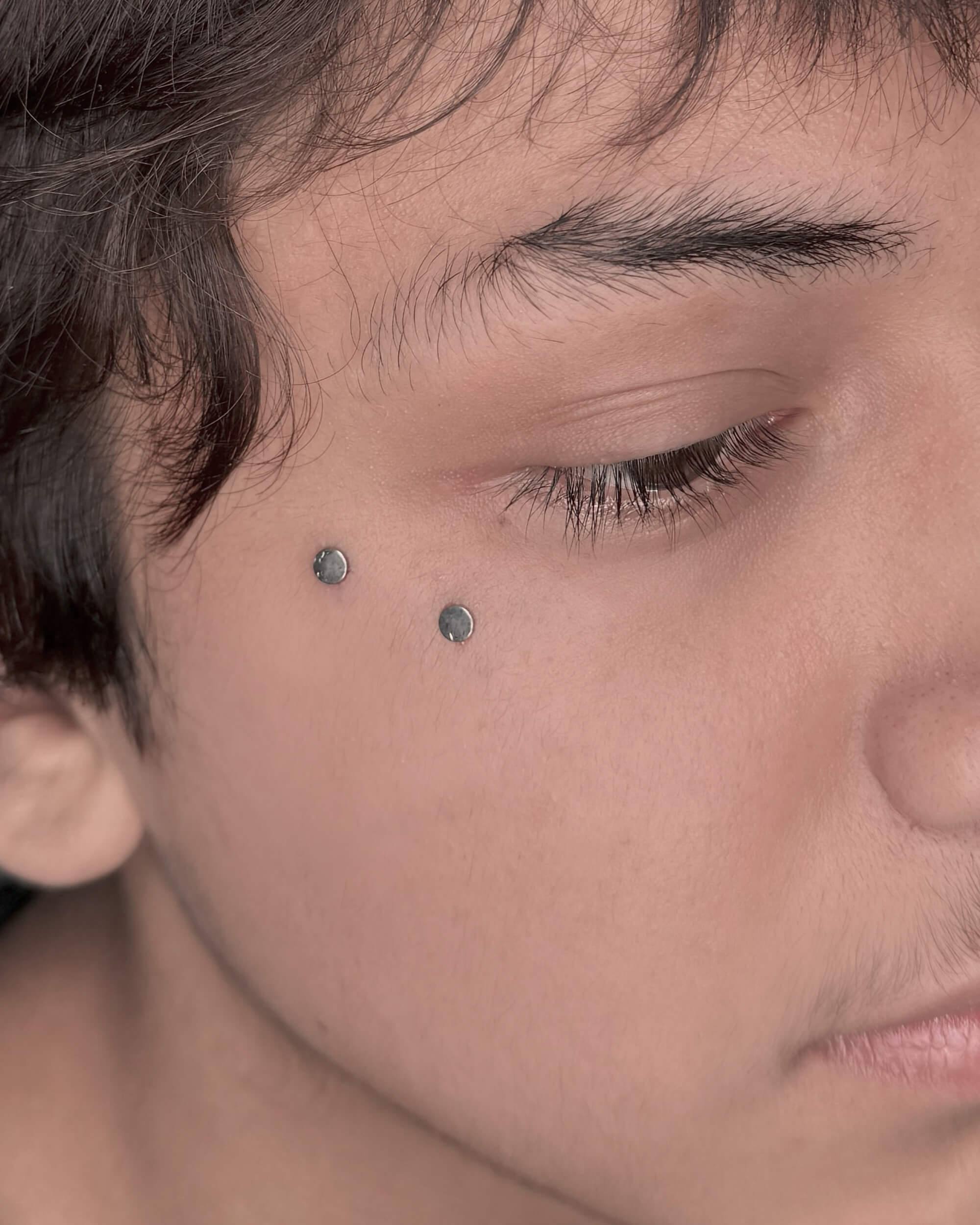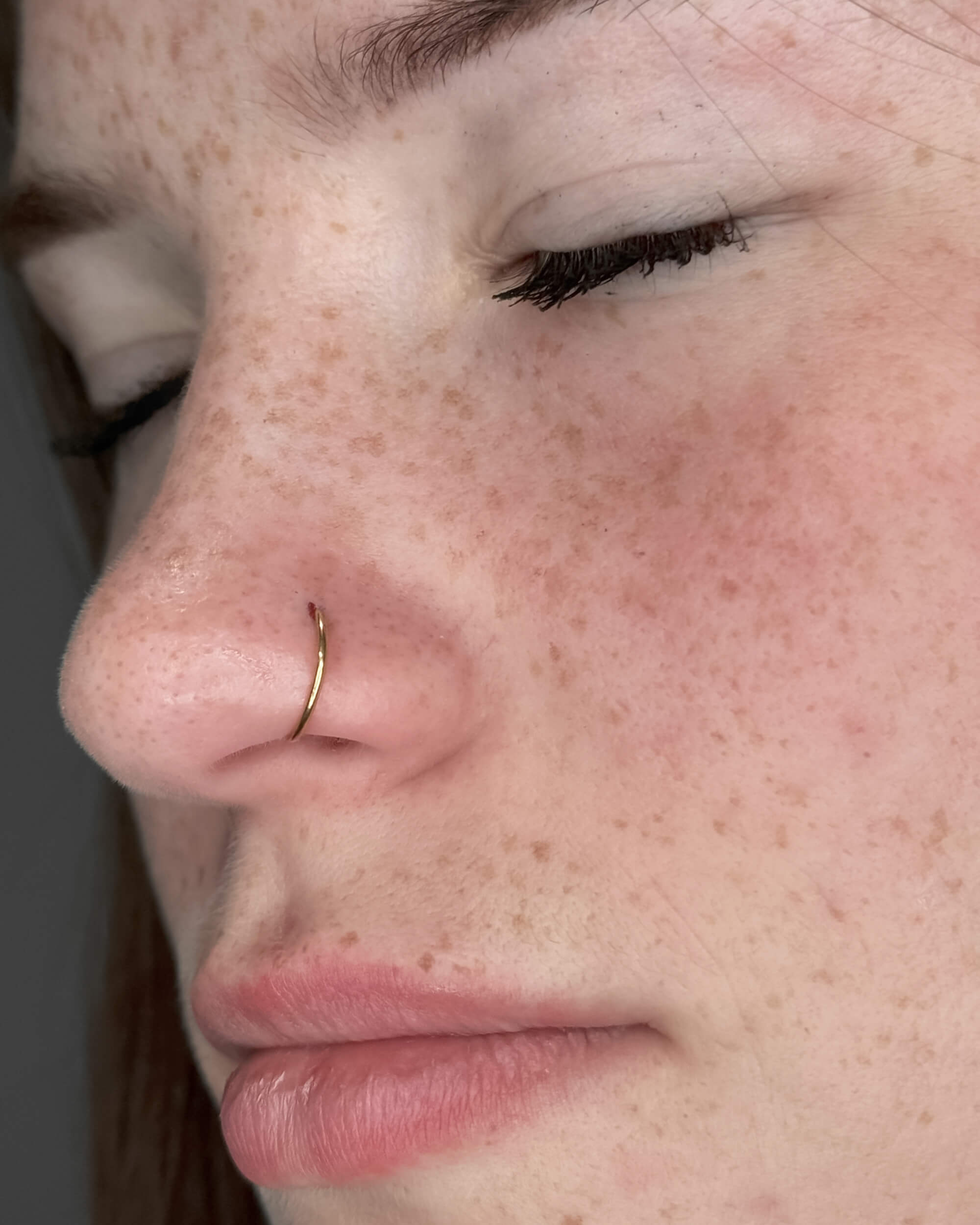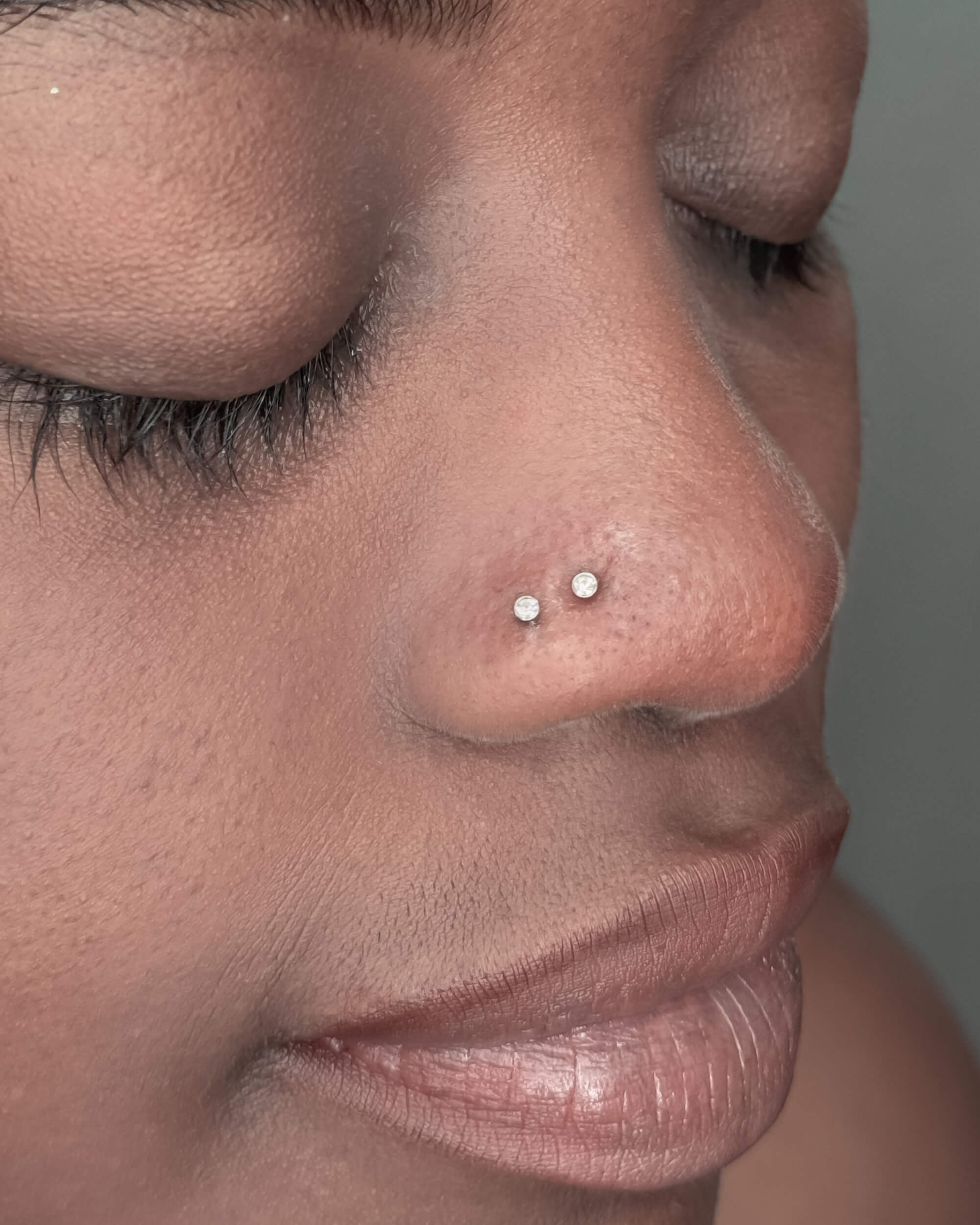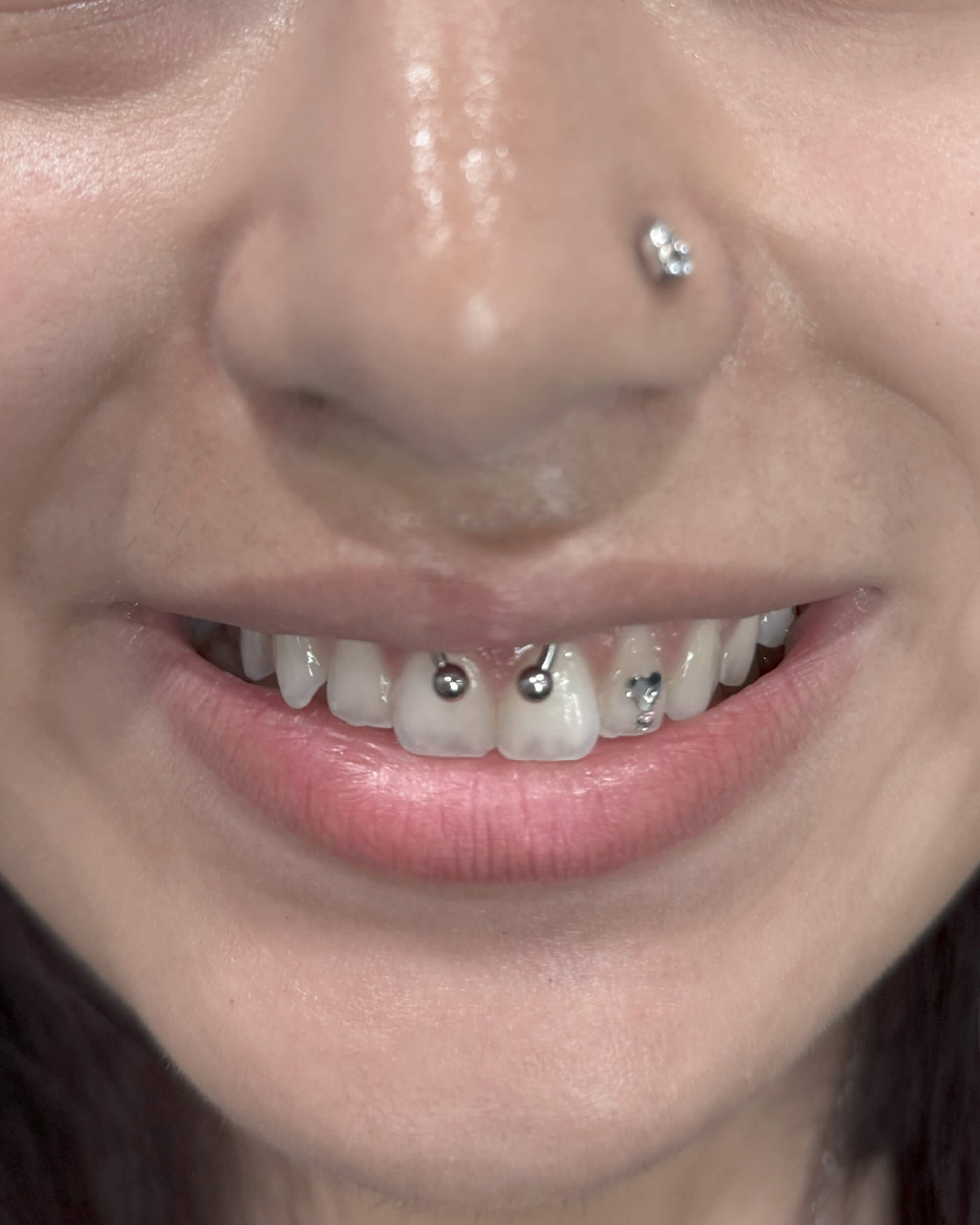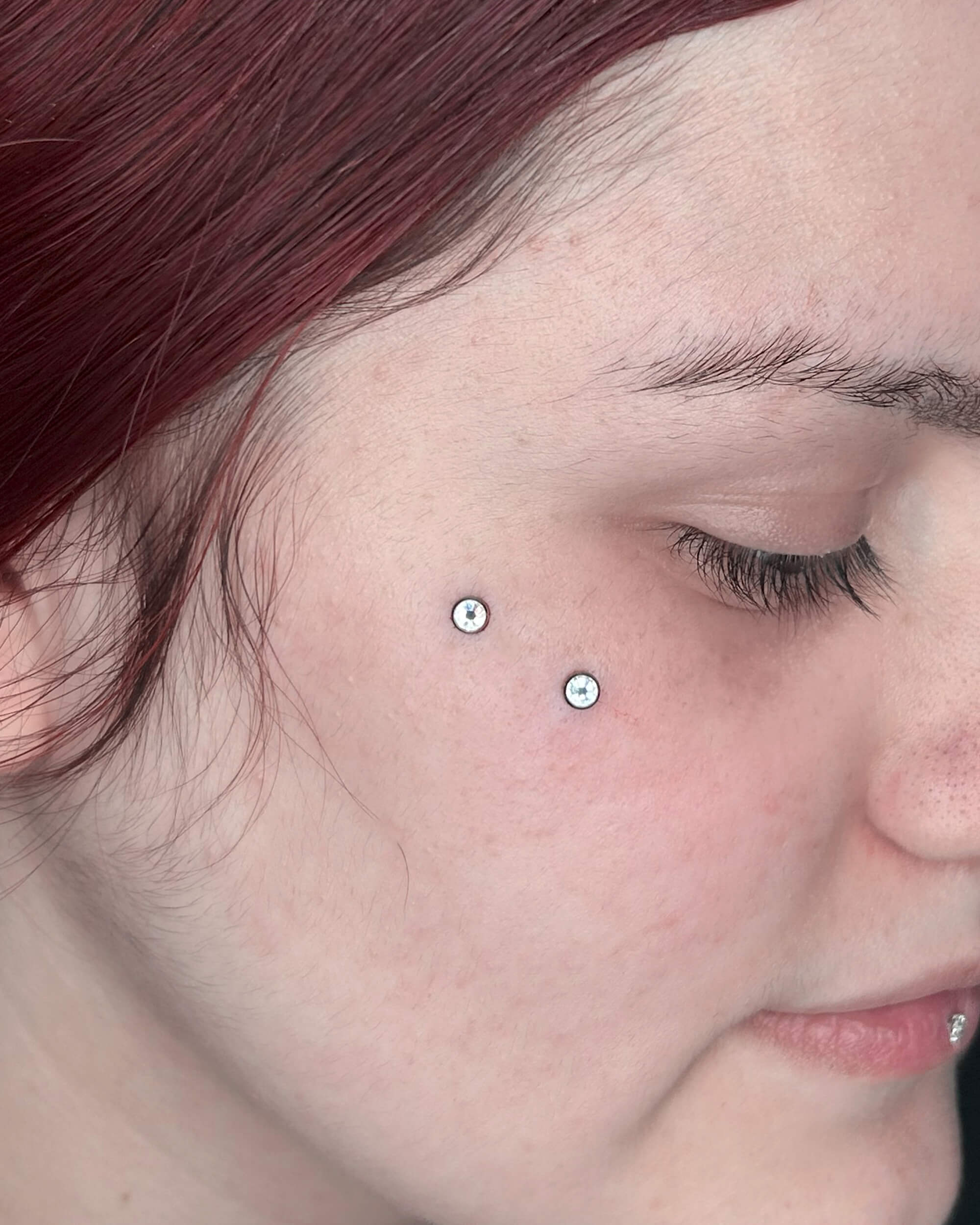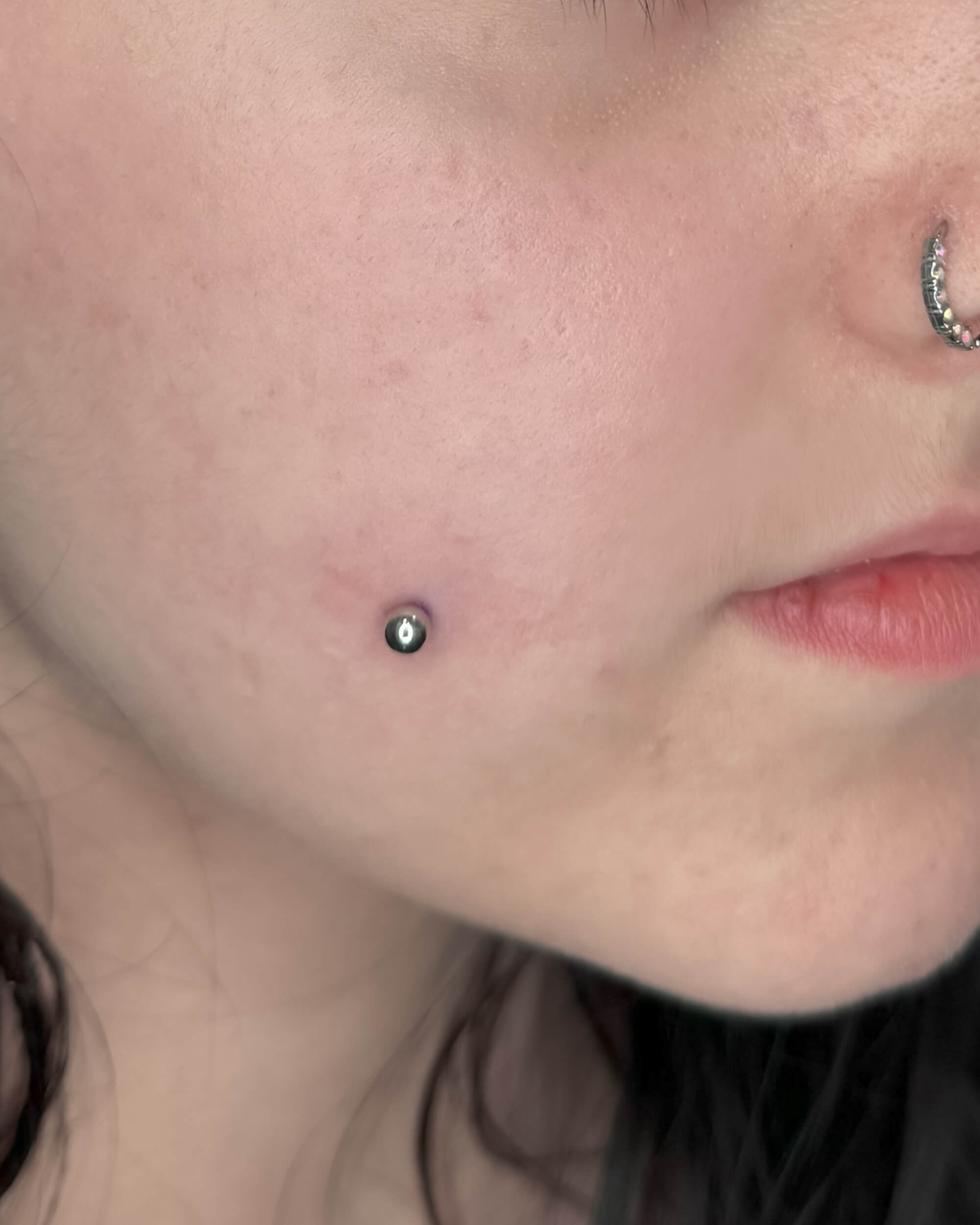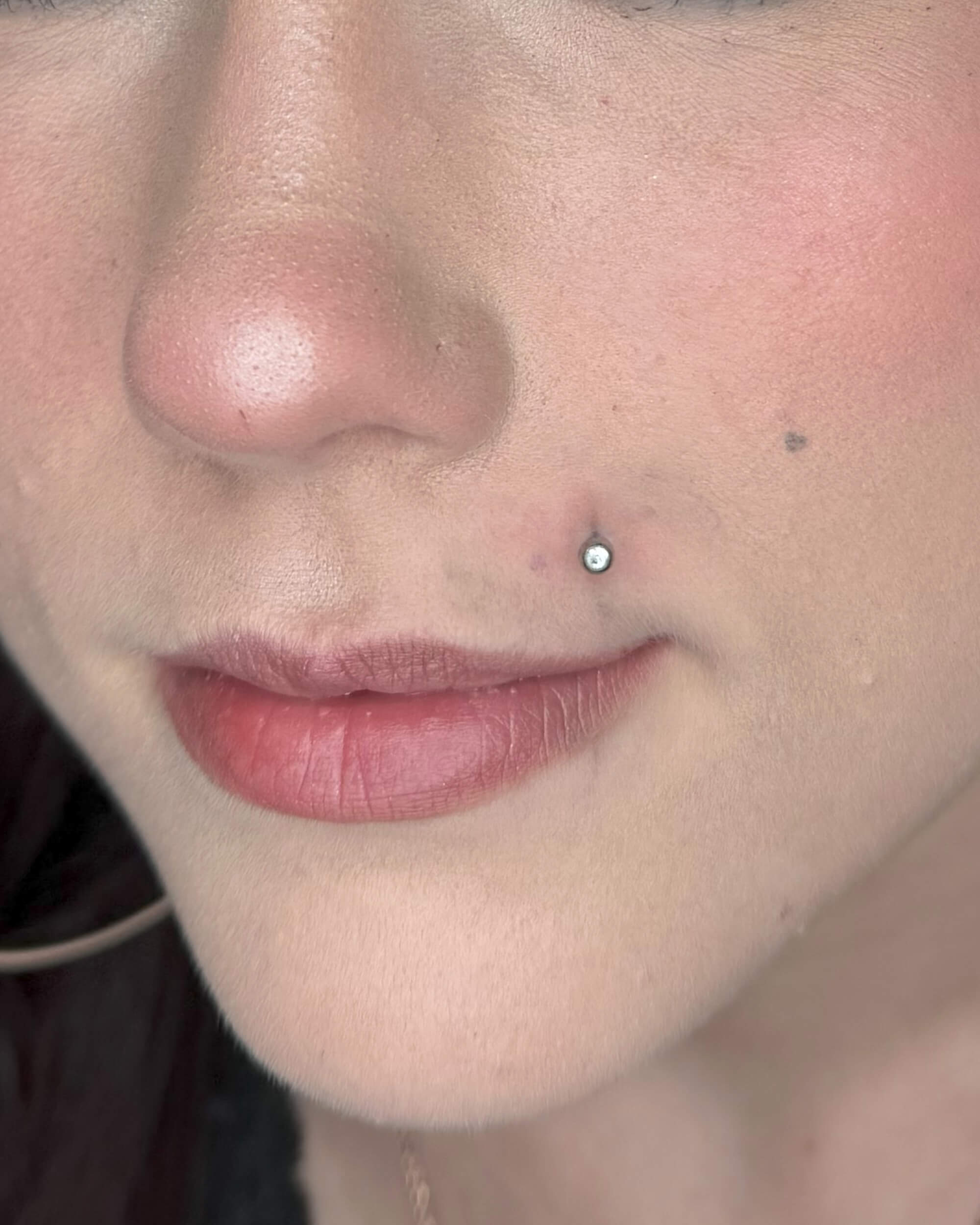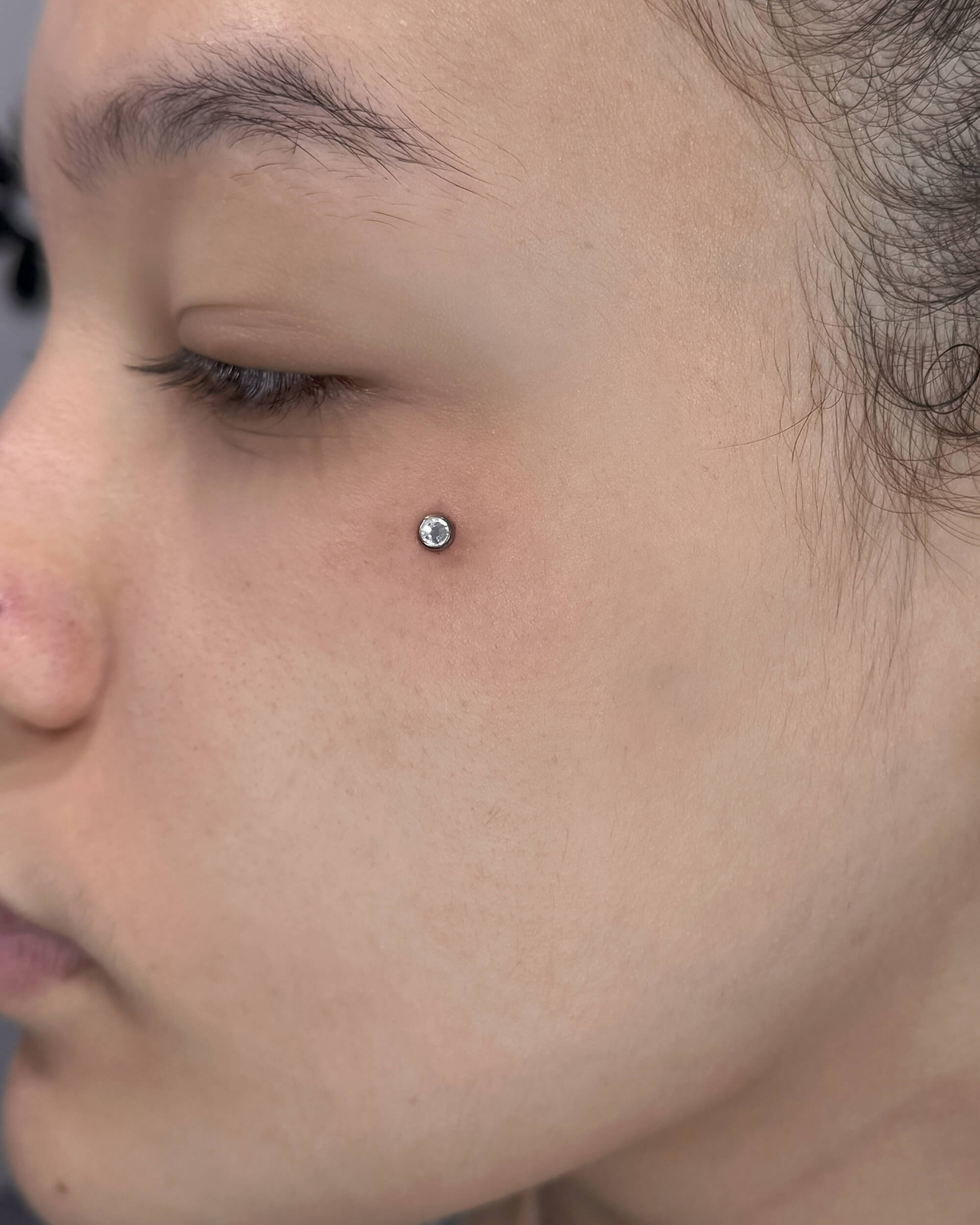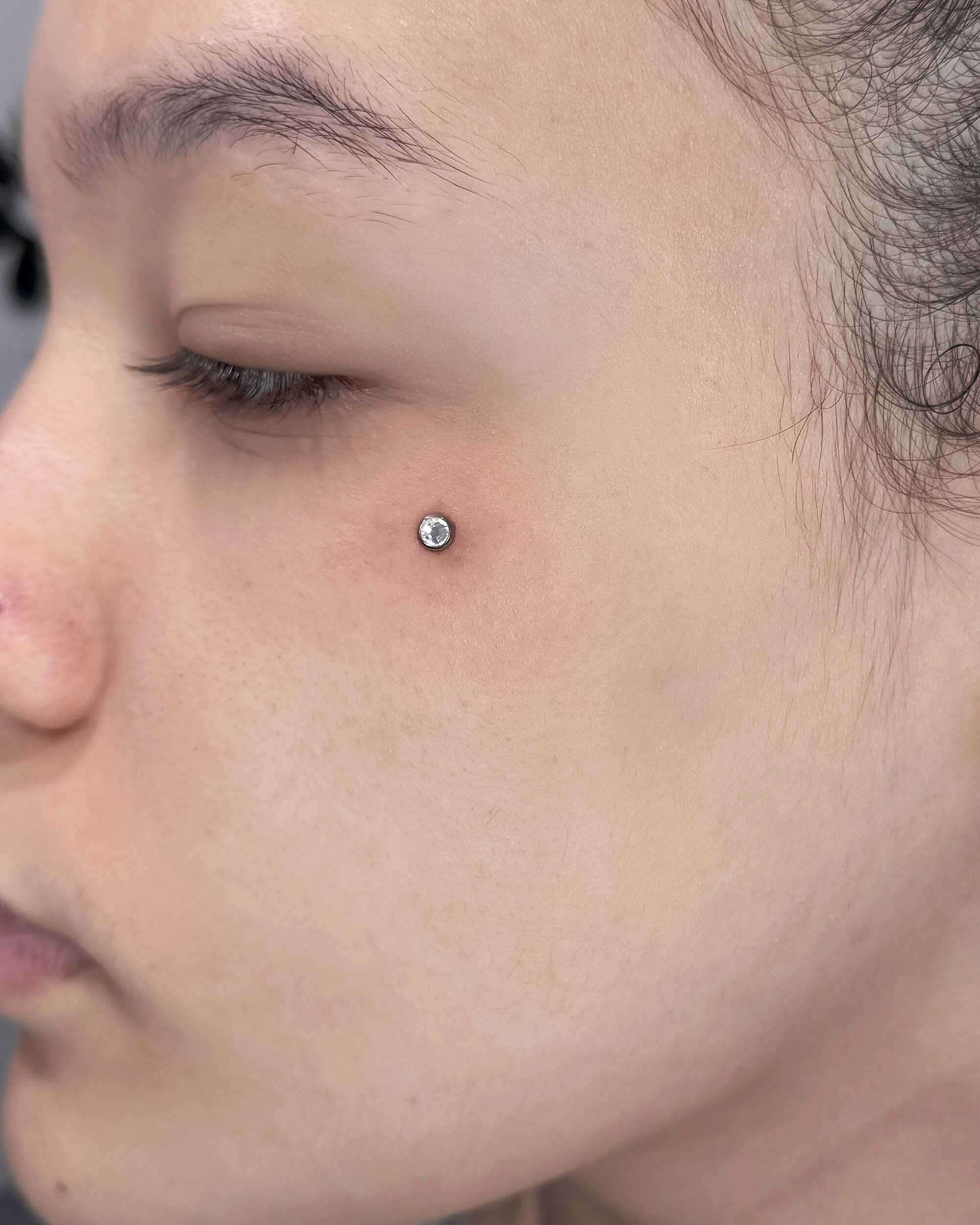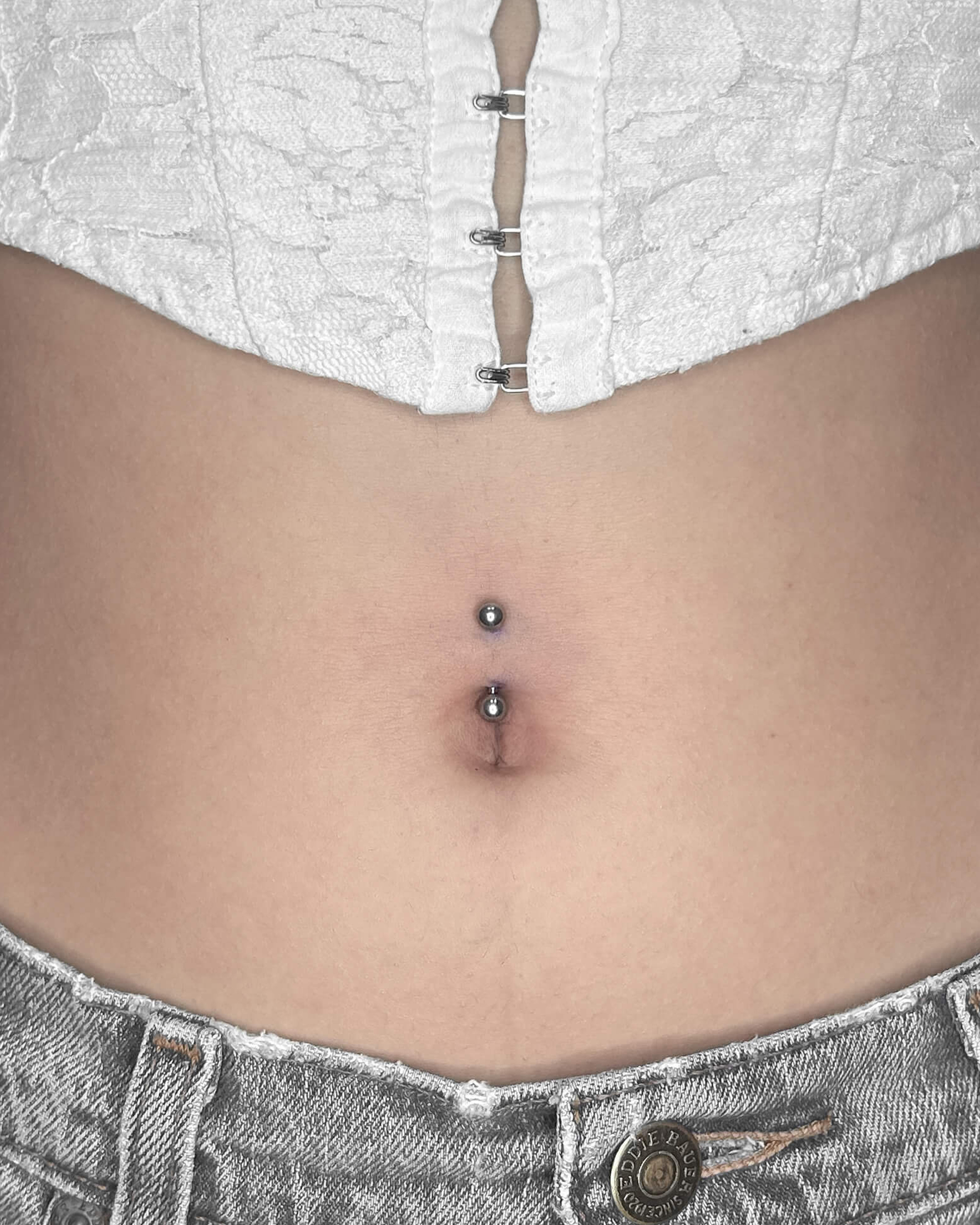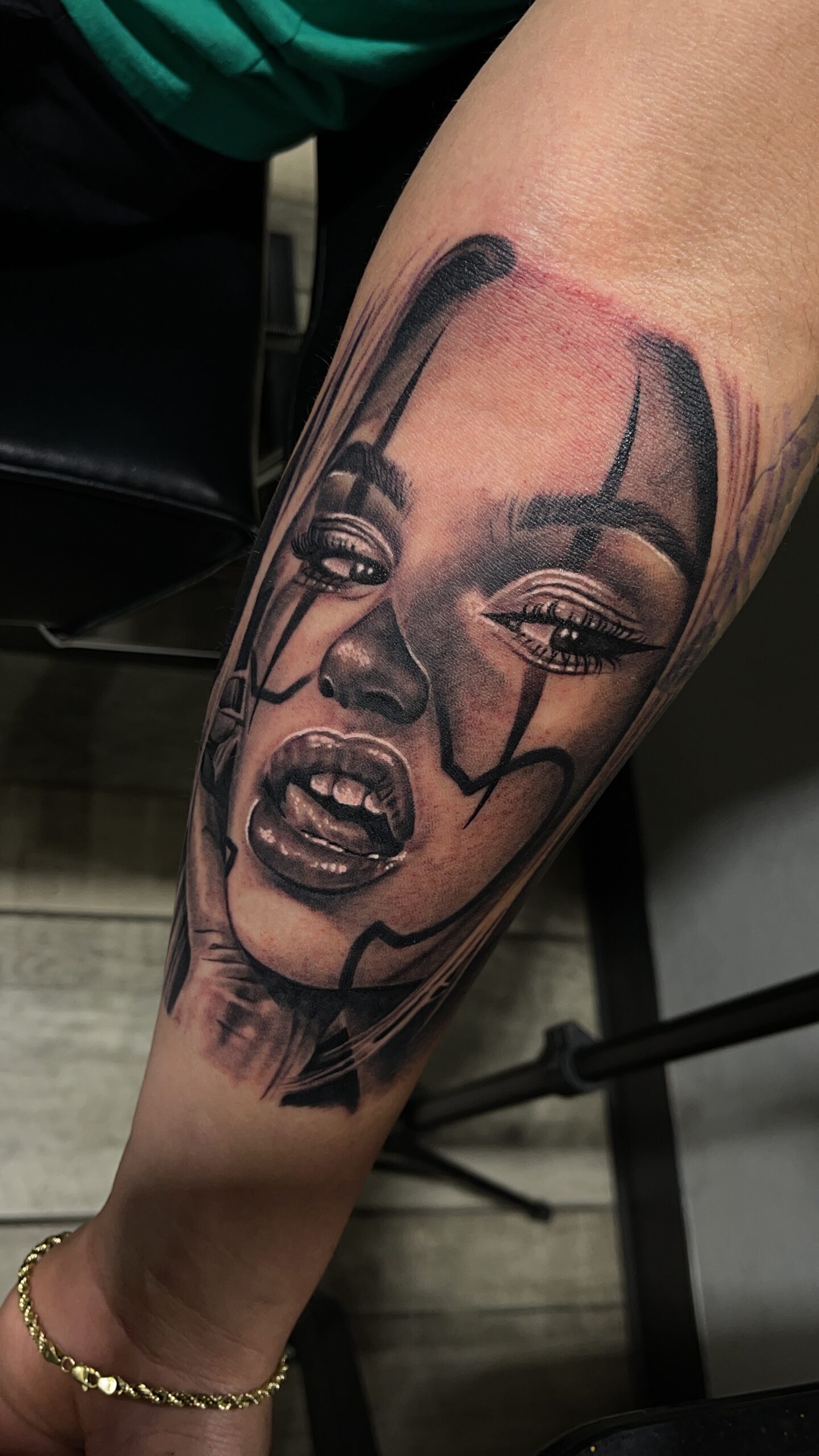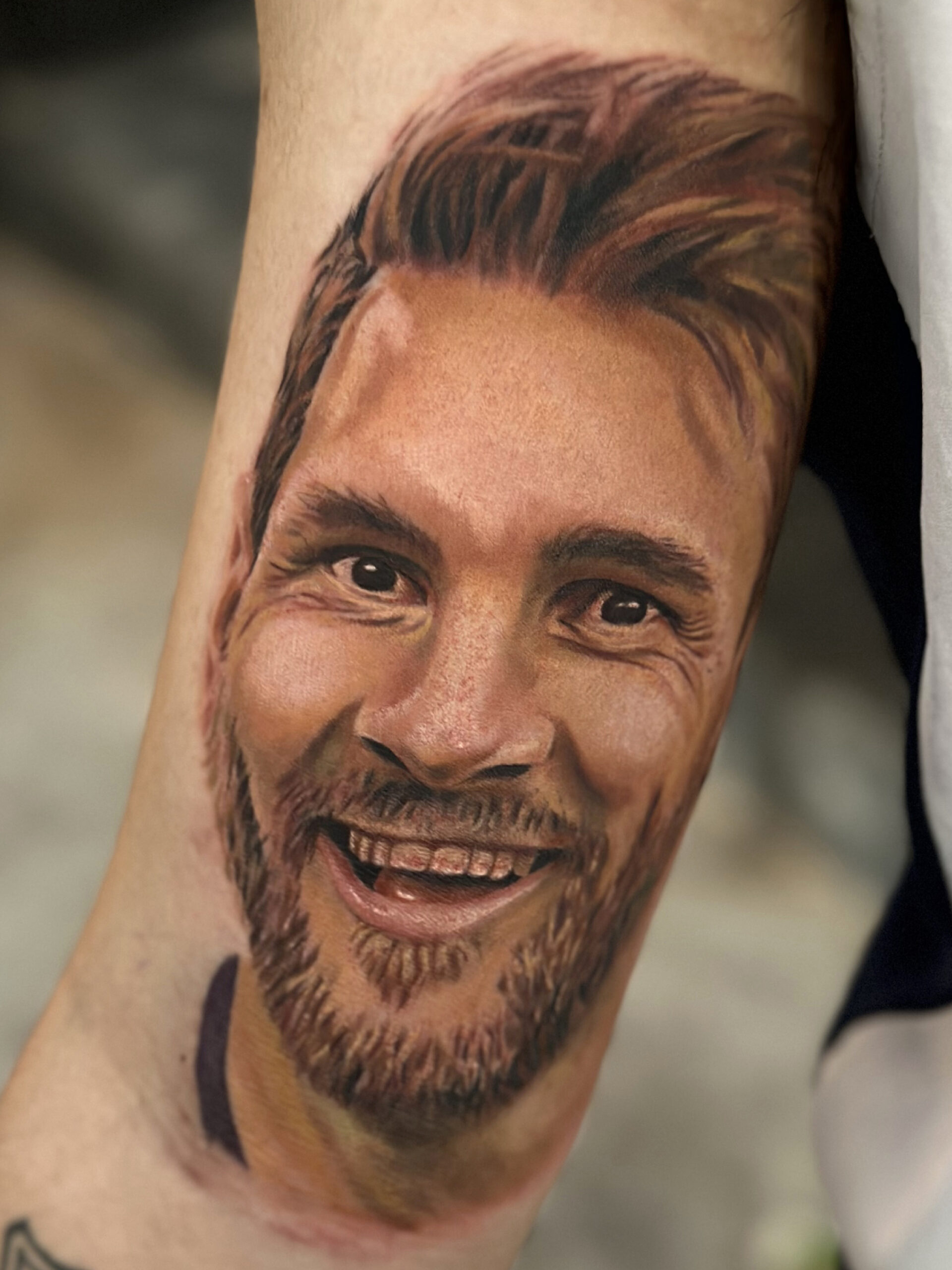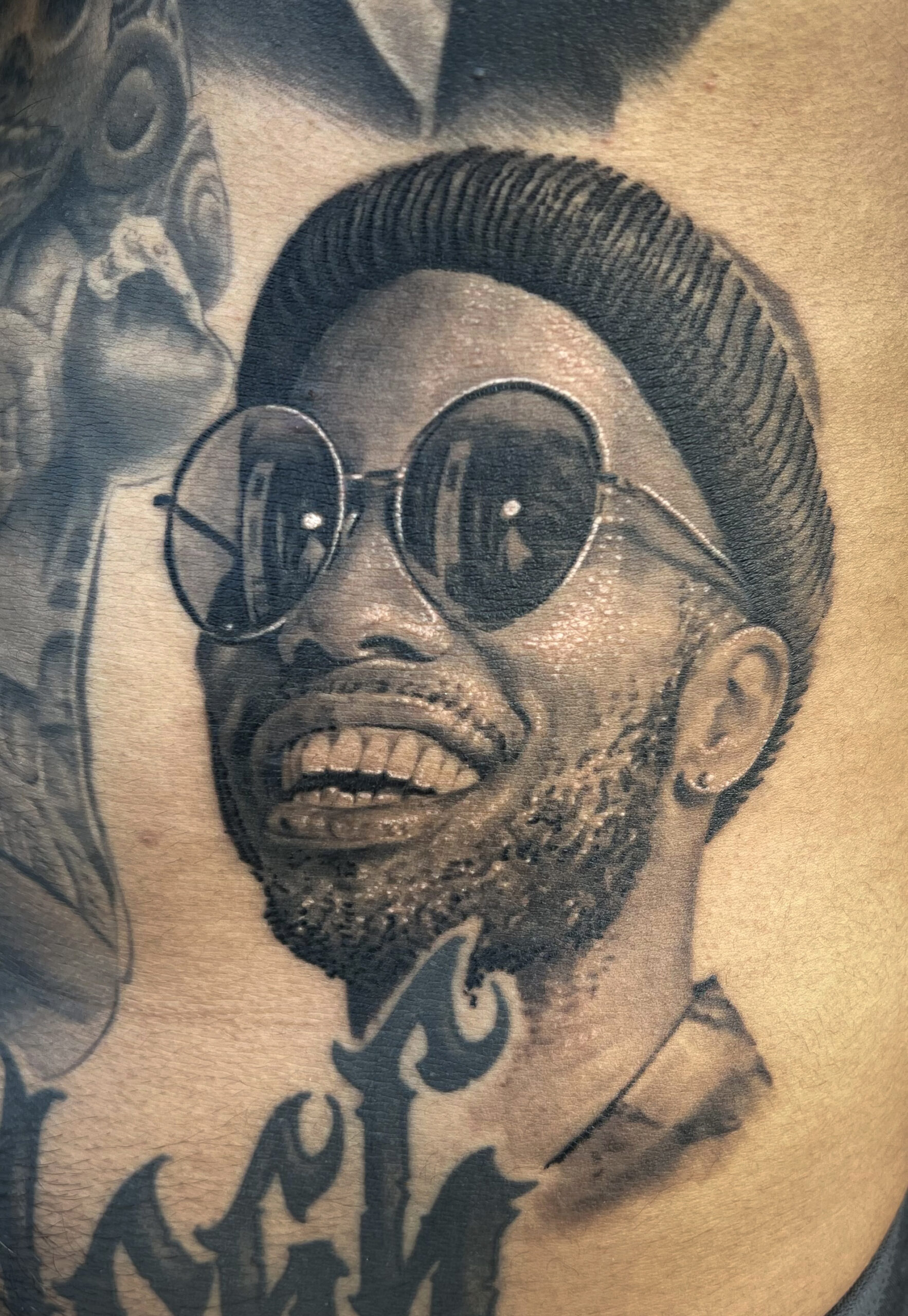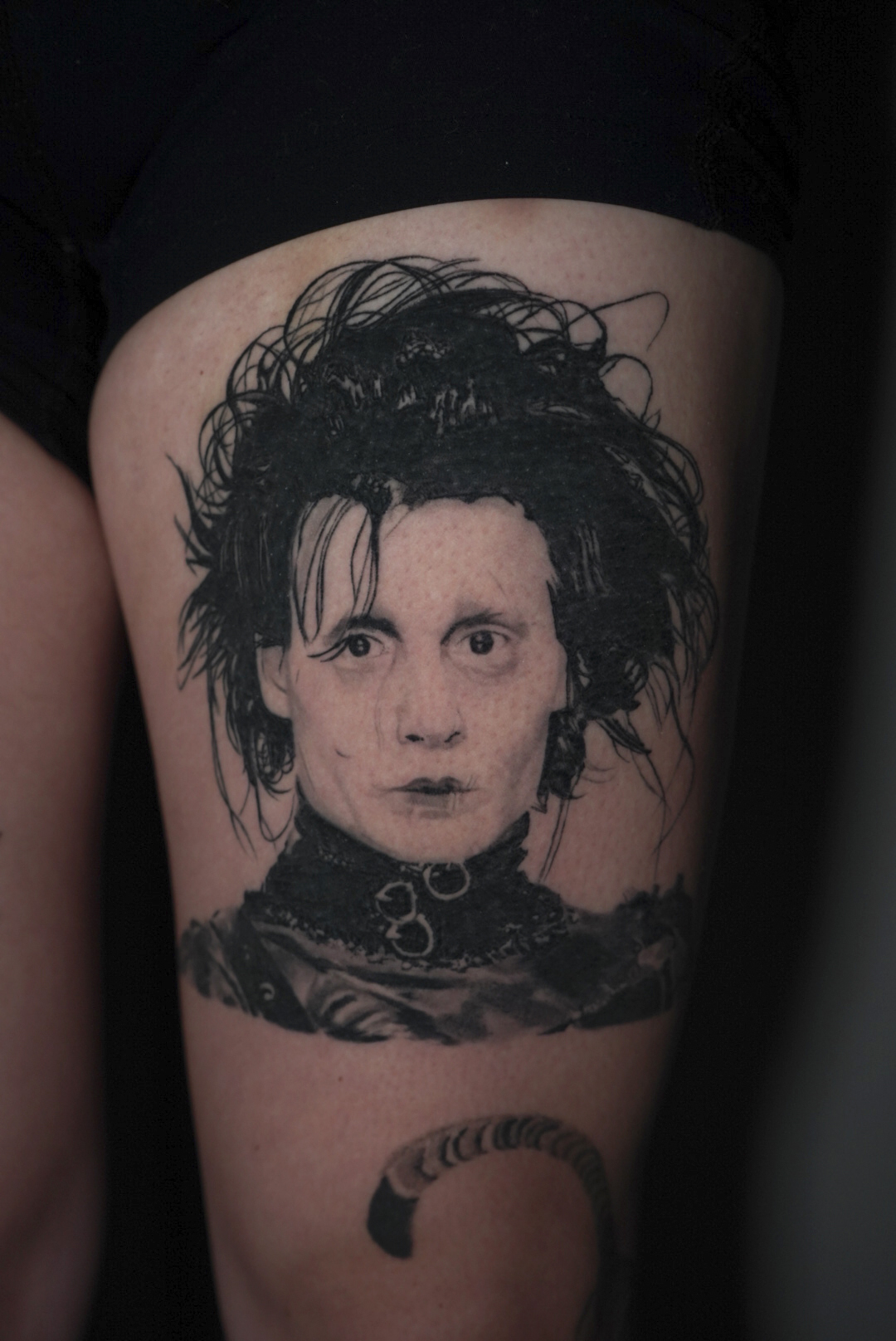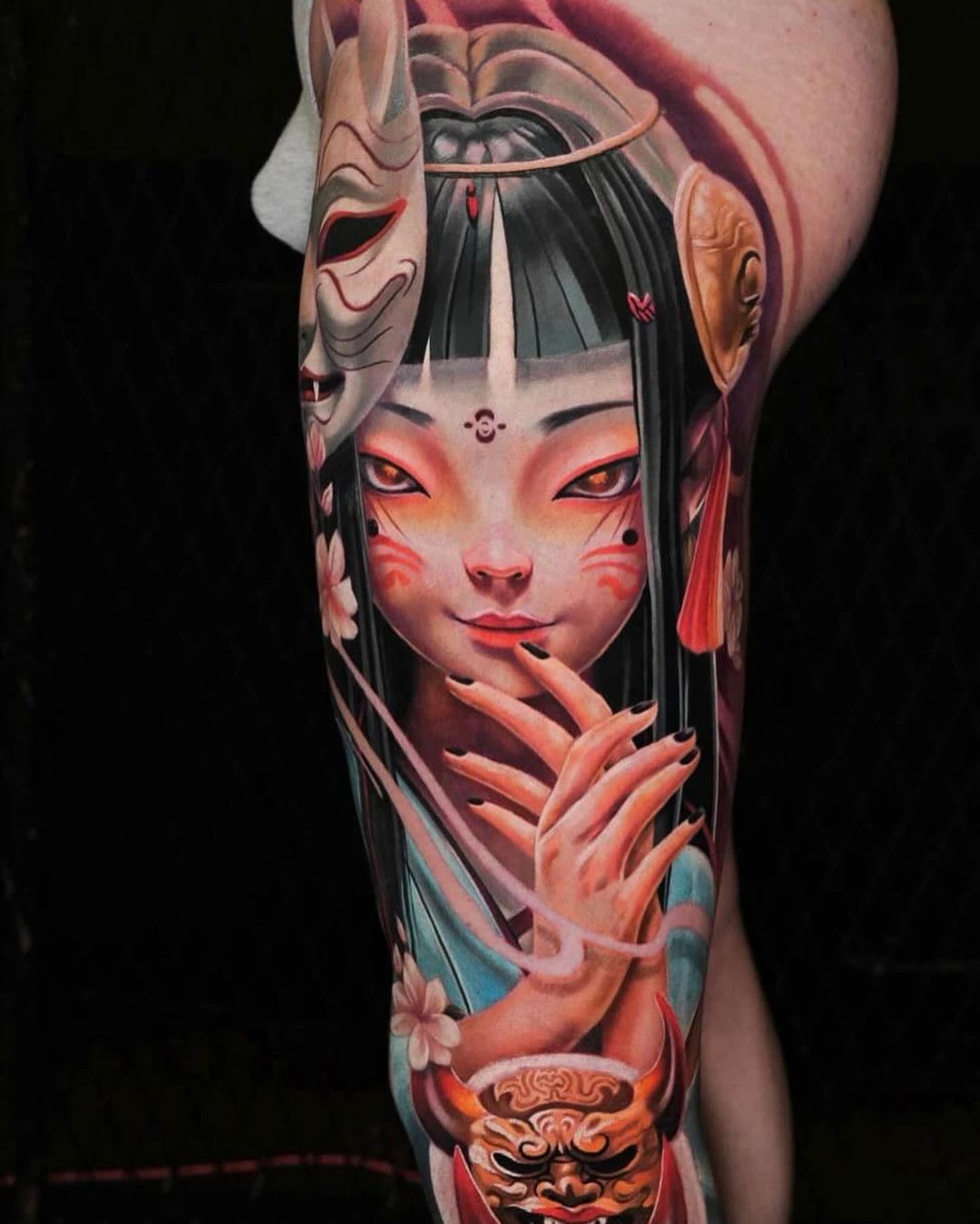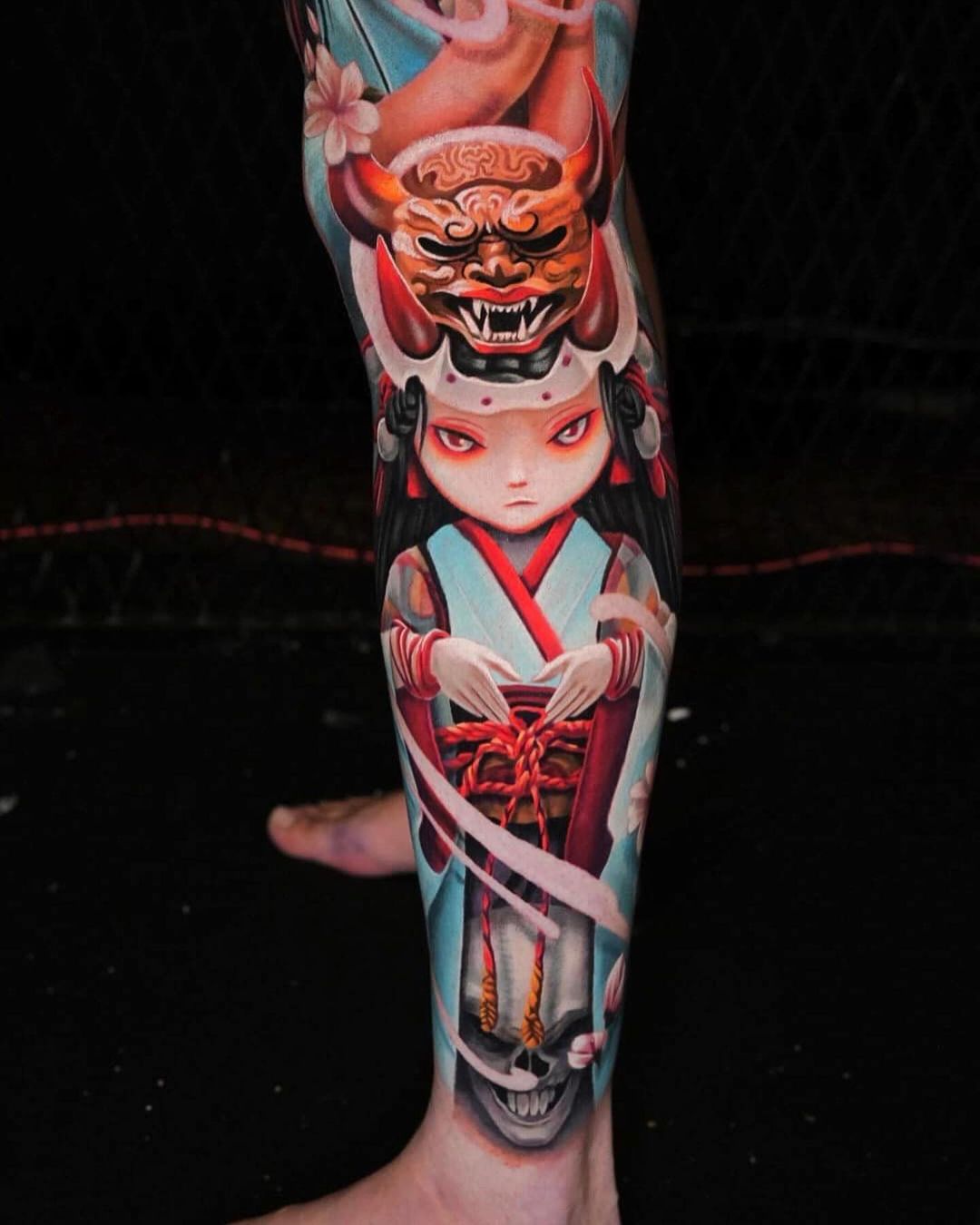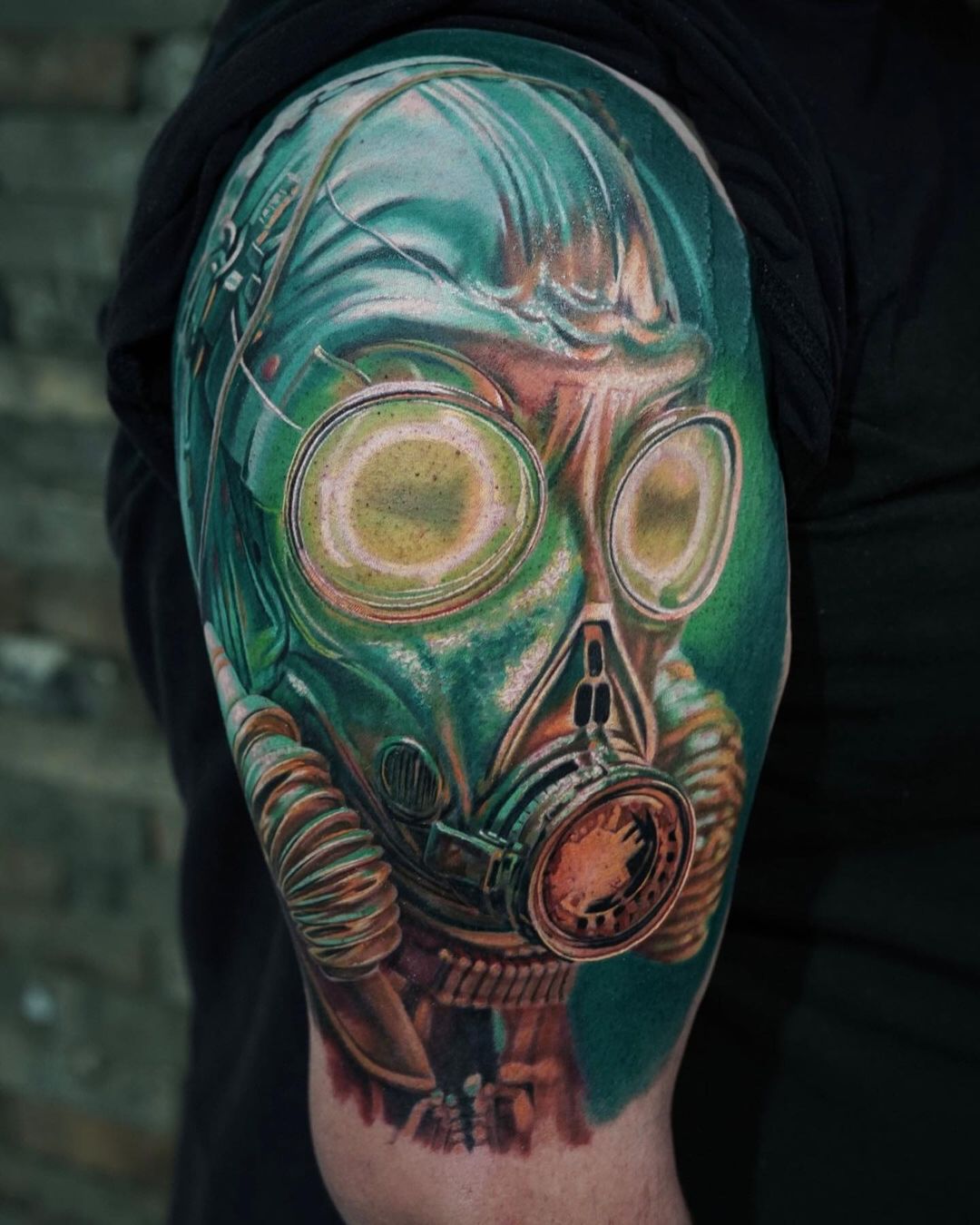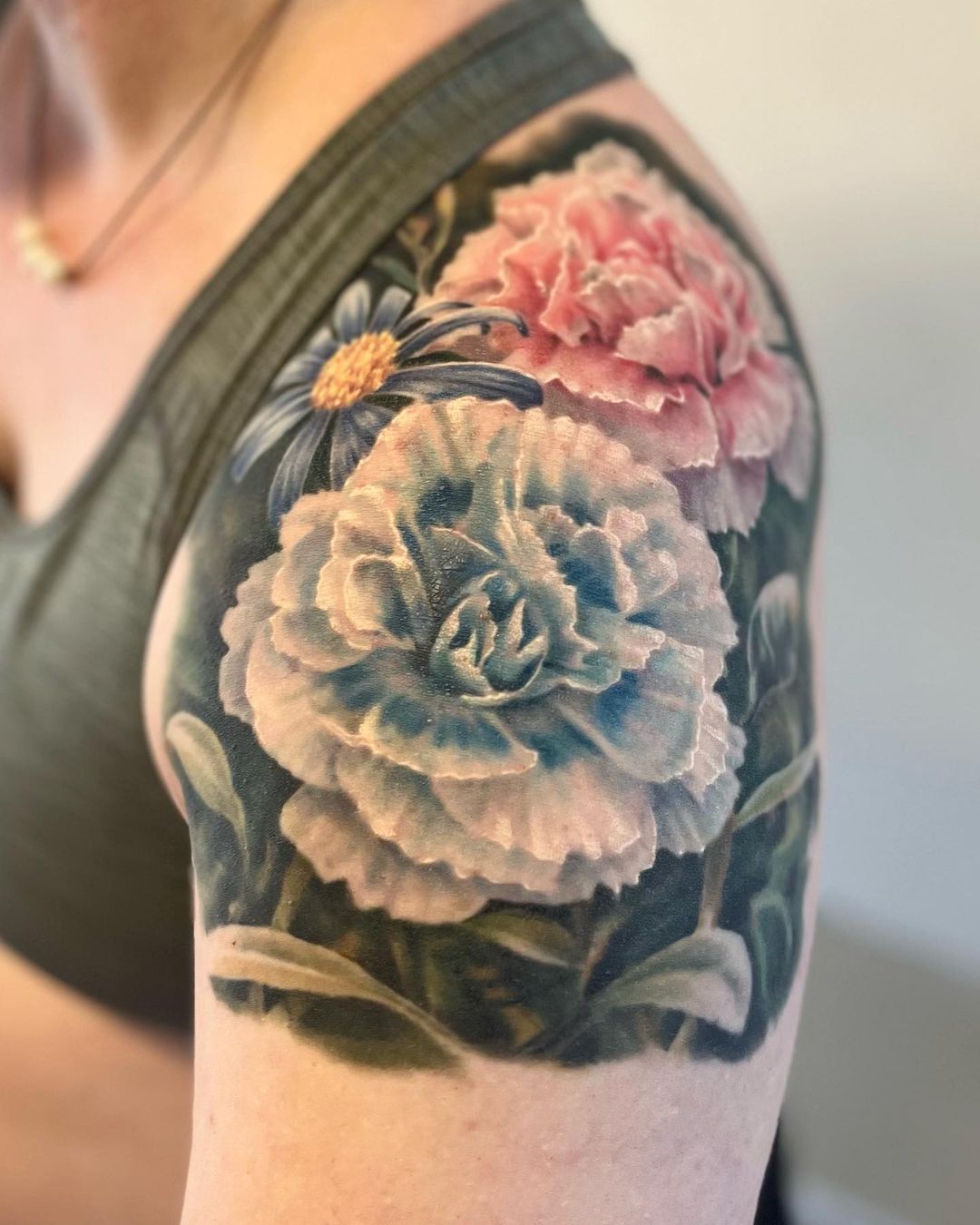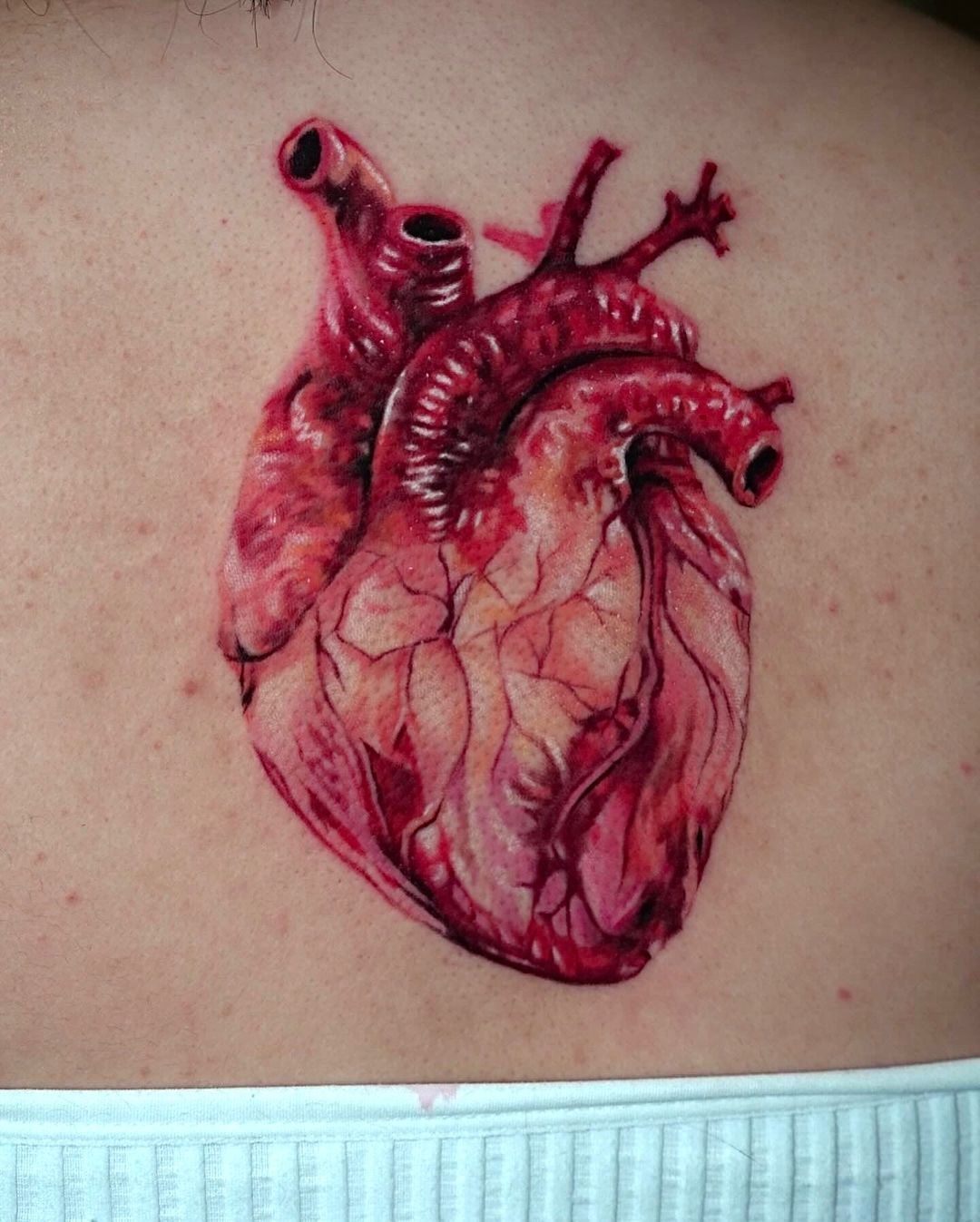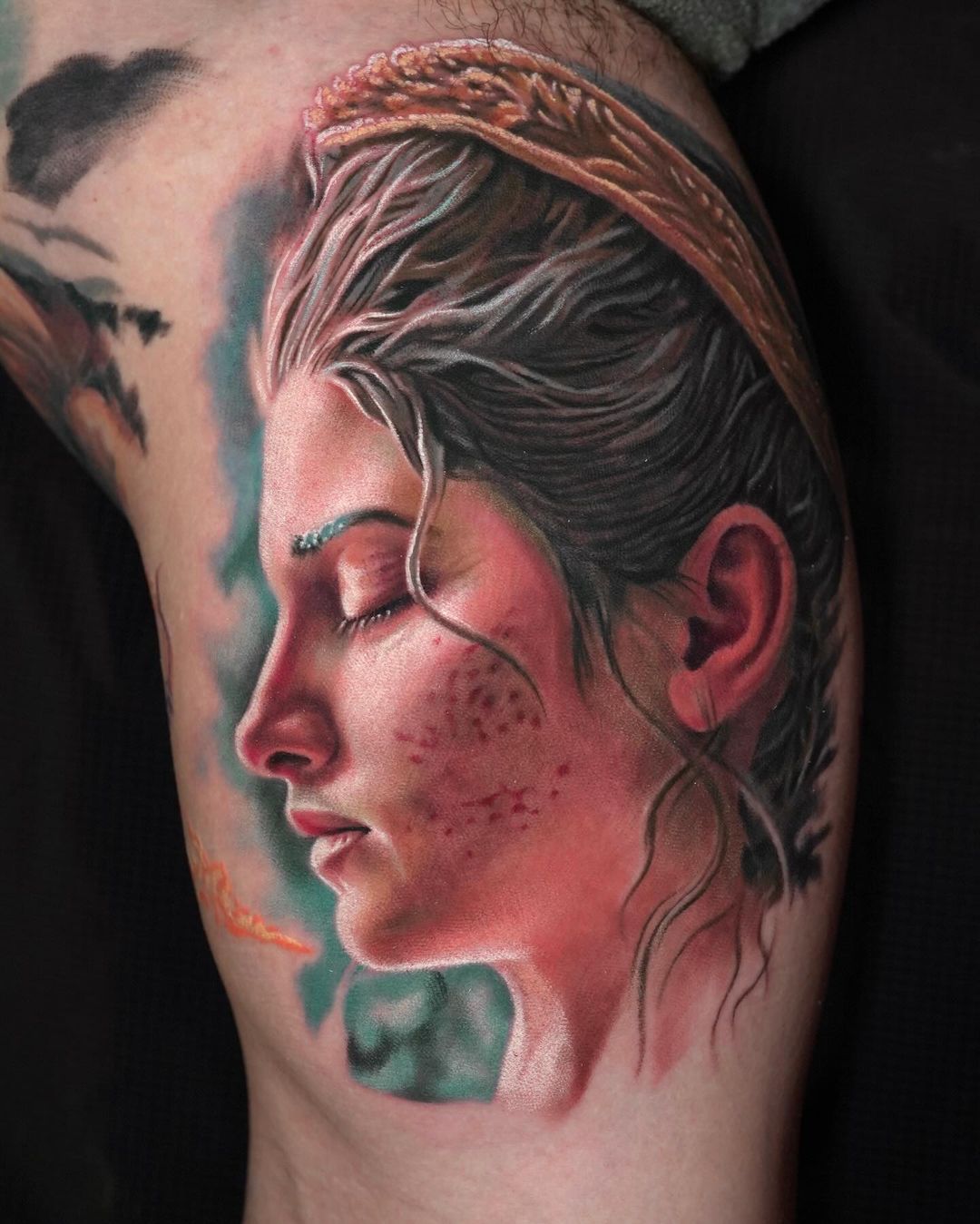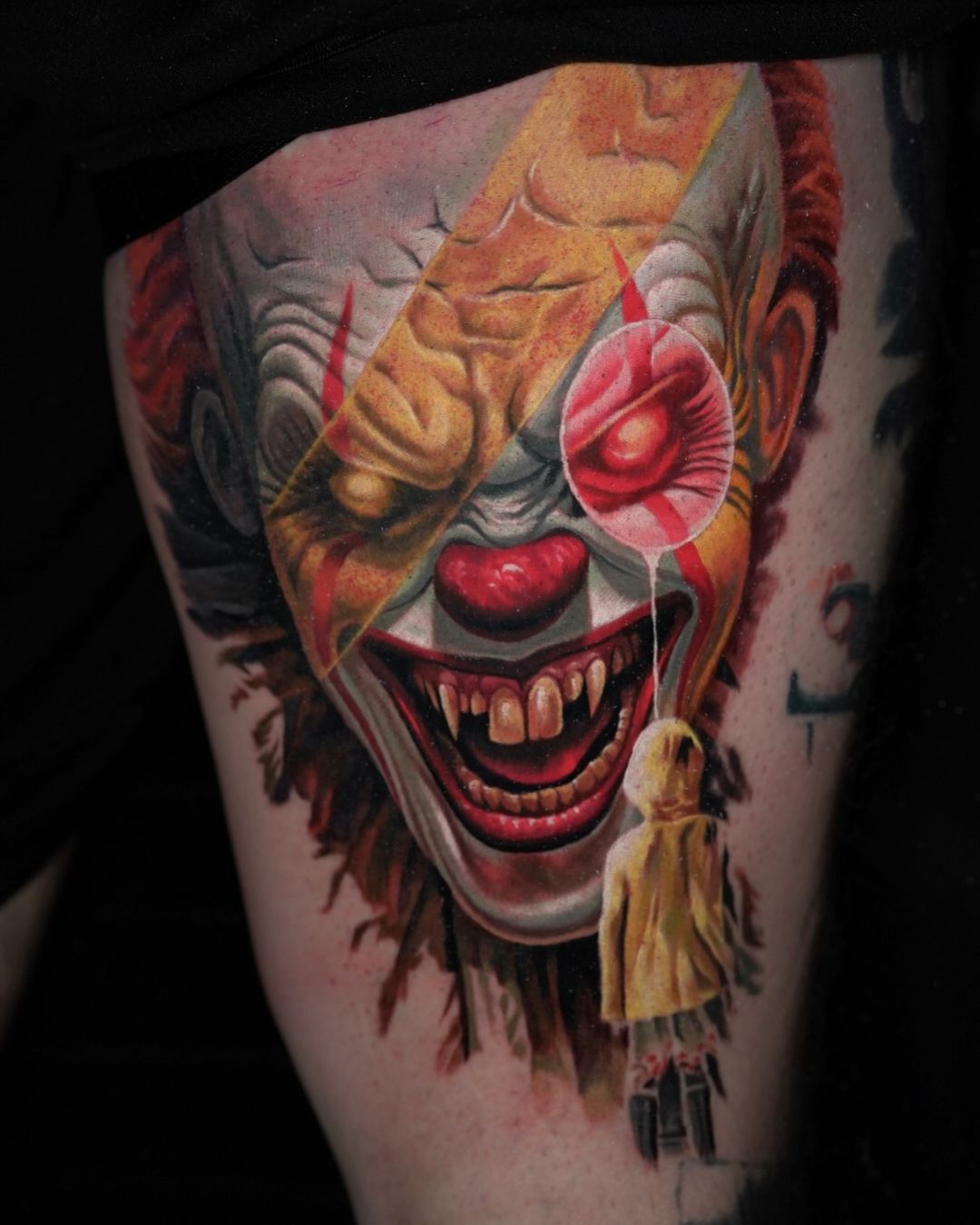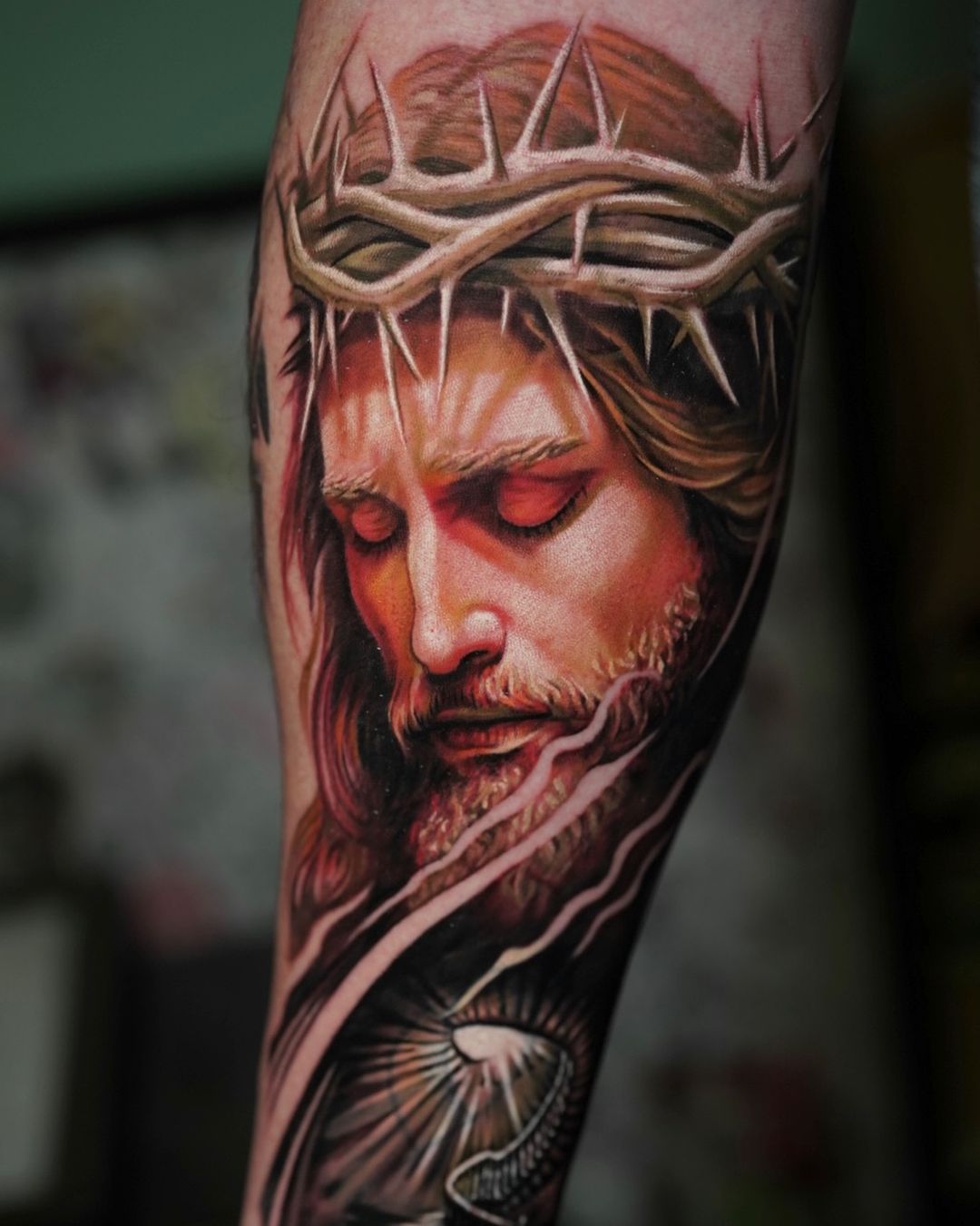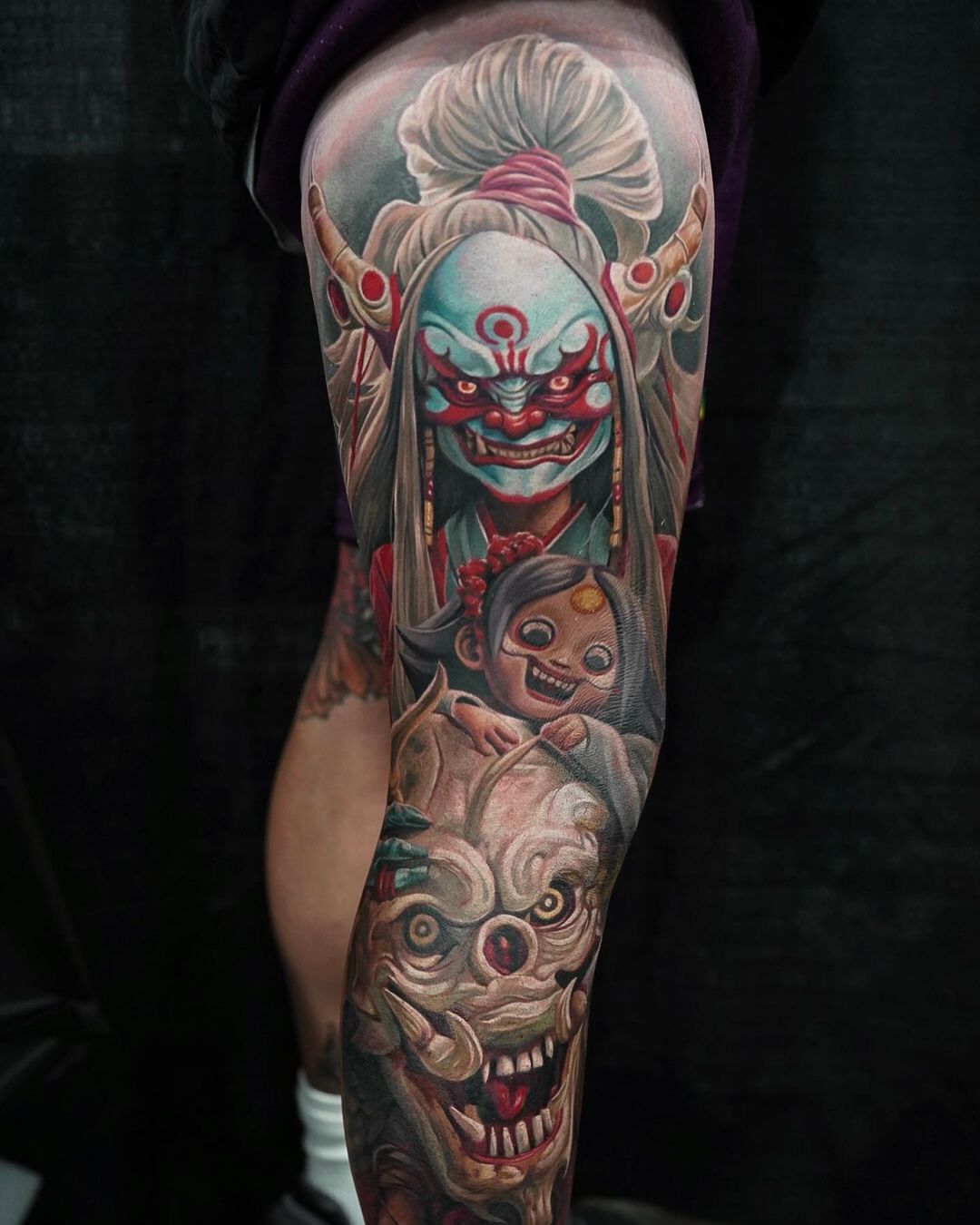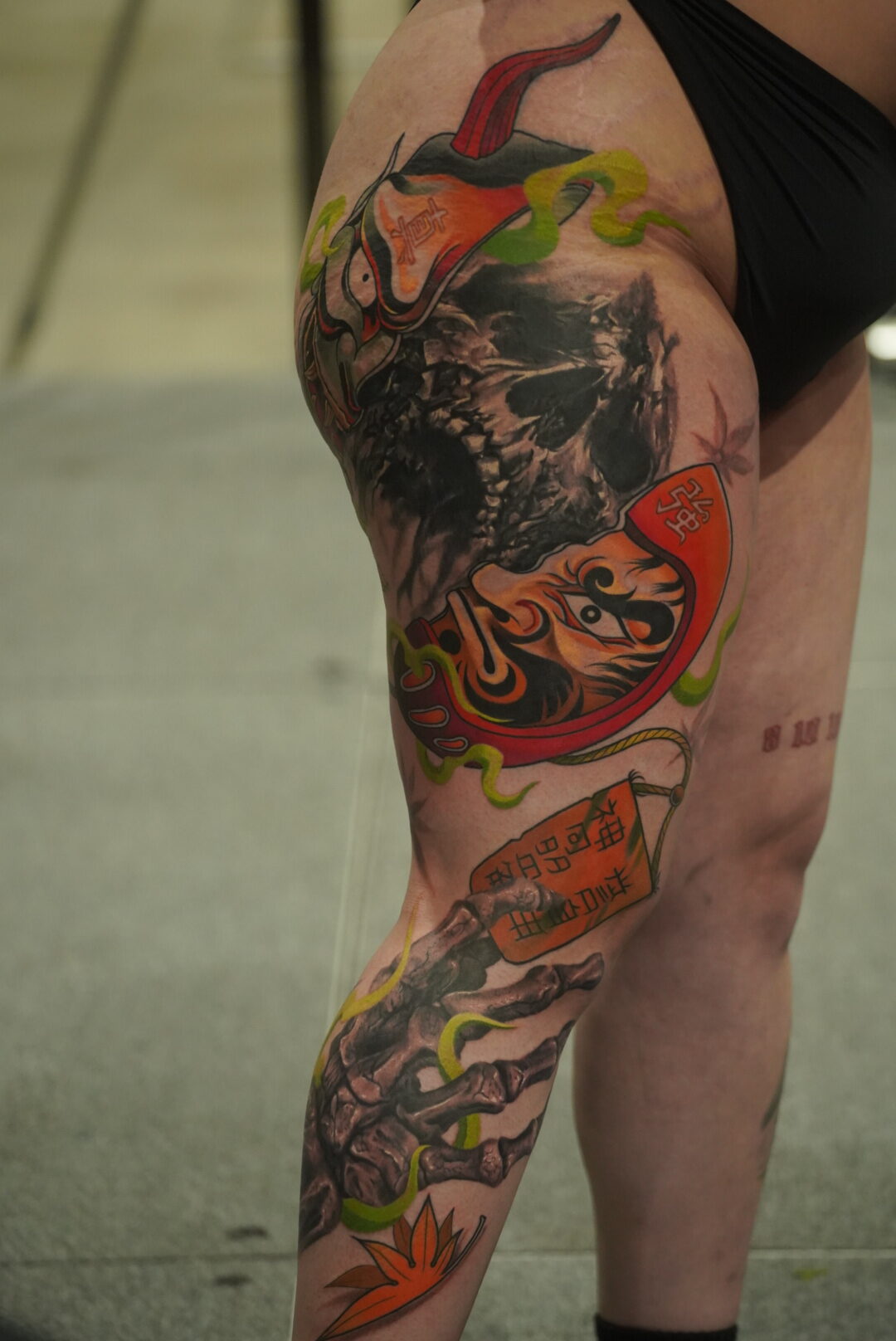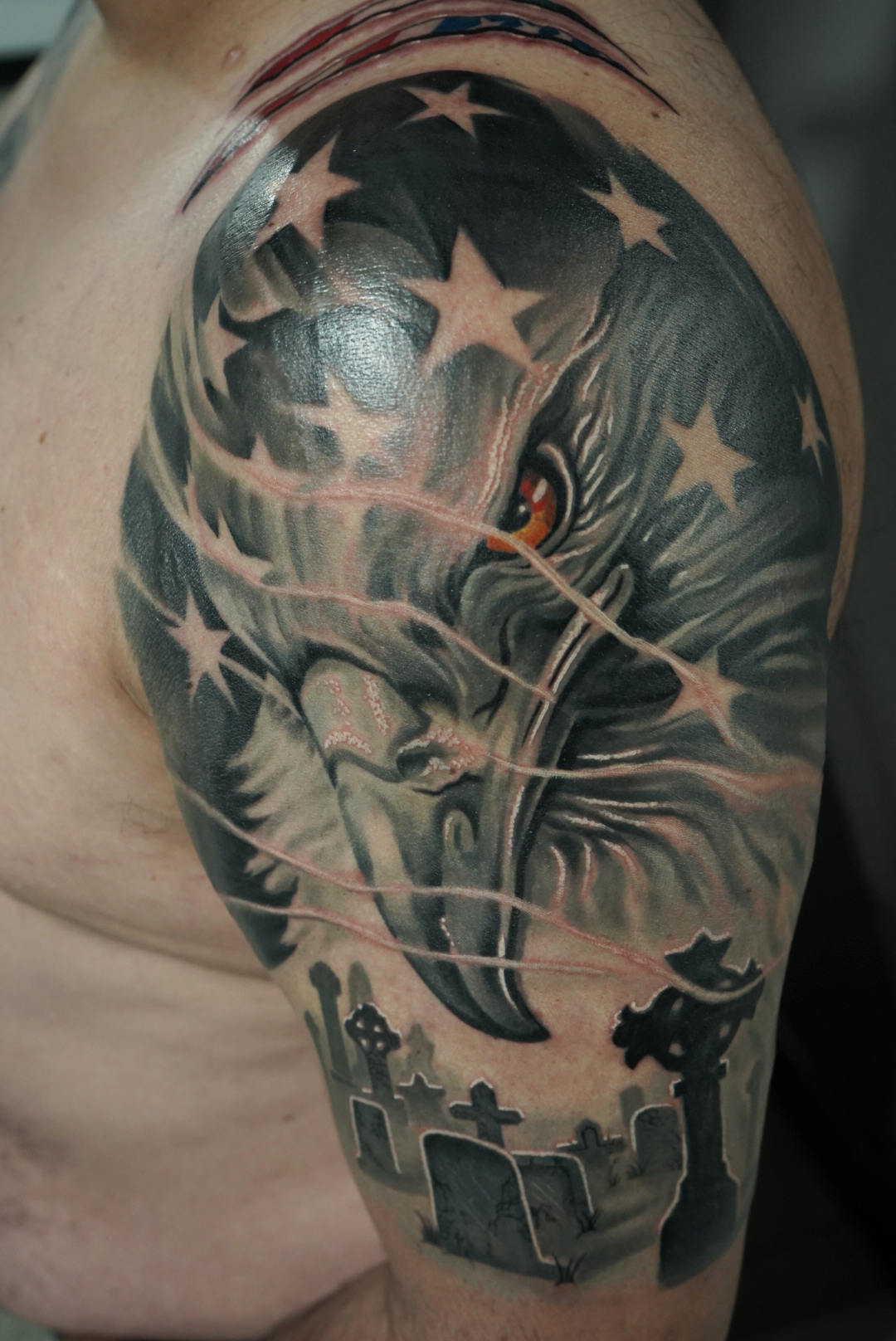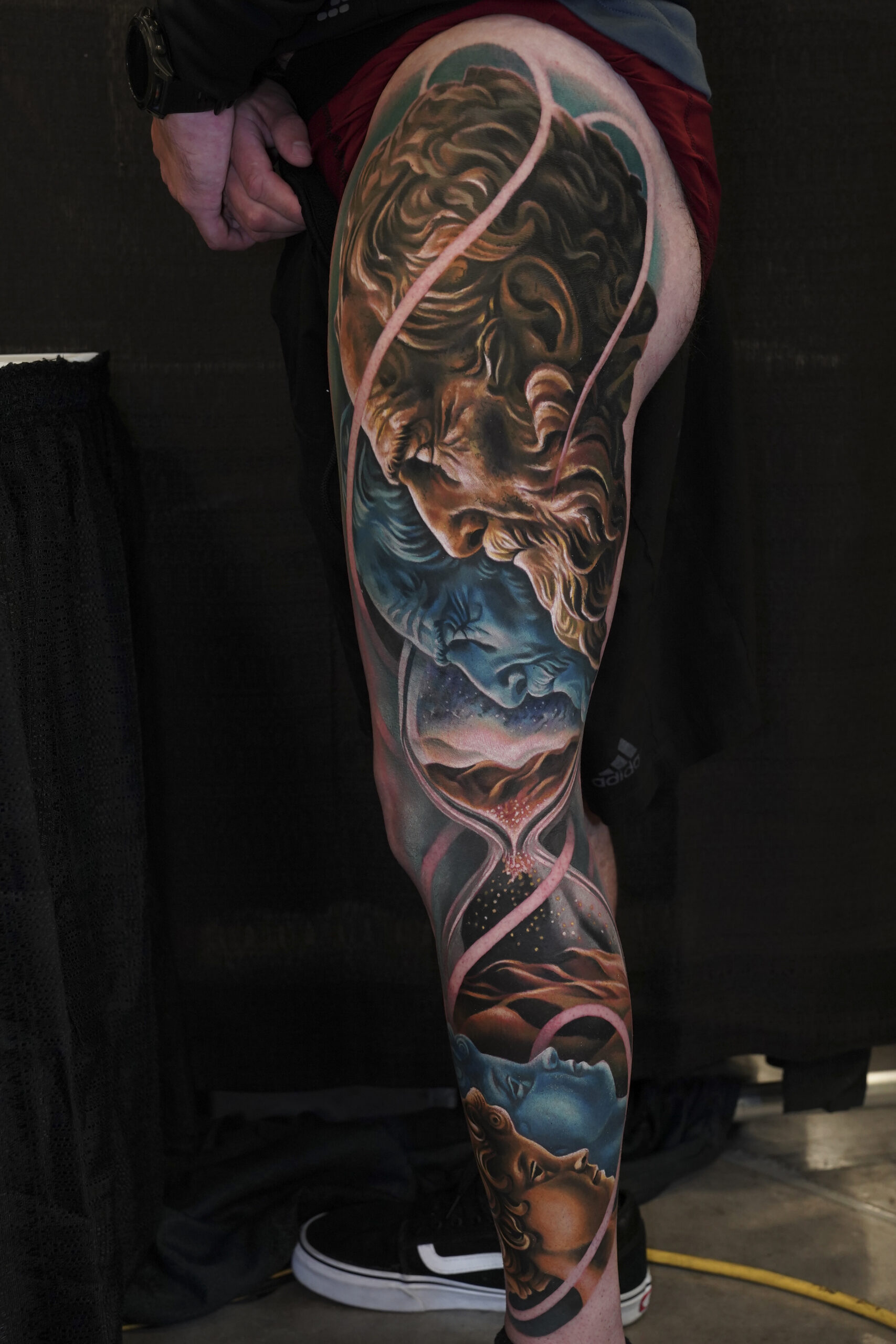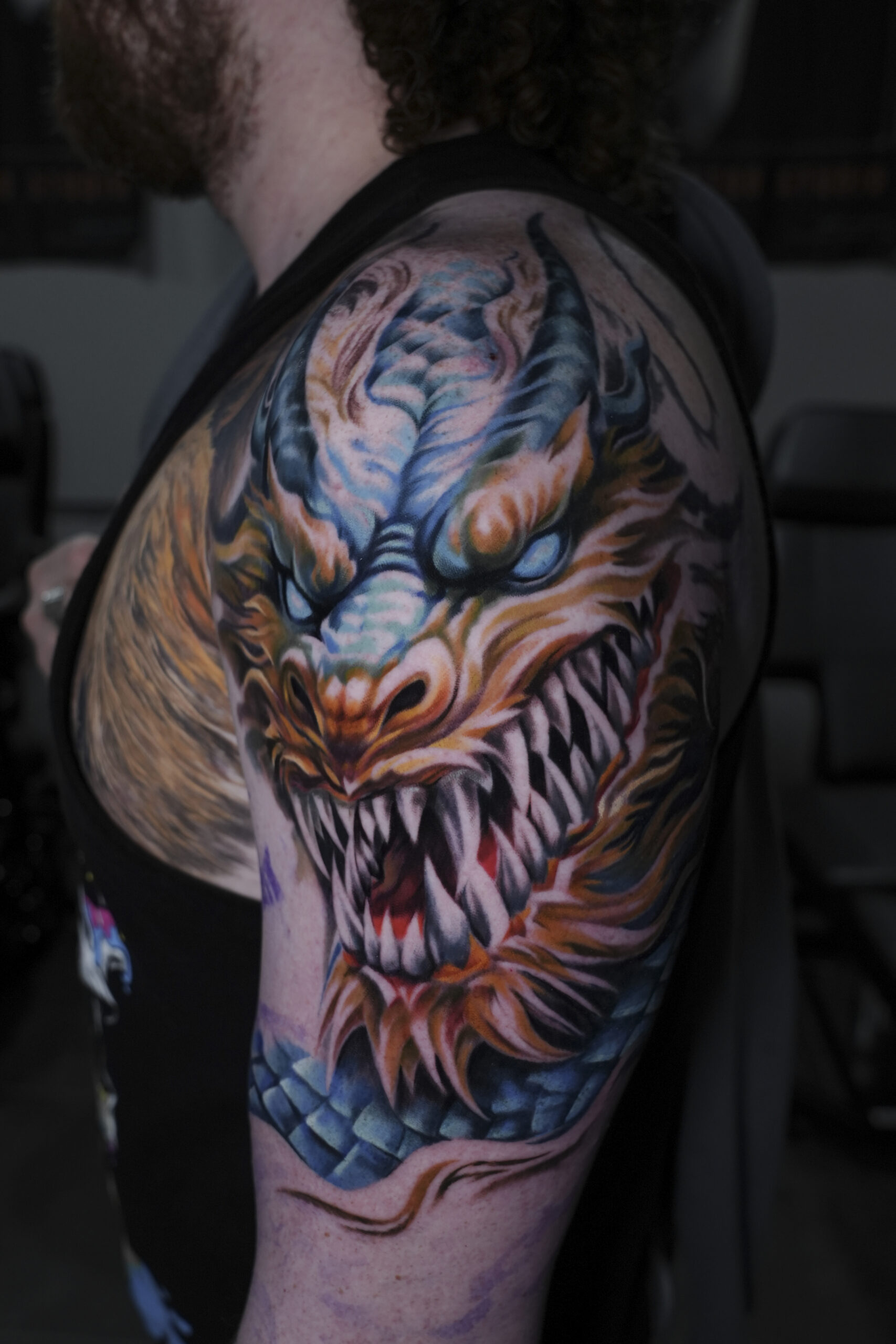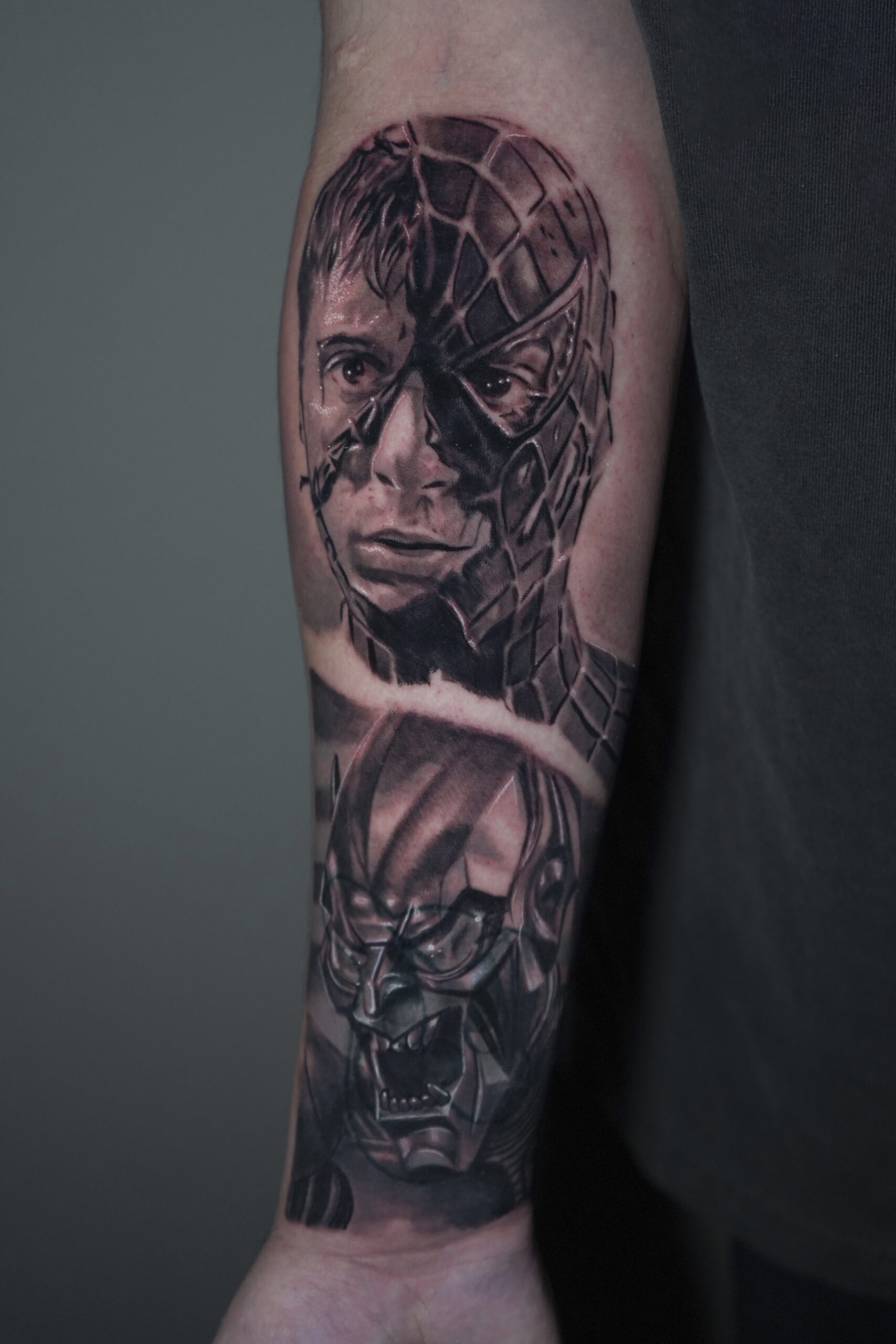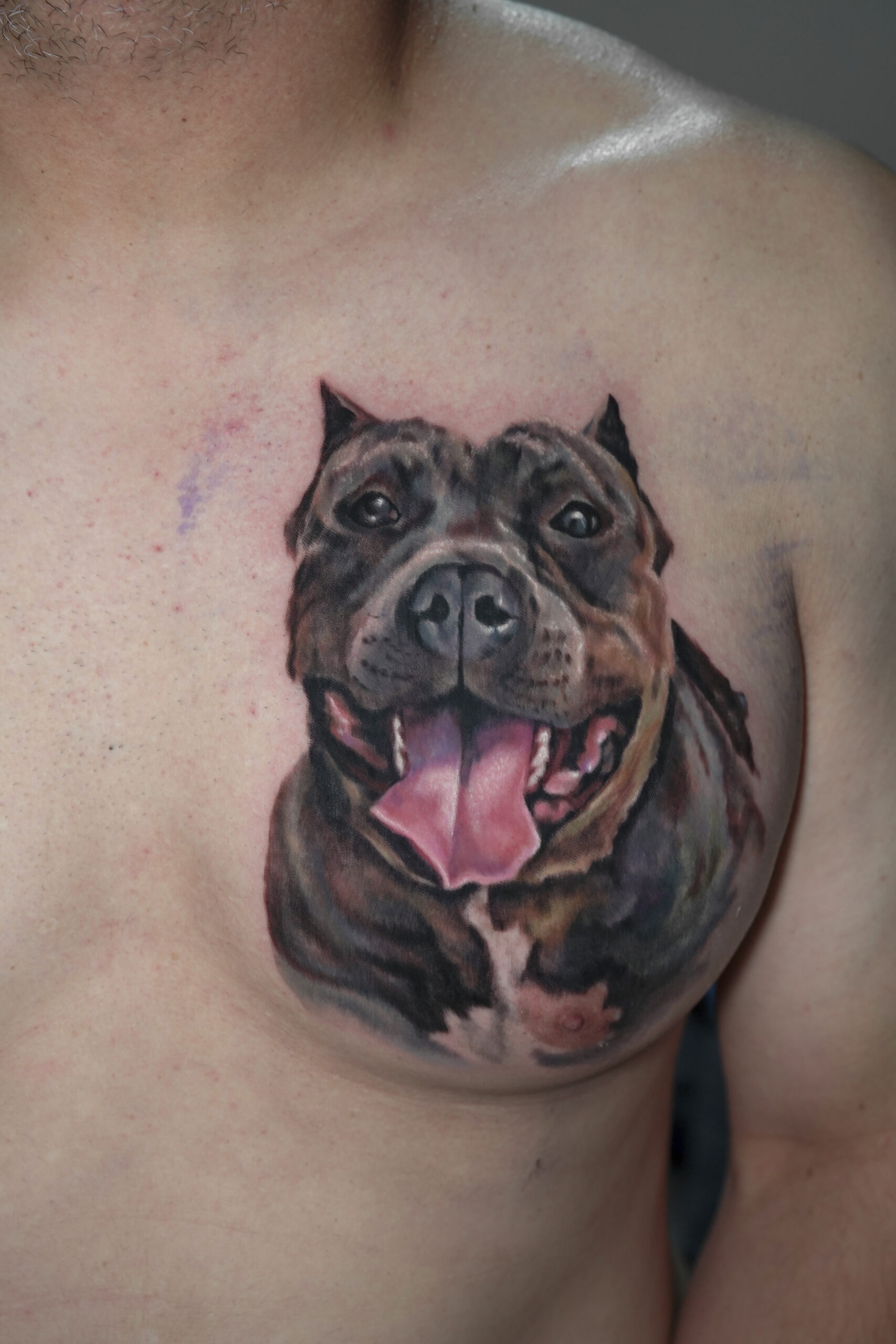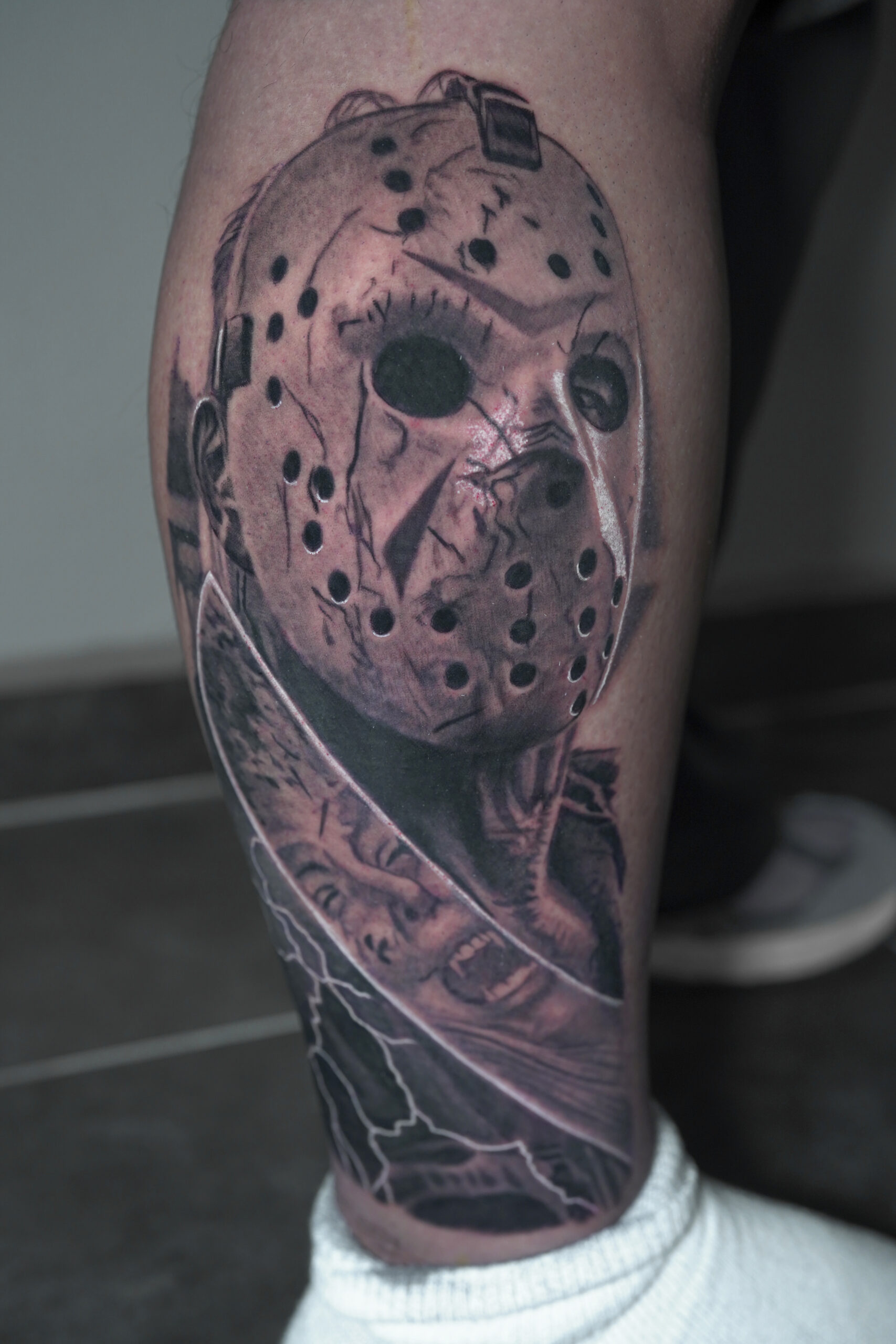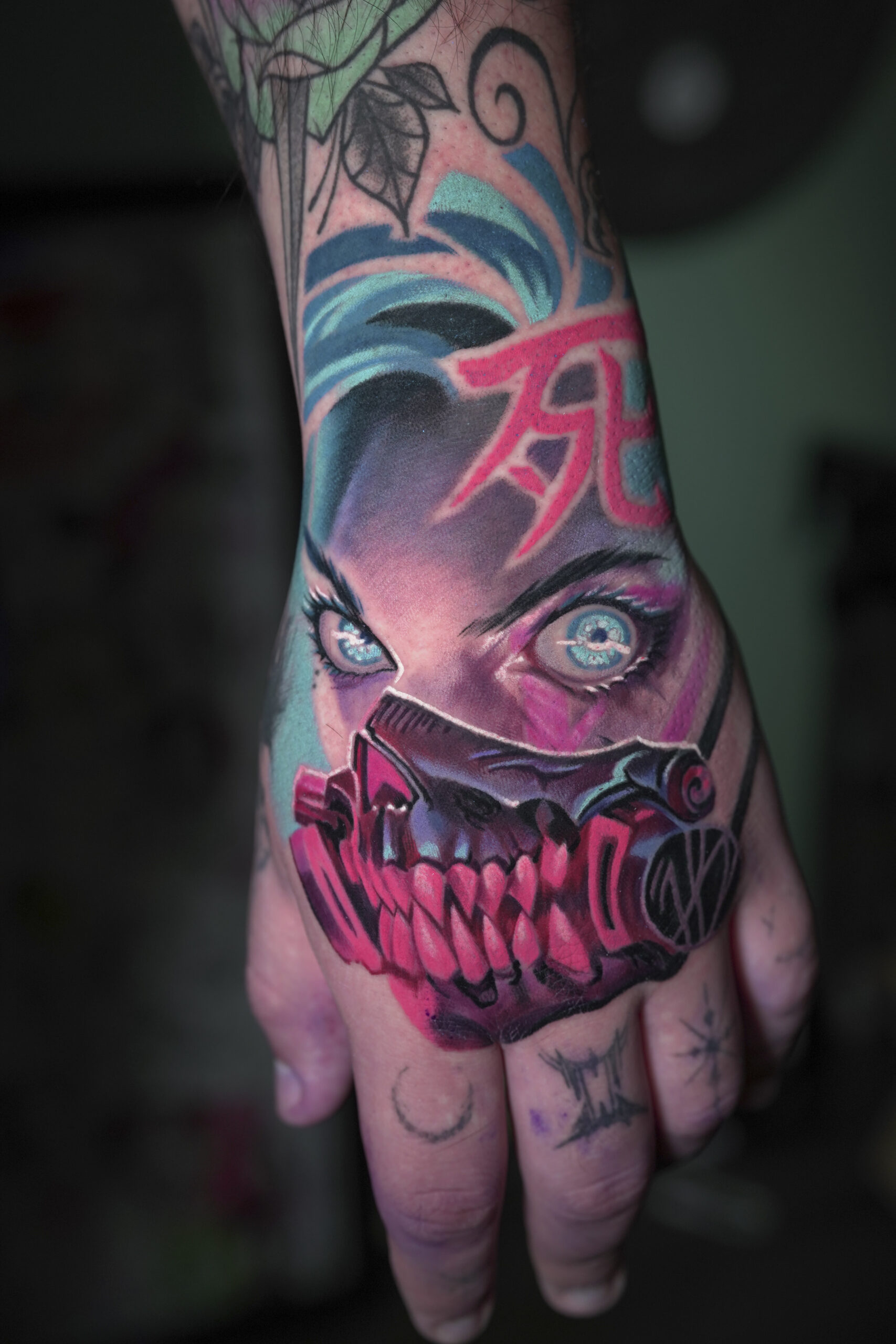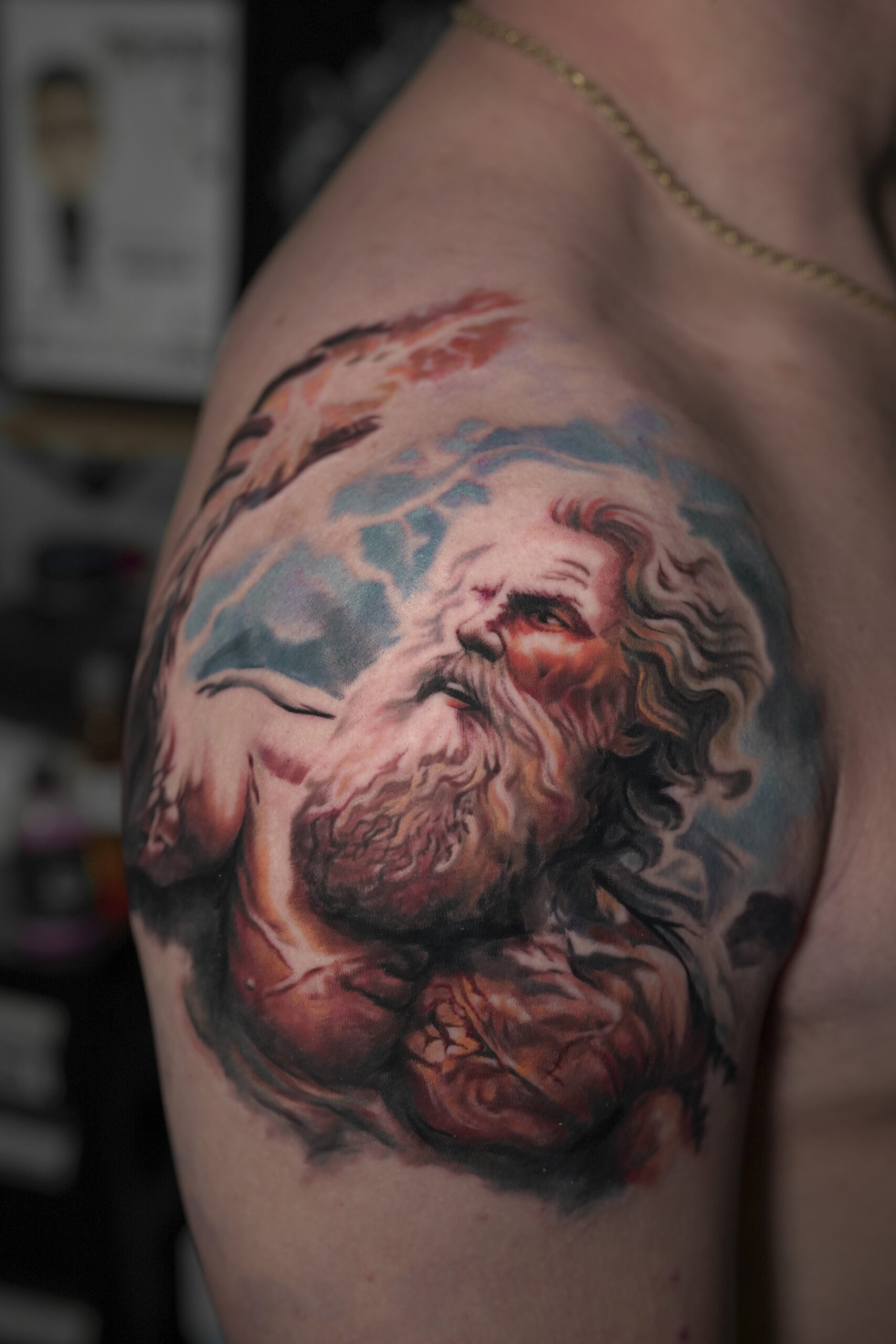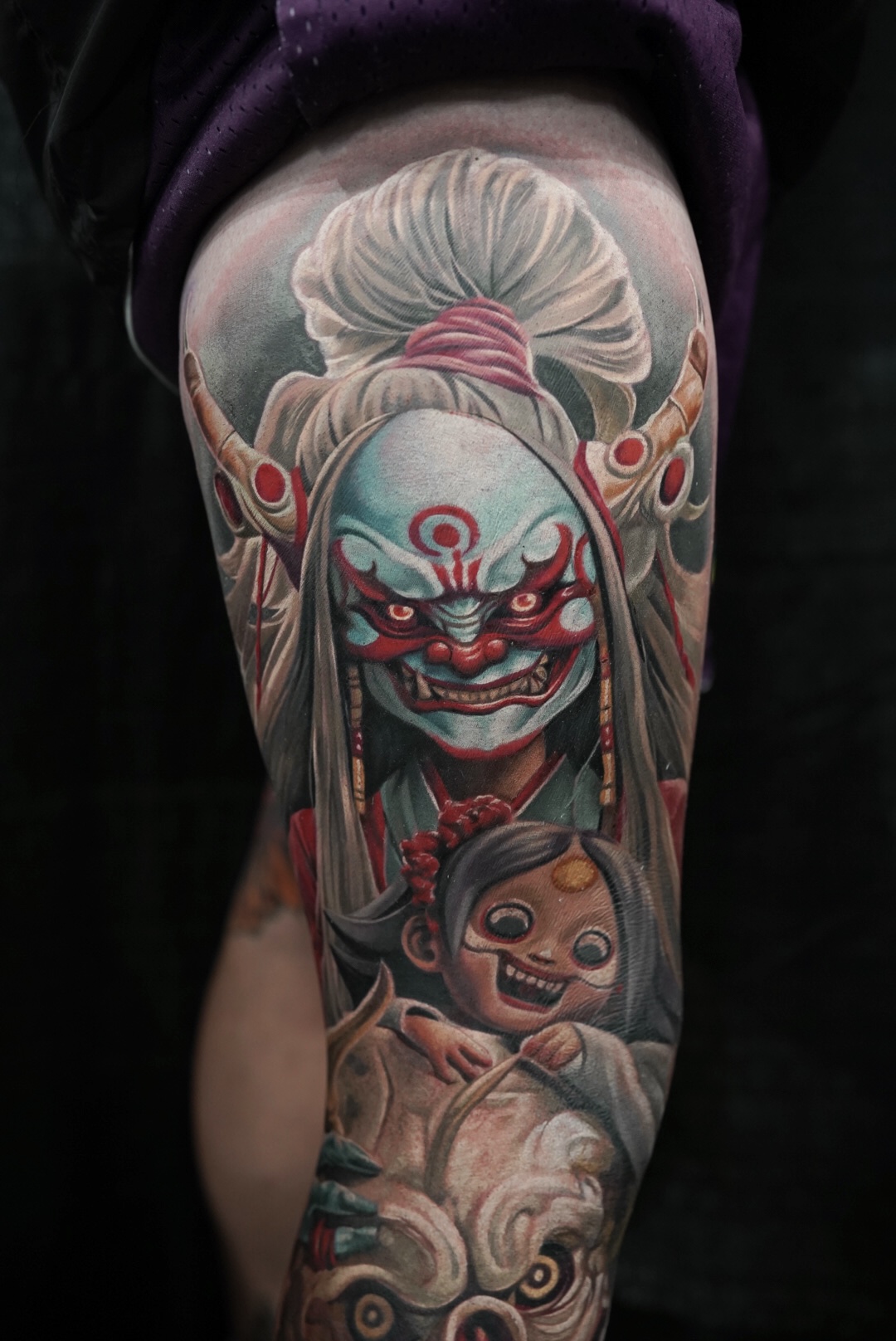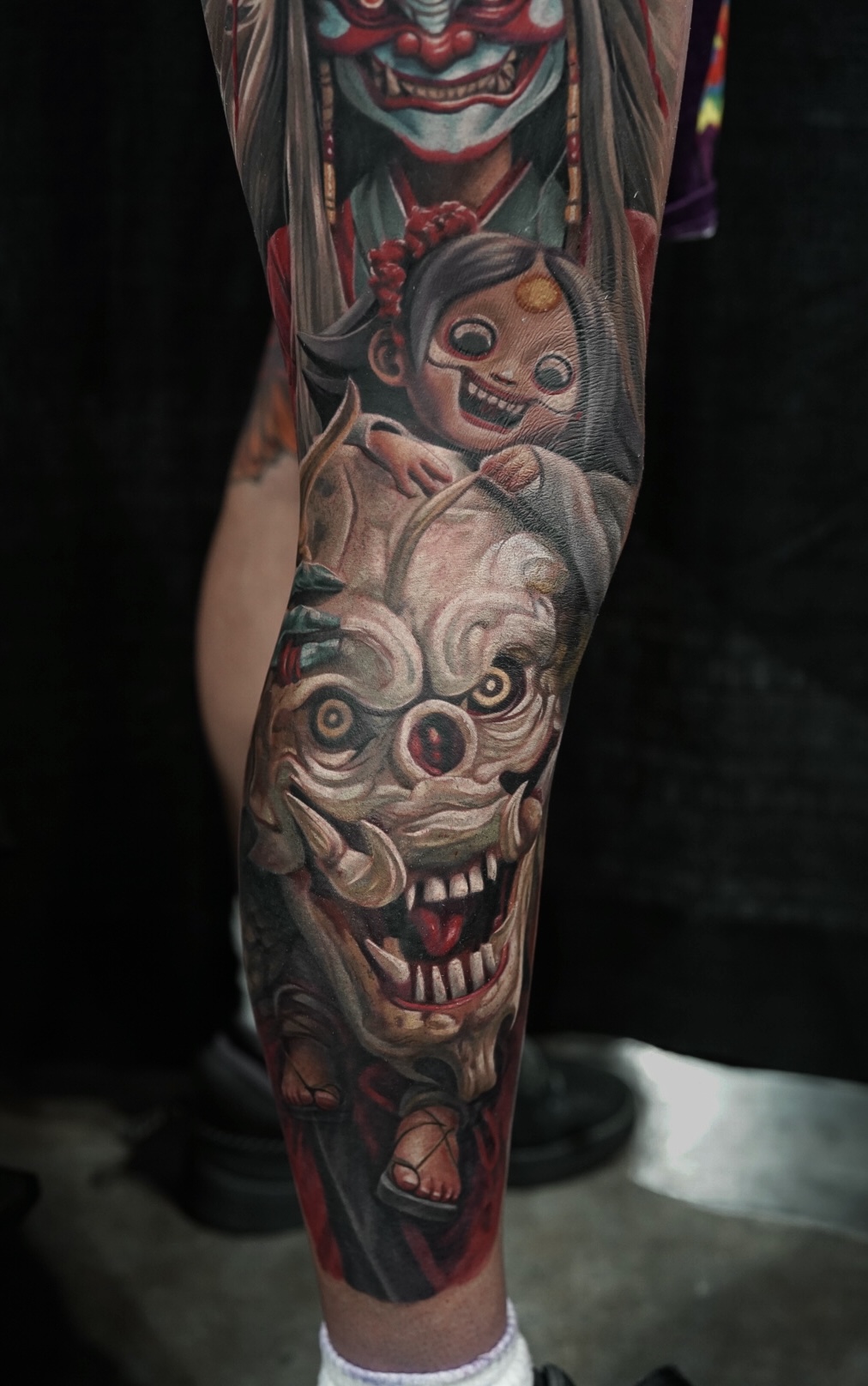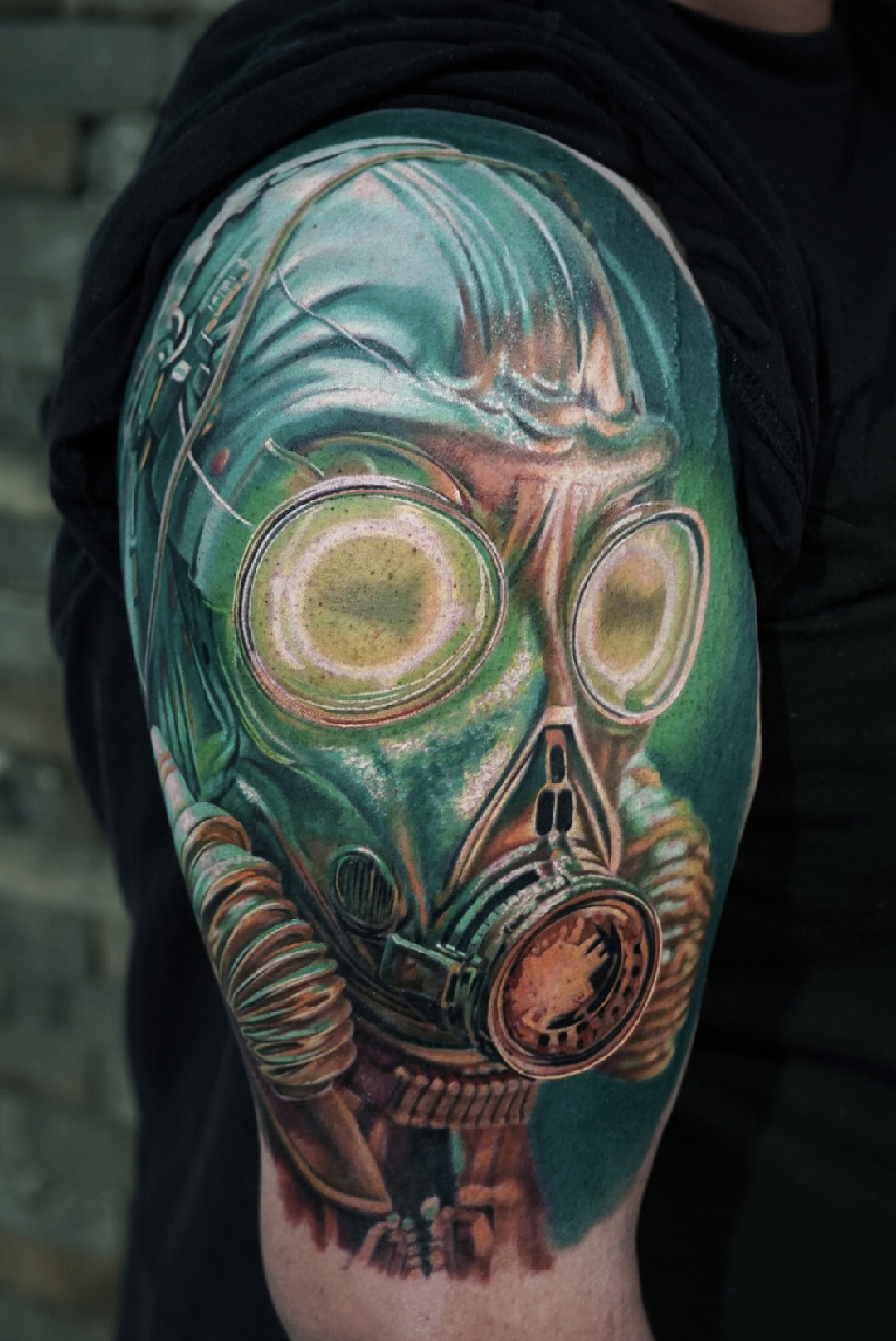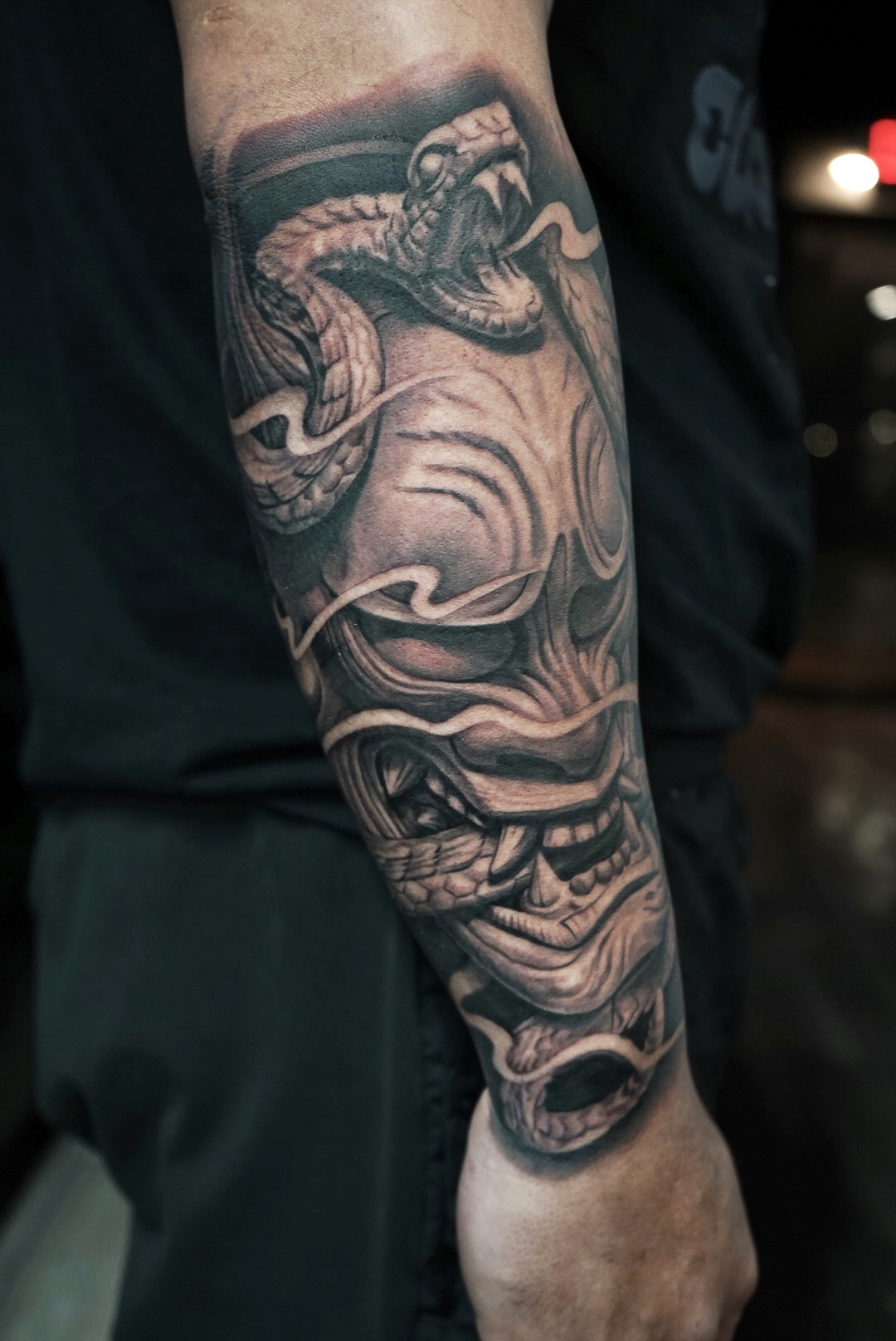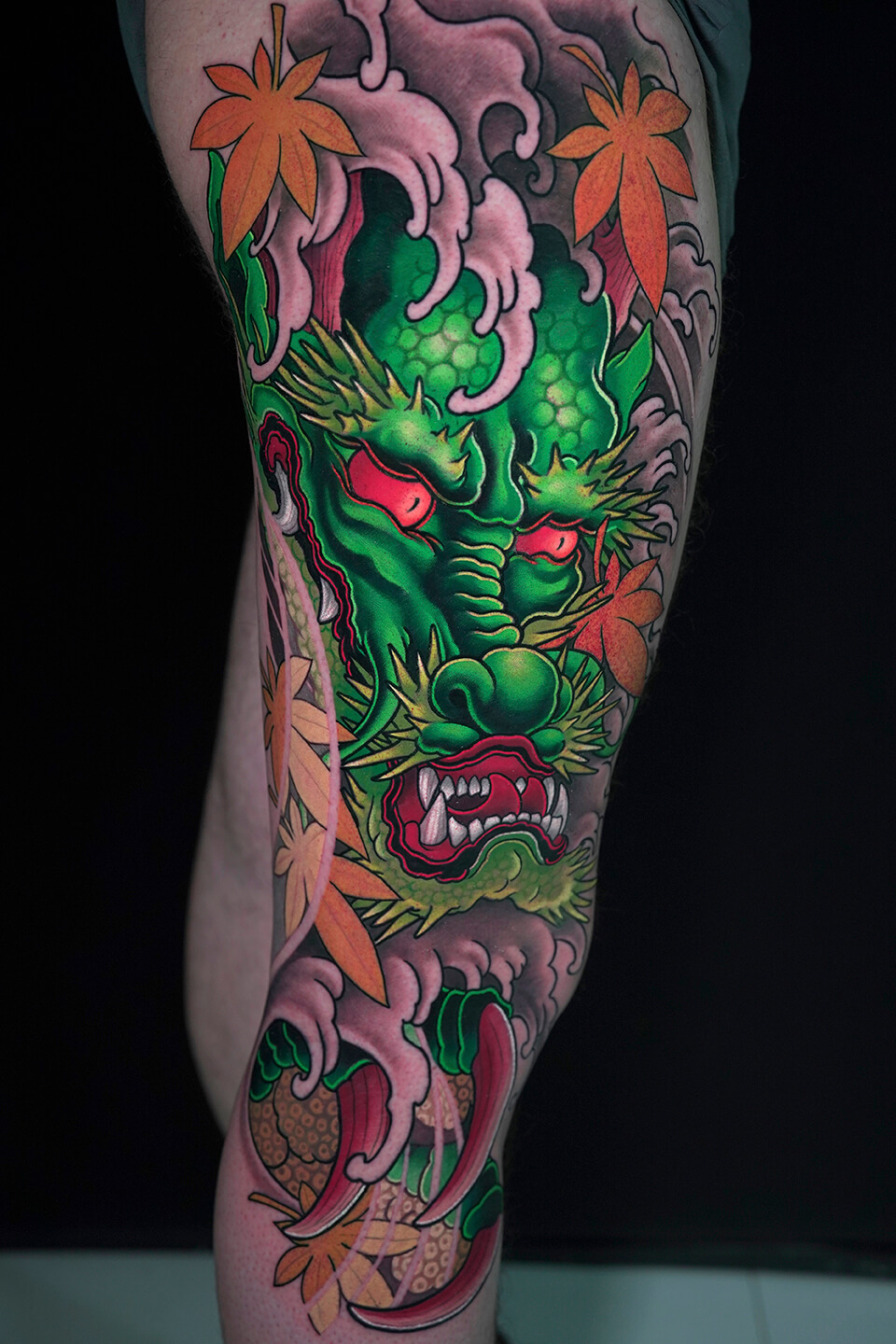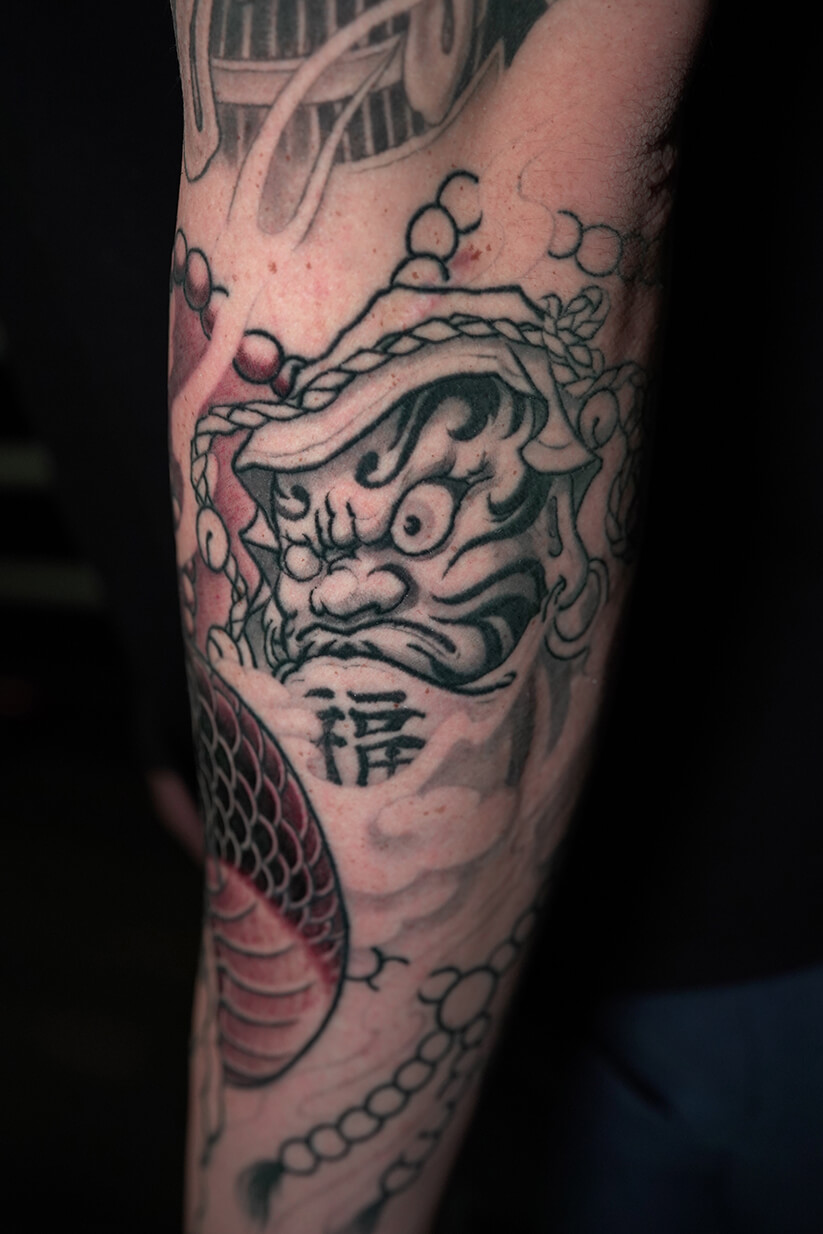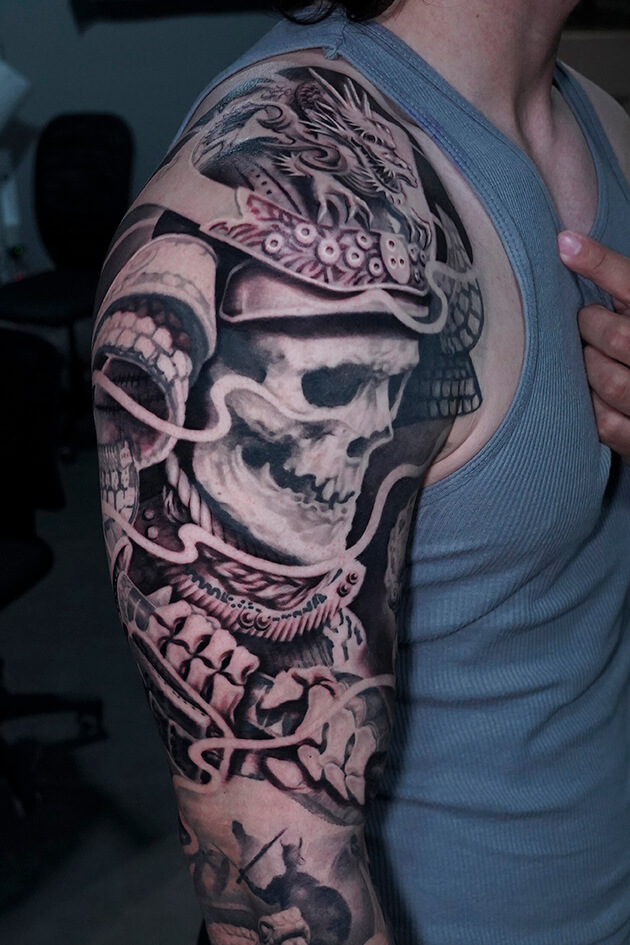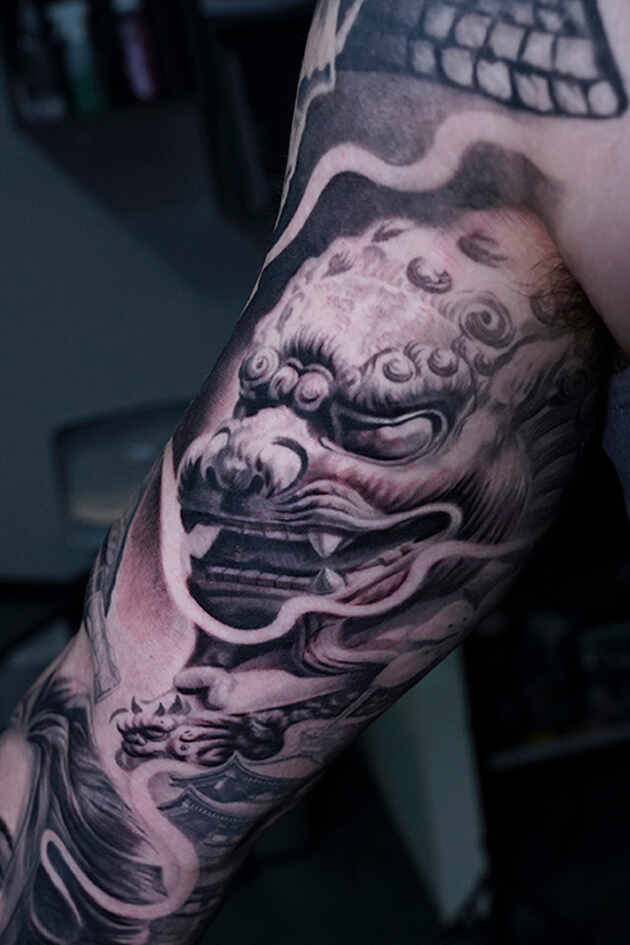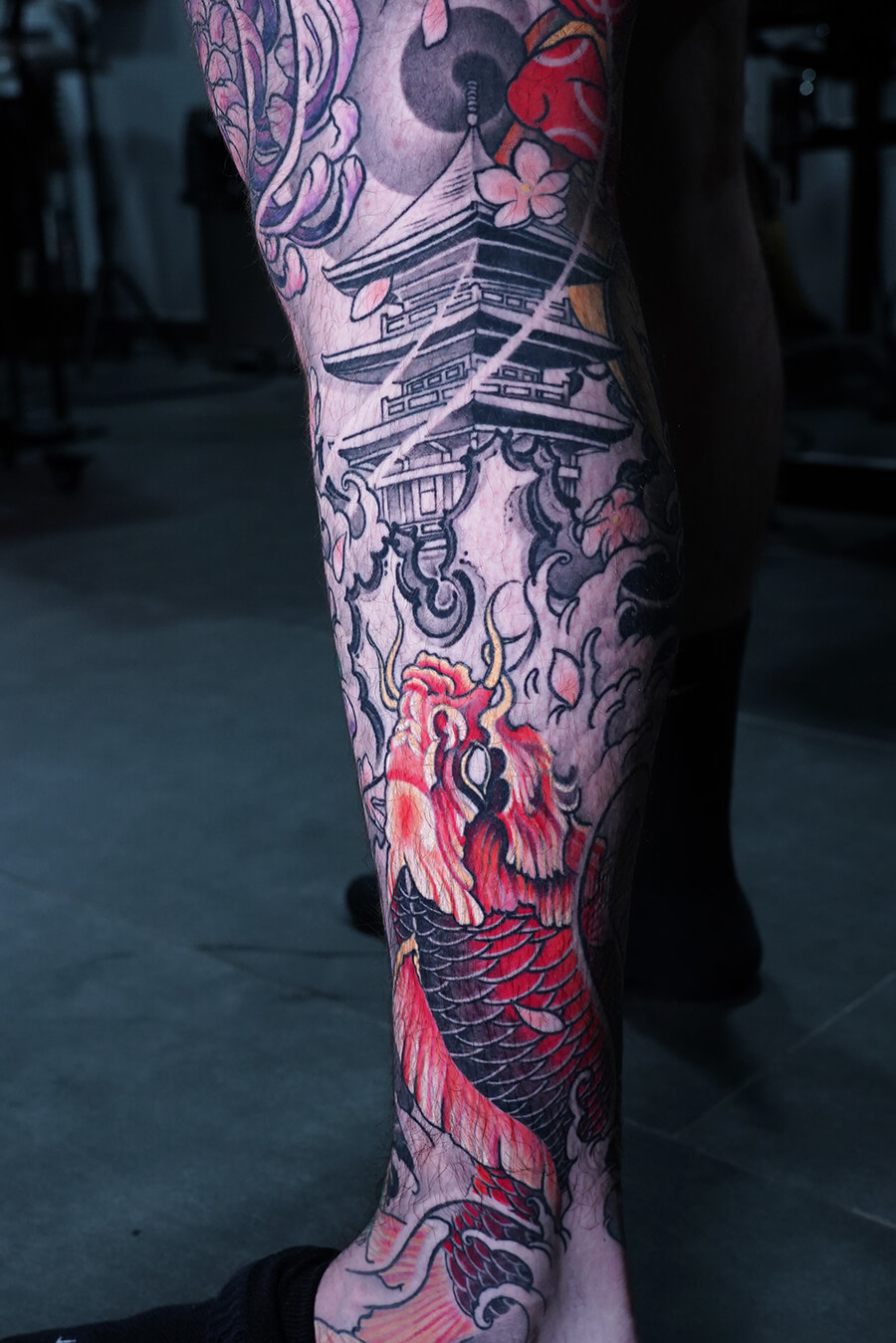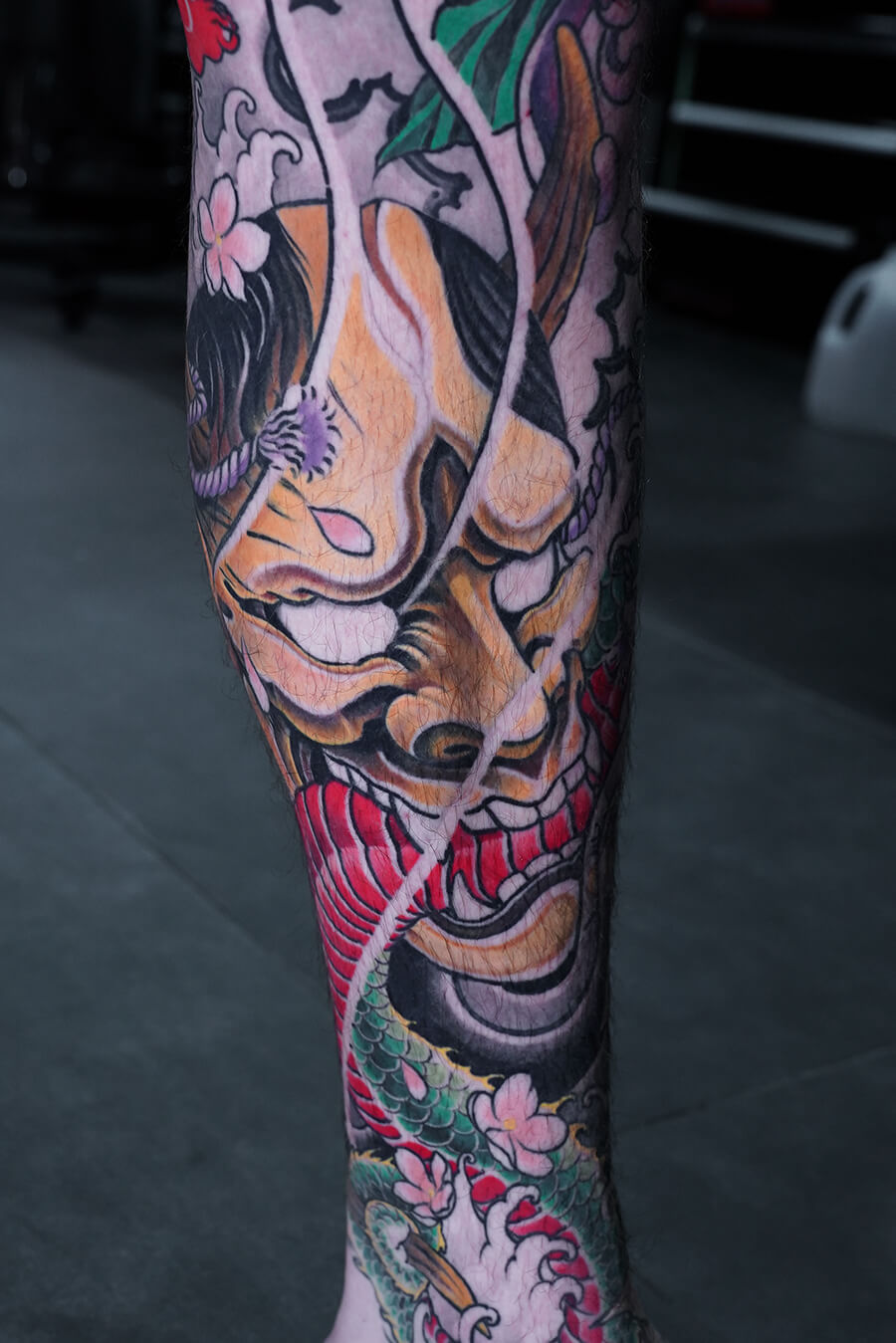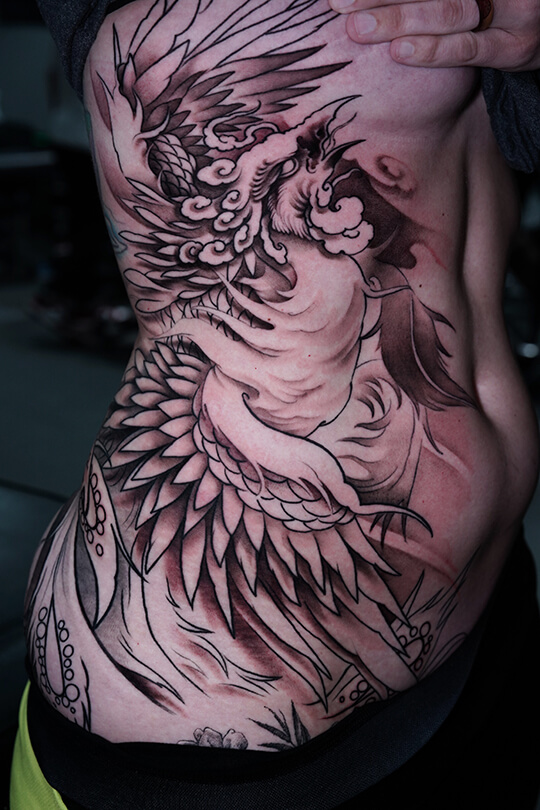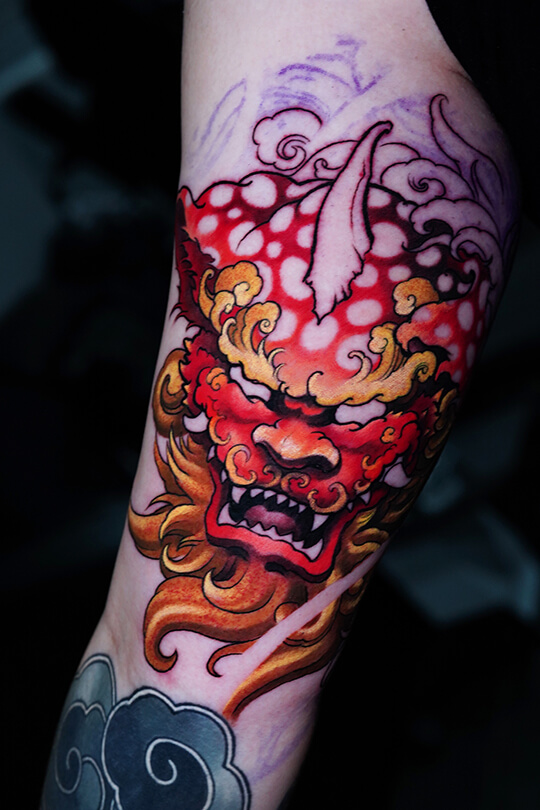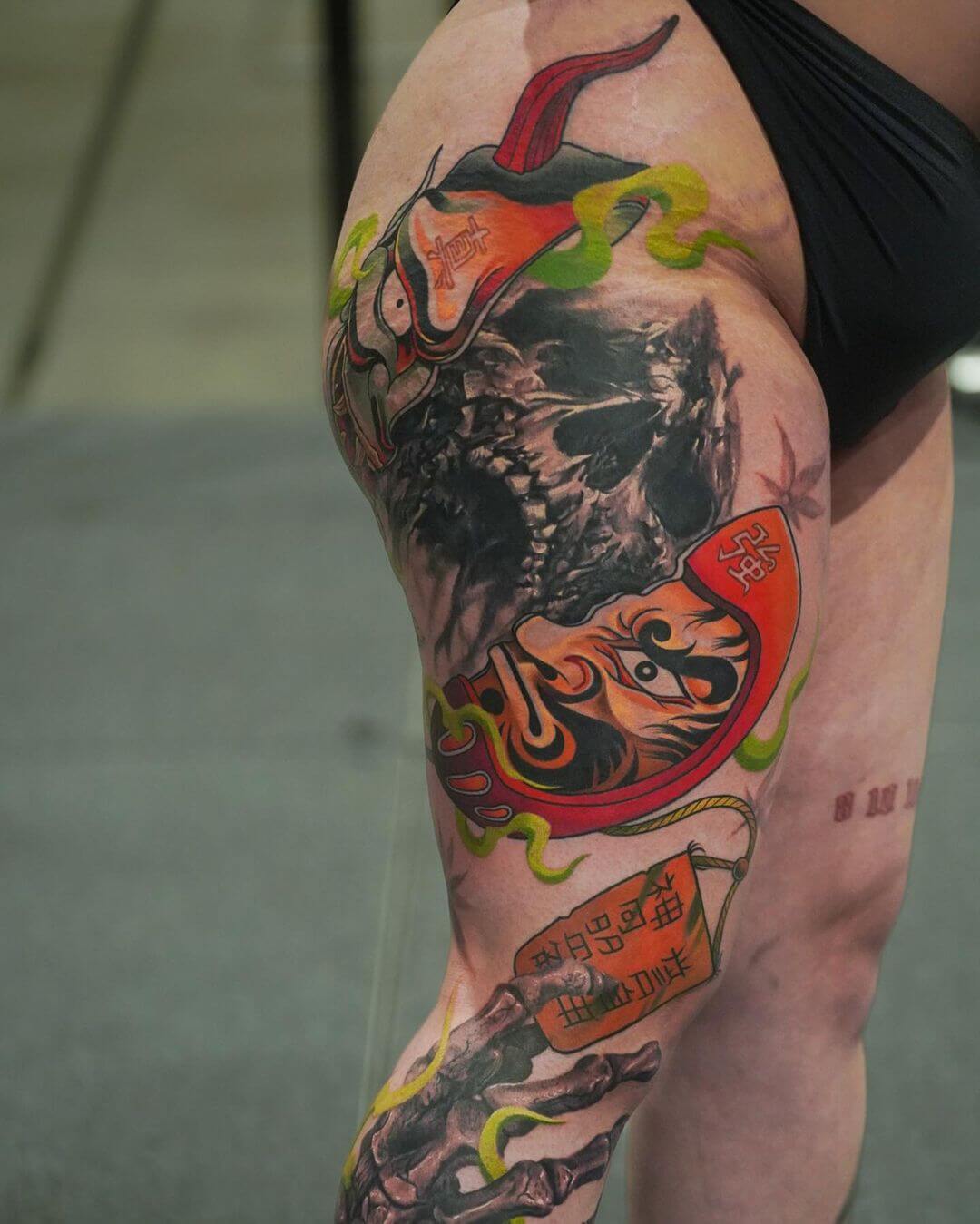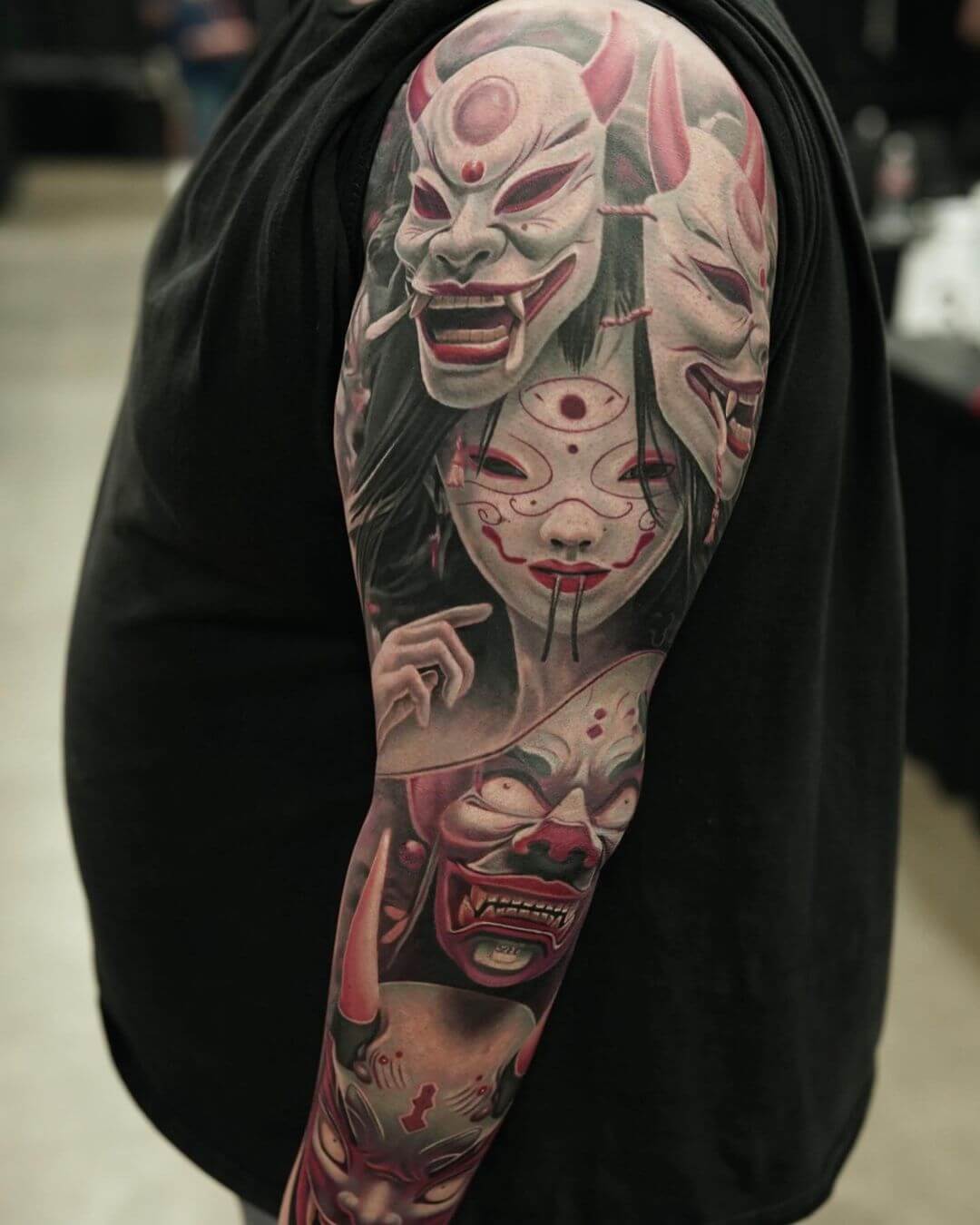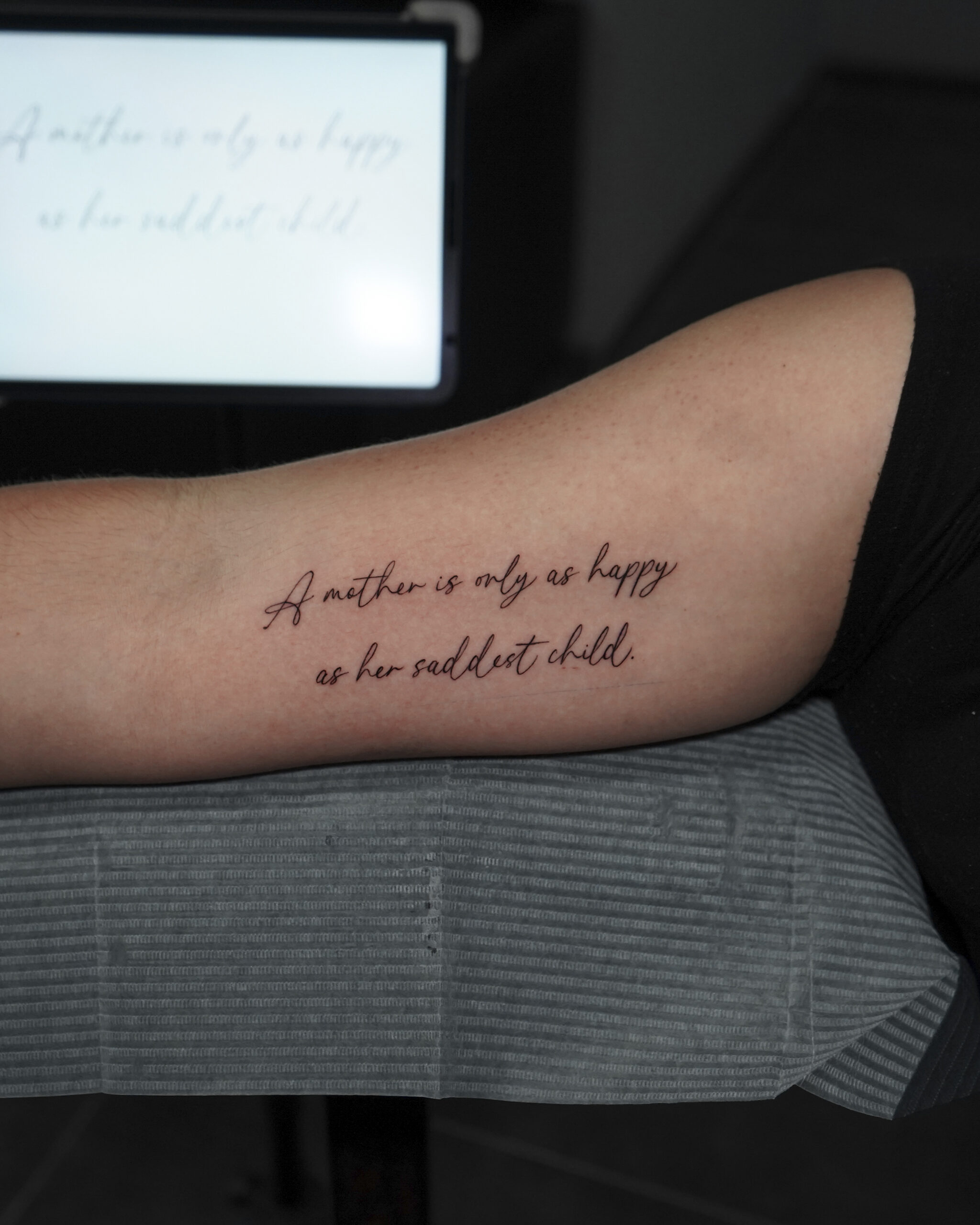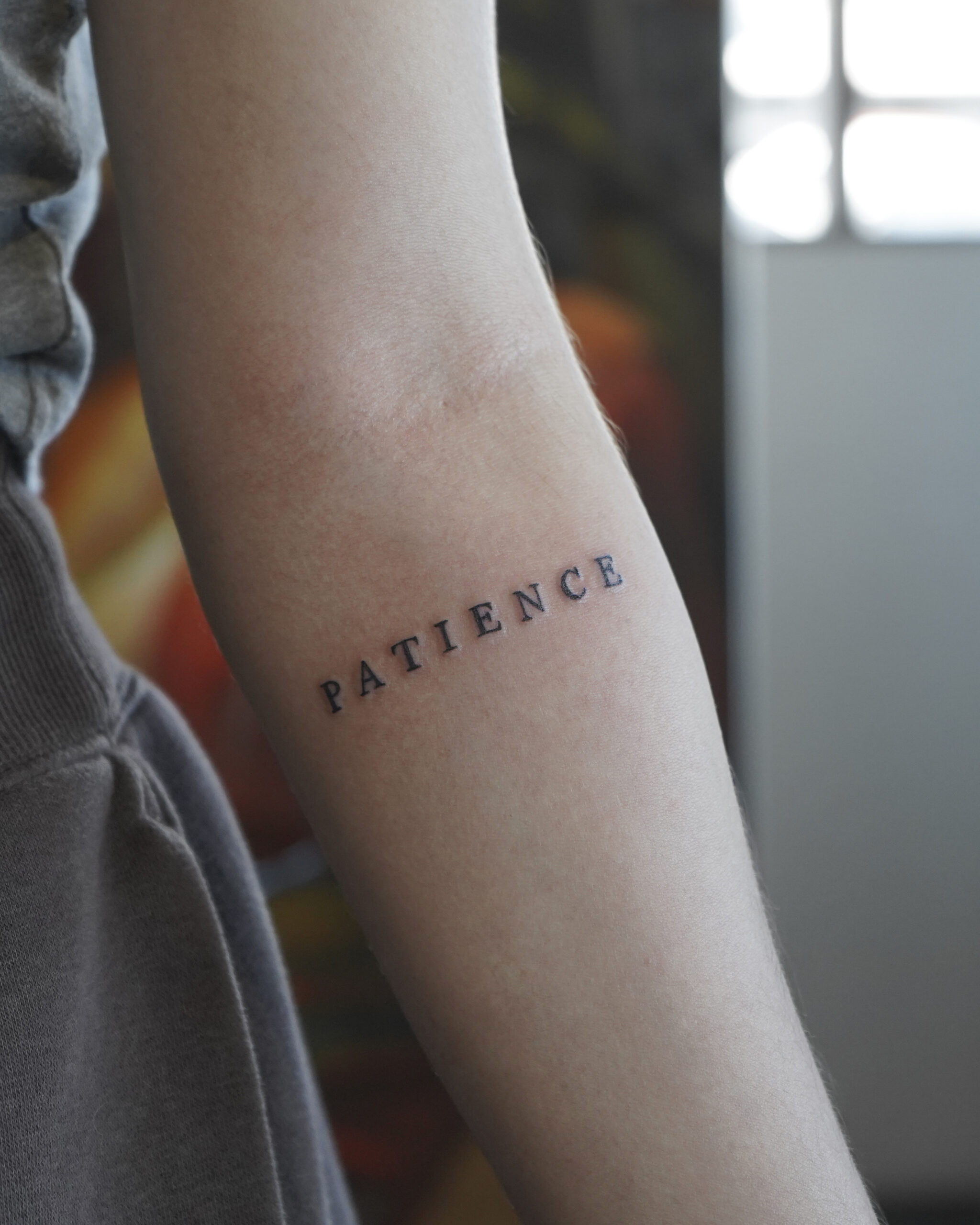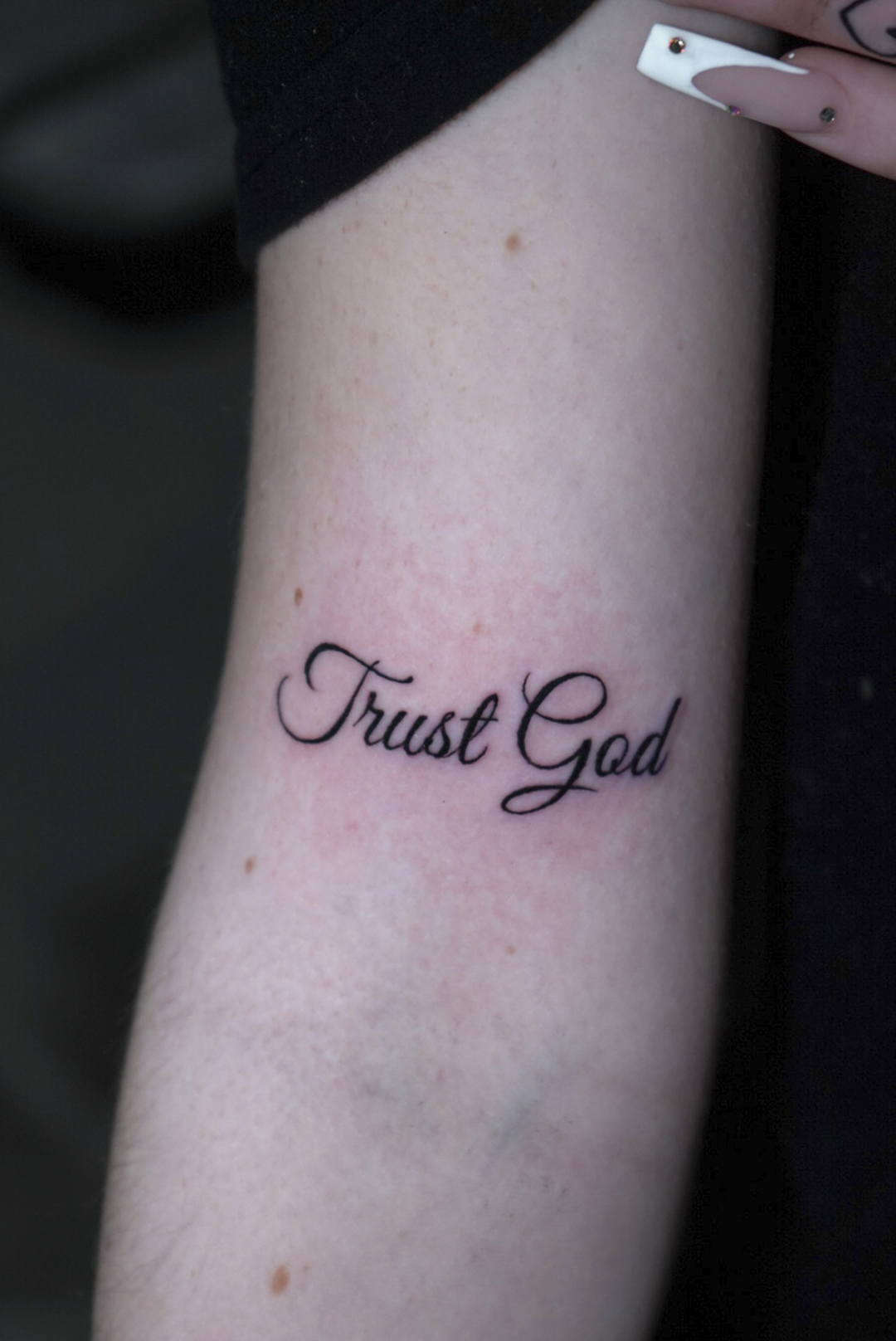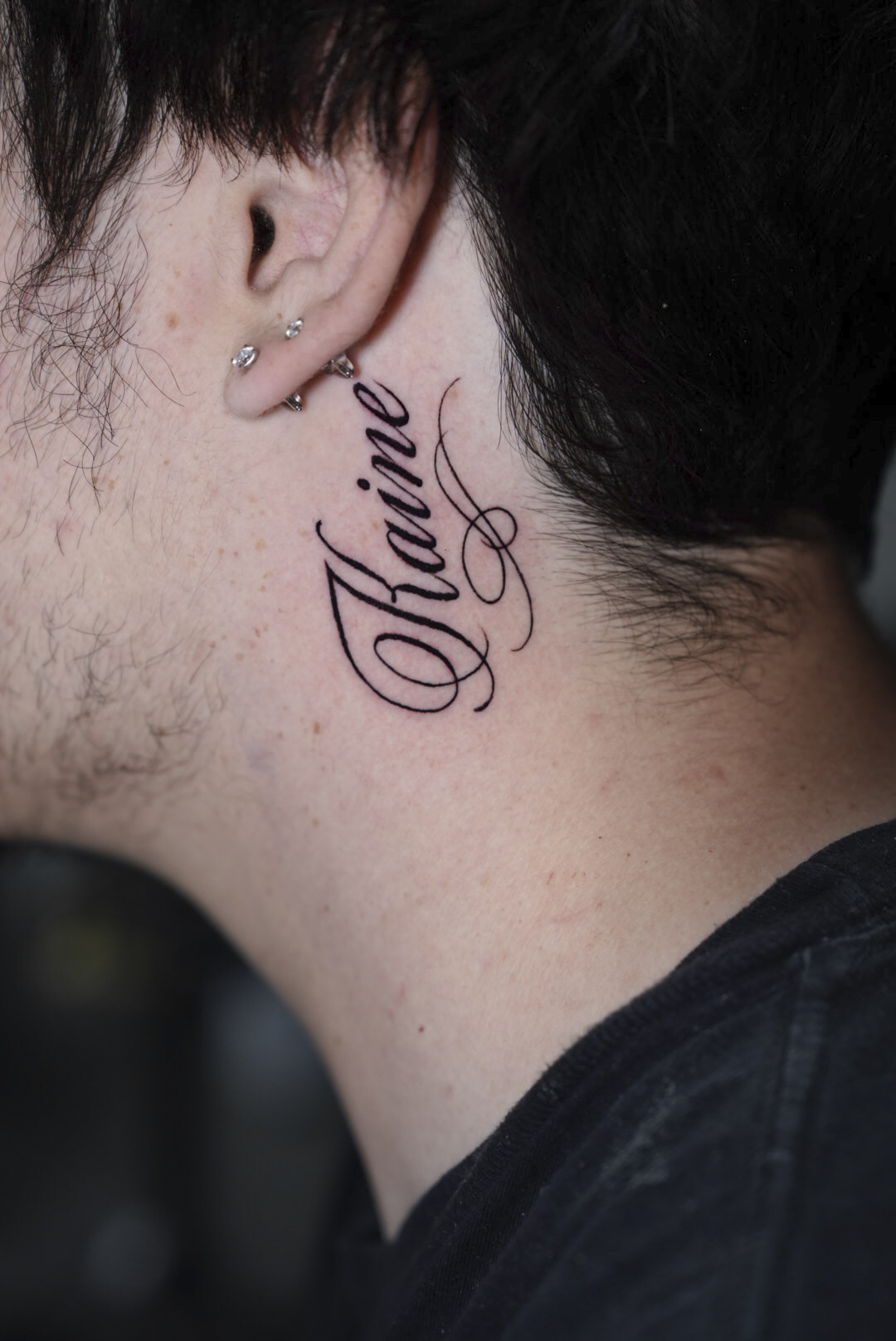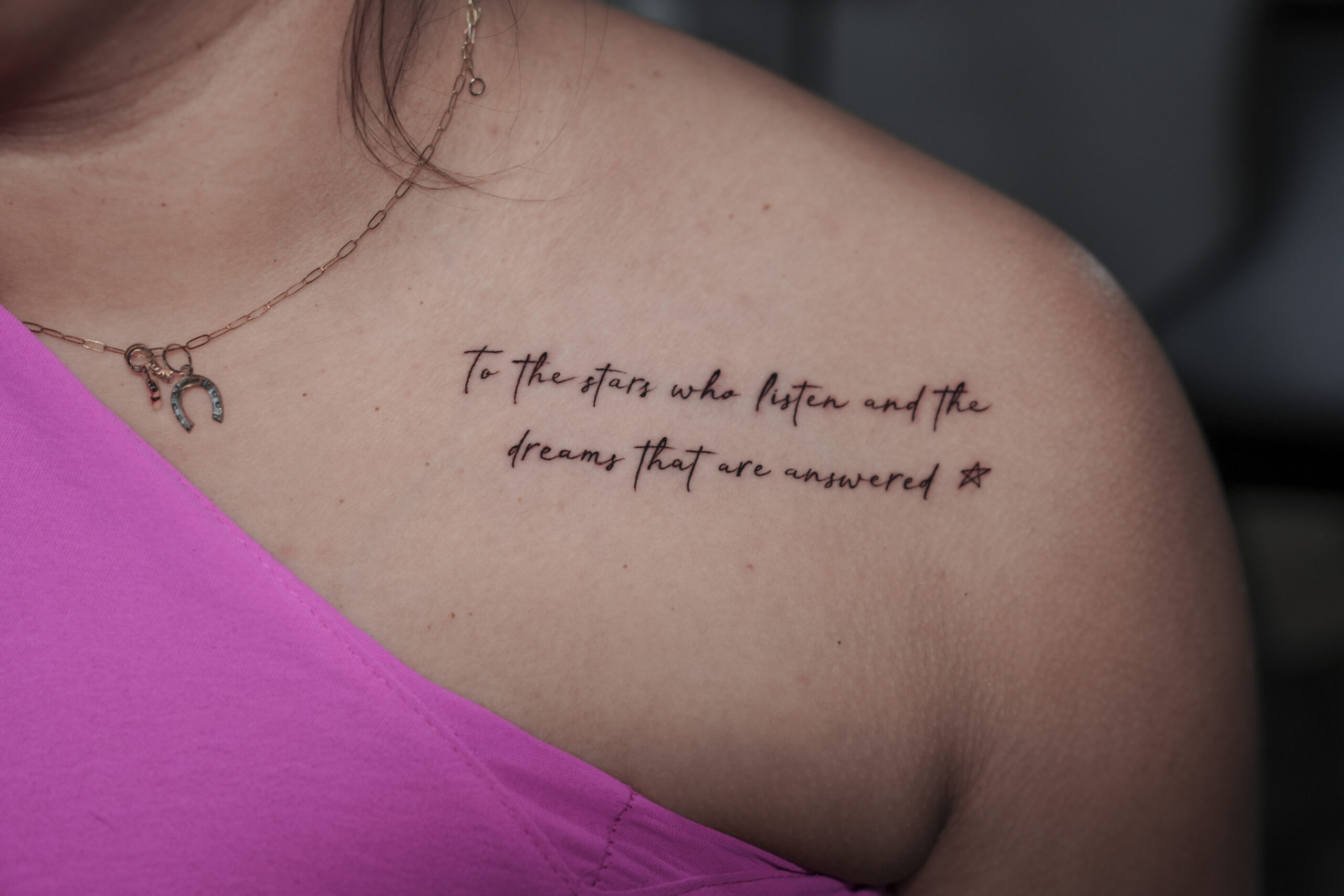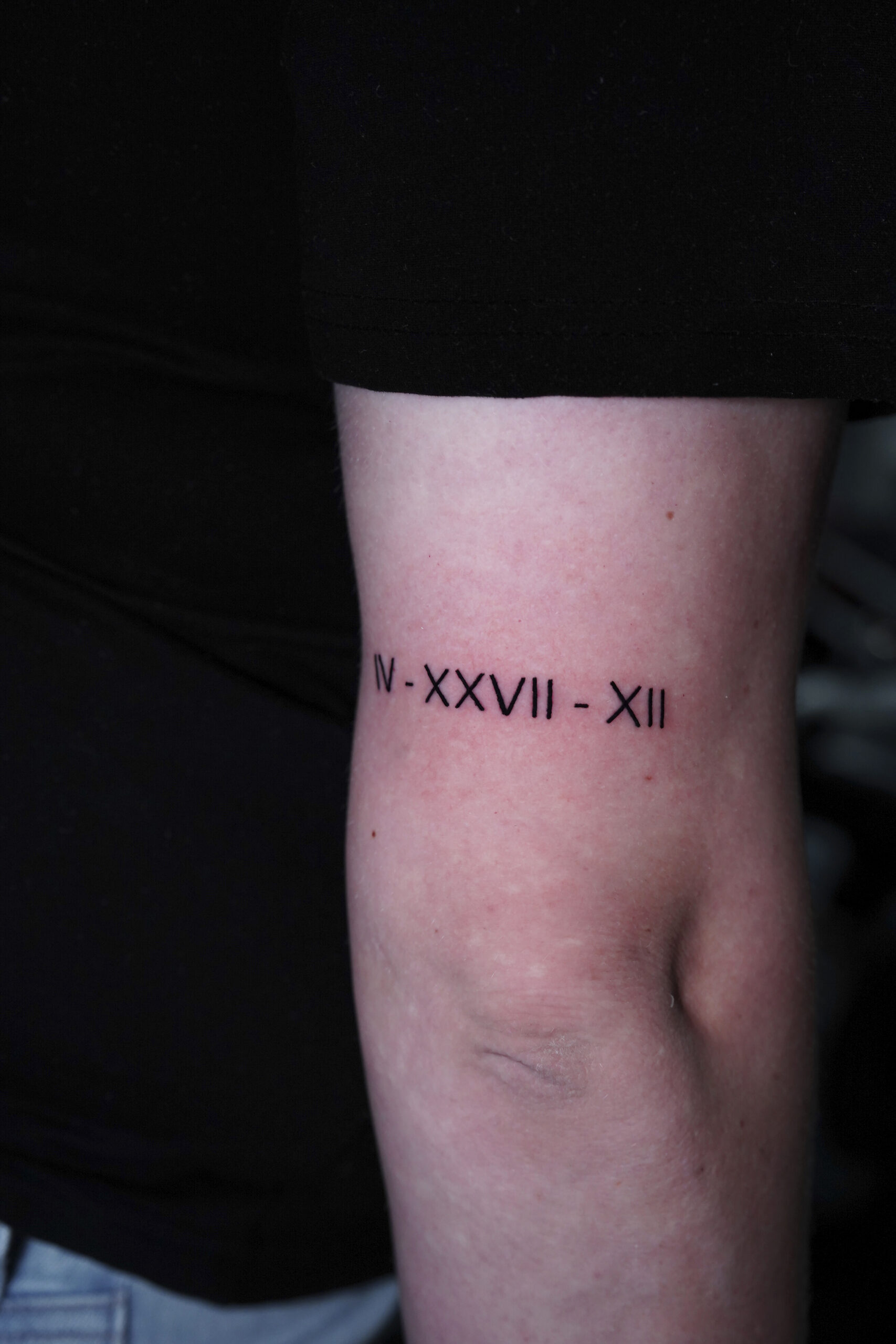Pain in tattooing is the physical sensation experienced during the process, each individual has different pain levels depending on factors like tattoo size, personal sensitivity, age, and weight. However, the tattoo’s placement on the body is a primary factor determining pain intensity. The intensity correlates directly with anatomical factors – areas with thin skin, concentrated nerve networks, and proximity to bones typically generate heightened sensitivity, while well-padded regions with fewer nerves provide more tolerable experiences.
The tattoo pain chart serves as a crucial decision-making tool for optimal placement selection. Severe discomfort zones (7-10/10) include armpits, rib cage, and skin directly covering bone structures. Moderate pain locations (4-7/10) include hip bones and inner biceps, while lower pain sites (3-5/10) comprise outer thighs and back areas away from the spine.
By understanding these variables, you can approach your body art journey with informed confidence, regardless of your individual pain threshold. Continue reading to explore detailed information about pain levels for specific body locations, helping you make the most informed decision for your next tattoo session.

The Tattoo Pain Chart: Pain Levels by Body Location
No scientifically proven pain map exists for tattoos, but experienced artists and client feedback provide reliable estimates of what to expect. A general rule of thumb is that areas with less fat and muscle, more nerve endings, and thinner skin situated directly over bone tend to be more painful because these spots offer less cushioning, making the needle’s impact more intensely felt.
Conversely, body parts with more fatty tissue, fewer nerve endings, and thicker skin generally register as less painful. Each person’s tattoo pain scale is personal and can differ even from one tattoo session to another.
Here’s a general guide to pain levels by body location, rated on a scale where 3-4 is considered “Mildly Painful” and 9-10 is “Very Painful:
| Body Location | Pain Level (1-10) | Pain Category |
| Armpit | 9-10 | Very Painful |
| Rib Cage | 9-10 | Very Painful |
| Groin | 8-9 | Very Painful |
| Inner Thigh | 8-9 | Very Painful |
| Chest/Sternum | 7-9 | Very Painful |
| Elbow | 7-8 | Very Painful |
| Kneecap | 7-8 | Very Painful |
| Ankle | 7-8 | Very Painful |
| Shin | 7-8 | Very Painful |
| Palms | 8-9 | Very Painful |
| Soles | 8-9 | Very Painful |
| Head | 7-8 | Very Painful |
| Face | 7-8 | Very Painful |
| Ears | 7-8 | Very Painful |
| Lips | 7-8 | Very Painful |
| Neck | 7-8 | Very Painful |
| Spine | 7-8 | Very Painful |
| Hips | 6-7 | Moderately Painful |
| Hands/Knuckles/Fingers | 6-7 | Moderately Painful |
| Feet/Toes | 6-7 | Moderately Painful |
| Wrist | 5-6 | Moderately Painful |
| Inner Bicep | 5-6 | Moderately Painful |
| Stomach | 4-6 | Moderately Painful |
| Calves | 4-5 | Mildly Painful |
| Outer Thigh | 3-4 | Mildly Painful |
| Shoulder/Outer Bicep | 3-4 | Mildly Painful |
| Forearm | 3-4 | Mildly Painful |
| Back (away from spine/hips) | 3-4 | Mildly Painful |

Detailed Tattoo Pain Area Info
This guide provides detailed information on 29 common tattoo locations. You will find them systematically ranked from the most to the least painful. These placements are categorized into three distinct pain levels: Very painful, Moderately Painful, and Mildly Painful. This information helps you understand the sensory experience for each area, so you can make informed decisions about tattoo placement based on your pain tolerance:
What are the high pain areas for tattoos?
The most painful tattoo locations are the Armpit, Rib Cage, Groin, Inner Thigh,Gluteal Fold / Upper Posterior Thigh, Chest / Sternum, Elbow (Olecranon and Antecubital Fossa),… these locations typically those with high nerve density, thin skin directly over bone, or minimal fat padding. Below are the details:
Armpit (Axilla)
Very painful (9-10/10)
Tattooing the armpit (axilla) is a High Pain experience. This intense sensation results from the high concentration of lymph nodes and abundant nerve endings. The skin here is also thin and subject to constant movement and friction, which amplifies discomfort during the tattooing process and prolongs the healing period.
Rib Cage
Very painful (9-10/10)
Getting a tattoo on your rib cage is considered High Pain. Here, the skin lies directly over the rib bones with minimal subcutaneous fat or muscle for cushioning. Consequently, the tattoo needle’s vibration resonates against your ribs, significantly intensifying the pain. The natural expansion and contraction of your chest during breathing also contribute to ongoing discomfort.
Brave enough for this high-pain area? Our complete ribs tattoo placement guide explores the best designs and specific locations to make the commitment worthwhile.
Groin
Very painful (8-9/10)
The groin area is rated as High Pain for tattoos. This high pain level is due to its dense concentration of nerve endings and its characteristically thin, sensitive skin. Your groin’s connection to numerous major nerve pathways further sensitizes the area, making the tattooing process particularly intense.
Inner Thigh
Very painful (8-9/10)
Your inner thigh is a High Pain location for tattoo application. This area has thin, delicate skin with a high number of sensory nerve endings. Typically, your inner thigh also has minimal muscle mass to buffer the tattoo needle’s impact, contributing to a heightened pain experience.
Gluteal Fold / Upper Posterior Thigh (Junction of Buttocks and Thighs)
Very painful (7-8/10)
The junction where your buttocks meet your thigh (inferior gluteal crease and surrounding area) is High Pain for tattooing. This specific zone contains sensitive nerve pathways and is close to lymph nodes. Despite the potential presence of fat, this area experiences consistent friction from movement and clothing. This increases sensitivity during the procedure and complicates healing.
Chest / Sternum
Very painful (7-9/10)
Tattooing your chest, particularly over the sternum (breastbone), induces High Pain. The skin in this region is thin, with minimal fat covering the bone. Your sternum also serves as a conduit for nerve pathways extending through the torso. The direct vibration of the tattoo needle against the bone and periosteum (bone covering) generates profound discomfort.
Elbow (Olecranon and Antecubital Fossa)
Very painful (7-8/10)
Your elbow region is High Pain for tattoos. Directly over the olecranon (the bony part of your elbow), the sensation is intense because the needle vibrates against a surface with minimal padding. In your antecubital fossa (inner elbow crease or “ditch”), the highly elastic skin contains numerous nerve endings and blood vessels, resulting in extreme sensitivity.
Kneecap (Patella and Popliteal Fossa)
Very painful (7-8/10)
Tattooing your knee area is High Pain. Over your patella (kneecap), there is minimal skin coverage, leading to direct vibration against the bone. The popliteal fossa (the “ditch” behind your knee) contains a high concentration of nerve endings and blood vessels within thin, sensitive skin that is subject to constant flexion and extension, intensifying discomfort.
Ankle (Malleoli and surrounding area)
Very painful (7-8/10)
Your ankle is a High Pain area for tattoo placement. The skin in this location sits directly over bony prominences (malleoli) with minimal subcutaneous padding. This region is richly innervated, and the constant movement of this joint contributes to heightened pain perception.
Shin (Anterior Tibia)
Very painful (7-8/10)
Shin tattoos are High Pain. This is because the skin lies directly over your tibia (shin bone) with minimal fat or muscle coverage. Each impact of the tattoo needle generates vibrations that travel along the bone, significantly intensifying the painful sensation. The lack of natural cushioning also contributes to increased skin irritation.
Palms
Very painful (8-9/10)
Tattooing your palms is High Pain. This area possesses an extremely high concentration of sensory nerve endings, making it highly sensitive to any stimuli. The skin on your palms also undergoes rapid regeneration. This regeneration process sometimes causes tattoo ink to fade quickly, which may require touch-ups and repeated discomfort.
Soles
Very painful (8-9/10)
The soles of your feet are a High Pain location for tattoos. Similar to the palms, your soles contain numerous nerve endings crucial for sensory input. They also feature thick, often calloused skin; this type of skin sometimes requires deeper needle penetration for adequate ink deposition. Constant pressure from weight-bearing and walking often complicates healing and exacerbates discomfort.
Head
Very painful (7-8/10)
Head tattoos are classified as High Pain. Your skull lies directly beneath a thin layer of skin (scalp) with minimal natural padding. The vibration of the tattoo machine against the bone creates profound discomfort. Specific areas on your head, such as the temples, are particularly sensitive due to clusters of nerves.
Face
Very painful (7-8/10)
Facial tattoos are High Pain. This high pain level is due to the thinness of your facial skin and its close proximity to underlying bones and extensive nerve networks. Your face contains numerous sensory and motor nerve endings, making this area exceptionally sensitive to the tattooing process.
Ears
Very painful (7-8/10)
Ear tattoos are High Pain. The pain is primarily due to your ear’s cartilage structure (pinna or auricle), which offers minimal cushioning. The thin skin covering the cartilage is rich in nerve endings, making the sensation particularly sharp. The vibration and sound of the tattoo machine operating close to your ear canal also intensify the overall experience.
Lips
Very painful (7-8/10)
Lip tattoos are High Pain. This area contains a dense concentration of nerve endings, rendering it highly sensitive. The thin mucous membrane tissue of your lips is particularly delicate and highly vascularized. It is also prone to bleeding and swelling during the tattooing process, contributing to heightened pain.
Neck
Very painful (7-8/10)
Neck tattoos are generally High Pain, especially on the anterior (front) and lateral (sides) aspects. This region features thin skin overlying numerous nerve pathways, major blood vessels, and your trachea. The constant movement of this flexible joint and its proximity to your cervical spine increase sensitivity. The front of your neck is often more painful than the nuchal (back) region due to less muscle and thinner skin.

Spine (Directly over Vertebrae)
Very painful (7-8/10)
Tattooing directly on your spine is High Pain. The needle works immediately over the spinous processes of the vertebrae with minimal natural padding. This area houses your central nervous system, with spinal nerves branching out. The pronounced vibration against the bone structure creates significant discomfort.
What are the Moderate Pain Areas for Tattoos?
Moderate pain areas for tattoos include the hips (on the bone), hands, knuckles, fingers, feet, toes, wrist, inner bicep, and stomach. While these spots have more muscle and fat for cushioning compared to bony regions, they possess significant nerve sensitivity. See details for each location below:
Hips (on the bone)
Moderately painful (6-7/10)
Hip tattoos, particularly directly on your iliac crest (hip bone), are Moderate Pain. The bone is close to the skin surface, especially if you have less body fat, leading to direct sensation. However, the presence of more fat and muscle tissue in this region compared to High Pain bony areas provides some cushioning. Frequent skin stretching and movement also contribute to discomfort.
Hands / Knuckles / Fingers
Moderately painful (6-7/10)
Tattoos on your hands, knuckles, and fingers are generally Moderate Pain. These areas are characterized by thin skin stretched over bones, joints, and tendons, with minimal natural padding. A high concentration of nerve endings increases sensitivity. Constant hand movement often complicates both the procedure and healing.

Feet / Toes
Moderately painful (6-7/10)
Tattoos on the top (dorsal aspect) of your feet and toes result in Moderate Pain. These areas feature thin skin overlying bones, joints, and tendons, with scarce padding. The presence of numerous nerve endings contributes to sensitivity. Constant pressure and friction from footwear and walking often make healing uncomfortable.
Wrist
Moderately painful (5-6/10)
Wrist tattoos are Moderate Pain. The skin in this area is thin, offering minimal padding over bones, tendons, and major blood vessels like the radial artery. Numerous nerve pathways traverse your wrist, increasing its sensitivity. The constant movement of this flexible joint also adds to the discomfort experienced during tattooing and healing.
Inner Bicep
Moderately painful (5-6/10)
Your inner bicep is a Moderate Pain area for tattoos. This region has softer and more sensitive skin compared to your outer arm. It contains a higher density of nerve endings and blood vessels. While muscle tissue provides some cushioning, the inherent sensitivity of the skin contributes to the pain level.
Stomach
Moderately painful (4-6/10)
Stomach tattoos are generally Moderate Pain. Sensation varies based on your individual body composition and the specific location. While fat tissue in this area typically cushions the needle’s impact, the skin itself is sensitive, particularly around your navel (umbilicus) and lower abdomen. Your stomach’s movement during respiration and core engagement also increases discomfort.
What are the low pain areas for tattoos?
Low pain areas for tattoos are the calves, outer thigh, shoulder/outer bicep, forearm, and back (excluding the spine and hips). These areas have substantial fat, muscle, or thicker skin and fewer nerve endings, providing more cushioning and reducing sensitivity. See details below for specific locations:
Calves
Mildly painful (4-5/10)
Calf tattoos are typically Low Pain. This is due to the substantial muscle mass (gastrocnemius and soleus muscles) in your calves, which provides significant cushioning. The skin in this area also tends to be thicker and less densely innervated compared to many other body parts.
Outer Thigh
Mildly painful (3-4/10)
Your outer thigh is considered a Low Pain location for tattoos. This area usually contains substantial muscle (quadriceps femoris, tensor fasciae latae) and fat tissue. These tissues effectively cushion the tattoo needle’s impact. The skin also tends to be thicker and less densely populated with nerve endings compared to more sensitive regions.
Shoulder / Outer Bicep
Mildly painful (3-4/10)
Tattoos on your shoulder (deltoid region) and outer bicep are generally Low Pain. These areas feature significant muscle tissue that provides natural cushioning. The skin here also contains fewer superficial nerve endings than many other body parts, contributing to reduced sensitivity.
Forearm
Mildly painful (3-4/10)
Forearm tattoos typically result in Low to Moderate Pain. Pain level depends on proximity to your wrist or elbow. This area offers a good combination of muscle, some fat tissue, and adequate skin thickness, providing sufficient padding. While more sensitive than your outer bicep, especially on the inner (volar) aspect, your forearm generally contains fewer nerve endings than High Pain locations.

Back (Excluding Spine and Hips)
Mildly painful (3-4/10)
A back tattoo placement in the upper and middle regions, away from the spine and hip bones (iliac crests), is generally a Low Pain experience. These areas are characterized by thick skin and substantial underlying muscle mass, such as the latissimus dorsi and trapezius. They also have a lower density of superficial nerve endings. The broad, relatively stable surface facilitates efficient work, though discomfort increases during extended sessions.
Now that you understand the pain levels, Learn more our complete tattoo placement guide helps you weigh other key factors like visibility, design flow, and healing to make the perfect choice.
What are the types of pain when getting a tattoo?
Getting a tattoo involves several distinct types of pain sensations. Understanding these different pain experiences can help you mentally prepare for your session:
- Dull or sharp pain: This pain often occurs when first starting a tattoo session or when losing focus during the process. Stress hormones like adrenaline can potentially numb initial pain, but as they wear off, the sensation may intensify.
- Scratching pain: This very common sensation feels like a claw dragging across your skin. The feeling can intensify when the artist uses a shading needle, which typically contains more points than a lining needle.
- Sharp or stabbing pain: Often described as small bee stings, this sensation frequently occurs during detailed work or sketch lines using fewer needles. Extremely sharp pain can indicate that the needle is penetrating too deeply, potentially causing irritation or rash.
- Burning pain: This feels like something hot pressing against your skin. It commonly occurs in areas that have been tattooed for extended periods or have significant fat beneath the skin. It can also result from friction during wiping.
- Vibration pain: This sensation happens when tattooing directly over bone. The nerves detect the machine’s vibration transmitted through the bone, creating a unique and often uncomfortable feeling distinct from the needle penetration itself.
What are the factors that affect tattoo pain tolerance?
Pain is subjective and factors beyond location affect the level of discomfort you will experience, here are 6 factors:
- Age: Older skin tends to be thinner and more sensitive, potentially increasing pain.
- Sex: Research suggests people who are biologically female may experience pain more acutely due to differences in skin thickness and hormonal factors.
- Fear/Mental State: Being anxious or scared increases pain perception through stress hormone release, while previous positive tattoo experiences can decrease pain through reduced anxiety. Understanding things to know before your first tattoo can significantly reduce this anxiety and improve your overall experience.
- Body Type: Higher body weight often means looser skin (making stomach tattoos more painful), while lower body weight means less fat near bones (making rib and hip tattoos more painful).
- Skin Condition: Previously damaged skin (healed stretch marks, psoriasis, eczema) typically shows increased sensitivity during tattooing.
- Past Experiences: Your previous pain threshold experiences affect your mental preparation and how you perceive pain during future sessions.
How to Minimize Tattoo Pain Before, During, and After Your Session?
Although you can’t completely eliminate the pain of getting a tattoo, there are some tips to make it less painful:
Pre-Tattoo Preparation:
- Get enough sleep to ensure your body is rested and your pain threshold is normal.
- Stay well-hydrated before your appointment but avoid alcohol, which thins blood and increases sensitivity.
- Understanding what to eat before getting a tattoo is crucial, eat a hearty meal beforehand to maintain blood sugar levels, as hunger can lower pain tolerance.
- Moisturize the area the week before to improve skin condition.
During Your Tattoo:
- Request short, frequent breaks when needed to manage pain.
- Use distractions like conversation or media to shift focus away from discomfort.
- Consider bringing a small snack to maintain blood sugar during longer sessions.
- Ask about numbing spray for particularly sensitive areas (note that numbing products may slightly affect skin consistency, which some artists prefer to avoid).
- Bringing supportive friends remains the artist’s discretion—some shops allow this while others don’t.
Post-Tattoo Care:
The acute pain stops after your session concludes, though soreness and itching are normal during healing. Following new tattoo care instructions carefully minimizes healing discomfort and helps avoid touch-ups. Clean the area gently, apply recommended products, avoid sun exposure, and don’t scratch or pick at scabs to ensure proper healing with minimal discomfort.

FAQ
Least Painful Tattoo Placements for Men and Women?
For both men and women, the outer upper arm (shoulder/outer bicep), outer thigh, and upper back (away from the spine) rank as the least painful areas for tattoos. These locations have thicker skin, more muscle padding, and fewer nerve endings. Women might also find the lower back relatively comfortable, while men typically experience less pain on the calves due to muscle mass distribution.
What is the pain of a tattoo equivalent to?
The pain of getting a tattoo is often compared to the feeling of a cat scratch or a bad sunburn. Many describe it as a pricking sensation or stinging, similar to many tiny bee stings, especially during fine detail work. The sensation varies by location, with some areas feeling more like dull pressure and others producing sharp, intense discomfort. After the session, the tattooed area typically feels bruised and sore from swelling.
What Are the Most Painful Tattoo Locations?
The armpit ranks as the most painful tattoo location due to its high concentration of nerve endings, lymph nodes, and thin skin with minimal padding. Other extremely painful areas include the rib cage, groin, palms of hands, soles of feet, and any location where thin skin stretches directly over bone without muscle or fat padding.
How to test tattoo pain tolerance?
To test your tattoo pain tolerance, try pinching the area where you want your tattoo, the more it hurts, the more sensitive that location will be.
Navigating the sensation of getting a tattoo is a significant aspect of the body art journey. This guide’s detailed tattoo pain chart and comprehensive location analysis equip you with essential knowledge regarding pain levels and contributing factors. When you’re ready to transform this knowledge into action, choosing the right professionals at best tattoo shop ensures your pain management strategies are complemented by expert artistry and proper technique.
Understanding how anatomical characteristics, individual pain tolerance, and diligent preparation influence discomfort allows for confident placement selection. This knowledge contributes to a more predictable and informed tattooing experience, empowering you to approach your next piece of body art with clarity.











